
In March 2021, I was appointed to the position of Acting Deputy Secretary for Highway Administration, following the sad and untimely passing of George McAuley and the promotion of Melissa Batula to Acting Executive Deputy Secretary. I am thankful for, and humbled, by the opportunity to lead the dedicated staff of roughly 9000 individuals who are committed to serving the transportation needs of the citizens of Pennsylvania. I will strive to continue building strong relationships with our partners in industry and government, as well as our 11 district offices. We will continue to innovate to solve Pennsylvania's 21st-century transportation challenges.
COVID-19 presented us with unprecedented challenges. I’m proud of the way our personnel responded quickly, decisively and, above all, safely. Some of the efficiencies we discovered will become a normal part of our work going forward.
One thing that COVID-19 drove home was that our Highway Funding is in desperate need of an overhaul. The rapid expansion of telecommuting in the face of the pandemic led to a sharp decrease in gas tax revenue. This exacerbated a problem that has been growing over the past several years, with the increase in fuel efficiency and the advent of electric vehicles. A 1% change in monthly passenger volume results in $2.4 million in lost revenue. This is unsustainable. It is vital to our economy that we continue to explore new ways to fund our highways and bridges that are both effective and fair.
Safety has always been a primary concern of PennDOT and we continue to seek ways to protect the traveling public. Our safety staff continues to use data-driven application of countermeasures to reduce the number of fatalities and suspected serious injuries on our highways. Automated Work Zone Speed Enforcement (AWZSE) went into effect in March 2020 and has been very effective. Work zone speeds, particularly excessive speeds in excess of 11 mph over the posted speed limit, have trended down from a high of 8% to roughly 3% and work zone crashes are down 50% from the prior year. In the fall of 2020, PennDOT, the PA Turnpike and APC partnered to encourage its contractors, business partners and members to participate in the first of its kind safety stand down event. As contractors pushed to make up for lost time due to COVID-19 delays before the winter season, industry was asked to pause for 30 minutes on Monday, October 5 to think about safety and prevent work zone accidents, with a focus on “line-of-fire” incidents. Pennsylvania also continues to be a leader in promoting the safe testing and development of Connected and Autonomous Vehicle (CAV) technology.
Diversity and Inclusion continues to be a top priority. PennDOT is creating a Mentor Protégé Program to increase diversity and participation in the Disadvantaged Business Enterprise (DBE) Program with a focus on drawing in underserved and underrepresented companies. This directly addresses PennDOT’s 2018 Disparity Study, which indicated that Black American owned businesses are underrepresented when compared with the population. The first phase of the program will consist of classroom training, followed by second phase hands-on training between the mentor and the protégé. Although a primary objective of the Mentor Protégé Program may be to address disparities identified in the 2018 Disparity Study, PennDOT will not administer the program to discriminate against any participants, whether a member of a minority group or not. The program will support a number of PennDOT’s goals, including supporting the growth of a more diverse supply chain, providing an avenue to connect experienced PennDOT consultants and prime contractors with new and growing DBEs, empowering prime consultants (DBE or Non-DBE) to transfer knowledge through the project development process on active projects to help DBE firms grow to become self-sufficient and long-term business partners, further developing DBEs in the construction industry, and helping protégés obtain pre-qualification codes. Other programs include the District 8 TRUSS Program and the On-The-Job Training (OJT) construction program.
As our infrastructure ages, it becomes vital that we Protect our Assets by maximizing the impact of every dollar we spend. To accomplish this goal, we are shifting our method of asset management away from a "worst first" approach to focus on bridge and roadway preservation. This approach will slow the aging process to arrive at the lowest possible cost over the life cycle of our assets. To assist in this effort, we are developing predictive models and asset management tools to evaluate different project options.
Attracting Skilled Talent is an ongoing challenge. Knowledge and experience, as our workforce ages, can literally leave with retiring employees, unless we continue vital training for our current employees, while offering competitive wages and benefits to attract new talent. Our plan is to create classification based marketing videos and recruit in middle schools, high schools, technical schools and colleges virtually to reach a larger audience.
We continue to advance the use of Innovation and Technology in all areas of our daily work. The Digital Delivery Directive (DDD), one key area that we are focusing on, is aimed at eliminating paper plans for most PennDOT projects by 2025 and replacing them with electronic 3D models. The elimination of paper plans will greatly improve efficiency while also offering environmental benefits. Other innovations we are exploring include Augmented Reality, which provides the ability to bring the field to the office and vice versa; Virtual Asphalt Acceptance Testing, consisting of High Definition Cameras within asphalt plants that allow an inspector to witness tests remotely; eTicketing, which eliminates paper tickets, quickly summarizes tickets for Contractor payments and most importantly reduces worksite hazards for Inspectors; and Unmanned Aerial Systems (UAS, or Drones) which are being explored for construction inspection, bridge inspection, survey, incident management, traffic and project sequencing.
Building strong professional Relationships is a keystone to our success. We must continue to work with our partners, both industry and other government agencies, to successfully deliver the transportation needs of the Commonwealth. One way we are achieving this is through PennDOT Connects, a collaborative effort that engages our planning partners at the beginning of the project planning process to deliver efficient, cost-effective results. We engage with industry through our Quarterly Industry Forum, meetings between myself and industry association executives, and our seven Quality Improvement Committees (QICs)—Asphalt Paving, Concrete Paving, Aggregate Quality, Concrete Quality, Pennsylvania Association of Asphalt Material Applicators QIC, Cement QIC and Slag QIC.
In my 30-plus years of public service, I have learned that while there will always be new challenges, there will also be new solutions. I find great satisfaction in improving the ways PennDOT addresses the day to day issues faced by the traveling public.
You can view Deputy Secretary Keiser's bio here.
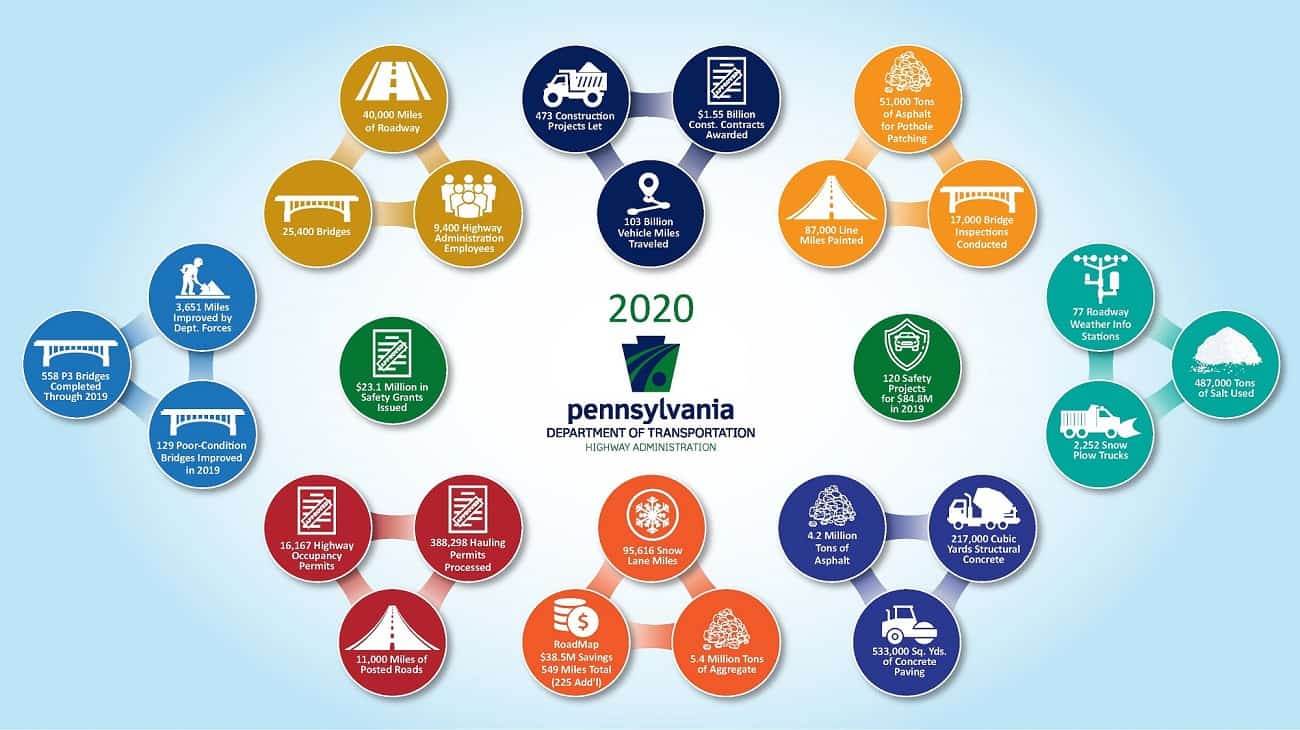
Pennsylvania has over 25,000 bridges to maintain
In 2008, PennDOT launched the Accelerated Bridge Program. The intent was to reduce the number of poor condition bridges in Pennsylvania to the 2008 national average of 8% over the next 25 years. At the same time, we would work to maintain current pavement conditions. PA has the third highest number of state-owned bridges and 24% of these bridges were in poor condition. As a gateway to the northeast, the majority of truck traffic to the northeastern states passes through our borders. The graphic below, from the US Department of Transportation's Bureau of Transportation Statistics, illustrates the volume of truck freight flows to, from and within Pennsylvania.
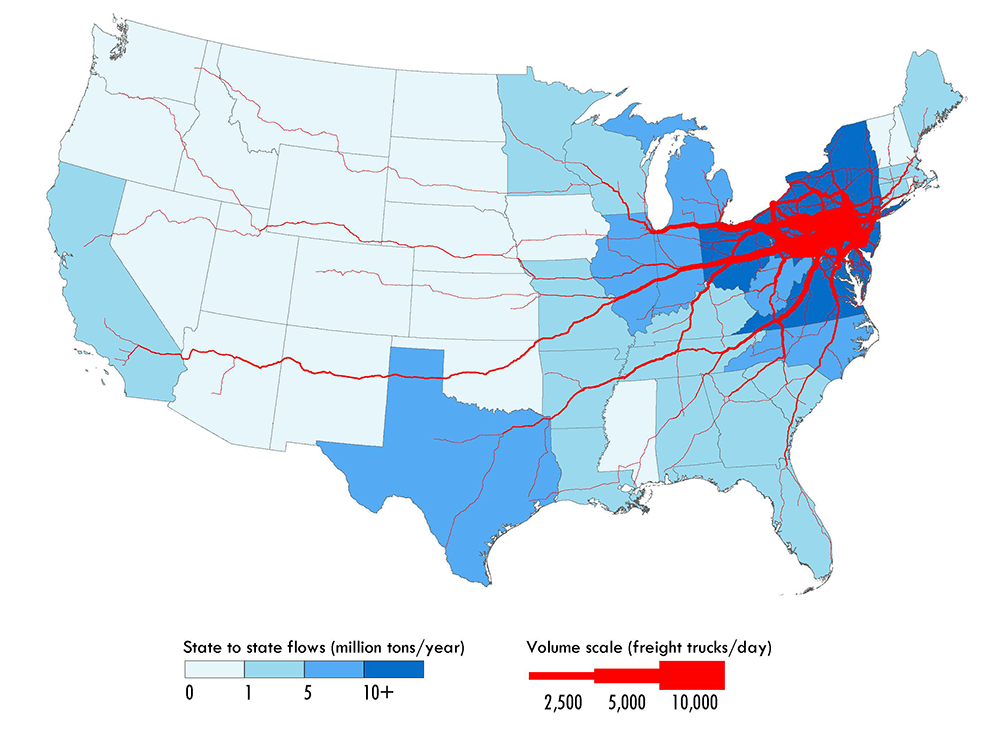
The number of Poor bridges (formerly referred to as structurally-deficient bridges) in Pennsylvania continued its downward trend in 2020. By focusing on larger bridges, where possible, over the last several years, we have been able to exceed our 2033 goal of 8.4% poor deck area (currently 6.15%). As of December 31, 2020, Pennsylvania has exceeded the PA 2033 goal of 2,740 poor bridges by count. This goal was reached 14 years ahead of schedule. Poor Bridge counts are conducted monthly and fluctuate throughout the year, due to additional bridges becoming poor. The numbers shown on the graph above represent the number of poor bridges as of December 31 of each year. The starting point of 6,034 bridges was established in the third quarter of 2007 when the reduction goals were set. The actual "high water mark" came in August of that year, with 6,059 poor bridges. That number was reduced to 5,972 by the end of 2007, which is reflected in the graph.
In addition to the PA 2033 goal, PennDOT now has performance goals that are in alignment with Transportation Performance Management (TPM) PM2. For bridges, this consists of good and poor National Highway System (NHS) bridge deck area for 2- and 4-year targets.
Pennsylvania's bridges continue to age, with over half of our bridges currently over 50 years old. This continues to present challenges as additional bridges deteriorate at faster rates.
Despite efforts to reduce the number of poor bridges in the state, it is a moving target. Every year, additional bridges are added to those that are already poor. PennDOT works to slow the decline of these bridges through preservation. This helps to keep the number of poor bridges in decline and reduces the likelihood of spikes in that number.
Following an uptick in posted bridges in 2013, PennDOT has made strides in reducing the number of posted bridges statewide. This progress was made by either making necessary repairs or, in the case of redundant or unnecessary bridges, closing them. As of 12/31/2020, 2 Interstate bridges were posted (for construction purposes) and only 24 out of 4,954 National Highway System (non-Interstate) bridges were posted.
| States with the highest % of Poor Bridges | Percent of State DOT bridges which are Poor (bridges >20') 2019 FHWA Data |
Percent of State DOT bridges which are Poor (bridges >20') 2020 FHWA Data |
|---|---|---|
| Rhode Island | 22.1% | 18.4% |
| West Virginia | 21.1% | 21.4% |
| Maine | 12.4% | 12.5% |
| Louisiana | 10.3% | 10.1% |
| Pennsylvania | 10.0% | 9.3% |
Pennsylvania is now ranked fifth nationally (improved from third) for highest percentage of poor bridges by count. We continue to make gains against other highest-ranked states. This is especially significant since Pennsylvania has more than double the total number of bridges in any of these states.

Virtual Fabrication Inspection consists of Smart Glasses that attach to an inspector's hard hat. By using teleconferencing capability and augmented reality, the onsite inspector can share exactly what they are seeing in real time to remote participants. The project team members have successfully used the system to review field/shop issues and participate more directly and informed on resolutions without ever having to travel to the jobsite. (Photo Courtesy of IMAJION)
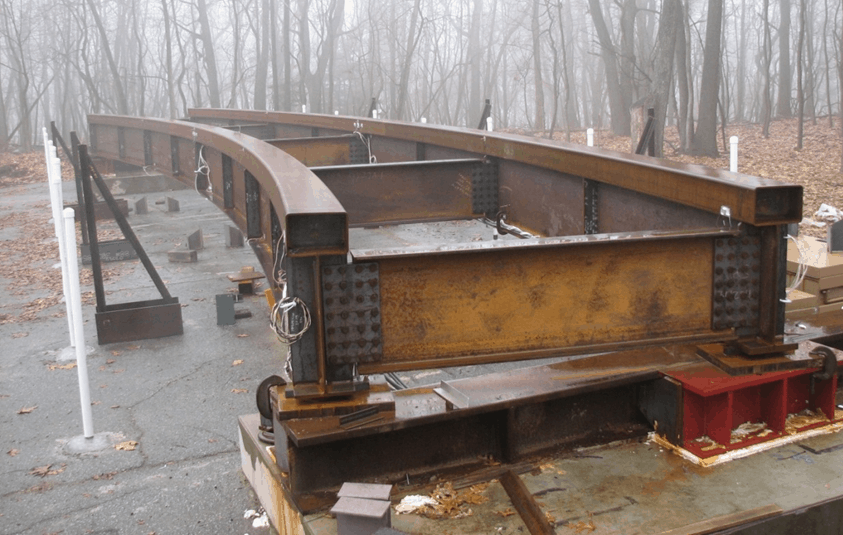
The Department is constructing the first curved steel tubular flange bridge in the United States on an I-95 project with fabrication beginning in spring 2021 and erection anticipated in 2022. The photo is a test bridge built at Lehigh University to demonstrate the performance of the system. The expected benefit is providing additional stability during erection of the girders by eliminating temporary shoring and reducing construction cost and time. (Photo Courtesy of Lehigh University)
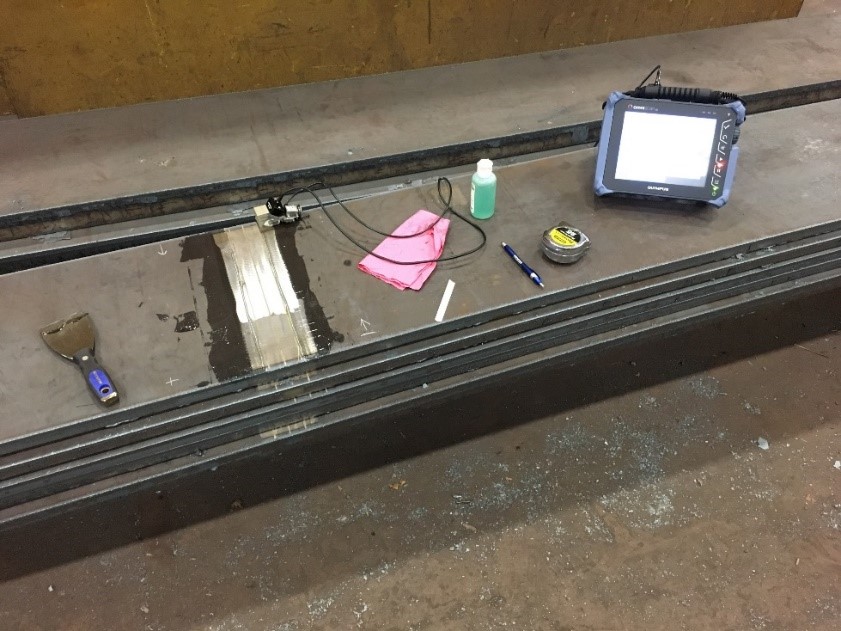
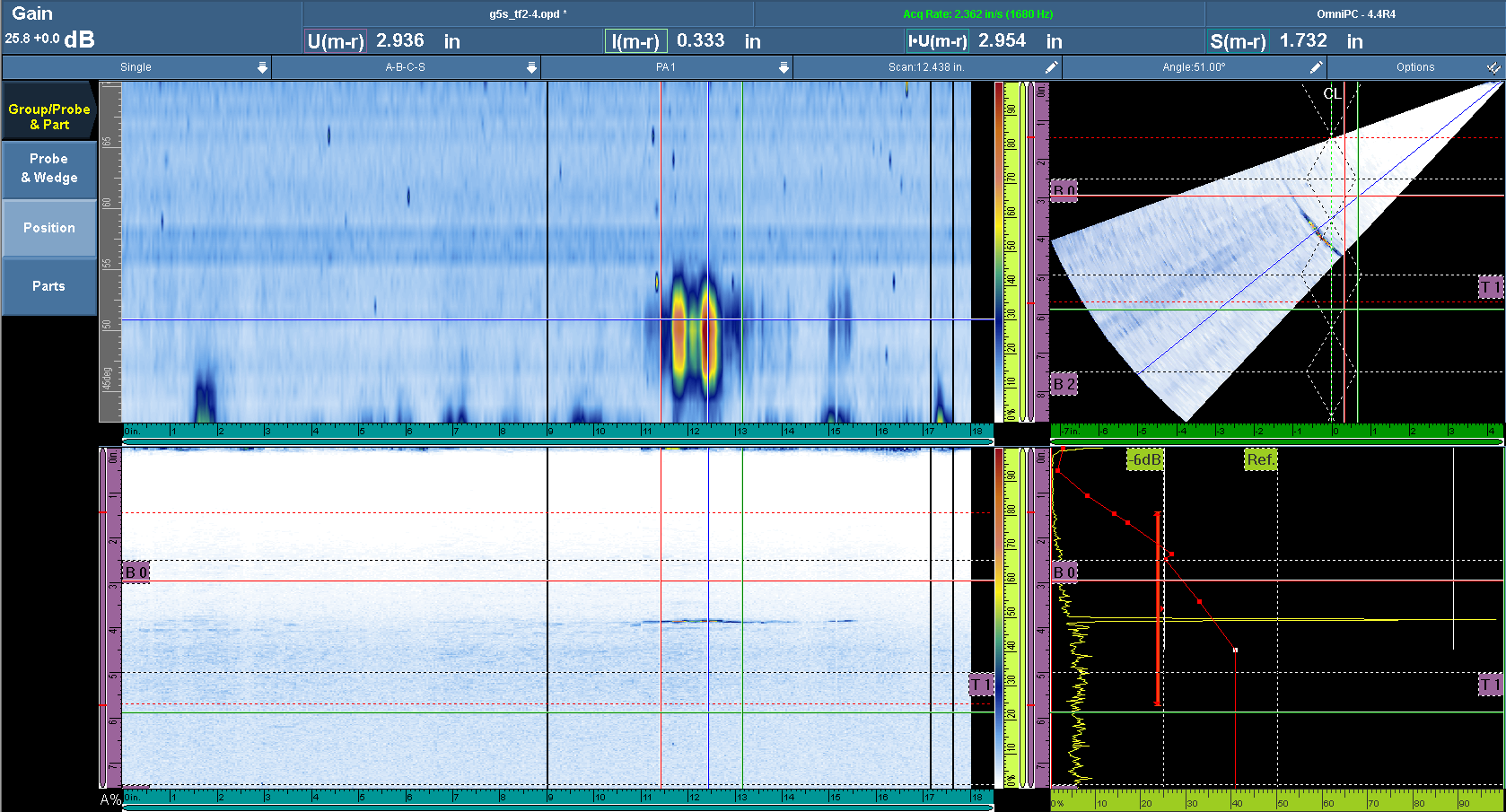
Phased Array Ultrasonic Testing (PAUT) is a nondestructive test method being evaluated as a substitute for radiography of welded splices. Advantages include eliminating potential radiation hazards, ability to better detect flaw types deemed more critical and retention of a permanent image record much like that of radiography. The Department is also assessing an artificial intelligence component for data analysis to more consistently interpret the results by limiting the human factor.
Following delays due to COVID-19, the pilot project using Phased Array Ultrasonic Testing with an Artificial intelligence component on fabricated members is scheduled to begin in April of 2021. The fabrication will consist of 30 built-up plate girders with 12 welded web splices in which PAUT with the AI component will be incorporated.
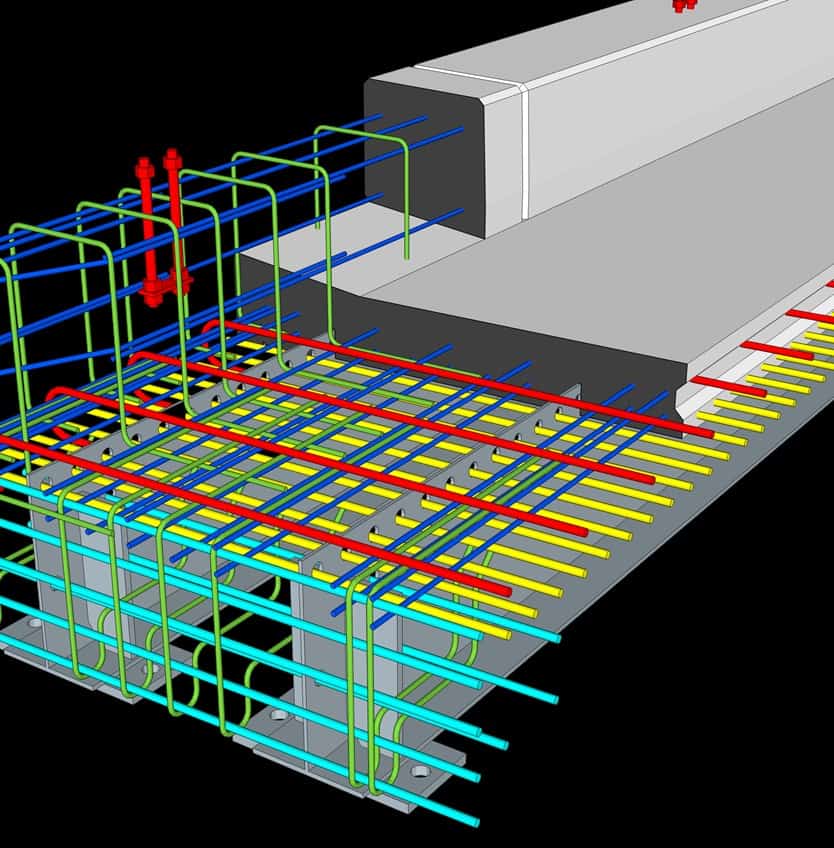
District 1 is designing an innovative bridge type, with anticipated construction in 2021. The project employs two primary innovations. First, it uses an innovative superstructure type called Flexbeam, which is based on research at Lehigh University. New Design Standards will also be issued in 2021 based on this research. Secondly, the steel beams will be fabricated with ASTM A709 Grade 50CR - a high performance, corrosion resistant steel. These innovations will produce rapid construction, long term performance and low maintenance.
In 2014, PennDOT launched a public-private partnership (P3) with a size and scope that had never been attempted previously. The Department partnered with a private consortium of companies to accelerate the replacement of 558 poor-condition bridges across Pennsylvania. The private consortium will then be responsible for maintenance of these bridges for 25 years.
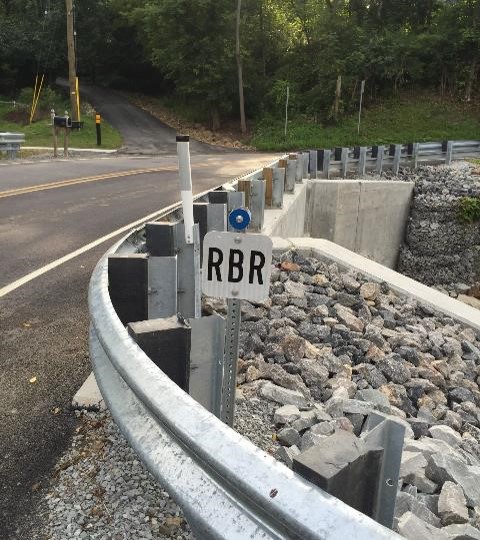
There were a number of anticipated benefits of the Rapid Bridge Replacement (RBR) project. Designs and construction methods could be standardized, fiscal certainty could be achieved, maintenance costs could be lowered and environmental approvals could be streamlined. All of the bridge decks received a Polyester Polymer Concrete (PPC) overlay to provide protection against deicing salt, extend their useful life and reduce long-term maintenance costs.
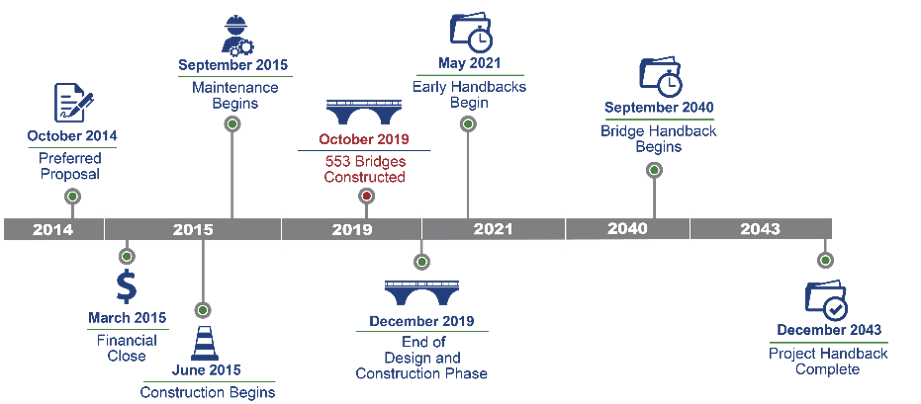
Construction on the final two bridges wrapped up in 2020 and the Maintenance term has begun.
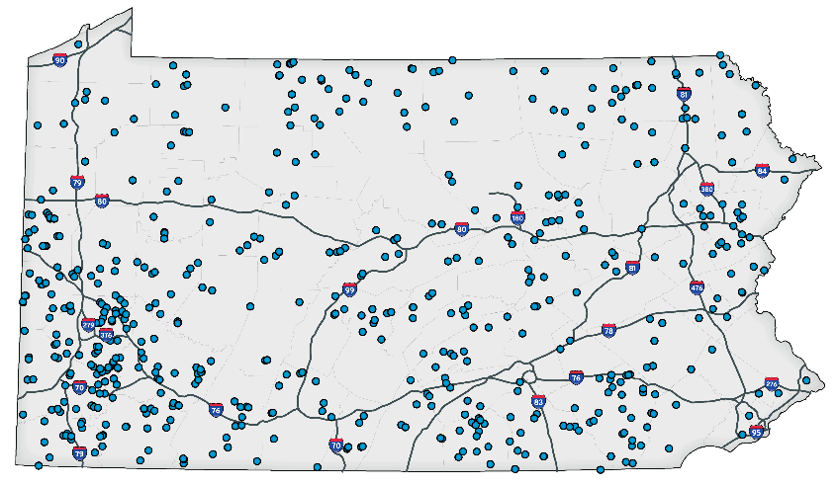
PennDOT has shifted our asset management approach to a lowest life cycle cost (LLCC) approach, as required by the Moving Ahead for Progress in the 21st Century Act (MAP-21) and continued by the FAST Act. This will provide better efficiency in our spending over the full life of our bridge assets by emphasizing preservation and considering risk. This is accomplished with the utilization of the Bridge Asset Management System (BAMS). The BAMS software utilizes an asset registry, deterioration models, and work and cost matrices to provide project prioritization based on funding, risk and condition.
PennDOT will continue to face risks on the bridge front, including a lack of adequate funding. In addition to implementing cost-saving innovations and efficiencies, PennDOT will continue to seek new and increased sources of funding to address the funding gap. Without increased funding to address the reduction in buying power that results from construction cost inflation and improving fuel economy, we will be unable to keep pace with the rate of bridge deterioration.
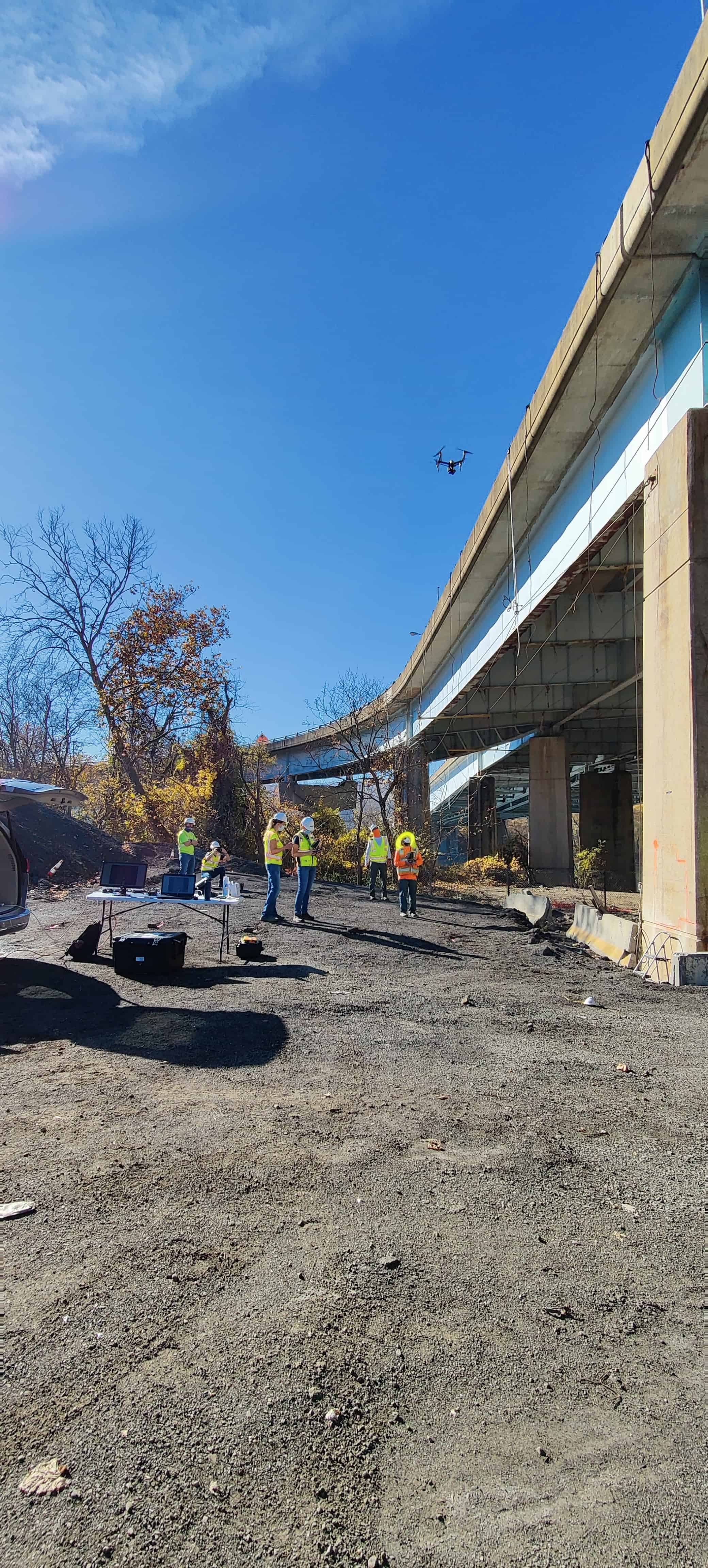
PennDOT owns and maintains over 40,000 miles of Roadway
The International Roughness Index (IRI) is the primary measure used by PennDOT to evaluate pavement smoothness. Despite the decade-long focus on Poor Bridges, PennDOT has managed to keep the overall IRI on National Highway System roadways fairly steady. Increased IRI indicates increased surface roughness. As one might expect, the most marked increase in IRI has occurred on non-NHS routes.
The graph shown below is depicting the median International Roughness Index (IRI) value per Business Plan Network over the past 6 years. IRI is the roughness index, expressed in inches per mile, and is the calculated, not measured, response of a vehicle to a pavement surface profile. IRI is calculated from lasers hitting the pavement surface to determine depth. The IRI median value is the middle of a data set, so for each mile with an IRI value less than the median, there is a mile with a greater value. IRI median values shown below are collected by the Bureau of Maintenance and Operations Asset Management Division.
From the graph above, we can see that the Interstate IRI median has remained the same, at 63, from 2019. Over the years, this value has decreased. The lower the IRI value, the better. A similar decrease over time can be seen for the IRI median values for both the NHS Non-Interstate and Non-NHS w/ADT ≥ 2000. The NHS Non-Interstate IRI median value has remained at 99 since 2017. The Non-NHS w/ADT ≥ 2000 IRI median value has remained at 120 from 2019. However, the Non-NHS w/ADT ≤ 2000 had a slight increase to 182 in 2020, following three straight years at 181.
With the passing of MAP-21 and the FAST ACT, states are now required to manage the NHS to the Lowest Life Cycle Cost (LLCC) and document this in their risk-based Transportation Asset Management Plans (TAMPs). LLCC is a process designed to maximize the life of an asset at the lowest cost through a risk-based prioritization of preservation, rehabilitation, and reconstruction. It promotes the right treatment at the right time (with an emphasis on preservation) rather than focusing too heavily on assets in poor condition (e.g., worst-first).
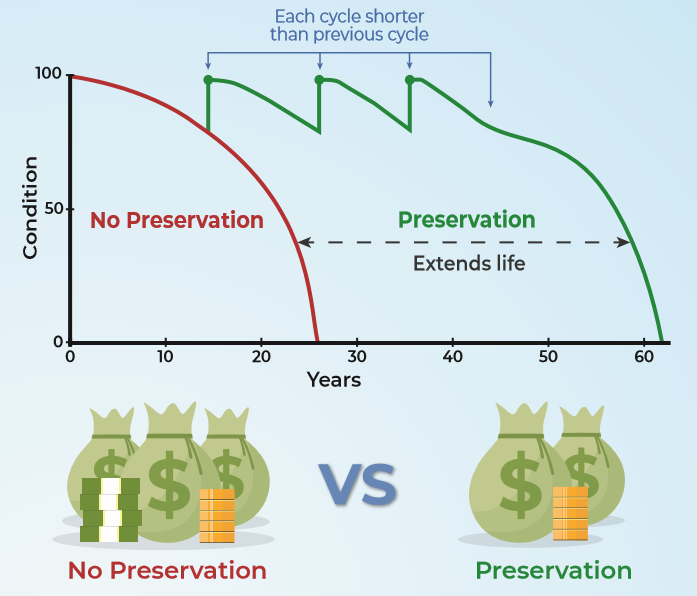
Two of the most utilized Pavement Preservation treatments by PennDOT Department Forces are Liquid Bituminous Surface Treatment (Seal Coat) and Crack Sealing.
Percent Within Limits (PWL) is a quality measure that allows the use of one pay factor to account for both mean (average) and standard deviation (variability). The commitment to the use of PWL specifications with asphalt pavements should increase quality by incentivizing consistent production, placement and compaction of quality asphalt material, while penalizing inconsistent operations which focus on meeting only minimum payment factor requirements (which rewards closer adherence to the Asphalt Job Mix Formula (JMF) and to in-place field density targets). Working with the FHWA and Industry, the Department implemented two (2) options of PWL in the 2016 Construction Season: PWL-Laboratory Testing Section (PWL-LTS) and PWL-Hands On Local Acceptance (PWL-HOLA). In 2020, PWL became the new Section 413 of Publication 408 and is now the primary specification for acceptance and payment of asphalt pavements in the Commonwealth. PWL-HOLA remains available at the discretion of the District as a Standard Special Provision.
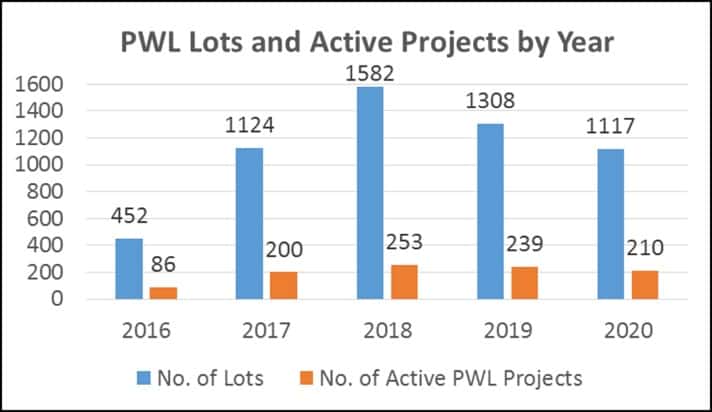
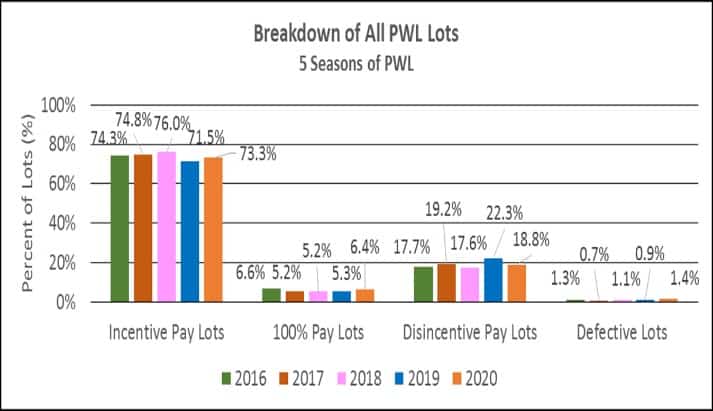
Although current funding and ways of doing business have been impacted by the COVID-19 pandemic, we anticipate that with concentration on Lowest Life Cycle Cost (LLCC), cost effective preservation techniques, and effective performance measures, we will see improvements in pavement smoothness and longevity across all of Pennsylvania’s roadway networks over the next five years.
Bringing Pennsylvania into the future
The Pennsylvania State Transportation Innovation Council (STIC) facilitates the implementation of proven transportation innovations that are new to Pennsylvania. The STIC also supports the implementation of the Federal Highway Administration's Every Day Counts (EDC) Initiatives. EDC is a program in which FHWA works with State transportation departments to identify a new collection of innovations every two years that merit accelerated deployment. The STIC is comprised of various stakeholders, state and federal agencies, local governments, research organizations and industry partners working together to pursue specific innovations.
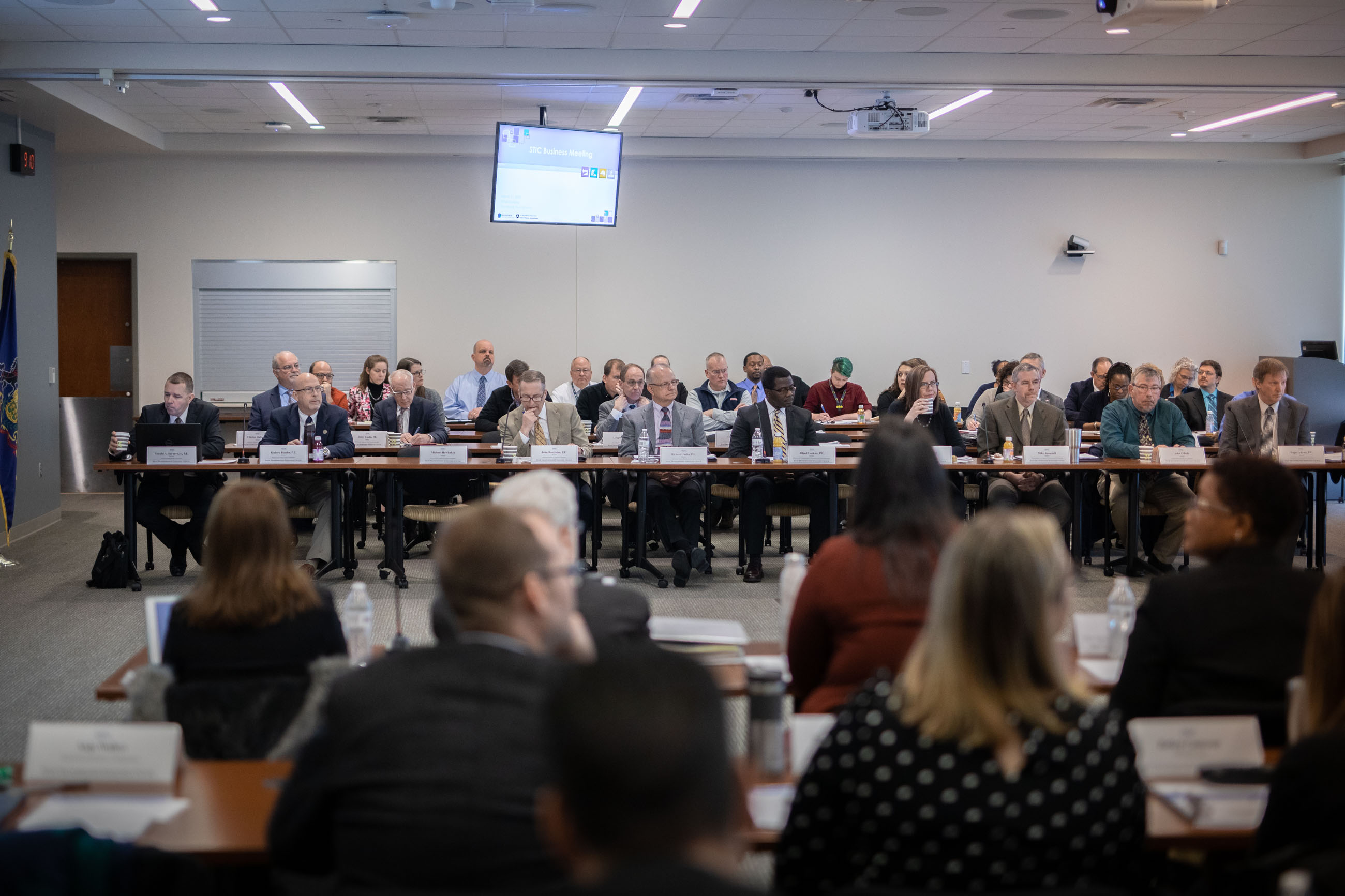
The STIC meets three times a year and all business meetings are open to the public. Technical Advisory Groups (TAGs) assist the STIC in evaluating innovations for implementation in Pennsylvania. Selected innovations are developed for deployment and promoted to become standard practice within the transportation community. Beyond deploying at the statewide or regional level in Pennsylvania, the STIC collaborates with local governments to help deliver a modern and high-quality transportation system to the citizens of the Commonwealth at all levels of government.
Despite the challenges of 2020, the STIC was able to meet virtually and continue almost unimpeded. Work continued on the ten innovations currently moving through the STIC's Innovations Development Process, including:
For full details on these innovations and other STIC related information, visit the 2020 STIC Year-End Report.
PennDOT has continued spearheading Pennsylvania's efforts to promote the safe testing of Automated Vehicles (AVs). Connected and automated vehicle technologies will change the transportation decision-making process throughout Pennsylvania. The Highly Automated Vehicle (HAV) Advisory Committee, created in 2018, is a partnership between public and private key stakeholders to ensure the safe integration of connected and automated vehicles on Pennsylvania’s roads and enhance Pennsylvania’s continued global leadership with this evolving technology. The Committee advises and consults with the Secretary of Transportation on each aspect of highly automated vehicles and platooning in the Commonwealth and may develop technical guidance; evaluate best practices; review existing laws, regulations, and policies; and engage in continued research and evaluation of connected and automated systems technology necessary to ensure safe testing, deployment and continued innovation. In 2020, the Advisory Committee identified four areas of focus: Public and Stakeholder Outreach, Workforce Development, Vehicle Code Revisions and Supplementing Multimodal Services.
After seven months of planning and coordination with stakeholders, PennDOT updated the Highly Automated Vehicle Testing Guidance. The Testing Guidance establishes the requirements an automated vehicle developer must complete to receive a letter of authorization from PennDOT. The 2.0 version of the guidance:
The Smart Belt Coalition (SBC), a tri-state collaboration between five transportation agencies and educational institutions in Michigan, Ohio and Pennsylvania, conducted a demonstration of truck platooning and automated driving system (ADS) technology to test the administrative and procedural requirements necessary for a truck platooning system to operate continuously through a multijurisdictional environment. Through a request for information (RFI) process, the SBC partnered with Locomation, who is developing a trucking technology platform to combine AI-driven autonomy with driver augmentation, for this initiative.
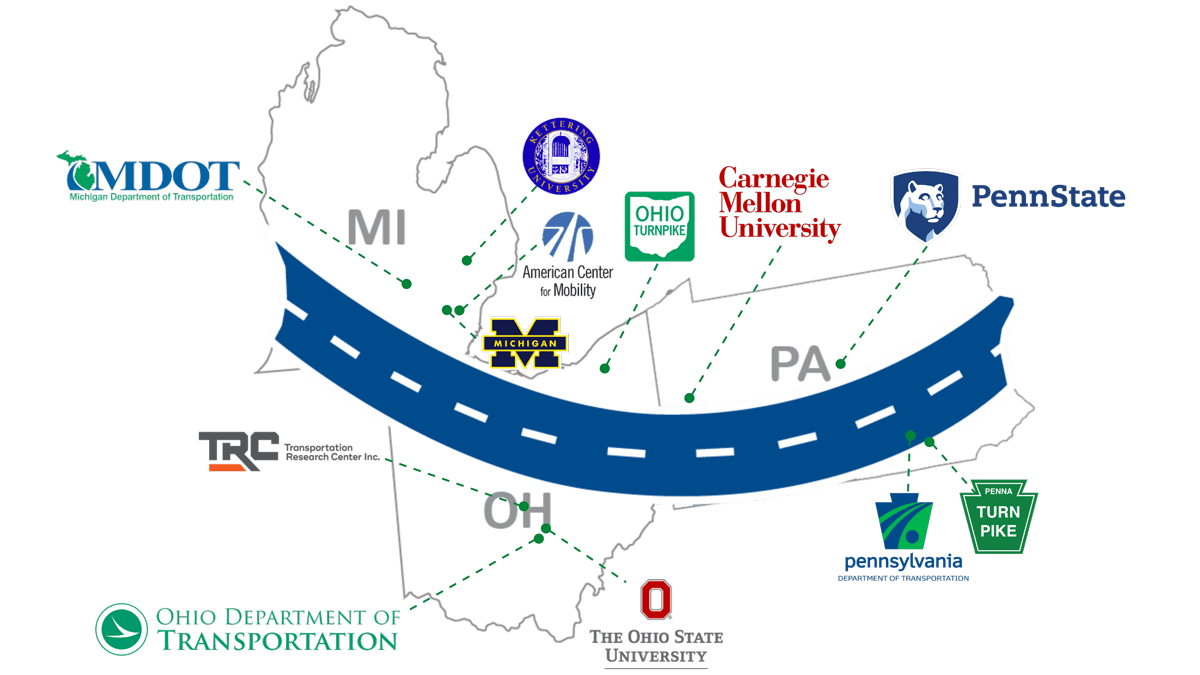
The demonstration took place on October 22, 2020 and traversed over 300 miles across all five agency jurisdictions and transported food between the Greater Pittsburgh Area Food Bank in Pennsylvania, the Toledo NW Ohio Food bank in Ohio, and the Forgotten Harvest Food Rescue Organization in Michigan. Lessons learned, focusing on multi-state truck platooning and ADS operations, were gathered throughout the planning and operation of the demonstration. SBC working group members, Locomation representatives and agency support staff provided feedback on the demonstration.
The purpose of the demonstration and this document is to identify ways for SBC members to align processes with best practices in supporting truck platooning and ADS operations to the extent allowable by existing individual state regulations and agency policies.


Key takeaways from the lessons learned include:
With an eye to the future, legislation was enacted in 2020 which permitted the operation of Personal Delivery Devices (PDDs) - ground-based delivery devices manufactured for transporting cargo or goods and is operated by a driving system that allows for autonomous and/or remote operations. The legislation allows for PDD to operate in pedestrian areas, on select shoulders or berms of roadways, and on select roadways.
PennDOT was charged with establishing policies and guidelines to administer the authorization of PDDs, which require an applicant to receive a PDD Authorization from PennDOT. When developing the policy, PennDOT solicited feedback from over 2,600 organizations/stakeholders including local, state, and federal officials, members of law enforcement, advocacy organizations, and PDD developers.
The Pennsylvania Safety Transportation and Research Track (PennSTART) project is a collaborative effort by PennDOT, the Pennsylvania Turnpike Commission and Penn State University. PennSTART will be a state-of-the-art facility that will benefit emergency responders, transportation organizations and research institutions. The vision of the Parties is to explore and advance a state-of-the-art training and testing facility to address the transportation safety and operational needs of Pennsylvania and the Mid-Atlantic Region in six key areas, including Traffic Incident Management (TIM), Connected & Automated Vehicles, Tolling, Intelligent Transportation Systems (ITS) and Traffic Signals, Work Zones, Commercial Vehicles and Transit Vehicles.
Examples of technologies for which safety and operational testing, as well as training, could be conducted at the new facility could include TIM training; Testing and hands-on training for new ITS, tolling, and signal equipment; Safe, simulated training for higher-speed and mobile work-zone operations; Safety certification training opportunities; Simulated environments for temporary traffic control device testing and evaluation; Smart truck-parking applications and other opportunities for commercial vehicle technology partnerships; and Controlled environments to test various connected and automated vehicle technologies for infrastructure equipment, fleets, and other applications.
In 2019, PennDOT completed the Concept of Operations (ConOps), Facility Requirements and Business Plan for PennSTART. The ConOps serves as an initial, high-level baseline concept, the purpose of which is to present a vision for the proposed system from the stakeholders' perspective. The overall system goals, user needs, and expectations are also established within this document. The Facility Requirements document serves as the second in a series of engineering documents intended to describe the PennSTART facility, building upon the ConOps document. The Facility Requirements document describes a set of requirements that, when realized, will satisfy the expressed needs of the facility. This document includes the identification, organization and presentation of the requirements for the PennSTART facility, which is made up of various components and features. These requirements are derived from the user needs, constraints, and interfaces that the facility is expected to implement. The Business Plan lays out the mission, vision and objectives PennSTART; an assessment of the user needs and how the track will meet those needs; the costs associated with design, construction, operations and maintenance (O&M) of the site; and documentation about different business models that can be used to support the O&M of the facility.
A Market Analysis Report was completed in summer 2020. One of the core operational functions for the PennSTART operations team will be marketing the facility to external users in the public, private and academic sector to attract users for the facility who will pay to use the facility and offset the annual O&M costs. Additionally, as the core initial function of the facility is to support Traffic Incident Management (TIM) training, PennDOT, PTC, and PSU may be asked to provide a nominal annual payment to offset some of the facility use costs for their individual uses including TIM and other training/testing activities. With that in mind, the Market Analysis Report looked at the viability of addressing the operating costs through a blend of sponsorships and usage fees. The PennSTART team is also performing an analysis of the existing test track and soliciting feedback from industry.
As a participant in Federal Highway Administration's Every Day Counts Round 5, which promotes transportation innovation, PennDOT continued testing and evaluating the use of Unmanned Aerial Systems (UAS, or drones) for a multitude of uses in 2020.

The UAS Steering Committee, formed in 2019, completed nine reports in 2020 on various aspects of drone use in our operations. Topics evaluated include:
When a teetering boulder closed the Glassport-Elizabeth Road near Elizabeth, PA, the decision was made to blast the boulder off of the rocky slope above the roadway. PennDOT recorded the blast of the boulder using a drone (DJI Phantom 4 Pro V2), which eliminated the risk to department personnel and helped monitor the status of the railroad further below for possible debris. This enabled our personnel, including the UAS pilot, to stand about ¼ mi away. The required minimum distance was 500’ away from the blast.
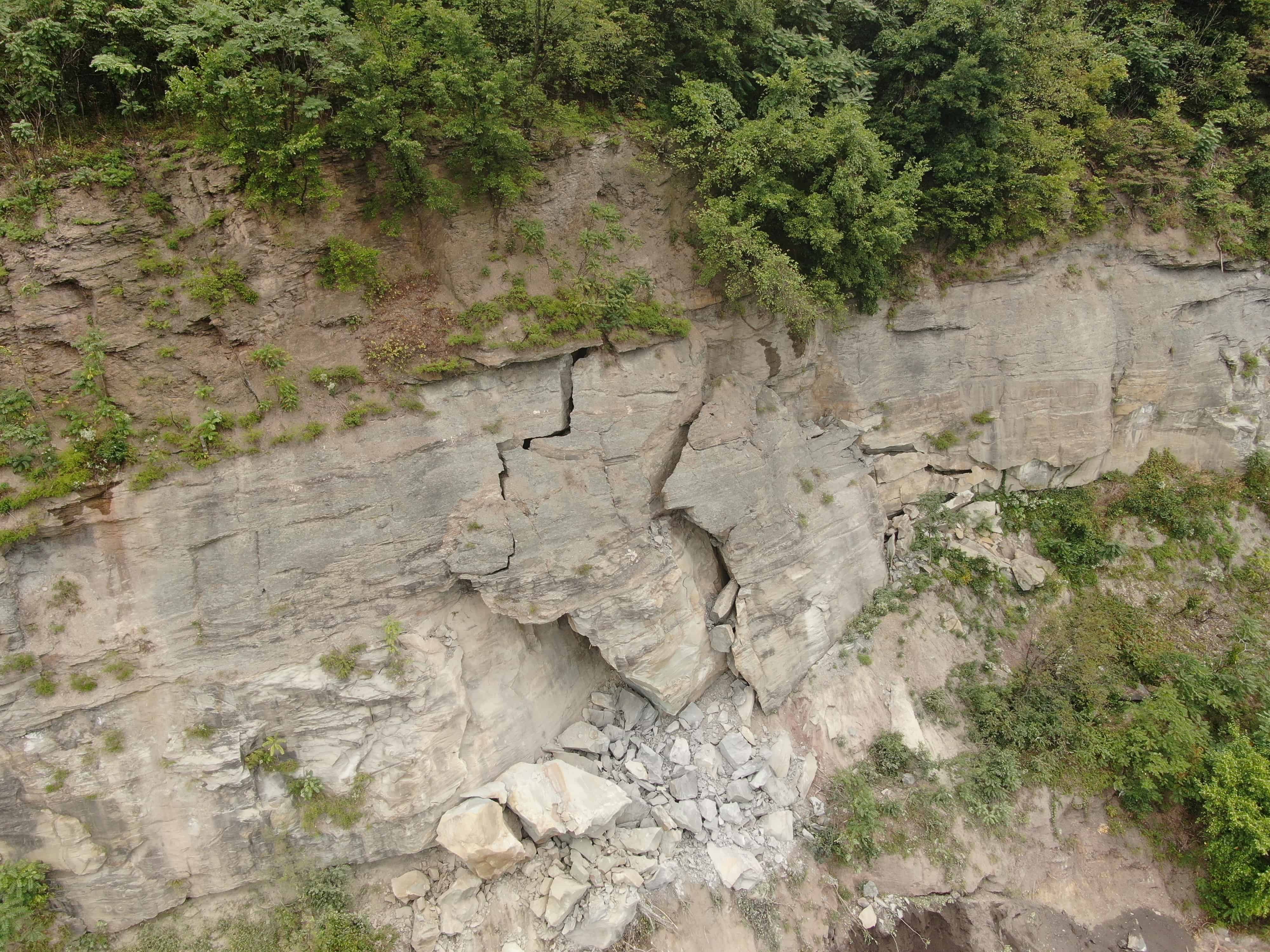
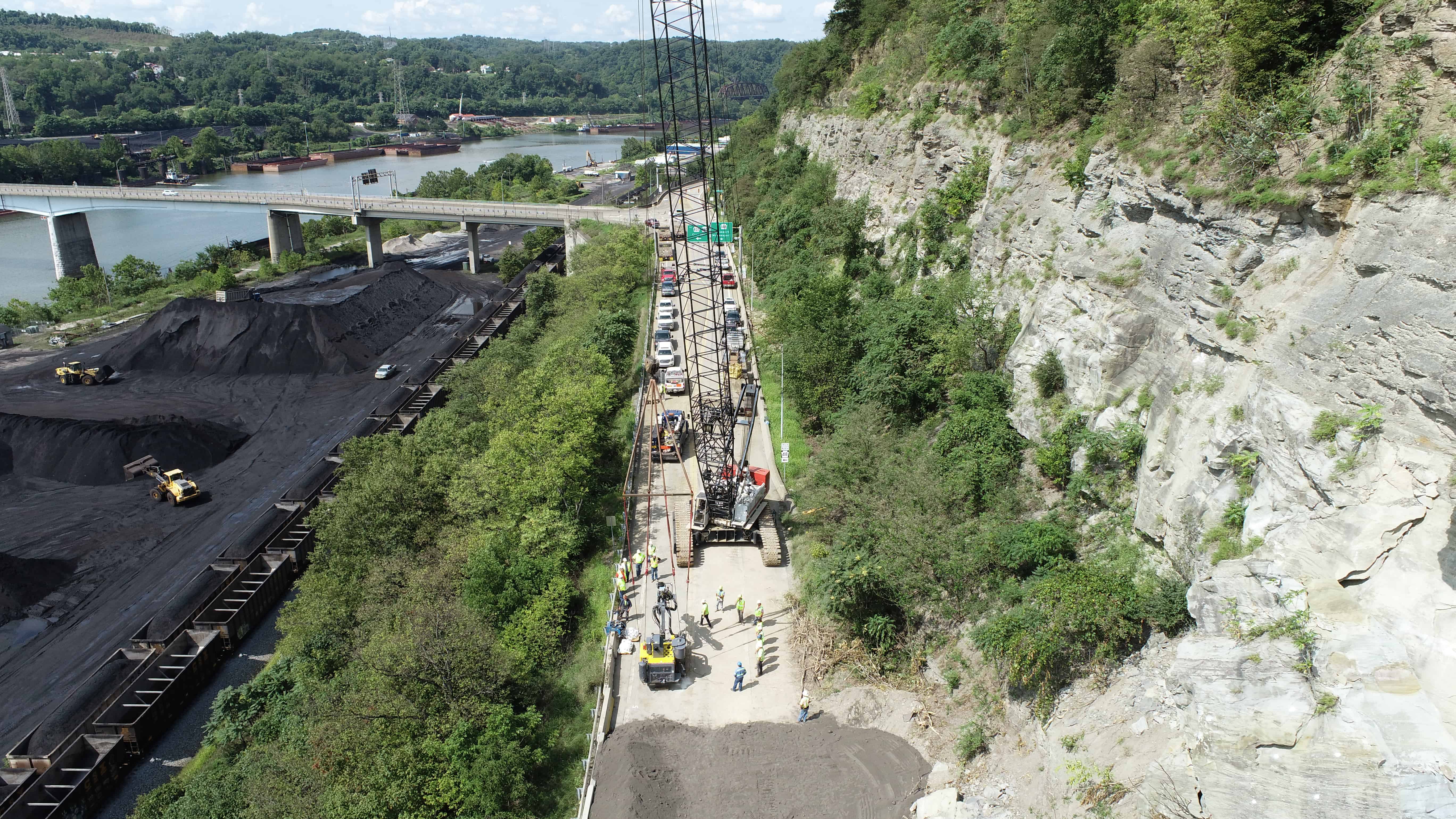
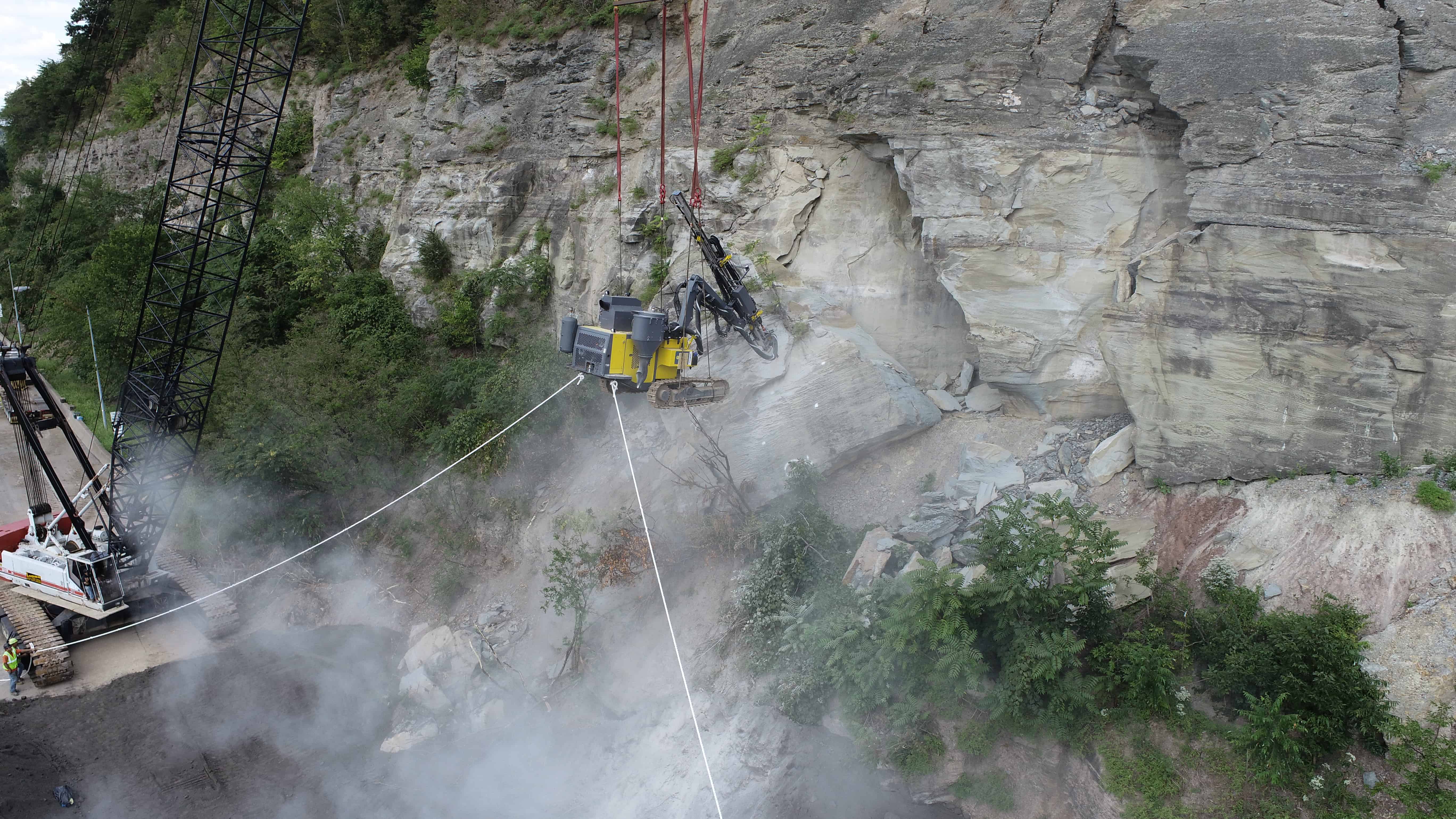
During the 2020 COVID shutdown, PennDOT conducted the final inspection of two landslides using a drone—one on the Steubenville Pike in Imperial and another on Route 18 near Raccoon Creek State Park. In this way, department personnel could conduct their review while teleworking.
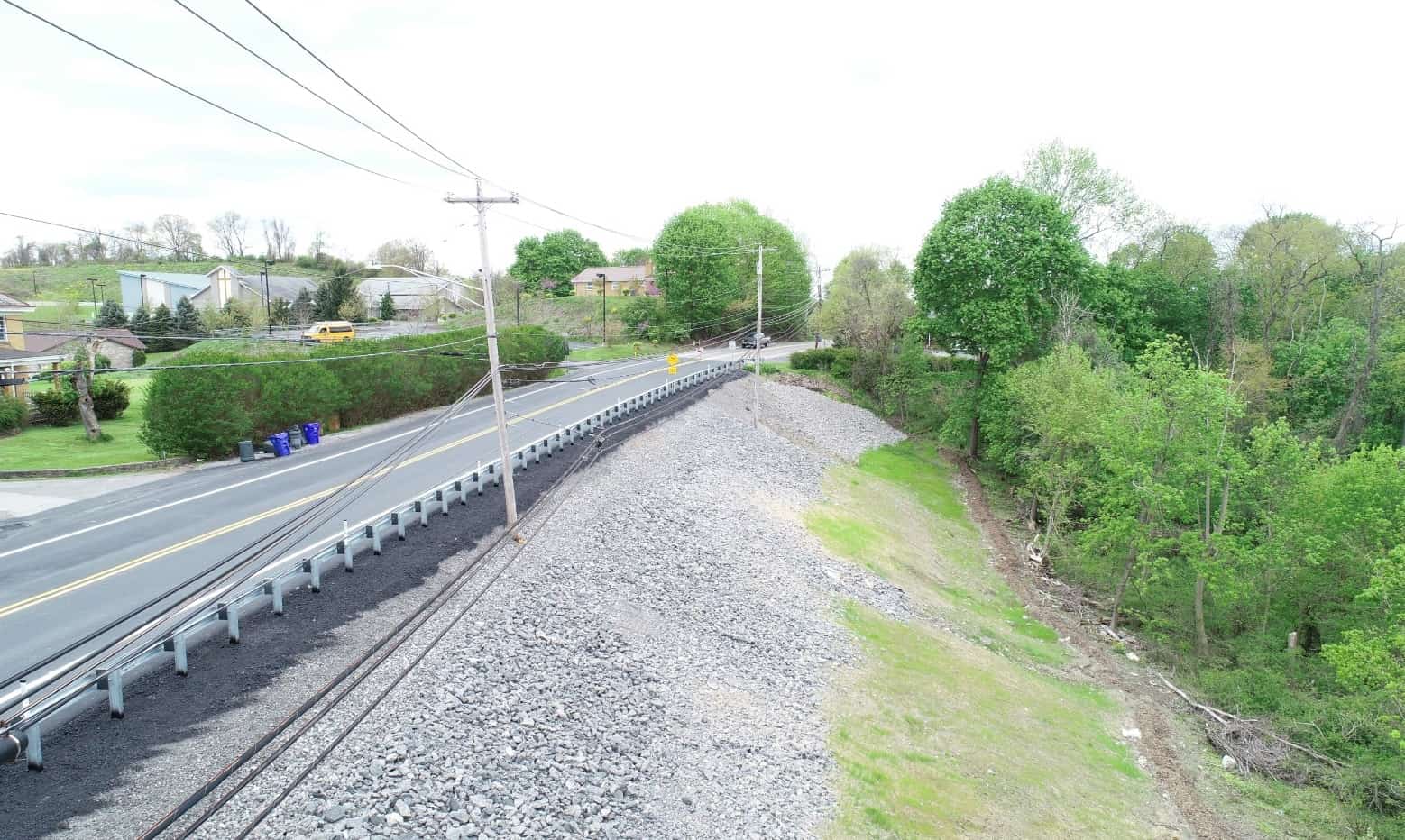

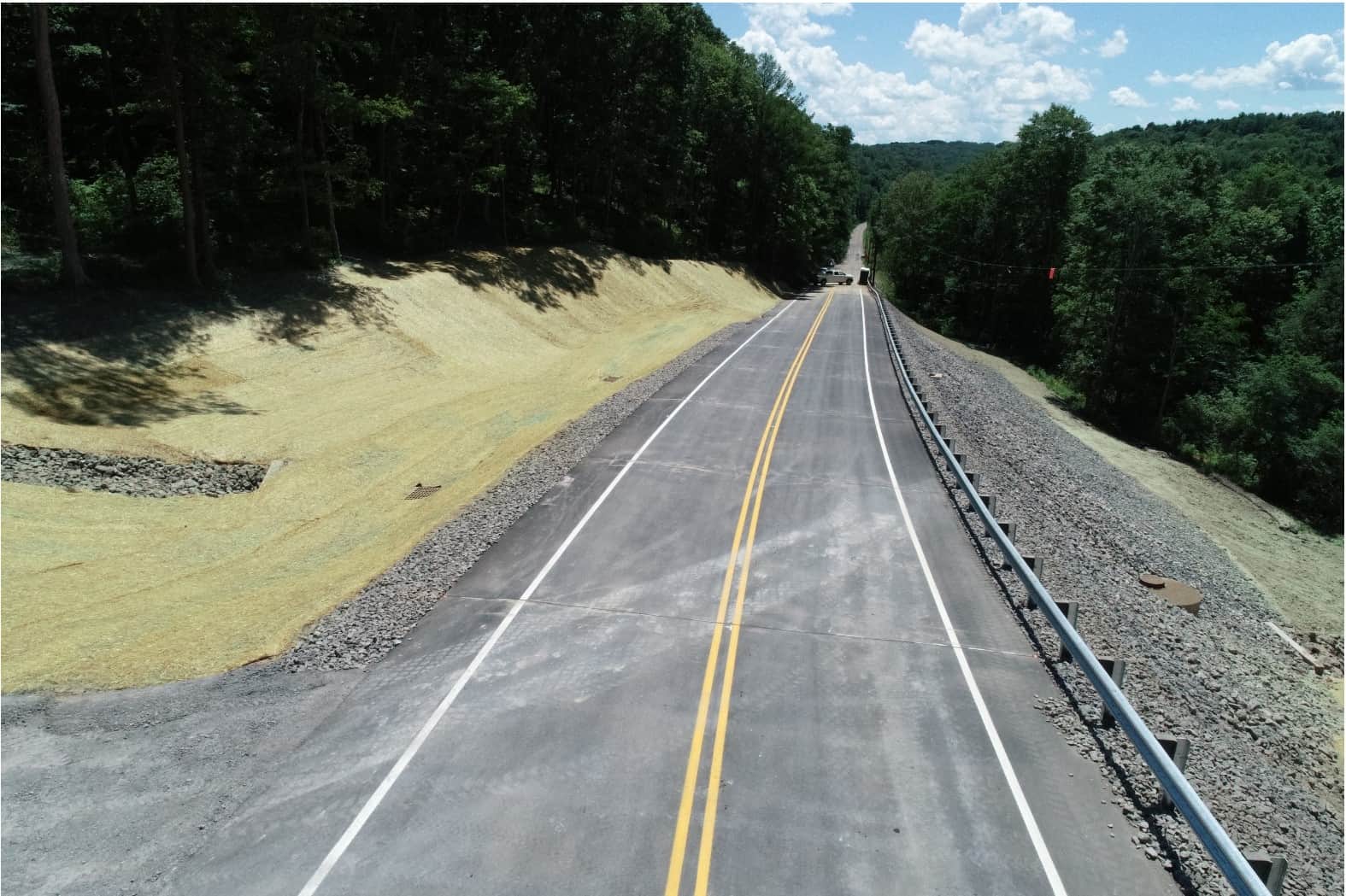
PennDOT created a time lapse video, including drone footage, of the Shaler Street Bridge replacement in Pittsburgh. The two-span bridge was constructed off-site and moved to its final location using self-propelled modular transporters (SPMTs). The project won the American Council of Engineering Companies of Pennsylvania (ACEC/PA) 2021 Structural Systems Diamond Award, the ASHE Pittsburgh Section’s Outstanding Highway Engineering Award, and an ASHE National Project Award.
After receiving $50k in State Transportation Innovation Council (STIC) Incentive Funds for our UAS program in 2019, PennDOT assisted the Pennsylvania Trunpike Commission and the Pennsylvania State Police in applying for and receiving an additional $50k to be applied towards implementing drones for accident reconstruction on the Turnpike.
Ensuring safety and integrity of our roadways
PennDOT's permitting services work to safely preserve the flow of traffic and the integrity of our roadways.
Special Hauling Permits control if, when and where oversize and/or overweight loads can travel. These loads can cause premature wear on our pavements and bridges in addition to obstructing traffic.
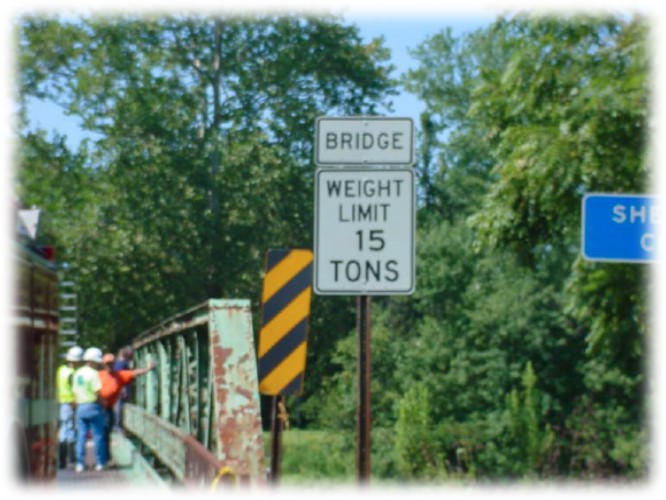
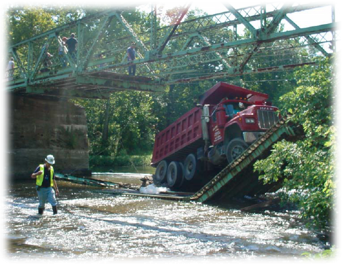
Highway Occupancy Permits (HOPs) control occupancy of our highways by utilities as well as access connections from commercial and residential developments, and local roadways. These utility occupancies and access connections are evaluated to insure the structural integrity of the highway and for the safe and convenient passage of traffic on the roads of the Commonwealth.
In the past, applications for both of these permit programs were submitted on paper and reviewed manually. These processes were inefficient, cumbersome and time consuming.
PennDOT's ePermitting system for HOPs was launched in 2011 and has been continually improved since that time. The electronic system allows for electronic submission of applications and associated documents, efficient review and processing, program transparency for applicants and management, and timely issuance of permits. 98% of all application reviews conducted in 2020 were completed within 30 days, and the average application review time for 2020 was 15.6 days.
The Automated Permit Routing/Analysis System (APRAS) was launched in 1998 is used to process all hauling permit applications received by PennDOT. An effort to modernize the system began in 2019, culminating in the incremental launch of a completely new customer interface starting in December 2019. Future improvements are being planned.
In a typical year, the department issues approximately 450,000 oversize/overweight permits which accounts for over 25 million tons of freight. Hauling permit fees generate over $35 Million in revenue annually. A small percentage of these permits each year qualify as superloads, which exceed the following:
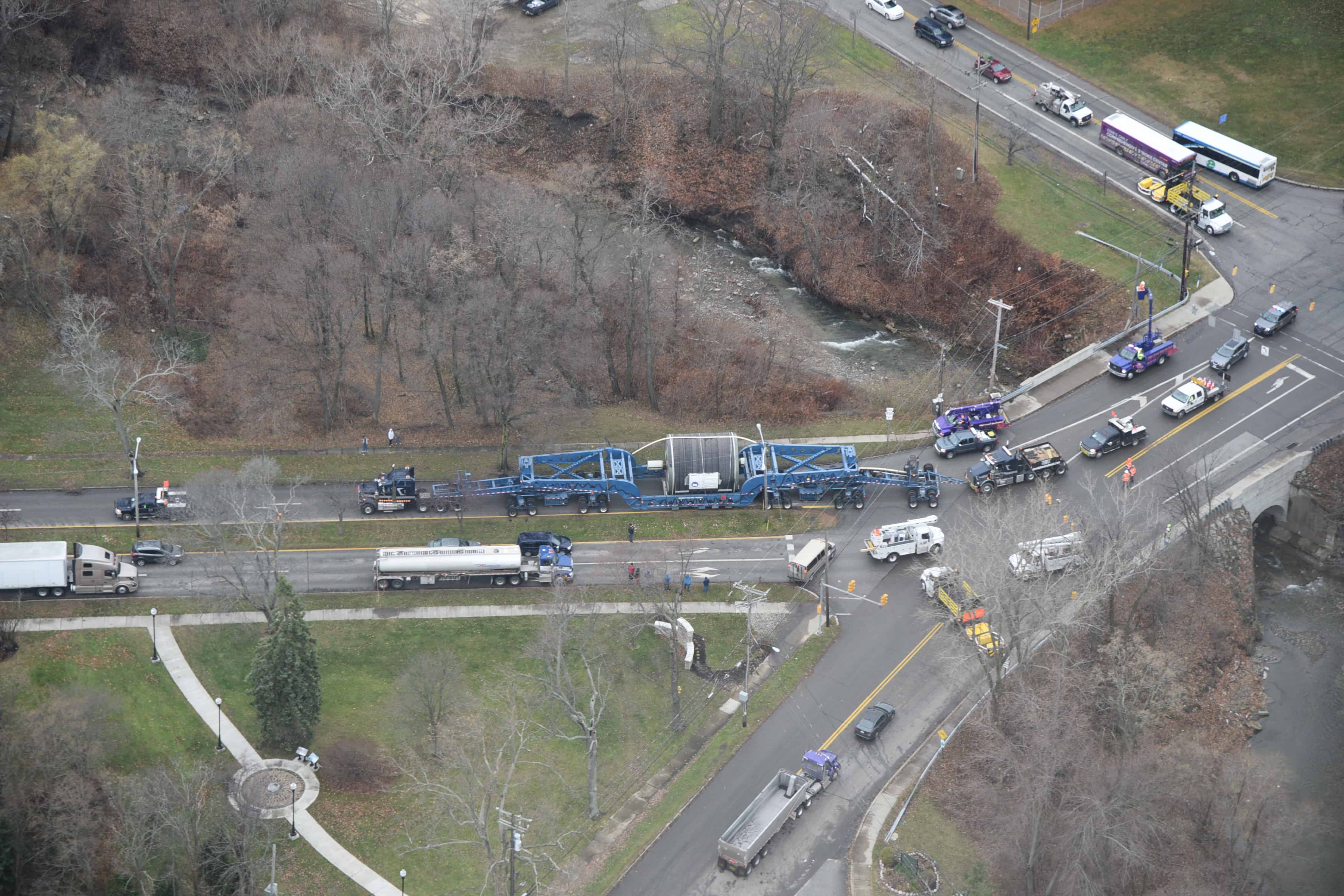
The department processed and issued 340,509 permit applications in 2020, a significant reduction over a typical year as a result of COVID-19. Of this number, 326,672 (or 77%) were auto-issued by the system, saving time for applicants and resources for the department.
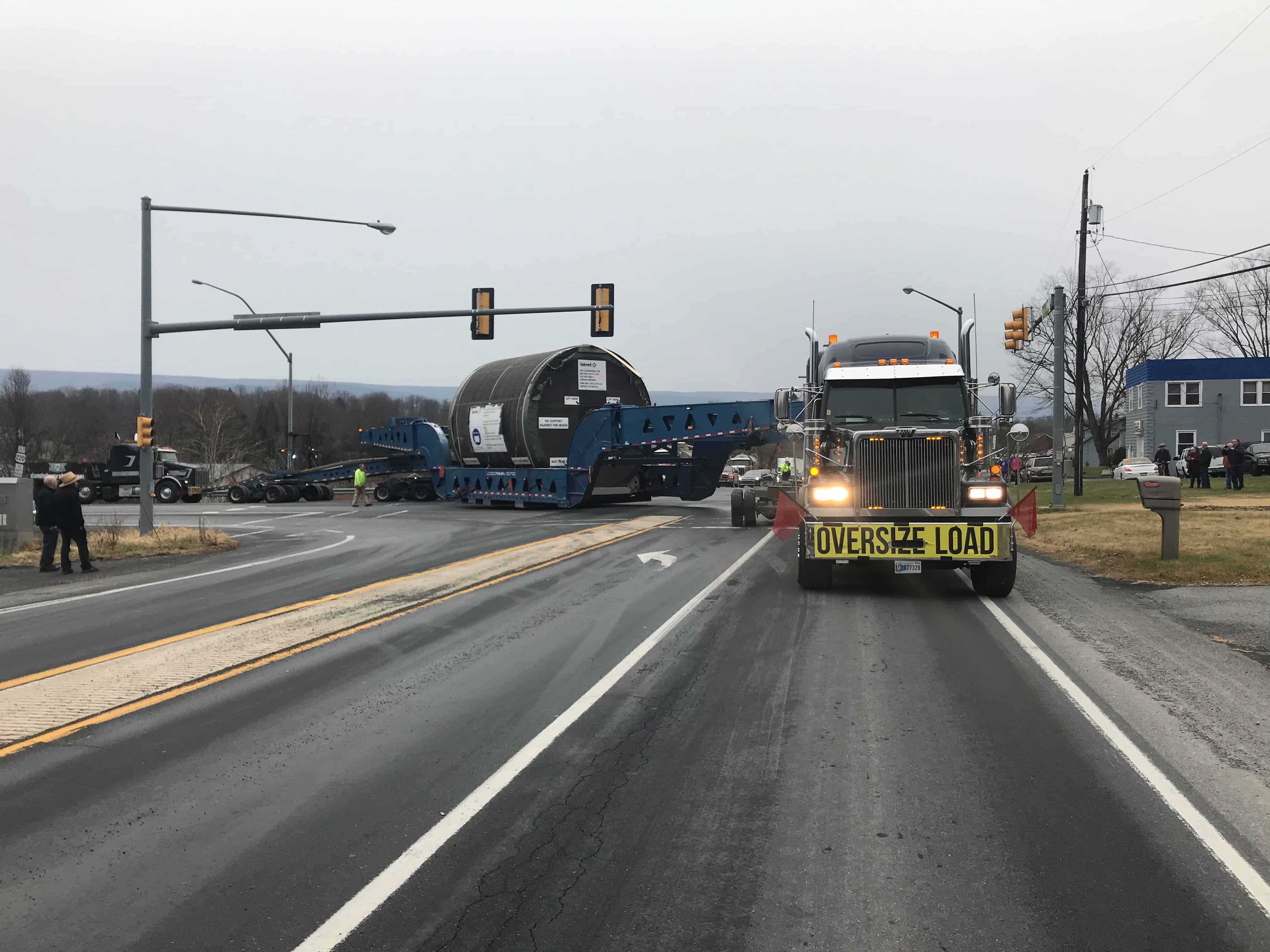
The Central Permit Office issued 2,478 Super Load permits in 2019. Although the regulation allows for up to 3 weeks, the current Performance Metric Goal for Special Hauling Permits is to issue the majority of Super Load permits in 4 days or less.
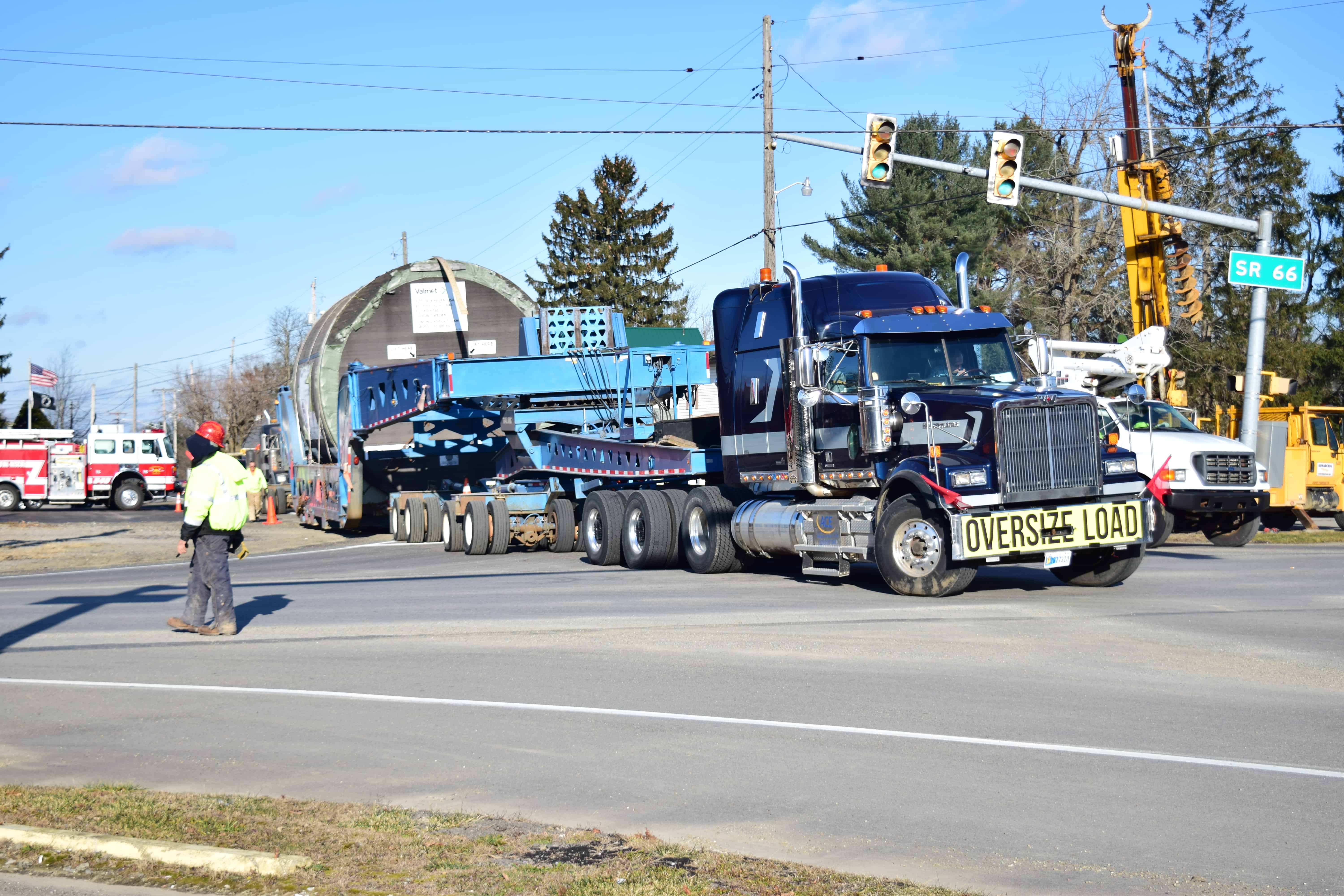
Safety at all levels
The Strategic Highway Safety Plan (SHSP) was last updated in 2017 and established the Department's safety goals. The goal identified was to reduce average fatalities and serious injuries to support the national effort of ending fatalities on our nation's roads within the next 30 years. This ambitious timeline will rely heavily on the implementation of autonomous vehicle technology, which is anticipated to be implemented in the mid to late 2020's. Accordingly, the reduction in fatalities over the next 30 years will not be linear. Pennsylvania's goal is to reduce the current number of fatalities and serious injuries by 120 and 305 respectively by 2022. As autonomous vehicle technologies are implemented, the fatality reduction goals will increase. The actual 5-year average for 2016-2020 was 1,141 and continues a downward trend.
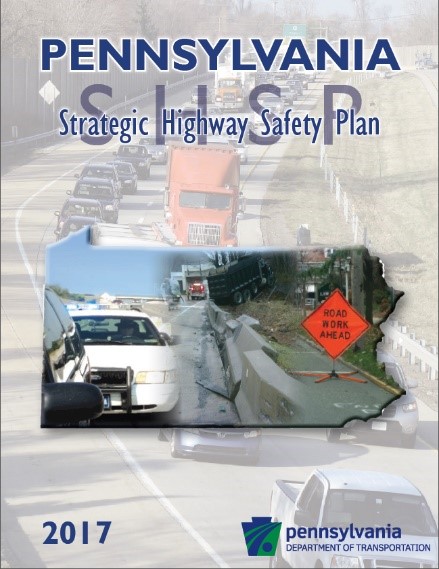
The Federal Highway Administration (FHWA) published the Highway Safety Improvement Program (HSIP) and Safety Performance Management Measures (Safety PM) Final Rules in the Federal Register on March 15, 2016, with an effective date of April 14, 2016. This rule requires that the Department establish targets for five safety measures and track performance in these areas starting in calendar year 2018. Below are Pennsylvania's results for 2019.
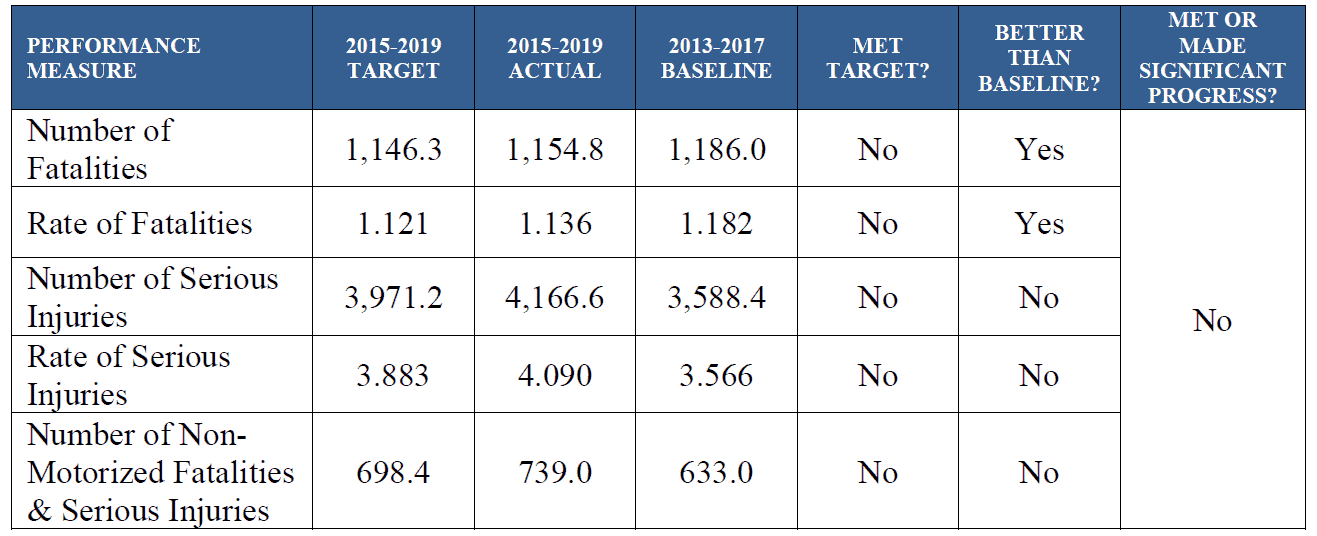
The Strategic Highway Safety Plan periodically establishes targets for fatalities and serious injuries. These targets reflect the desired reductions in these numbers that PennDOT strives to meet or exceed through our safety efforts.
In 2020, Pennsylvania experienced its second lowest number of traffic fatalities since records first began being kept in 1928. As we continue to improve, we need additional data in order to take a more predictive approach to reducing fatalities.
In 2016, the FAST Act and its associated rulemakings established a national injury severity definition and established the terminology of "suspected serious injury". This caused a spike in the number of suspected serious injuries over what police officers were previously classifying as major injury crashes. Since 2016, we have observed a 6.3% increase in suspected serious injuries.
Highway Safety Improvement Program (HSIP) funding is dedicated to safety projects or safety countermeasures that are incorporated into other larger projects. The Safety Section of the Bureau of Maintenance and Operations has developed data driven practices utilizing the Highway Safety Manual. This resulted in updating the Department's safety guidelines to ensure that, not only are we using our available safety funds, but that we are getting a higher return on our HSIP investments.
Based on the fatality and suspected serious injury data from 2018, PennDOT did not meet its established targets and needed to prepare a Highway Safety Improvement Program (HSIP) implementation plan to satisfy the requirements of 23 U.S.C. 148(i).
Some of the key opportunities identified through this process are related to local road safety, pedestrian safety, and systemic safety. There are also programmatic improvements to consider regarding project selection, project prioritization and project tracking. PennDOT's Highway Safety Section will utilize this document's suggestions as a starting point for discussion with our safety stakeholders on ways we can improve our program.
Our efforts to reduce DUI crashes continue to see results. These efforts include High-Visibility Enforcement of Impaired Driving at both the municipal and state levels, Paid/Earned Media Campaigns, a DUI Courts Program, a DUI Intervention Project, Law Enforcement Education, funding a Traffic Safety Resource Prosecutor, providing a Judicial Outreach Liaison, providing DUI Enforcement Liaisons, funding a DUI Technical Services Program, and managing an Ignition Interlock Program.
Pedestrian fatalities have fluctuated over recent years but overall, they have remained relatively consistent in Pennsylvania. As part of PennDOT's continued effort to prevent pedestrian crashes, we are implementing the Safe Transportation for Every Pedestrian (STEP) innovation, part of the Federal Highway Administration's (FHWA's) Every Day Counts Round 5 (EDC-5). STEP consists of seven proven safety countermeasures designed to protect pedestrians. While these countermeasures are already being used in PA, we want to work with FHWA to determine best practices and locations for their use. We also have a series of grant efforts that are aimed at improving pedestrian safety. These include a Walkable Community Program and a Pedestrian Education & Enforcement Program.
Pennsylvania has over 2.1 million licensed drivers aged 65 and older who make up 23.5 percent of the driving population. Mature citizens constitute the fastest growing segment of the population. Pennsylvania State Data Center's 2014 report Pennsylvania Population Projections 2010-2014, indicates that residents aged 65 and older will continue to increase almost 15 percent between 2015 and 2020. Mature drivers are overrepresented in multiple vehicle crashes; these numbers do not determine fault of driver, but are likely due to the human body's increased fragility as we age. As part of our grant programs, we have a project that is aimed at improving mature driver safety. The efforts associated with this project are primarily centered around educational opportunities and provide information to seniors on vehicle related issues like recalls and inspections.
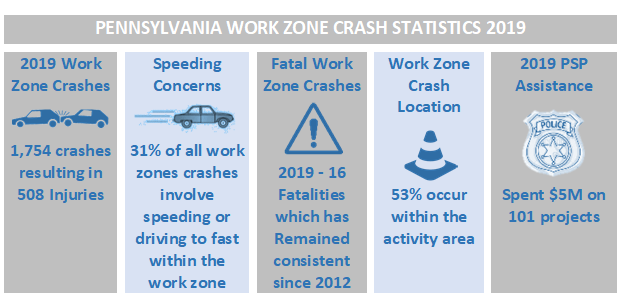
Work zone safety remains one of PennDOT's emphasis areas because not only does it affect the traveling public, but also our workers. PennDOT has developed a work zone speed limit policy to bring consistency amongst each District. Speed limits will no longer arbitrarily be lowered without justification. In addition, the PA Legislature passed Act 86 of 2018, which allows a five-year pilot of Automated Work Zone Speed Enforcement (AWZSE). During the pilot, some construction and maintenance work zones will have cameras equipped with LIDAR or radar to take photos of license plates of any vehicle exceeding the work zone speed limit by 11 mph or more when workers are present. The Department also uses a grant to support a municipal aggressive driving enforcement and education program. As part of this program, outreach to the public is performed in conjunction with an enforcement wave in April that focuses on Work Zone Safety and Distracted Driving.
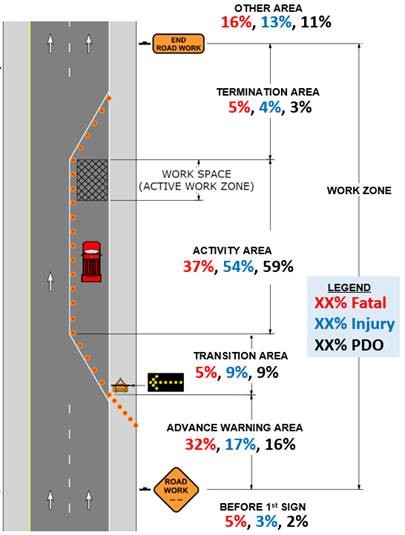
While the Department has seen many positives relative to safety in recent years there is still significant work that must be done to accomplish our long-term performance goals. To achieve this, we plan to continue the approaches that have been yielding good results, but will add new programs and countermeasures where we have not been obtaining our desired outcomes.
Currently to reach the national of zero fatalities by 2050, we would need reduce fatalities by 38 annually (the green line above). The approach that was taken in the SHSP obviously relied heavily on autonomous vehicle technology but it's clear that a continued 1-2% reduction (the gold line above) will not meet the long-term goals established by the federal government.
The HSIP implementation plan that was developed pointed to opportunities with both data driven safety and systemic safety as a means to improve our overall performance. The Department intends to continue focusing on these two concepts as they are critical components of us reaching our safety goals.
Data driven safety is important to utilize the available federal funding in the most efficient manner to improve safety. The Department has begun the effort of aligning our decision-making processes with this approach. This started with revising our policies to focus on the concepts identified in the AASHTO Highway Safety Manual and ensuring that the projects selected for the HSIP funding have a minimum of 1:1 return when it comes to safety benefit. GIS mapping tools like the Pennsylvania Crash Information Tool were developed to further support this approach and assist our partners in identifying safety projects. Moving forward, the Department and our Planning Partners will be focusing on ways to better integrate this approach into our project selection process.
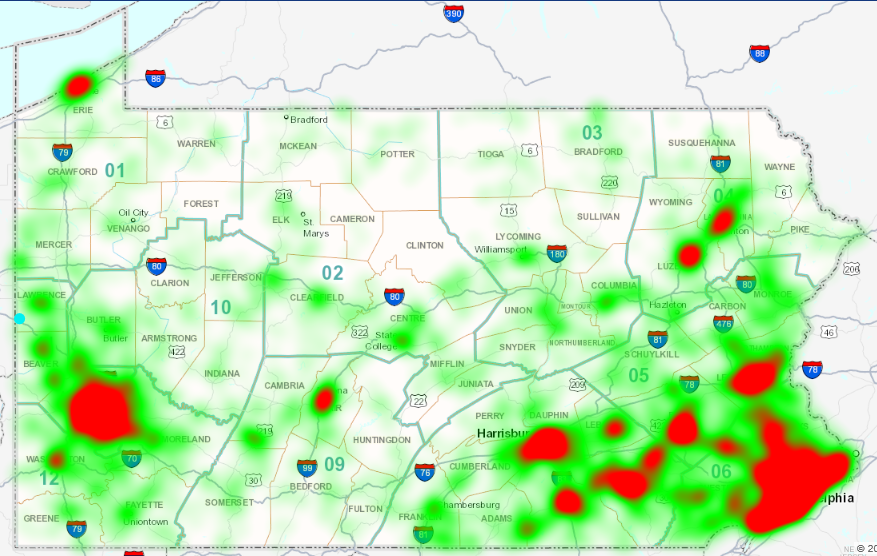
Balancing our safety portfolio of projects between spot locations and systemic safety has been an ongoing effort to find the right mix. Addressing crash locations seems straight forward, but the implementation plan points to better cost effectiveness of low-cost systemic treatments like rumble strips and curve countermeasures as a way to possibly achieve a better return on our investment, thus achieving a greater reduction when it comes to fatalities and suspected serious injuries. The Department will continue to work with our Planning Partners to find the right mix of both location-specific and systemic projects.
As previously indicated, Pennsylvania's last Strategic Highway Safety Plan (SHSP) was developed in 2017. Per 23 CFR Part 924, states are to update their SHSP every five years, so the Department is beginning our efforts with this process to ensure that this is completed by the end of 2021. The intent is to utilize the suggestions from the HSIP Implementation Plan to engage stakeholders in revisiting our strategies to improve safety. One of the repeated themes that has been brought to the Department's attention is that the current SHSP is very broad in scope and bringing more focus to certain items might better assist our partners in achieving our safety targets. Blending this with a data driven approach we may still have our safety focus areas, but find that there is the need to establish special emphasis areas like pedestrian or local safety.
Manage traffic and report road closures and conditions
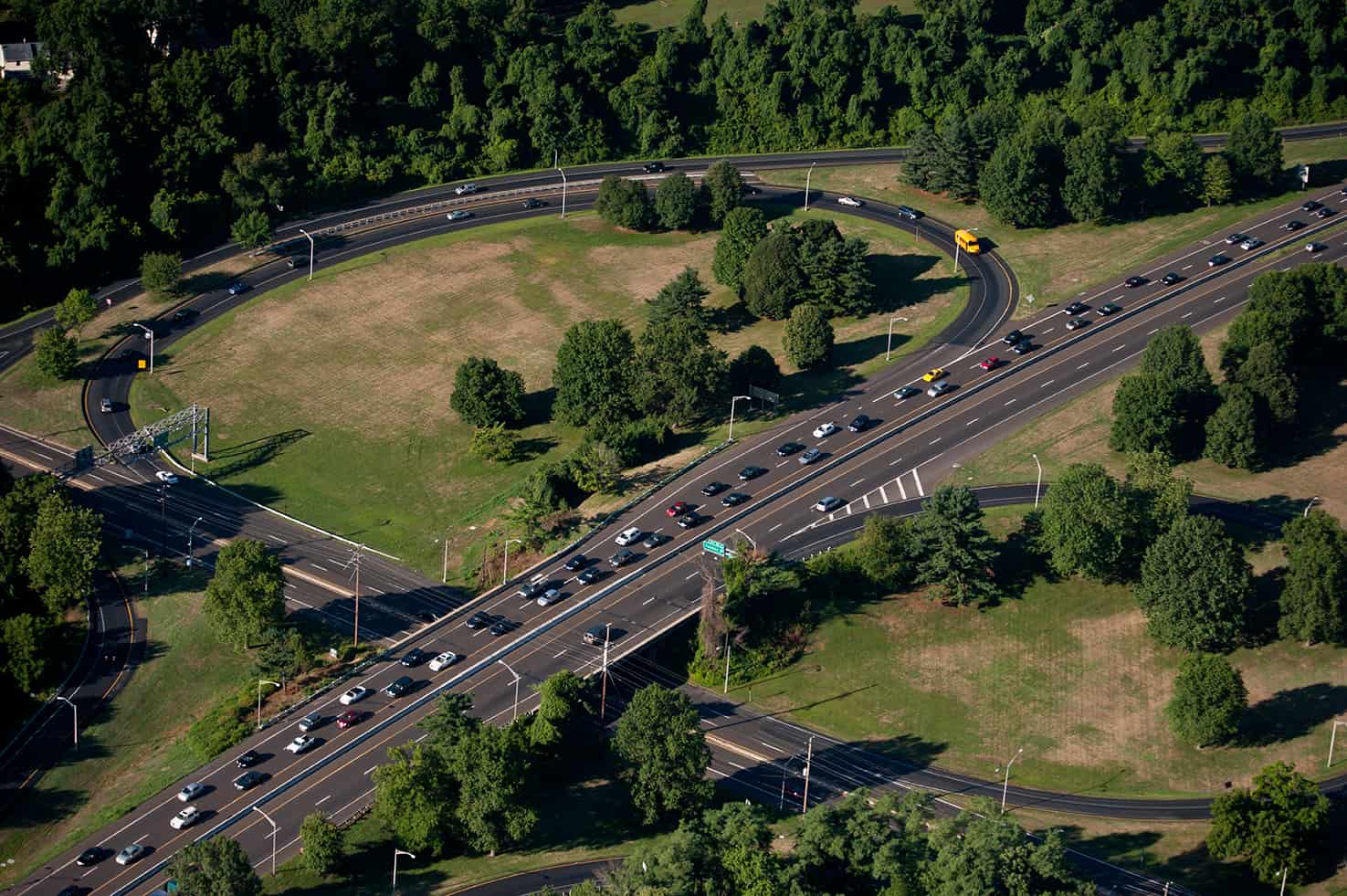
In the past, PennDOT faced a number of challenges to effectively and efficiently manage traffic and report road closures and conditions. For decades, the only effective method to address recurring congestion was to add capacity. These capacity-adding projects were expensive and often unsuccessful, while increasing our maintenance burden. Reporting consisted of a labor intensive, manual system that used spreadsheets in both paper and electronic format to maintain and disseminate road closure information.
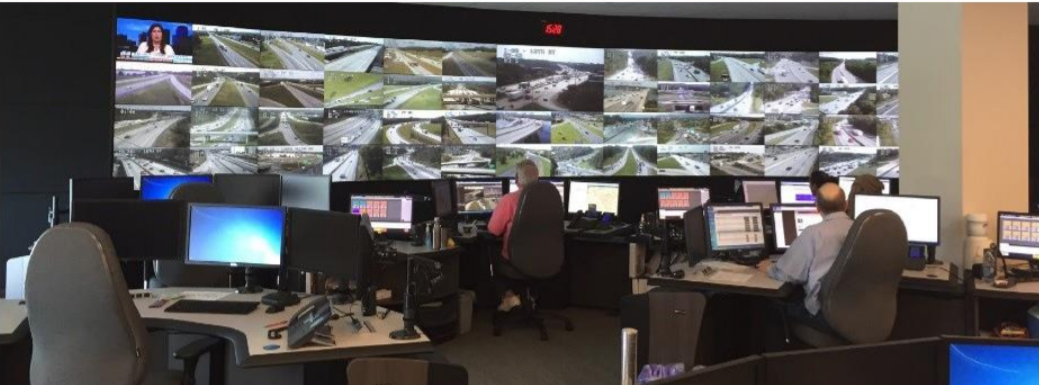
With recent industry improvements to technology and data, PennDOT has modernized and continues to grow its approach to utilize technology to effectively manage, notify, and provide road users real-time operations direction to reduce congestion while maximizing the capacity of our roadways. This approach is needed as existing roadway needs continue to grow while funding continues to be a challenge, PennDOT modified its approach to only implementing capacity-adding projects when needed and continues to grow the use of technology to more effectively monitor, communicate and direct road users. PennDOT's Traffic Operations Program, also known as Transportation System Management and Operations (TSMO), focuses on the movement of people and goods throughout the Commonwealth safety and efficiently from their origin to their destination. To perform that function, PennDOT's Traffic Management Centers (TMCs) utilize various tools, data, and collaboration between various stakeholders to meet the TSMO Goals and Objectives specified above. PennDOT has broken the state into 4 Traffic Operations regions which are managed by:
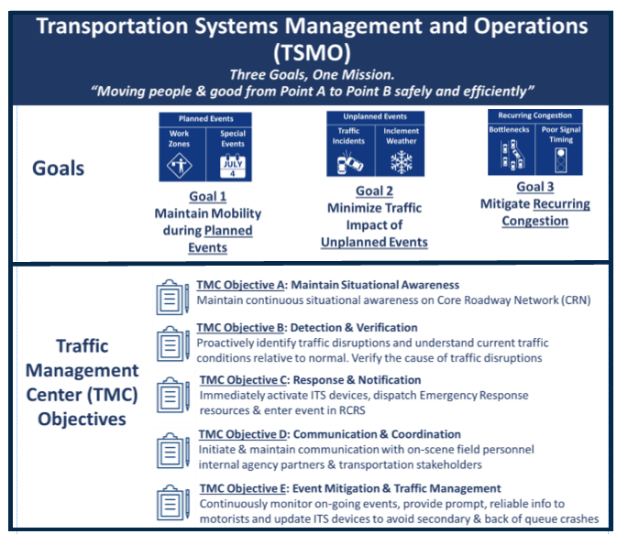
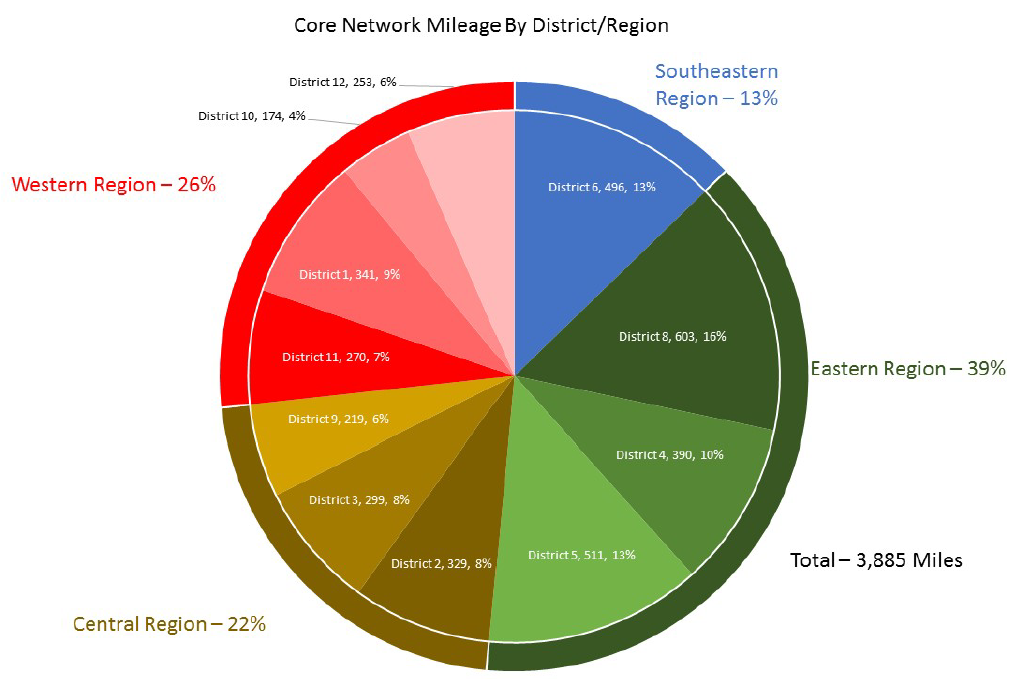
PennDOT's Traffic Management Centers (TMCs) maintain situational awareness of planned and unplanned events affecting roadway operations, and effectively identify and manage the inherent traffic. This process is conducted through a multitude of ITS devices, software applications, and regional TIM responder networks. Some of the key tools utilized by the TMC's include:
As the Department continues to evaluate additional advanced Traffic Management strategies, the TSMO Performance Program highlighted below is a critical piece to identifying and providing appropriate and effective solutions moving forward.
With the various TSMO tools and data being utilized by the TMCs, these large amounts of data become valuable information if appropriately reviewed, evaluated and analyzed. Combining this active traffic information with crash reports, traffic volumes, and construction/maintenance activities, can provide a preliminary glimpse into the roadway performance and TSMO impacts on roadway conditions. These evaluations as provided below are key elements to ensuring success of PennDOT's TSMO Performance Program. The following section highlights TSMO Performance efforts that are focused on Pennsylvania's "Core Roadway Network" as shown below.
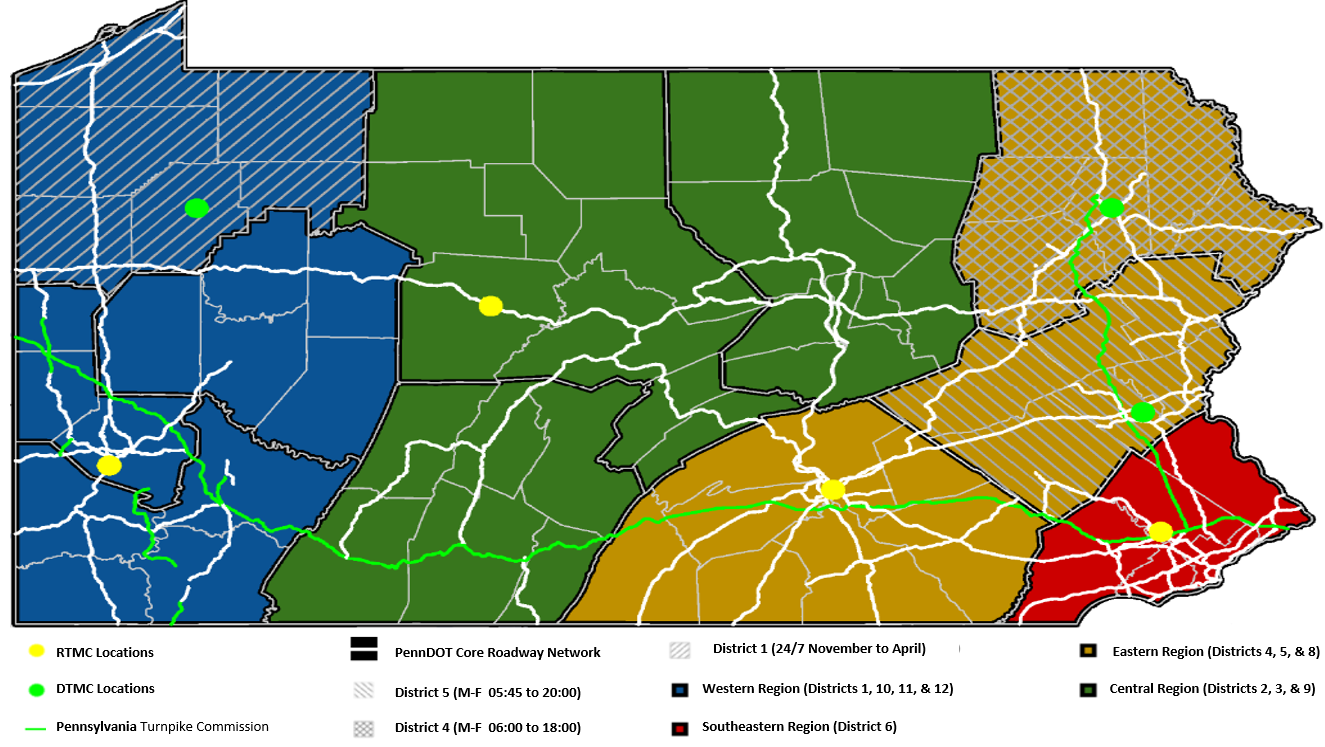
The Core Roadway Network, established in 2011, is utilized by 511PA and focuses on major interstates, limited access roads, and selected other major routes throughout the Commonwealth. Unless otherwise noted, the information presented below refers only to crashes that occurred on the core roadway network in 2020.
An area that was identified by the TSMO Performance Program for improvement was situational awareness of crashes, particularly those that cause high congestion. Below is an example of what a "high congestion crash" would look like on a map with traffic data, and the associated incident timeline from the University of Maryland's Probe Data Analytics Suite:
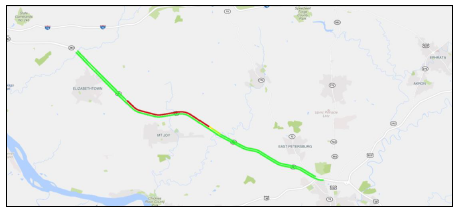
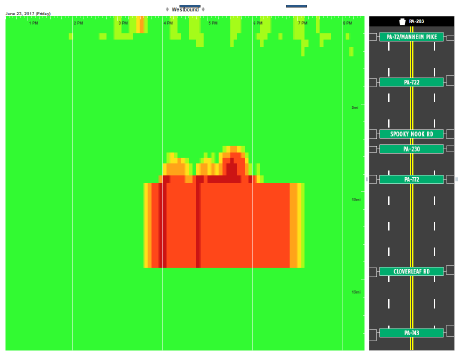
Analysis of the data above showed that 67% of reportable crashes statewide caused high congestion. The TSMO Performance Program was able to correlate this by evaluating reportable crash data, RCRS, INRIX and WAZE data to identify and begin to provide useful information to the TMCs to improve the accuracy and timeliness of identifying and capturing incidents. In 2020, this approach allowed TMCs to improve their capture rate to 71%.
Additionally, the TSMO performance program has provided 5 detailed performance reports that can be found at: https://www.penndot.gov/ProjectAndPrograms/operations/Pages/default.aspx that provide Traffic Operations staff with key information to evaluate and determine ways to make impactful improvements to our program. An example of the information provided within the reports includes a section within the 5th report which provides a heat map of un-verified heavy congestion crashes that occurred in 2019, which allows TMCs to focus situational awareness efforts on the darker areas which are the recurring and most impactful areas compared to normal operations. An example of these heat maps is provided below.
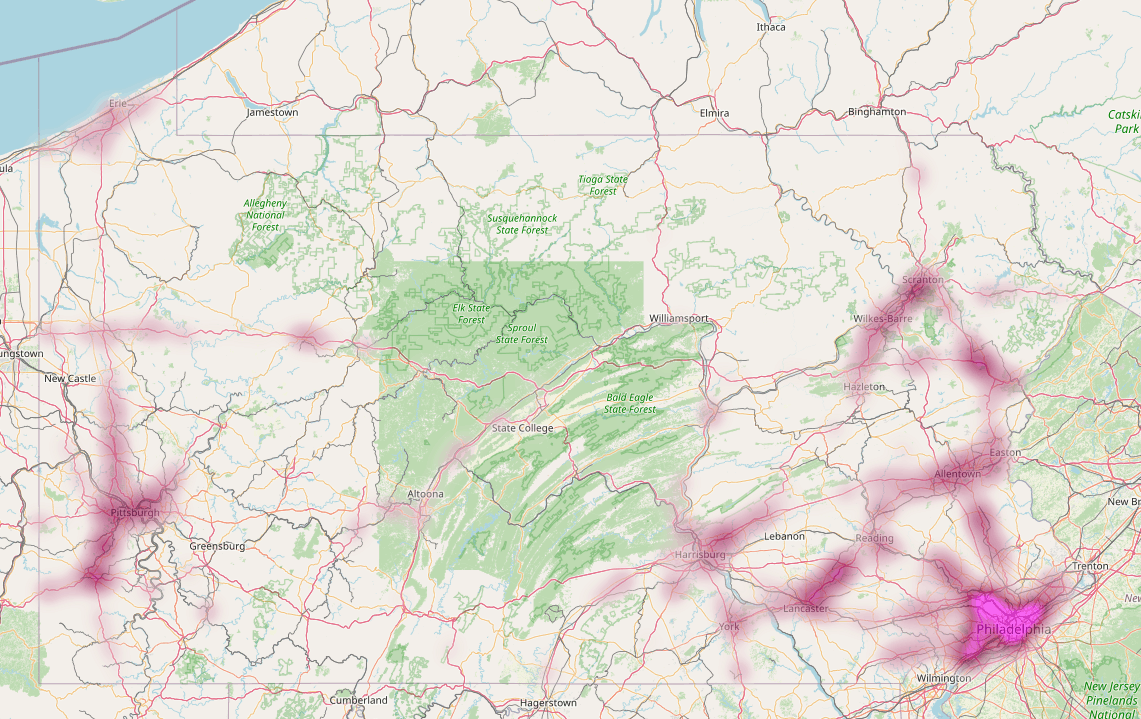
The TSMO Performance Program developed the first Pennsylvania-specific congestion pie chart for PennDOT's core roadway network. This effort involved correlating incident information from Waze and a variety of Department sources (Crash Reporting System, RCRS, RWIS, Maintenance Database) to INRIX congestion data to determine a "cause." The congestion pie chart was originally produced for 2018, and was updated for 2019, and is scalable to analyze smaller areas such as a region, district, county, or even route. The goal of this effort is to give planning and traffic operations personnel a better understanding of the causes of congestion in their regions. This will allow for the development of better strategies to manage traffic concerns. In 2019, the congestion pie chart was incorporated into several Department Regional Operations Plans to more effectively identify and provide projects that continue to address mobility and safety conditions within each region. While the congestion causes vary between each region, the statewide chart shown below identifies the key statewide causes of condgestion, which allows the Department to focus efforts and strategies on addressing these specific issues.

Crashes and work zones on the core roadway network can cause significant congestion. Unfortunately, many times this congestion results in secondary crashes, or work zone congestion related crashes due to unplanned slowdowns for approaching road users. These two scenarios have been an emphasis of the TSMO Performance program to better understand where, why, and how these crashes are occurring. With better information, Department Operations and work zone staff can better plan and react to these congestion scenarios. A significant percentage of these crashes occurred more than 2 miles away from the initial crash/workzone, and approximately 90% of them had a dynamic message sign (DMS) in the area to warn road users about the traffic ahead. Below we have additional highlighted information:
Work Zone Congestion-Related Crashes and Length of Queues:
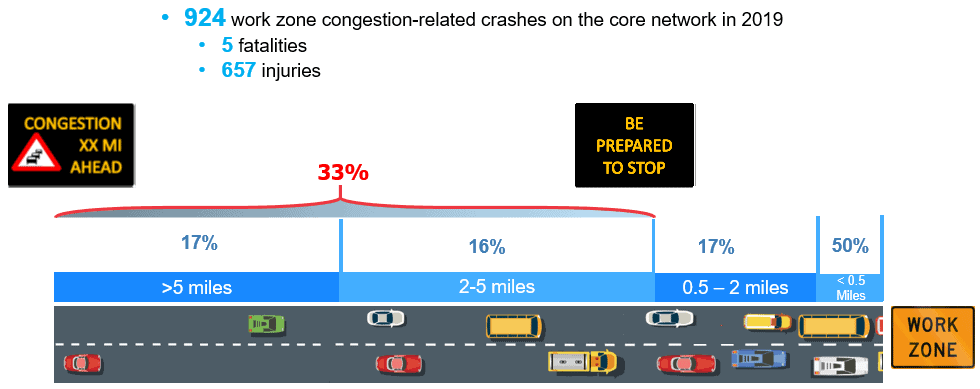
Secondary Crash Delay Time and Length of Queues:
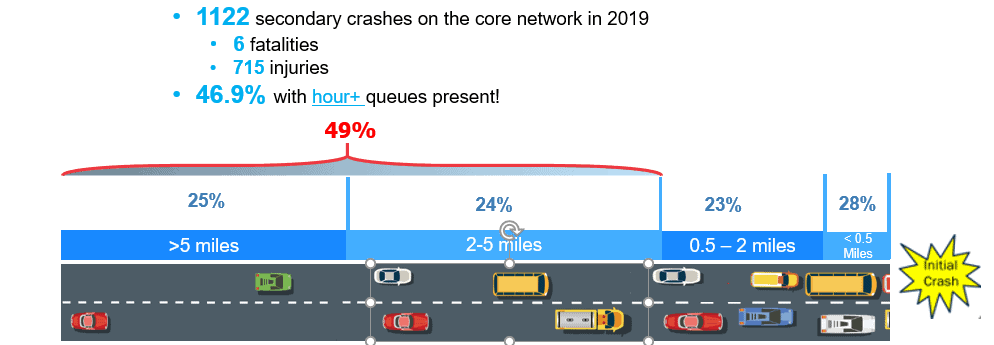
In addition to providing TMCs with information on where and when high congestion crashes occur, the TSMO Performance Program has identified tools that can be used to help increase situational awareness of these crashes.
Crowdsourced data sources that the Department currently has access to, such as INRIX probe traffic speed data and incident data from Waze, were found to be highly effective at detecting high congestion crashes, as seen in the charts below.
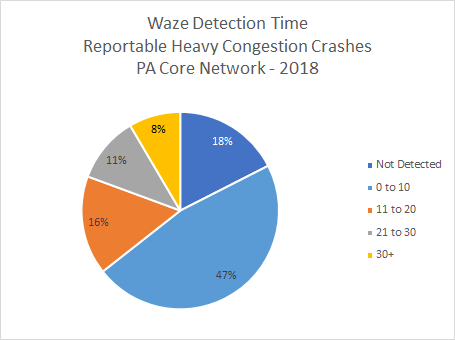
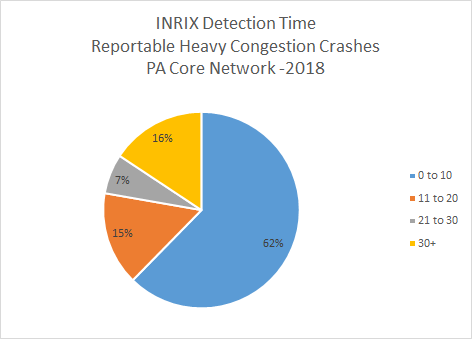
Due to these findings, the Traffic Alerts Application was developed and deployed in 2018. The system incorporates Waze and INRIX data to present users with a "news feed" of continuous updates as incidents occur on the core roadway network. Key features include user-defined filters for incidents, a real-time look at traffic speeds at the incident location on Google Maps, and an ongoing incident timeline as more information updates come from Waze and INRIX. Since the initial rollout, new functionality was added to include a "verified" incident RCRS dashboard that displays all RCRS events that are taking roadway capacity from the core network, Waze and INRIX incidents link to TMC entered RCRS incidents, improvements to the incident timeline to allow users to look back in time, and historical incident search.
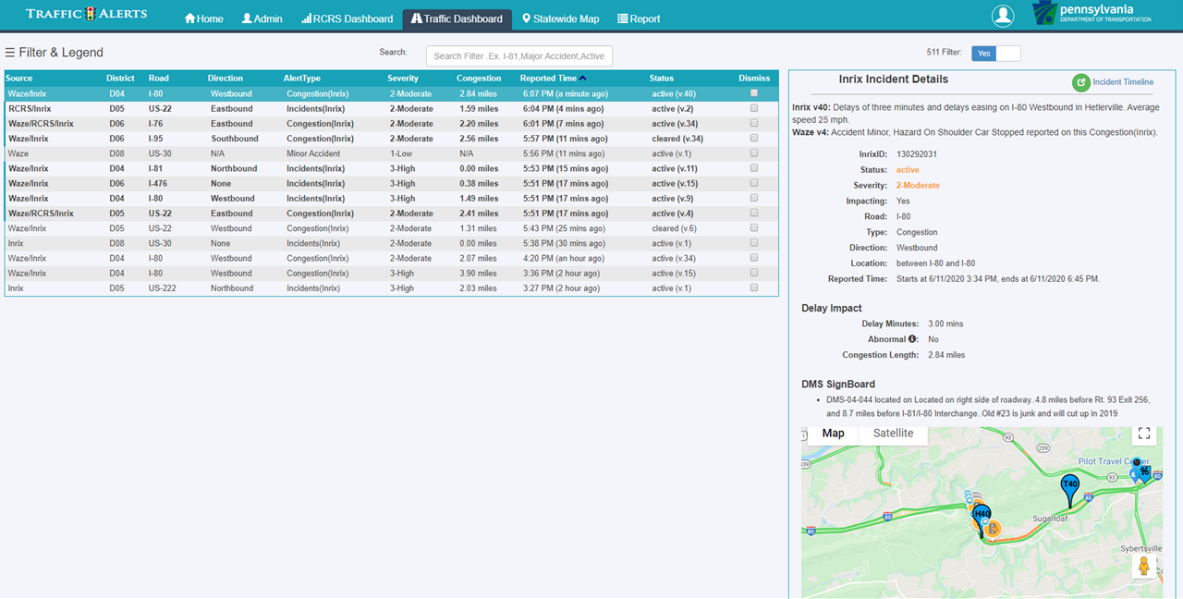
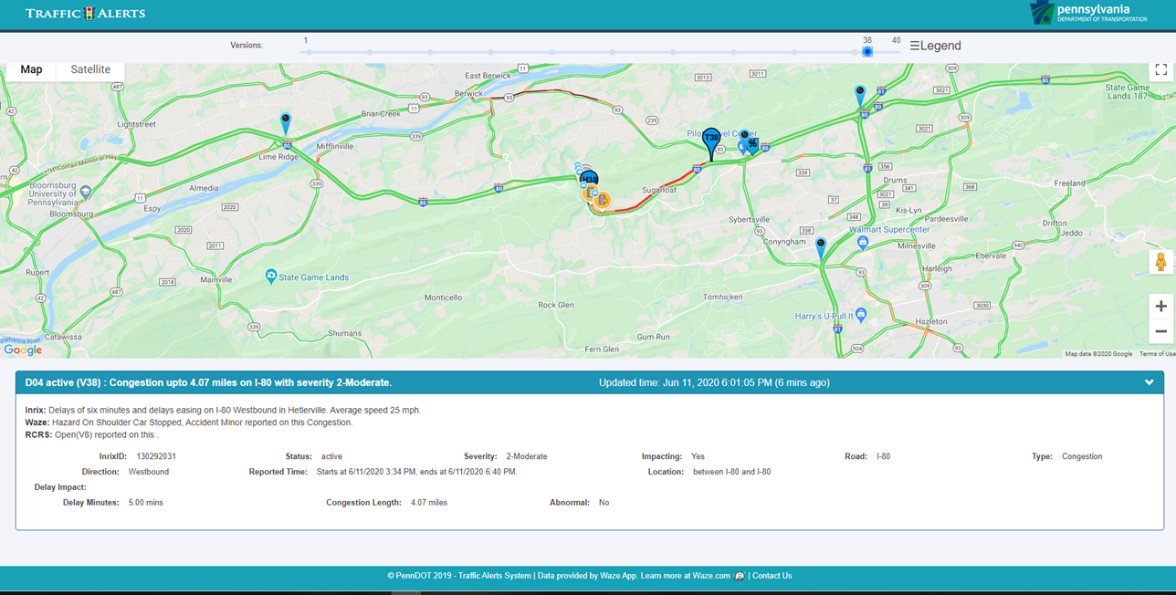
The Traffic Alerts Dashboard was released for use by TMCs in the second half of 2018. The table below shows the growth in the number of crashes that TMCs have captured in RCRS from 2017 to 2019. While there has been growth generally across the board, the growth Is most pronounced in areas where the Traffic Alerts Dashboard has been utilized, such as the Eastern and Central RTMCs.
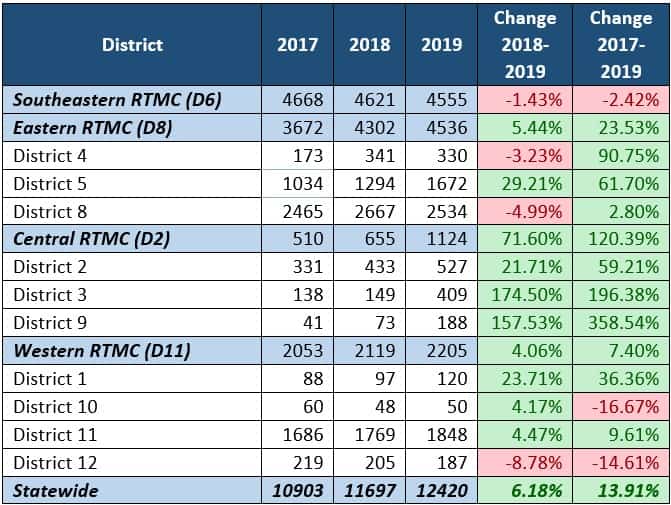
Improving TMC awareness of and response to high congestion crashes through providing better information and improved tools is a key goal of the TSMO Performance Program.
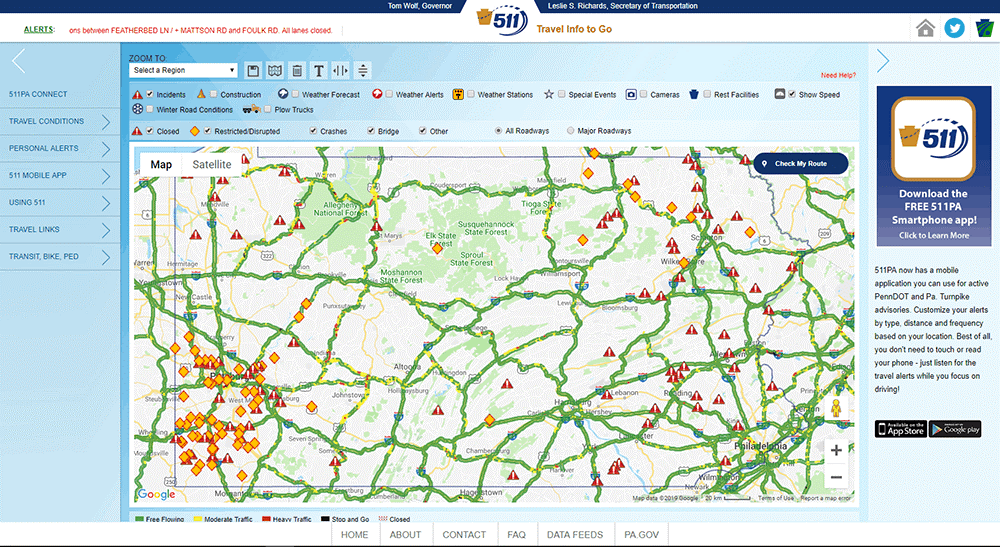
511PA is PennDOT's statewide traveler information system. Through the 511PA website (pictured) above, Interactive Voice Response (IVR) phone system, personal traveler alerts system, and mobile application, 511PA provides users with accurate, up-to-date information regarding current traffic conditions. 511PA provides the traveling public with incident, construction, and winter road condition data from RCRS, live access to all of PennDOT's traffic cameras, real-time speed data for 40,000 miles of roadways provided by INRIX, plow location and history data from PennDOT's AVL, among other data sources. By utilizing 511PA, the traveling public can make better informed decisions regarding their travel plans, improving their traveling experience and reducing the number of people queued behind incidents and other traffic disruptions.
Traffic Incident Management (TIM) plays a large role in helping the Department effectively operate and manage the Department's core network. Nationwide best practices place DOTs as a focal point for improving incident management processes, and TMCs can serve as a hub for dispatching Department resources.
To better understand the importance of the various roles in incident management, accurate information is needed to qualify the benefits associated with PennDOT or other responders being on scene. TMCs can assist with this effort by keeping RCRS up to date with accurate information when PennDOT or first responders arrive on the scene of an incident.
The table below compares incident clearance times on PA interstates by county for 2017 through 2019, and also highlights counties which have an active TIM team.
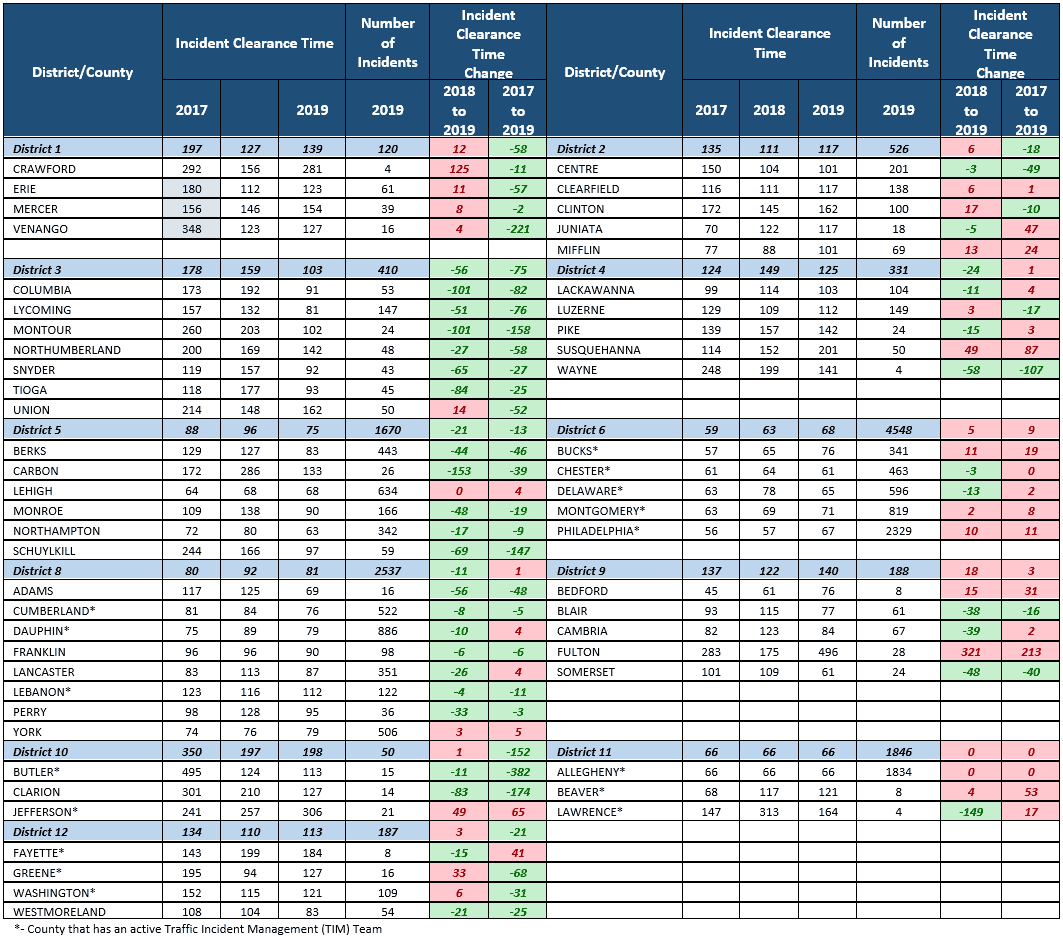
Moving forward, the Transportation Systems Management Operations (TSMO) modernization methodology has been incorporated into PennDOT's planning process. Implanting this earlier in the planning process allows for many effective TSMO strategies to be considered. PennDOT has identified 21 TSMO strategies for improving safety and mobility along key highways and addressing congestion. Additionally, these strategies are working to improve reliability and reduce the variability of congestion on our highways. These TSMO strategies will continue to grow and improve in the future.
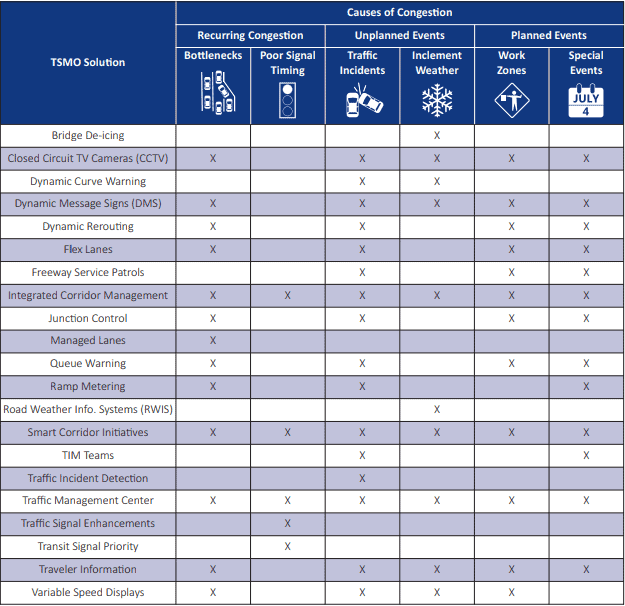
One traditional way of alerting the traveling public of traffic issues has been use of Highway Advisory Radio (HAR). This technology allows for the broadcast of audio messages related to traffic events that drivers can listen to by tuning to a specific AM radio station.
HAR technology has been falling out of favor recently for a number of reasons – it can only be used when in range of a physical transmission, there can be issues with clarity of the transmissions, and many newer cars no longer even have AM receivers.
As a result, PennDOT is working with its ATMS and 511PA vendors to implement “virtual HAR” technology, which will allow HAR-like messages to be utilized across the state. Rather than with AM radio broadcasts, these HAR messages will be disseminated through PennDOT’s existing traveler information outlets: website, IVR phone system, personal alerts service, and the mobile application. In addition, mobile app users will be able to opt for push notifications, which will allow them to receive proactive notifications of major traffic incidents in their area, even if they are not actively using the app at the time. Virtual HAR technology is anticipated to go live in 2021.
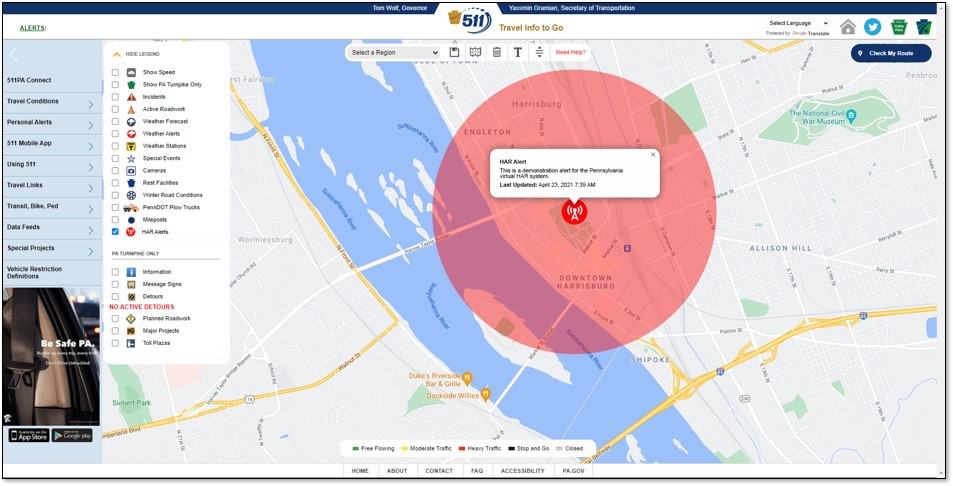
We anticipate that the TSMO strategies identified above will continue to grow our current efforts to increase the use of data as we progress towards prediction notification and machine learning in the future.
Employ technology to improve efficiency and collaboration
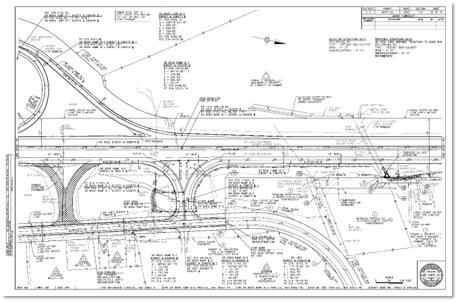
The Department has historically delivered projects in a 2D environment which included plans, profiles, and cross-sections which the contractor used to build our projects. One of the Department's efforts to improve Design Efficiencies was to establish an initiative to implement and leverage 3D intelligent models for Design, Construction and Asset Management. This effort will transition from a standard 2D plan set to a 3D model deliverable for the project delivery process. The 3D model utilized in construction will have the ability to provide as-built asset information following construction, which in turn will become an accurate representation of the constructed project for use in PennDOT’s asset management systems. This initiative is expected to improve quality and provide cost savings.
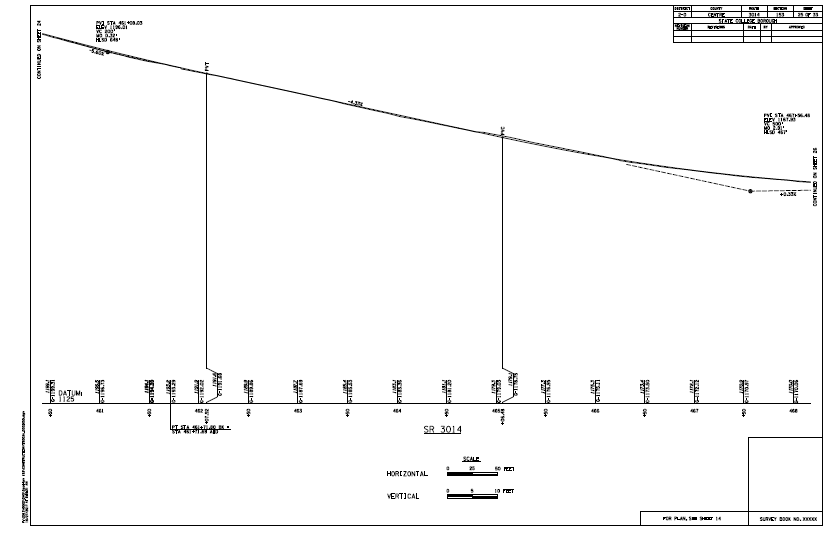

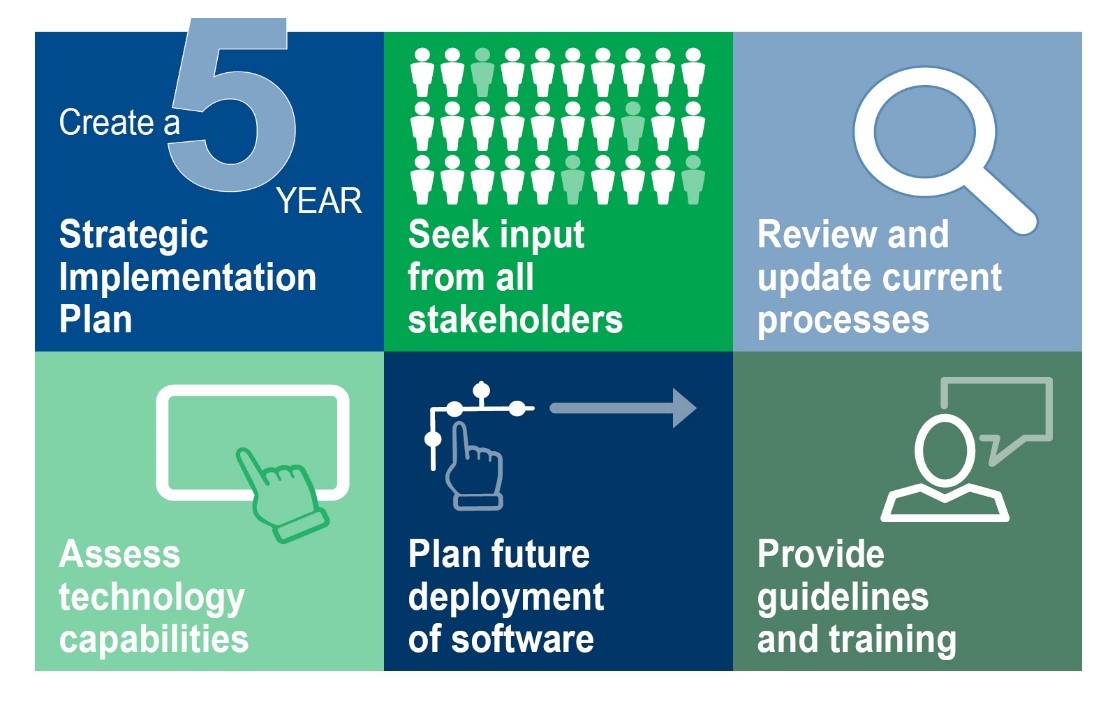
We are in the second year of a 5-year plan to achieve this initiative. The Department’s overall goal is to completely digitize the life cycle of a project from Design to Asset Management. We plan to utilize an agile approach—crawl, walk, run to achieve this goal. The first pilot projects to transfer digital information will take place in 2021. The pilots will continue to grow in complexity over the next few years until we get to the point that we have a complete digital model of every asset on a project.
As-Built drawings, which reflect the final condition of a completed project, are a component the Department is aiming to Digitize. The Department currently transfers As-Built information via a red lined plan/tab sheet in a pdf format. The 3D2025 initiative has identified pilot projects for the 2021 construction season to begin the process of transferring information in a digital form from Construction to Asset Management.
As this initiative progresses, we will be engaging with internal and external stakeholders to seek input and document concerns and challenges we need to address, as well as opportunities we can capitalize.
The implementation team will then work with a multi-disciplinary committee to:
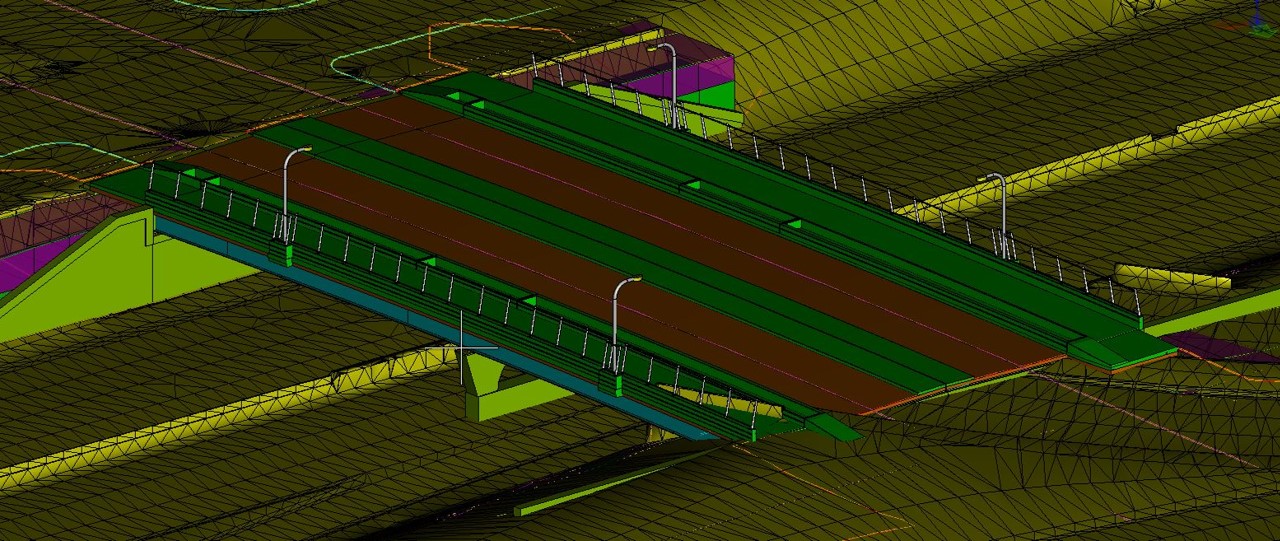
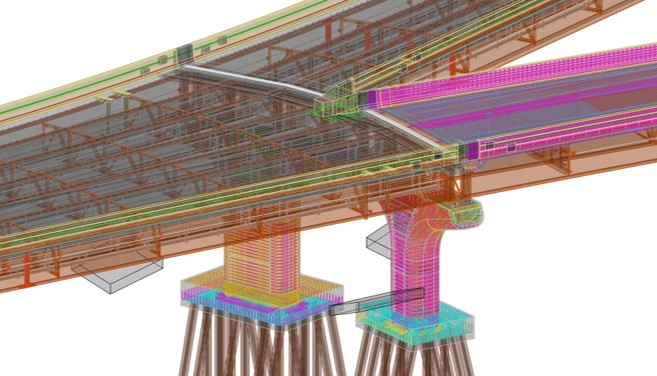
The Department's vision is that by 2025, construction projects will have the ability to be bid using 3D technology and no longer use a traditional construction plan format.
All project elements, including what would typically be shown on "also plans," such as Traffic Control Plans, Cross Sections, Planting Plans, Geotechnical Plans, etc., will be contained within the CADD model. The 3D model will be the primary document of truth. As-builts will be a deliverable for the contractor and will be an accurate representation of the constructed project.
Improving traction on our roadways during winter storm events
PennDOT currently uses salt, anti-skid and salt brine to improve traction on our roadways during winter storm events. We have 64 facilities capable of making salt brine at a cost of less than $0.18 per gallon. Last winter, PennDOT used over 12.2 million gallons of salt brine for anti-icing on roadways before storm events and to pre-wet road salt to reduce bounce and scatter during spreading activities.
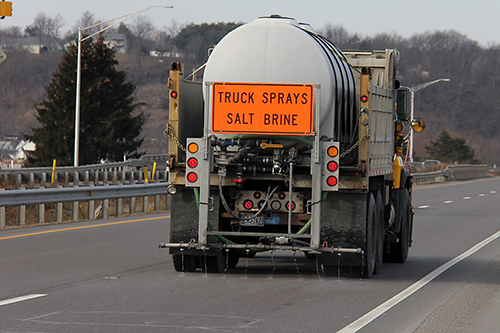
Motorists can check conditions on state-owned roadways, including color-coded winter conditions on 2,900 miles, by visiting www.511PA.com. 511PA, which is free and available 24 hours a day, provides traffic delay warnings, weather forecasts, traffic speed information and access to more than 860 traffic cameras. 511PA is also available through a smartphone application for iPhone and Android devices, by calling 5-1-1, or by following regional Twitter alerts accessible on the 511PA website. New in 2020/21, 511PA now has a Commercial Vehicle Restrictions tab that indicates planned restrictions on the highways and definitions for those restrictions.
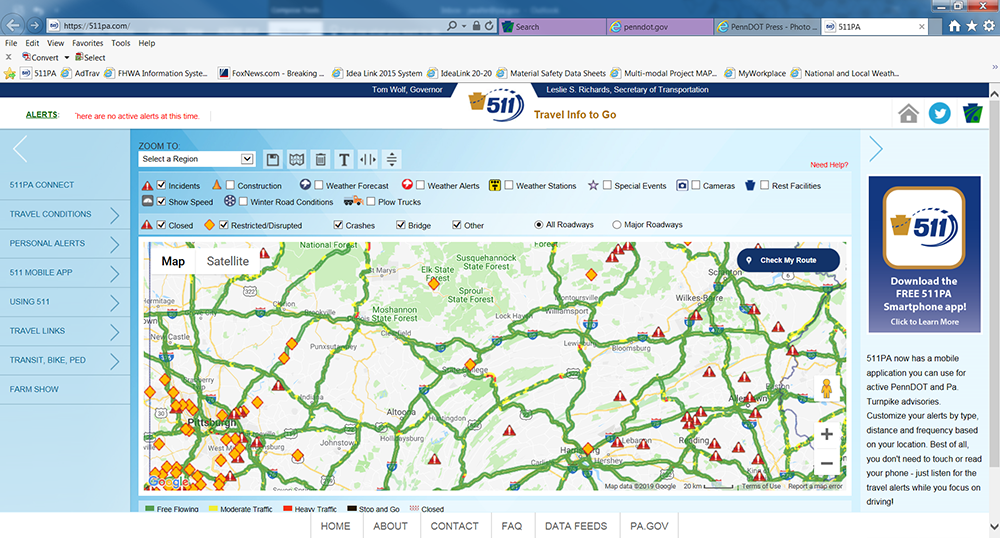
Also, during the winter, the public can find plow-truck locations and details of when state-maintained roadways were last plowed. The information is made possible by PennDOT's Automated Vehicle Location (AVL) technology, which uses units in each of the more than 2,200 department-owned and rented plow trucks to send a cellular signal showing where a truck is located. Currently, PennDOT is piloting a plow camera program where we can see what the plow operator is seeing in front of their truck. Once this product is vetted and operational, we have plans to add these images to the 511PA website for the public to view, so they may also see the live road conditions.

PennDOT worked with Temple University to research Alternative Deicers. Through that research, along with information provided by the Pacific Northwest Snowfighters Association and other state DOT'S, PennDOT was able to create a process to approve new liquid deicers for Bulletin 15. Since then, this process has been used to make new liquid deicers available for PennDOT Winter Operations.
As a result of the Covid-19 pandemic, PennDOT district/county management undertook a contingency planning effort to ensure that roads would get plowed during the winter. Planning for various staffing levels was accomplished through the use of the Department’s Snow Route Planning Application and contingency maps were created to ensure all routes were covered. Additional safety measures were taken, including additional cleaning of equipment at the end of each shift, distribution of Personal Protective Equipment (PPE) to staff, and various social distancing measures to ensure the safety of staff involved in winter operations. The distribution of PPE was centralized through Area Command and they utilized the Pony Truck system to distribute. Area Command also maintained situational awareness throughout the pandemic by creating a Sharepoint site for all the managers of PennDOT to access for up to the date policies, procedures, and information regarding operations during the pandemic. Area Command also was the single point of contact for building entry requests, which had to be approved through their command structure.
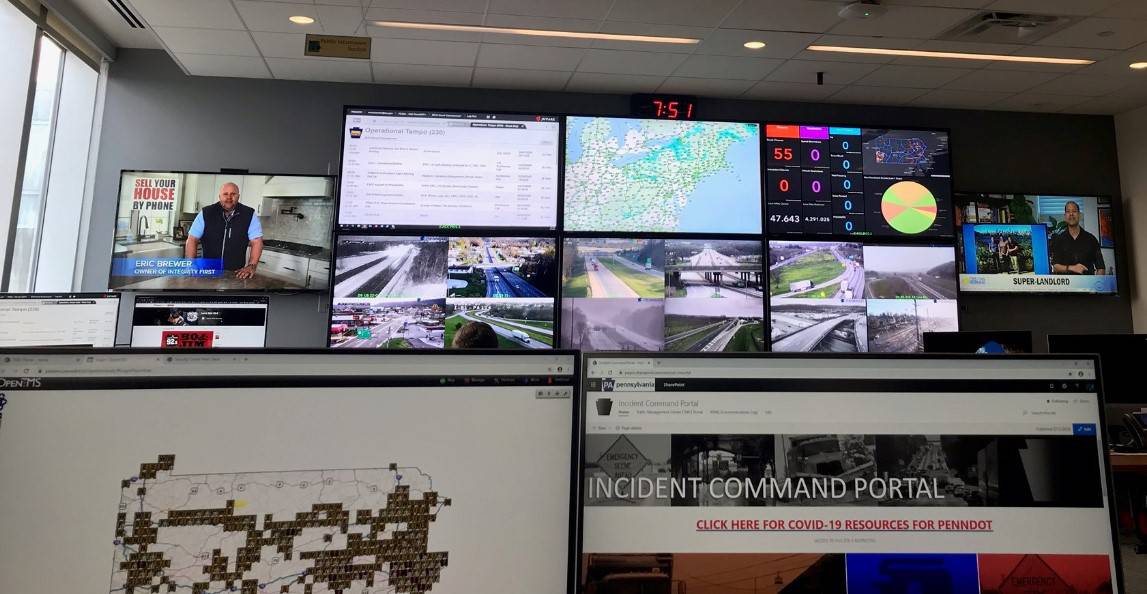
As part of our efforts to keep PennDOT moving forward and improve our operations as well as maximize our investments in research, we have used State Planning and Research Funds provided by FHWA to participate in Pooled Fund studies. We are involved with groups such as Aurora, which focuses on Road Weather Management and winter related ITS solutions and the Clear Roads Pooled Fund, which researches materials, equipment, and winter maintenance practices.
Through participation in these pooled funds, we not only get the tangible value of maximizing our research dollars by pooling those funds with other states, but the intangible and often invaluable networking with our peers and the sharing of experiences implementing programs and solutions.
Another benefit of participating in these groups is that we gain an important resource to call upon when we are trying to find a solution to an ongoing issue. We have been able to apply lessons that others have learned to our rollout of the statewide Road Weather Information System (RWIS) technology network, and we have also incorporated several training videos produced by Clear Roads into our winter maintenance training presentations.
A noteworthy topic in the PennDOT maintenance community and a common theme among other state DOT's is the utilization of RWIS as part of their maintenance operations. RWIS collects atmospheric and road surface data and allows maintenance managers and supervisors to have a better view of conditions during winter weather. The Bureau of Maintenance and Operations (BOMO) continues to research ways to use this data to measure the impact of winter weather and the outcomes of maintenance activities statewide. Some Districts and Counties have begun using this data to perform a detailed analyses of their county operations as well.
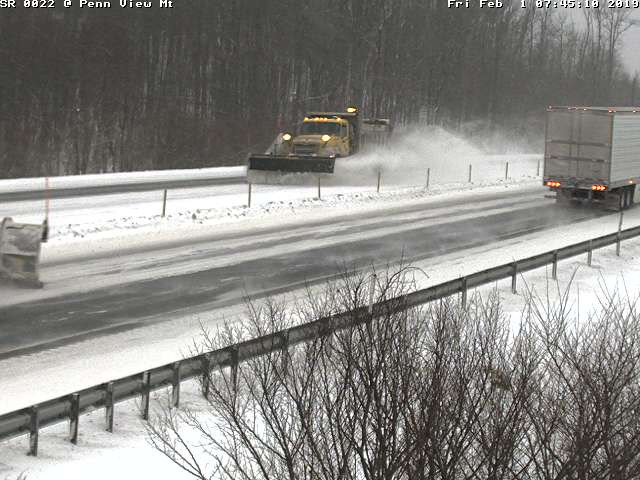
The Traffic Incident Management Handbook defines an incident as "any non-recurring event that causes a reduction of roadway capacity or an abnormal increase in demand." Under this definition, events such as traffic crashes, disabled vehicles, and spilled cargo are classified as an incident. When these incidents occur, it activates our emergency responders and maintenance personal to respond and assist at the scene of the incident. PennDOT personnel respond to assist in detouring traffic, lane closures, fixing the roadway, and other needs at the incident scene. When the incident is young, it is very dangerous as proper work zones are not yet established to help control oncoming vehicles. This is where TIM training comes into play. The TIM training provides knowledge and skills to the responders who go to the incident scenes, it teaches them how to park their vehicles to protect themselves as well as the victims in a traffic incident. TIM training also teaches emergency responders that do not typically work on the highways how to set up a proper emergency incident scene, so it is safe for the motoring public as well as the responders on the scene. PennDOT, in partnership with the PA Turnpike and PA State Police, also started a group to focus on the TIM program in Pennsylvania, this group was named PennTIME. The PennTIME group is focused on sharing the TIM training with all responders of the roadways and promote best practices among all entities involved. Through TIM trainings, we want to ensure that all our employees and first responders return home safe and uninjured. In 2020, PennDOT assisted with integrating TIM trainings in an online format where students may take the course online with any compatible device. This assisted in reaching out to first responders who may not be able to attend in-person courses.

The Winter of 2020/21 delivered multiple storms to Pennsylvania that required the implementation of vehicle restrictions and bans on our interstate systems. These bans and restrictions have helped to reduce the duration and impact of any interstate closures resulting from accidents during a storm. When opting to implement these bans, PennDOT, PSP, PTC, and PEMA coordinate together to implement and enforce them. We have held numerous meetings and phone conferences with PMTA and private industry about these bans and different approaches for this winter. With these meetings, a Tiered approach was established with bans implemented as follows:
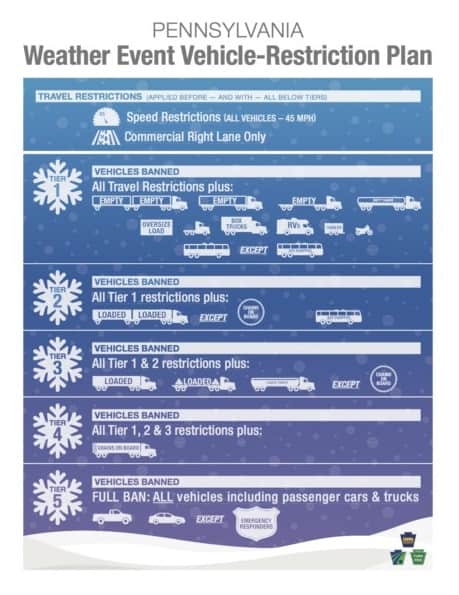

A new challenge yields new solutions
The COVID-19 virus introduced unprecedented challenges to our nation and the Commonwealth, including the local communities which we all serve. As per Governor Wolf’s orders beginning March 12, 2020, decisive mitigation actions were taken by the Commonwealth, the PA Department of Transportation (PennDOT) and the PA Turnpike Commission to slow the spread of the virus to protect citizens, employees, and business partners alike. In conjunction with the Governor’s order, PennDOT and the PA Turnpike Commission quickly placed construction projects on hold, first regionally and then statewide, to minimize exposure for agency and private-sector employees, and residents of the communities where they live and work.
A week later, on March 19, 2020, Governor Wolf ordered businesses that were not critical to sustaining life in a pandemic to cease physical operations. Life-sustaining businesses were allowed to continue in-person, physical operations. Utility activities related to Electric Power Generation, Transmission, and Distribution; Natural Gas Distribution; and, Water, Sewage and Other Systems were allowed to continue, including permit work within PennDOT ROW. However, Department field inspection staff were not approved to inspect these activities onsite. Additionally, due to the closure of district offices, it was not possible to accept and process Annual Hauling Permit applications and payments for walk-in customers. PennDOT’s Sign Shop, which manufactures approximately 70,000 signs each year for the counties, was also forced to close due to these COVID 19 orders. Because this work cannot be completed in a telework environment, staff were forced to use leave during the temporary closure period.
In the days immediately following the temporary suspension of 852 statewide construction projects, at the direction of then acting PennDOT Secretary and PA Turnpike Chair Yassmin Gramian, P.E., PennDOT, the PA Turnpike Commission, and the PA Division Office of the Federal Highway Administration (FHWA) began an effort to work with our industry partners on solutions for restarting construction projects with a focus of avoiding the spread of COVID-19. A team including representatives from PennDOT, the PA Turnpike Commission, the PA Division Office of FHWA, the Associated Pennsylvania Constructors (APC), and the Pennsylvania Chapter of the American Council of Engineering Companies (ACEC/PA) worked collectively and diligently to develop COVID-19 guidance to restart highway construction.
Within just two weeks following the initiation of the restart effort, on March 30, 2020, the team issued the first edition of a comprehensive 31-page document entitled COVID-19: Guidance for Restarting Construction Projects. This document provides guidance for use by PennDOT and the PA Turnpike Commission in restarting construction projects that were temporarily suspended in response to COVID-19 mitigation.
The document provides guidance as follows:
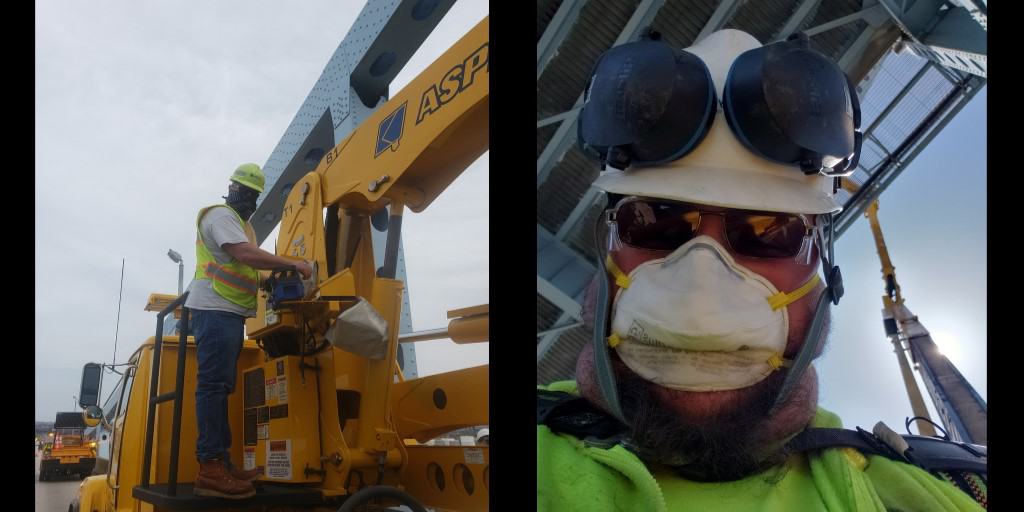
The restart process for the 852 projects involved three phases. The status of each phase is as follows:
Phase 0: This phase involved restarting 175 projects that met strict criteria as Emergency or Critical. These projects address specific safety need criteria, such as landslide repairs, or critical bridge, tunnel and drainage repairs, and work needed to eliminate roadway restrictions that could impede the ability for the movement of life sustaining goods and services. Projects in this phase were restarted on three separate dates:
Phase 1: All remaining projects, except for 19 projects that were designated for Phase 2, were restarted effective May 1, 2020, in accordance with the Governor’s April 23, 2020 Construction Guidance.
Phase 2: Restart of the remaining 19 projects was completed by June 5, 2020
A second edition of the COVID-19: Guidance for Restarting Construction Projects document was issued on April 24, 2020. This edition provides updates to address the Governor’s April 23, 2020 Construction Guidance as well as other general edits.
Five (5) additional updates were also required over the subsequent months and were issued via a supplement and four (4) additional revisions to the supplement that addressed the following:
To allow the permitted utility work to continue, the Department established a process for daily “Virtual Inspection.” Through this process, contractors compiled and submitted electronic documentation in place of onsite inspection, including photos of work performed, daily logs of work activities, material certifications, test results, and other pertinent information that documented proper restoration of the highway. This allowed us to limit the exposure of our permit inspection staff while maintaining oversight and accountability for utility work in our ROW.
As a result of the closure of district offices, the Department provided 45 day time extensions beyond annual hauling permits’ original expiration dates. The District Offices also installed drop boxes for walk in customers to leave applications and checks for collection and processing by Permit Office staff.
Restarting onsite Sign Shop operations was important to ensure public safety through proper sign maintenance and replacement schedules. As a result, BOMO developed a plan including detailed procedures that allowed the Sign Shop to resume onsite operations while ensuring social distancing and the safety of all personnel. The first goal in restarting Sign Shop operations was to protect our customers, employees, and their families. The second goal was to complete signing for maintenance activities and emergency-related work. The procedures included general COVID-19 Safety Guidelines, Office Practices, Building Access, Cleaning Procedures, Self-Monitoring/Hygiene, Social Distancing, Managing Sick Employees, and External Customers. The Sign Shop resumed operations on Monday May 4, 2020.
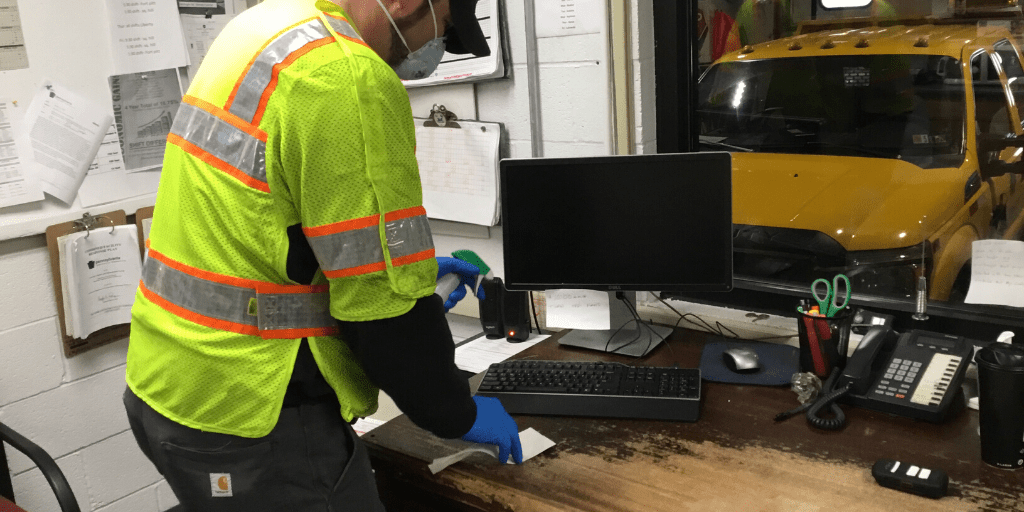
We will continue monitoring and evaluating new/updated COVID-19 orders/guidance issued by the Governor and the Secretary of Health to provide additional supplements and/or revisions to COVID-19: Guidance for Restarting Construction Projects as required.
Select a PennDOT district to view a specific report.
Click on charts to expand.
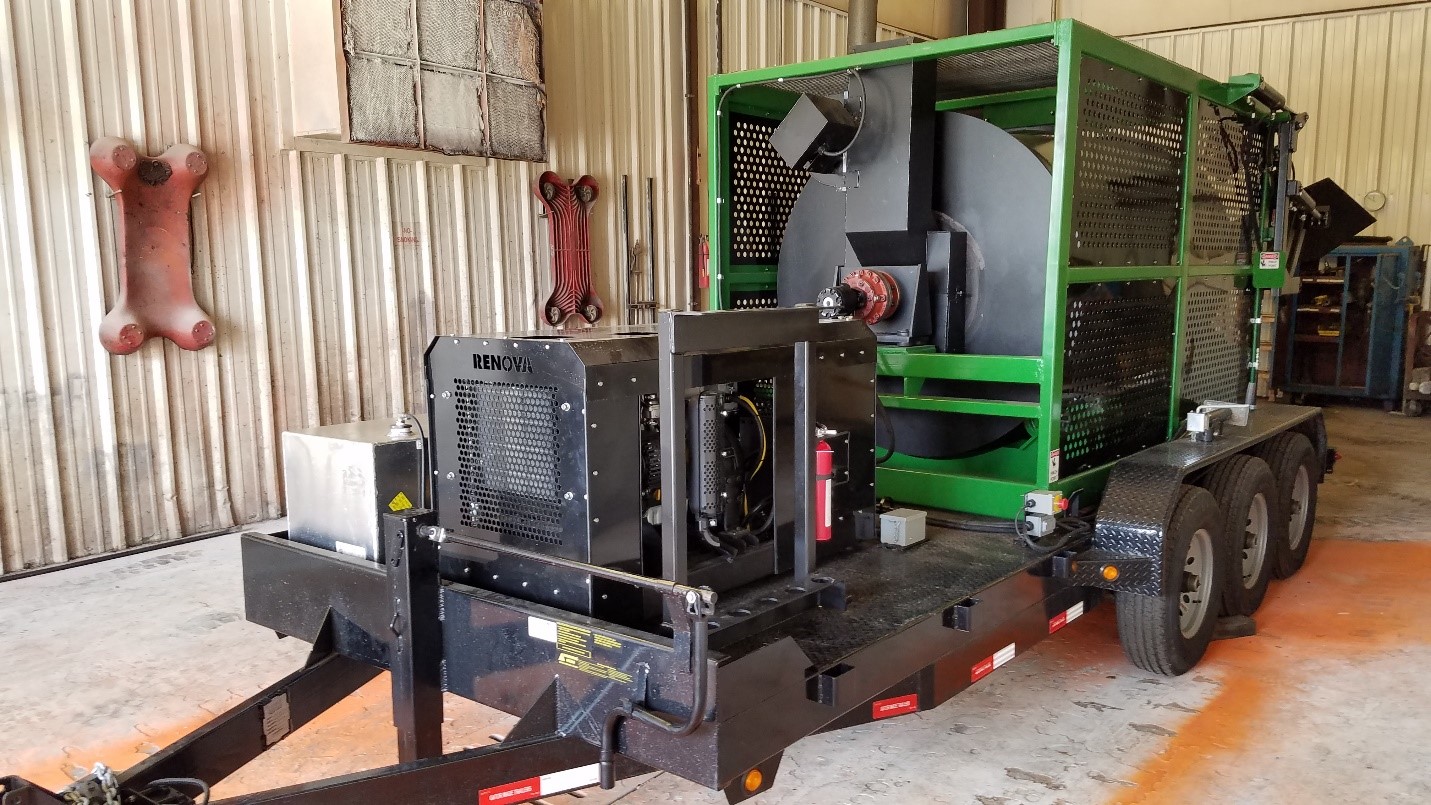
Warren County identified an opportunity to improve repairs due to potholes, which typically involved cold-patching during the winter season as a temporary solution, by employing the Renova 4000 asphalt recycler, an American-made, heavy-duty mobile asphalt pavement recycler that converts asphalt pavement as large chunks or ground millings into asphalt plant-quality hot mix with high-level elasticity, resilience, adhesion, and compactability. Warren County repairs around 150-200 potholes per day, including rework from cold patching dislodge from daily traffic, plowing, and freeze-thaw cycles, which causes lost production on other important roadway projects. Repairs made using the Renova 4000 typically do not require rework as with typical cold patching. This equipment can produce at least 8 tons of material in a 7.5-hour shift with a cycle time of 75 minutes from startup to completion. Annual savings are estimated to be $150,000 in material costs and over 2,800 man-hours (roughly $1.2M) with a production increase of 167% for pothole repair, versus about $300,000 for typical cold patching. District 1 was awarded $16,000 from the Productivity Improvement Fund (PIF) to fund renting the Renova 4000 for use in Warren and Forest counties.
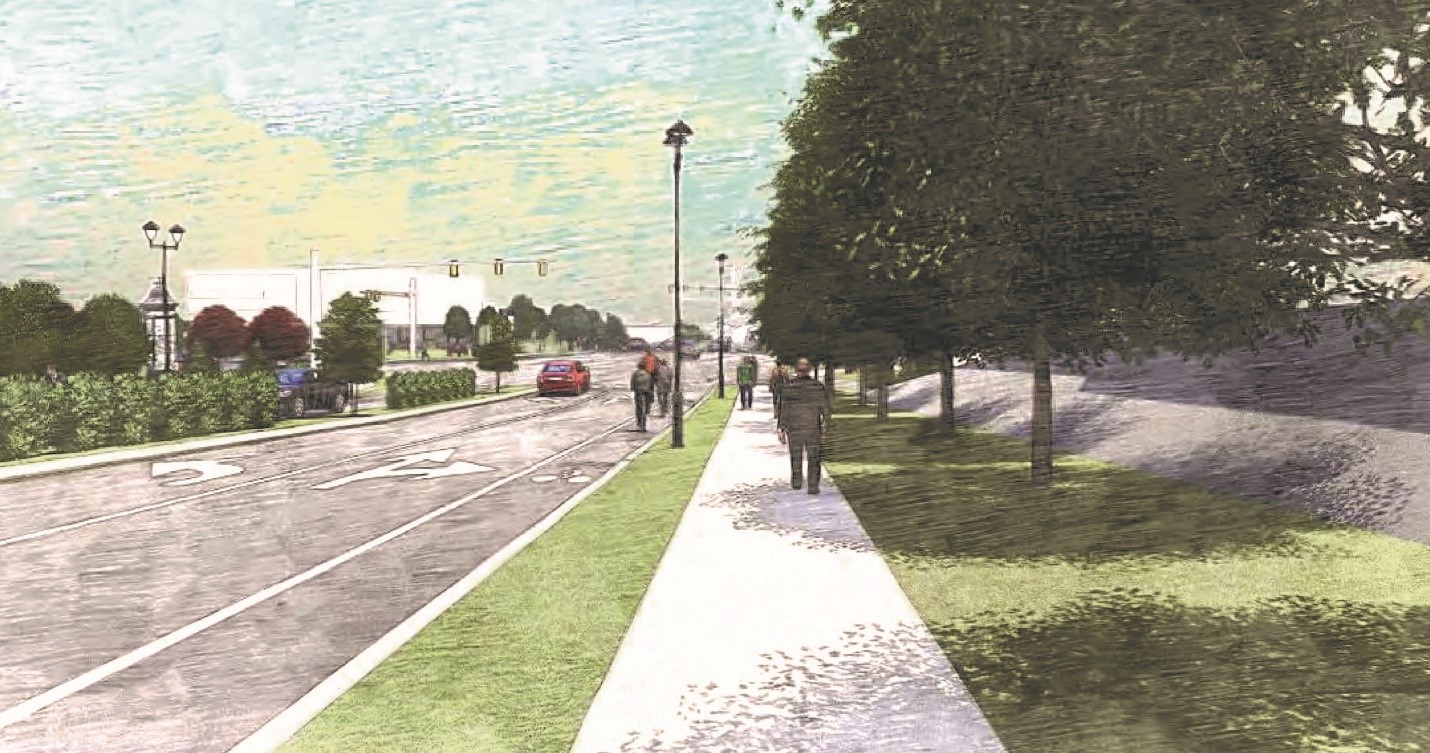
The Bayfront Parkway Central Corridor Project is designed to improve the pedestrian, bicycle, transit, and passenger vehicle connections between the Erie Central Business District and adjacent neighborhoods to the waterfront property north of the Bayfront Parkway, to reduce crashes on the parkway as much as practical, to decrease future congestion to an acceptable level of service or delay, and to increase traffic operations and efficiency. The design process has included several years of public outreach and continued partnership with area stakeholders. The selected alternatives for improvements along the Bayfront Parkway (Route 4034) includes dual-lane roundabouts at Sassafras Street Extension and Holland Street; grade separate intersection at State Street, including a traditional signalized at-grade intersection and a path for through traffic on the Bayfront to travel below the intersection; sidewalk and crosswalk upgrades throughout the length of the project; a multi-use trail connecting the existing trail network, downtown, and the waterfront; and overhead pedestrian bridges at each intersection. Ancillary projects near the work area will be completed in 2021 and 2022 with the Bayfront project itself expected to get underway in 2022.

In early 2020, an idea for a Boy Scouts of America (BSA) merit badge program was proposed to teach and garner interest in engineering and traffic safety topics. The program was initially pitched as a recruitment effort and formulated through the personal experiences of some of its originators who participated in similar scouting programs as Scouts or Boy Scout leadership. With the support of the District’s Executive Staff, several members of the district’s Civil Engineer Council volunteered to participate, some of whom had spent time in the Scouting program. With the transition to virtual group settings, the volunteer team adapted the program to a virtual setting while maintaining the necessary curriculum and quality of in-person activities.
The program involved PennDOT engineers explaining engineering concepts to the Scouts in an engaging and interactive virtual setting. Topics included, but were not limited to basic engineering fundamentals, various fields of engineering, developing processes, drawing and design, engineering ethics, roadway elements, driver and traffic safety factors and career opportunities. Two sessions were conducted in 2020 and were met with overwhelming interest and positive feedback from participants and volunteers, and future sessions are set to be planned for 2021.
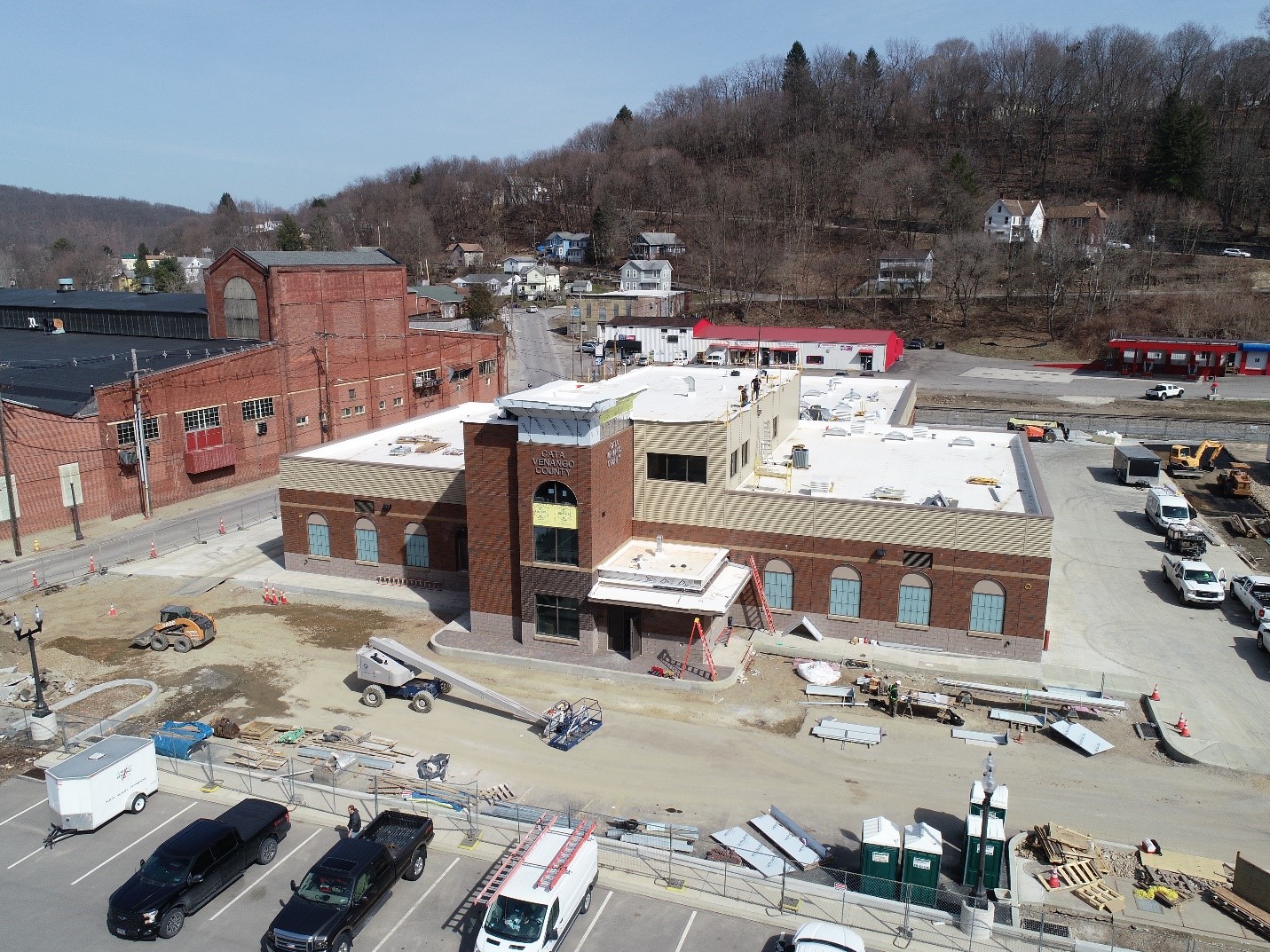
PennDOT, Venango County, and the Crawford Area Transportation Authority (CATA) collaborated on a project to build the Venango County Multimodal Transit Facility. The $10 million, 25,000-square-foot facility was constructed on the former PennDOT District 1 parking lot along Elm and Duncomb streets in Oil City. It features administrative offices and vehicle maintenance, storage and wash facilities for Venango County’s public transit system, as well as space for PennDOT’s fleet maintenance operations. Preliminary work on the project started in 2017 with the demolition of the closed Oil City parking garage. Construction on the building will be completed in spring 2021.
The collaborative effort between the Allegheny Forest Health Collaborative (AFHC) and PennDOT maintenance units in Warren and Forest counties improved the process for trimming trees along Route 62 to increase driver safety and pavement lifecycle.
Traditional daylighting projects work within 25 feet of the roadway centerline. This project extended the daylighting to 40 feet and hazard tree removal to 100 feet from the centerline within Allegheny National Forest lands. Prior to the project, motorists were surrounded by a tunnel of trees, many of which were diseased and dying. Today, motorists can see the sunshine and beauty the river corridor offers.

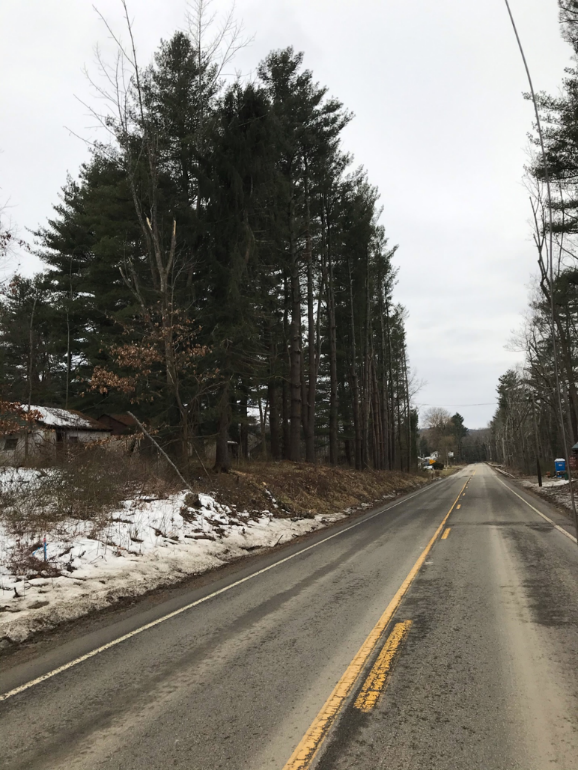
The $66.1 million Interstate 90 project, which is considered phases 2 and 3 of a long-term reconstruction plan, includes the 6.85-mile section beginning near mile marker 3.5 and extending east to near mile marker 10.5, located in Springfield Township, Girard Township, and Platea Borough. Work will also include replacement or rehabilitation of five bridges and the construction of two teardrop roundabouts at the Route 18 interchange in Erie County. Work is expected to take three construction seasons to complete. Information on the project and other work scheduled along I-90 is available online at www.penndot.gov/I90Projects.
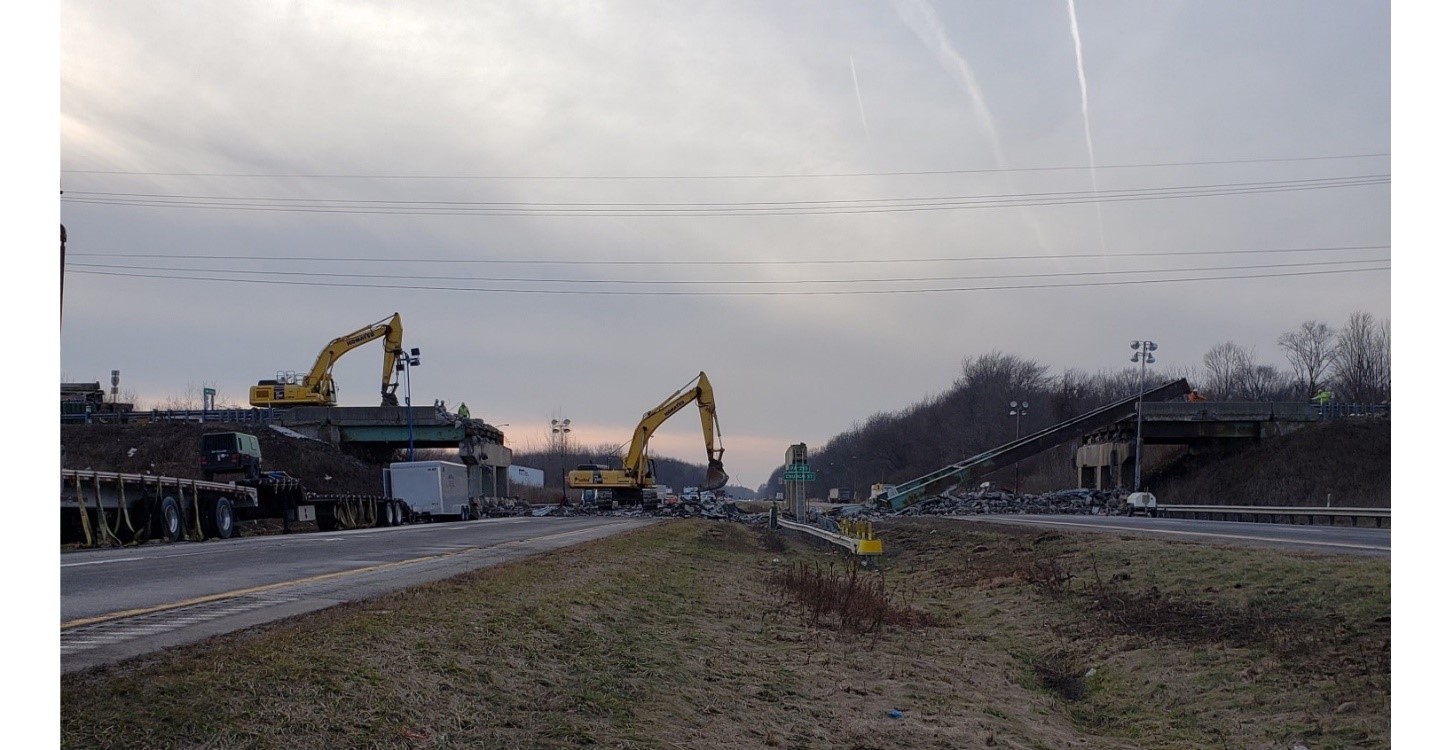
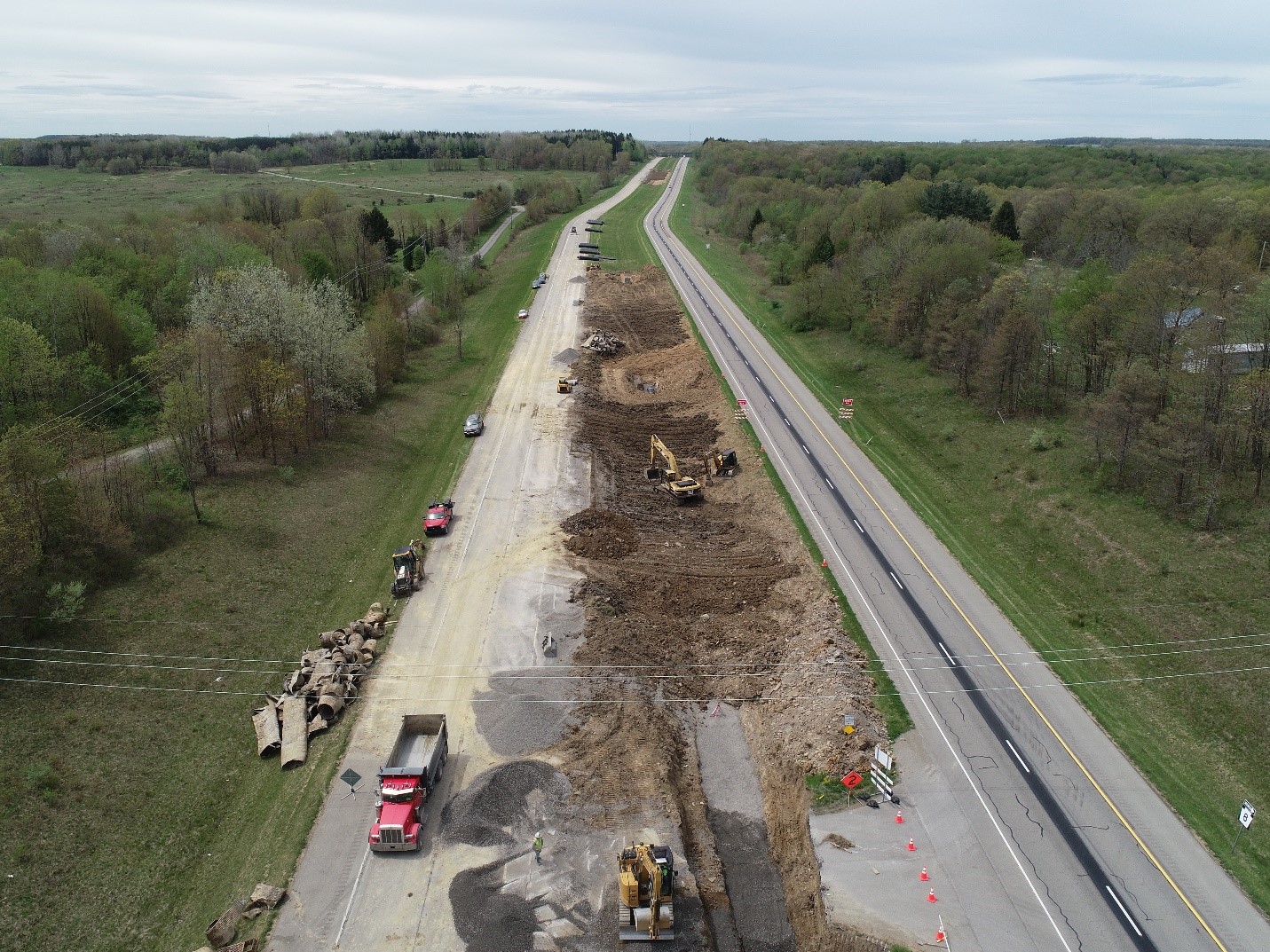
A $32.6 million project to repair and reconstruct nearly 10 miles of Route 8 from Georgetown Road (Route 3004) in Irwin Township to Polk Cutoff Road (Route 3024) in Sandycreek Township in Venango County is in its second year. The roadway is a major artery for drivers from Venango County wishing to access Interstate 80. The two-year project includes breaking the existing concrete to create a base for new asphalt pavement, paving, several bridge rehabilitations, drainage upgrades, guiderail replacements, and sign updates. Work in 2020 concentrated on the northbound lanes. The 2021 project schedule focuses on the southbound lanes.
District 1 continues to provide a superior level of service to Northwestern Pennsylvania’s motoring public by maintaining paved surfaces and bridge structures to a higher standard. Nearly 70% of roads by segment mile are measured as ‘Excellent’ or ‘Good’ International Roughness Index (IRI) and Overall Pavement Index (OPI), with only about 10% measuring in the ‘Poor’ category.
| Network | Excellent | Good | Fair | Poor |
|---|---|---|---|---|
| Interstate | 86% | 12% | 1% | 0% |
| NHS Non-Interstate | 37% | 42% | 14% | 7% |
| Non-NHS, ADT>=2000 | 64% | 28% | 5% | 3% |
| Non-NHS, ADT<2000 | 25% | 28% | 29% | 18% |
| Grand Total | 39% | 28% | 20% | 12% |
| Excellent | Good | Fair | Poor |
|---|---|---|---|
| 47% | 46% | 7% | 0% |
| 11% | 53% | 18% | 18% |
| 30% |
38% | 24% | 7% |
| 21% |
48% | 23% | 8% |
| 24% | 46% | 21% | 8% |
Nearly 40% of all bridge structures in District 1 are rated ‘Good’ with less than 10% of bridges in each county, 6% districtwide, rated in ‘Poor’ condition.
| County | Good | Fair | Poor |
|---|---|---|---|
| Crawford | 41% | 51% | 9% |
| Erie | 36% | 59% | 5% |
| Forest | 38% | 58% | 4% |
| Mercer<2000 | 36% | 58% | 5% |
| Venango | 39% | 55% | 6% |
| Warren | 41% | 52% | 7% |
| Grand Total | 38% | 55% | 6% |
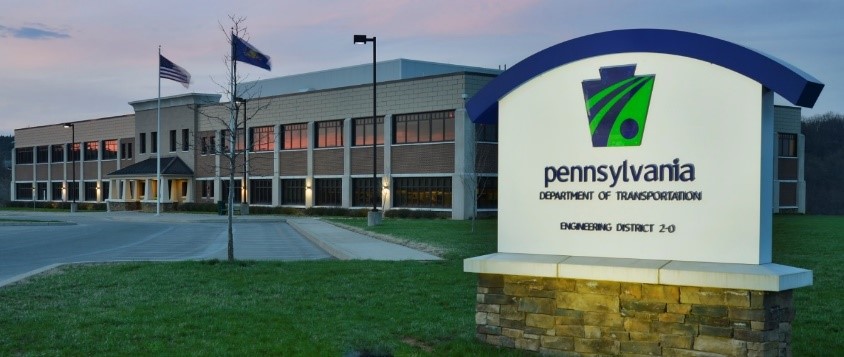
Improved Brine Usage - Salt brine is an efficient and effective winter operations tool across District 2-0. Increasing salt brine usage has been one of our focus areas for several years. Our first step was to enhance education efforts with our operators and foreman. To further increase our success, we identified our brine needs by stockpile in each county so we could adjust our production and storage to meet that need.
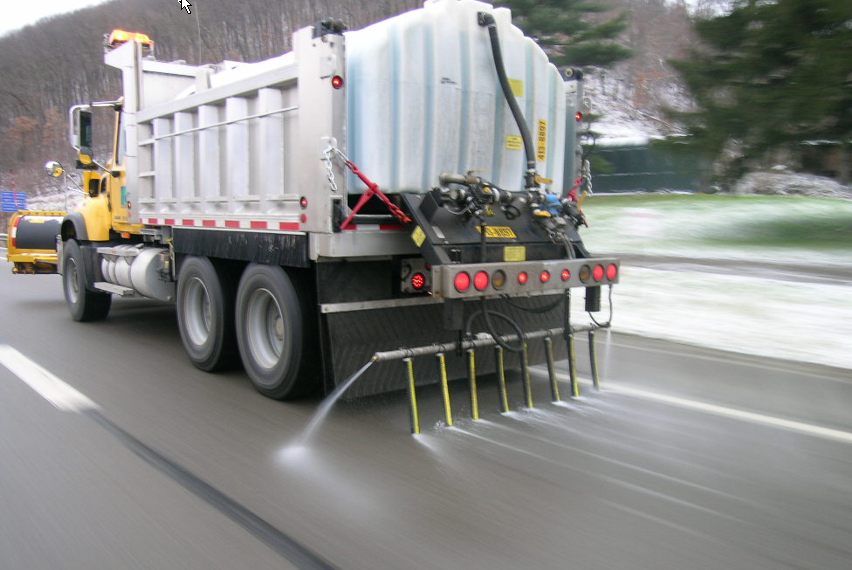
Over the past year, we have increased our District storage capacity to 378,200 gallons by upgrading two brine shops in Mifflin and Juniata Counties and constructing a new facility in Elk County. We are also installing additional storage tanks at four stockpiles across the District this year.
Transportation of the brine from the manufacture site to the storage site is also a critical element this process. In addition to utilizing traditional anti-ice / water trucks, District 2-0 retrofits tag trailers with anti-icing units and adapts the mounting of zero velocity spreaders to pull trailers. This initiative has proven to be cost-effective, adds usage to our trailers, and does not affect our truck fleet.
With our education efforts and technology gains since the 2017/18 winter, we have seen improved continuous gains. As you can see in the bar graph (See Brine Graph), District 2-0 increased brine usage by 24.27% and decreased solid material use by 36.24% from 2018-19. We also exceeded our 2019/20 target of 12 gallons/ton and set a goal of applying 15 gallons of brine per ton of salt for the 2020/21 Winter Season.
Cyclic Maintenance with GANNT Chart
One of District 2-0’s current top County Accreditation initiatives is implementing sectional cycle maintenance to include Gannt chart scheduling.
Each of the nine counties in District 2-0 had previously established six maintenance sections for the core cyclical maintenance activities. During the 2020 Summer Season, our counties implemented using a Gannt chart to schedule both Department Force projects and the necessary equipment, to the Foreman level.
Scheduling has provided crews advance knowledge of projects and, subsequently, decreased logistic concerns. Each county structured their crews to be specific to core activity needs and identified the equipment required to perform each cyclic activity. By defining who and what was needed to complete an activity, we identified inefficiencies and reallocated excess capacity in both personnel and equipment.
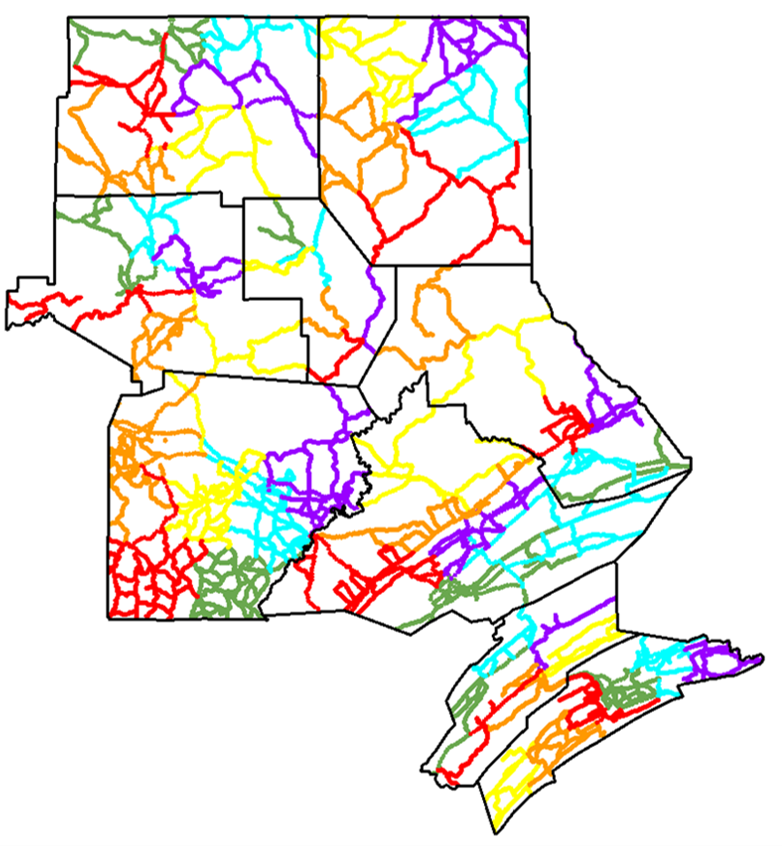
The increased focus on planning and scheduling has improved our equipment sharing capabilities. Historically, District 2-0 has been very good at sharing large pieces of equipment such as chippers, graders, and large excavators. By utilizing Gannt charts, we are now able to address our smaller equipment needs, such as skid steers, 5-ton rollers, and hotboxes. We are also in conversations with adjoining Districts to expand equipment sharing opportunities.
While COVID-19 disrupted our initial summer plans, our staff saw first-hand that Gannt charts are dynamic and can be modified to adapt to any situation. Many counties have experienced, and staff have expressed, the benefits of using both tools.
Improved SEMP Reporting – As part of the District 2-0 Environmental Unit reorganization, SEMP related activities transitioned from the Maintenance Operations Section to the Environmental Unit where Audit Reports were identified as an area for improvement.
SEMP Audit Reports were redesigned to be similar to the Bridge Inspection Reports. Deficiencies have been categorized and clearly defined and a time frame has been established for corrective action by deficiency type. You can view a sample data sheet here. Additionally, a Summary of Findings was added as a report cover so the reader could easily assess important facility and categorical information. The body of the report details the audit criteria and regulatory standards as well as documents the specific findings at each facility. Finally, Internal Compliance Checklists are included as an appendix.
The new format of District 2-0’s SEMP Reports have improved communication between the responsible District and County Staff. The updated presentation has increased the efficiency of corrective action and provided an education process that has resulted in fewer and less severe deficiencies.
The 2020 State of Pavement Smoothness Report indicates that District 2-0's median IRI values continue to be lower than the Statewide median value for each business planning network. Further, not only is our overall IRI value on all routes lower than the Statewide value, it is the lowest IRI value in the State.
| County Name | ORG | Interstate | NHS Non-Interstate | Entire NHS | Non-NHS Routes w/ADT>2000 | Non-NHS Routes w/ADT‹2000 | All Routes |
|---|---|---|---|---|---|---|---|
| Centre | 2-1 | 65 | 77 | 74 | 84 | 152 | 96 |
| Clearfield | 2-2 | 53 | 97 | 77 | 90 | 138 | 114 |
| Clinton | 2-3 | 39 | 74 | 50 | 82 | 124 | 105 |
| Cameron | 2-4 | - | - | - | 89 | 148 | 139 |
| McKean | 2-5 | - | 74 | 74 | 103 | 110 | 99 |
| Potter | 2-6 | - | 95 | 95 | 104 | 161 | 141 |
| Mifflin | 2-7 | - | 79 | 79 | 88 | 150 | 114 |
| Elk | 2-8 | - | 89 | 89 | 86 | 161 | 123 |
| Juniata | 2-9 | - | 60 | 60 | 72 | 164 | 134 |
| District 2-0 | 53 | 82 | 75 | 87 | 143 | 112 | |
| Statewide | 63 | 99 | 88 | 120 | 182 | 140 |
Utilizing appropriate pavement preservation and rehabilitation techniques in conjunction with the with performing core maintenance activities has proven effective in maintaining excellent median IRI values. Also, it is critical to the District 2-0 programming process that staff perform visual inspections when evaluating IRI, OPI, and out-of-cycle pavement data.
Over the past several years, District 2-0’s Asset Management Plan was developed to aggressively address Poor bridges. Currently 3.3% of our bridges are rated Poor, based on Deck Area.
Our proactive Bridge Preservation Program is one of the tools we rely on as we continue to address our bridge condition needs. With the cooperation of our Planning Partners, we have been able to dedicate 10% of our bridge-related Transportation Improvement Plans (TIP’s) funding to bridge preservation efforts. Performing bridge preservation activities extends the service life of our structures and addresses specific structural deficiencies.
The District 2-0 Maintenance Box Culvert program has also been an important means of improving the District’s overall bridge condition. In 2020, our County Maintenance staff lead the installation efforts of 8 box culverts, 7 of which had an overall rating of Poor. The District is confident that with our Bridge Preservation and Maintenance Box Culvert Programs we can continue to exceed the targets set for the District.
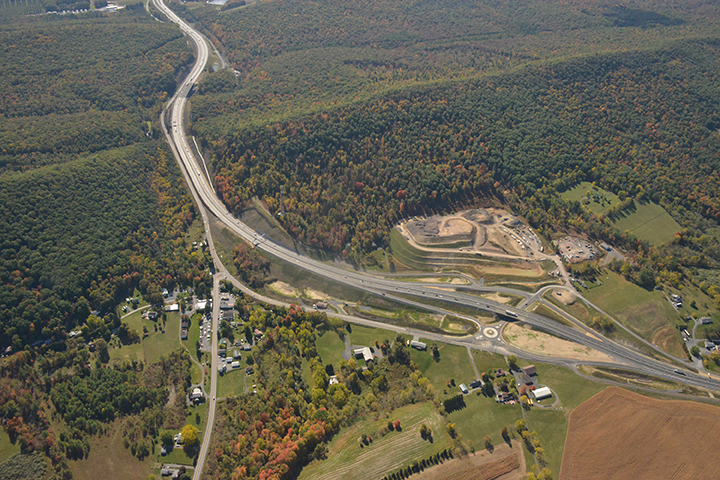
District 2-0 was pleased to hold the ribbon cutting for the new Route 322 Potters Mills Gap Project in November 2020. The completion of this 4-lane roadway on the new alignment will reduce congestion through the area and allow traffic to move more efficiently and safely from the Mifflin/Centre County line to west of Potters Mills. This has been an extremely challenging 3-phase project with construction spanning over seven years. Work this summer to rehabilitate former State Route 322 will complete the $108 million project.
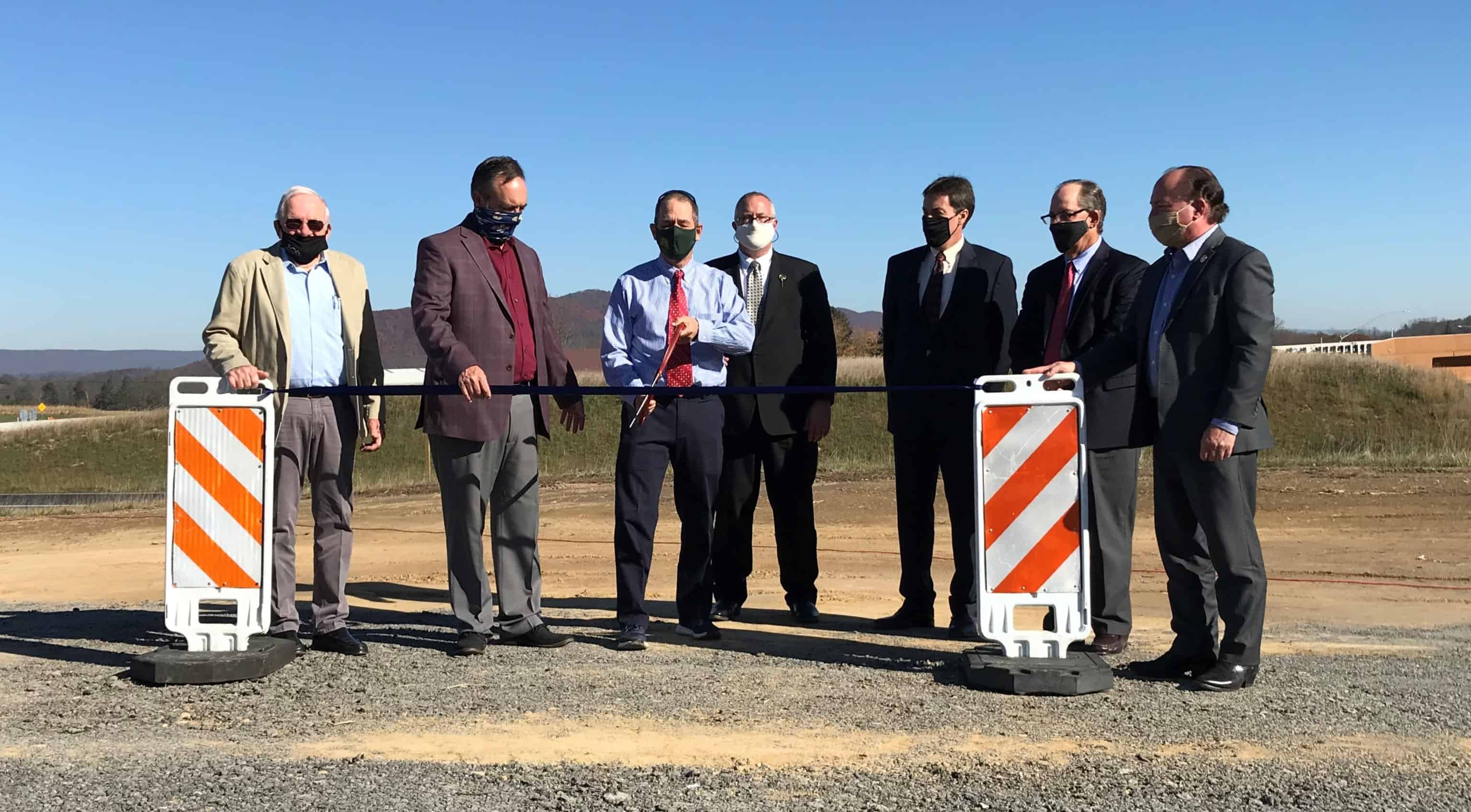
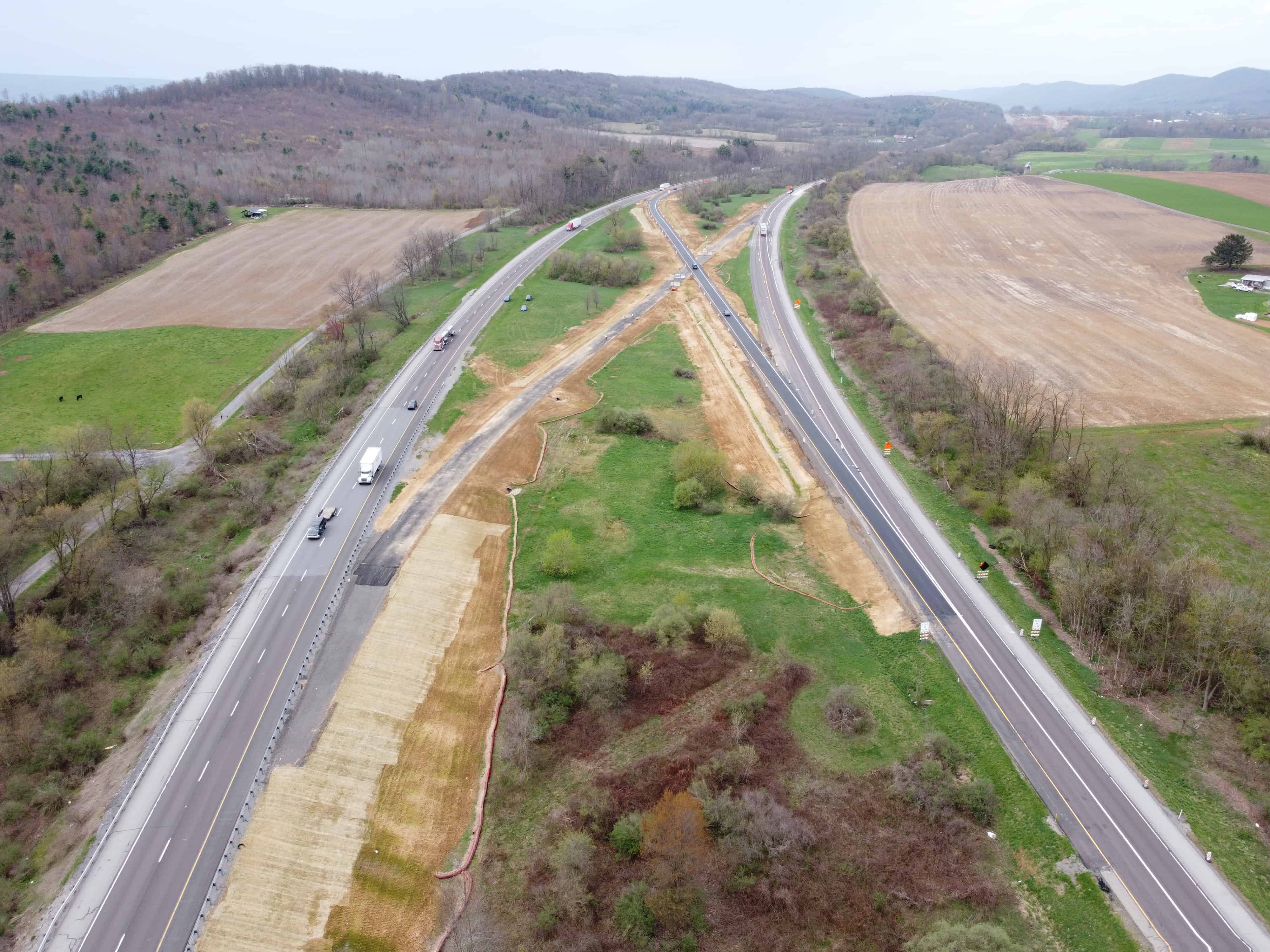
This is the first phase of the long-awaited Highspeed Interchange Project in Centre County connecting I-99 to I-80. This phase involves the construction of a local interchange that will provide access to I-80 from State Route 26, Jacksonville Road. This $52 million project was bid in April 2020 and is expected to be open to traffic in 2022. The project includes a modern diamond interchange with a 4-span structure that crosses over I-80. Also included is 2000’ of new roadway connecting Jacksonville Road and the new interchange along with 3 miles of full-depth reconstruction of I-80.
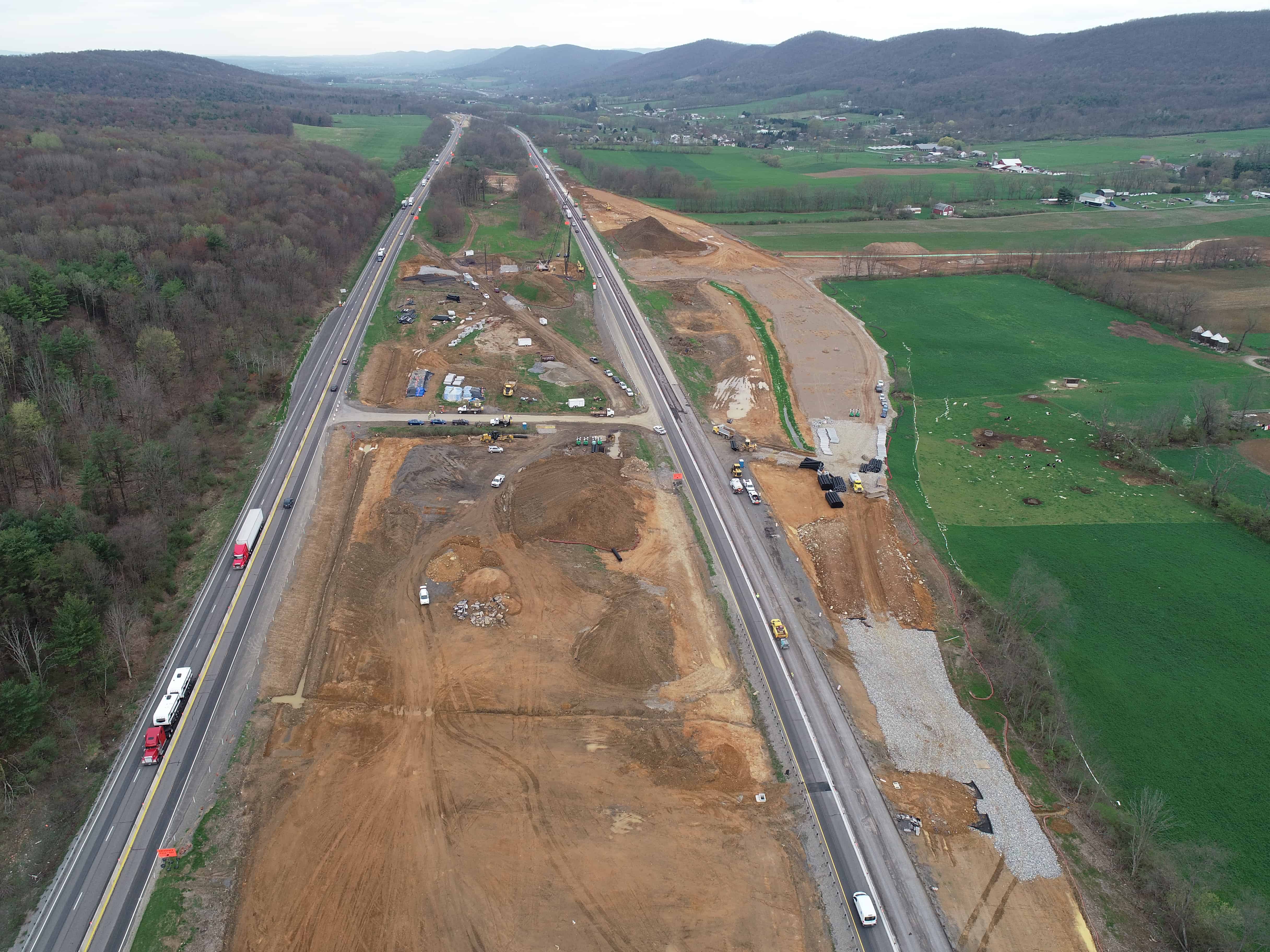
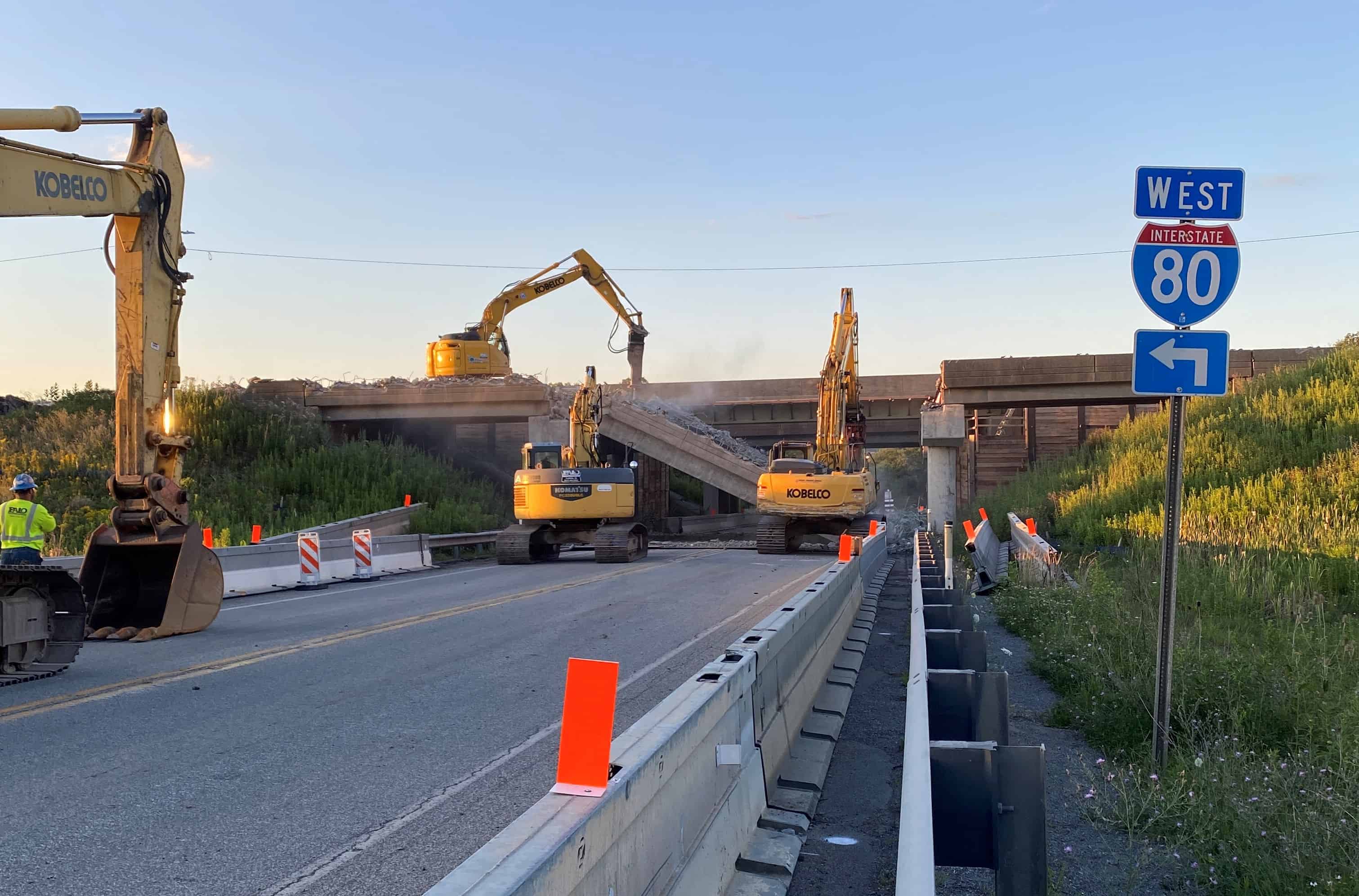
The $17.9 million Woodland Interchange Reconstruction Project at MM 123 on I-80 was bid in January 2020 and work will be completed by the end of 2021. The project will improve an older diamond interchange by replacing the structures to provide the proper vertical clearance, extending the ramps to meet current acceleration and deceleration criteria, providing turning lanes on State Route 970 with the appropriate storage lengths and correct a serious drainage issue along State Route 970. A temporary bridge established in the median has allowed the project to be constructed while still maintaining two lanes of traffic in each direction.
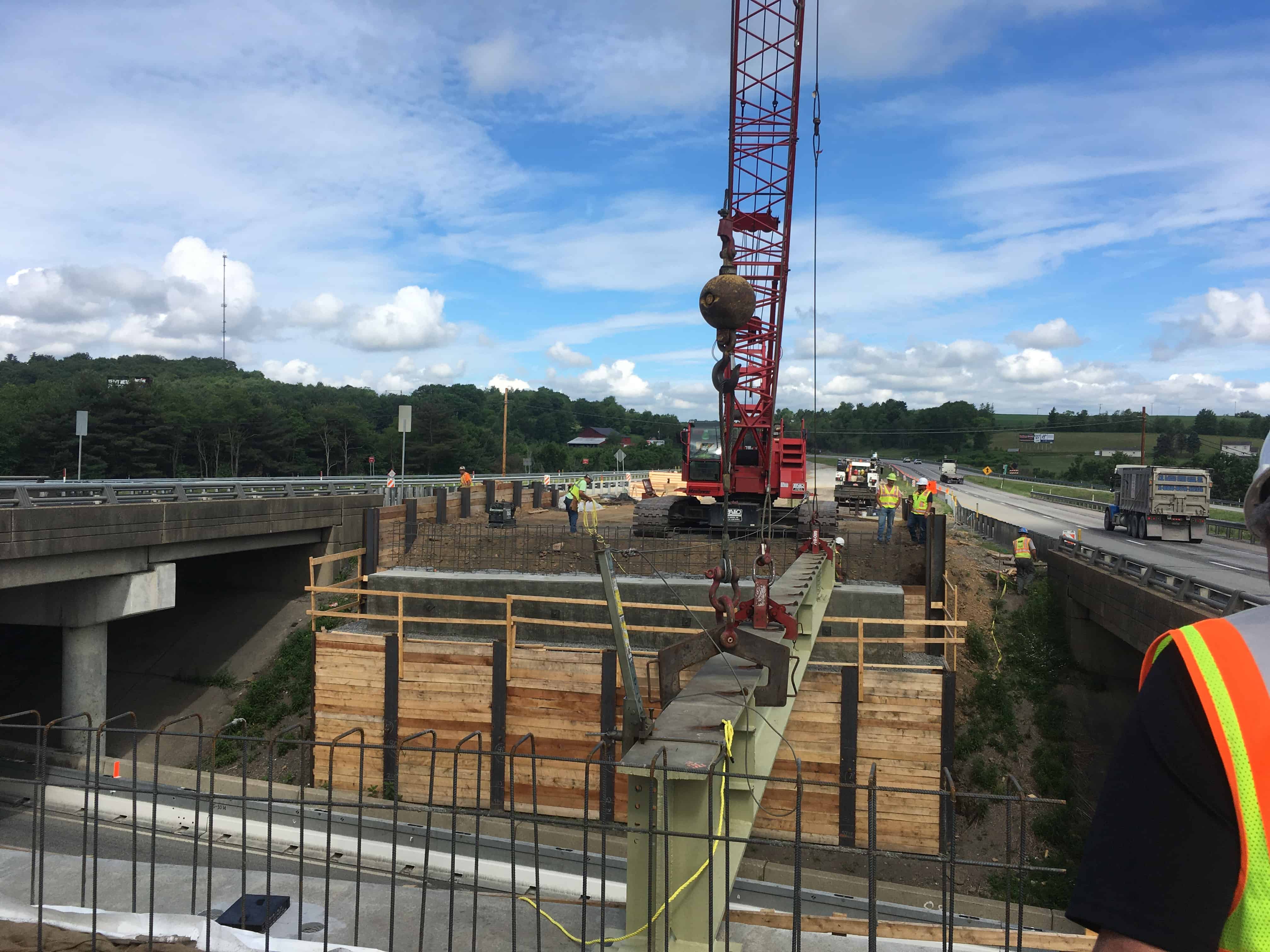
The District 3 Cyclical Sectional Maintenance 6-Year Plan (6YP) was created in calendar year 2020 in preparation for work to begin on the first section in 2021. Each of the nine counties was divided into six sections and maintenance programmed such that High-Level (HL) Treatment Networks are addressed on a 3-year cycle and Low-Level Treatment Networks on a 6-year cycle. This methodology ensures the correct treatment type, seal coat, micro-surfacing or crack sealing, is applied at the right time, out-of-cycle projects are efficiently incorporated into the rotation, and core maintenance activities, such as shoulder cutting, side dozing, pipe flushing, and tail ditching are effectively addressed in the process.
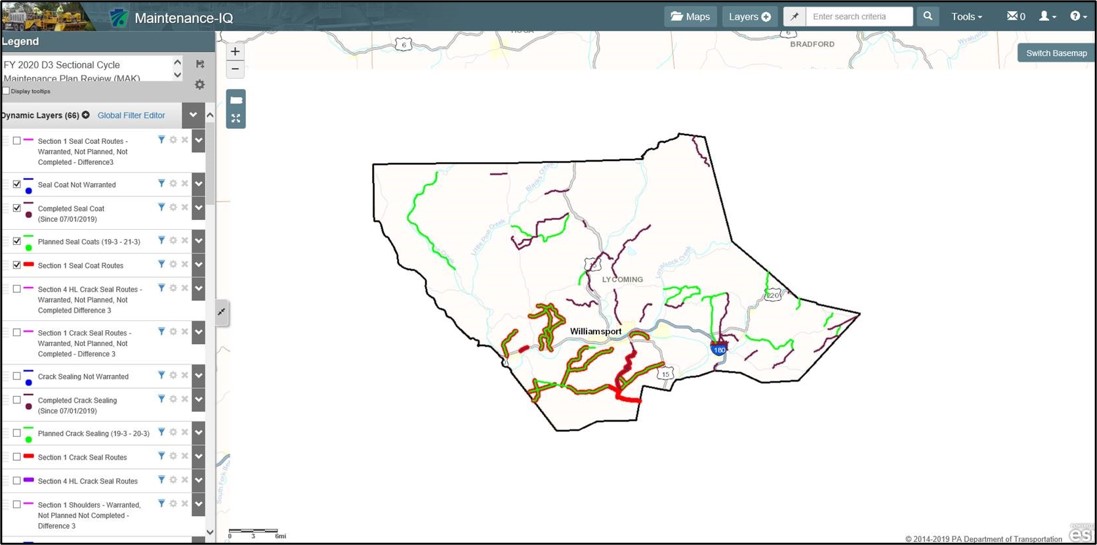
The Department’s Maintenance IQ application has been extremely beneficial assisting county staff develop and assess their 6YP. District Maintenance IQ Power User, Melissa Kiessling, created Sectional Cycle Maintenance Plan Review maps that identify cyclical needs in ‘Required’, ‘Planned’, ‘Completed’ or ‘Not Warranted’ color coded categories providing a visual presentation of the plan. Using the county’s roadway inventory data as a basis for the maps ensures all roadway notifications have been entered and any gaps or overlapping projects are clearly identified.
By July 1, 2021 each county manager will have confirmed all core maintenance activities have been planned for all six sections. Maintenance IQ will continue to be used to document completion of the core maintenance items as planned.
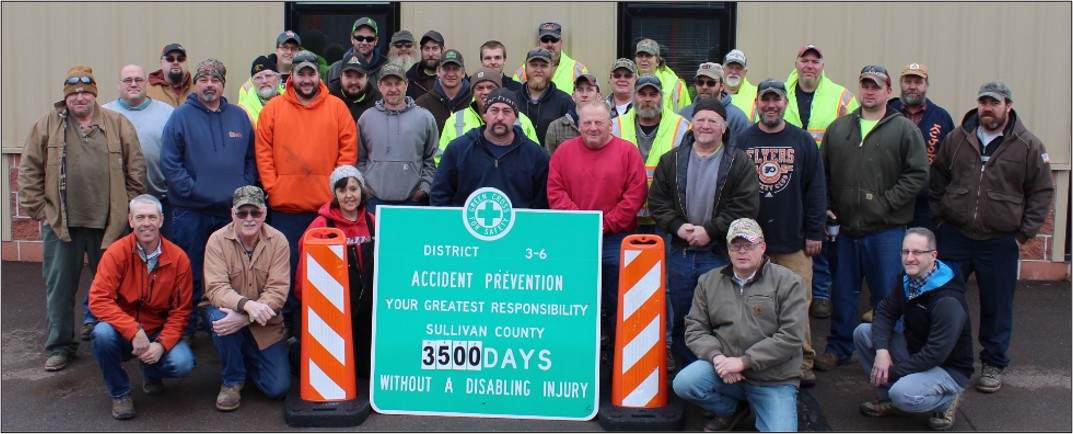

The Route 147-110/11-113, Northumberland Reconstruction Project, was a $13.7 million project started in 2017 and completed in 2020. This project aimed to improve safety and congestion on Routes 11 and 147 within Northumberland Borough. Two intersections were widened, pedestrian crossings improved through busy intersections and modern signals installed for greater safety. The pavement was reconstructed with concrete in some areas and in other areas asphalt paving, including stone matrix asphalt (SMA) - a gap-graded hot mix asphalt providing maximum durability and rut-resistance.
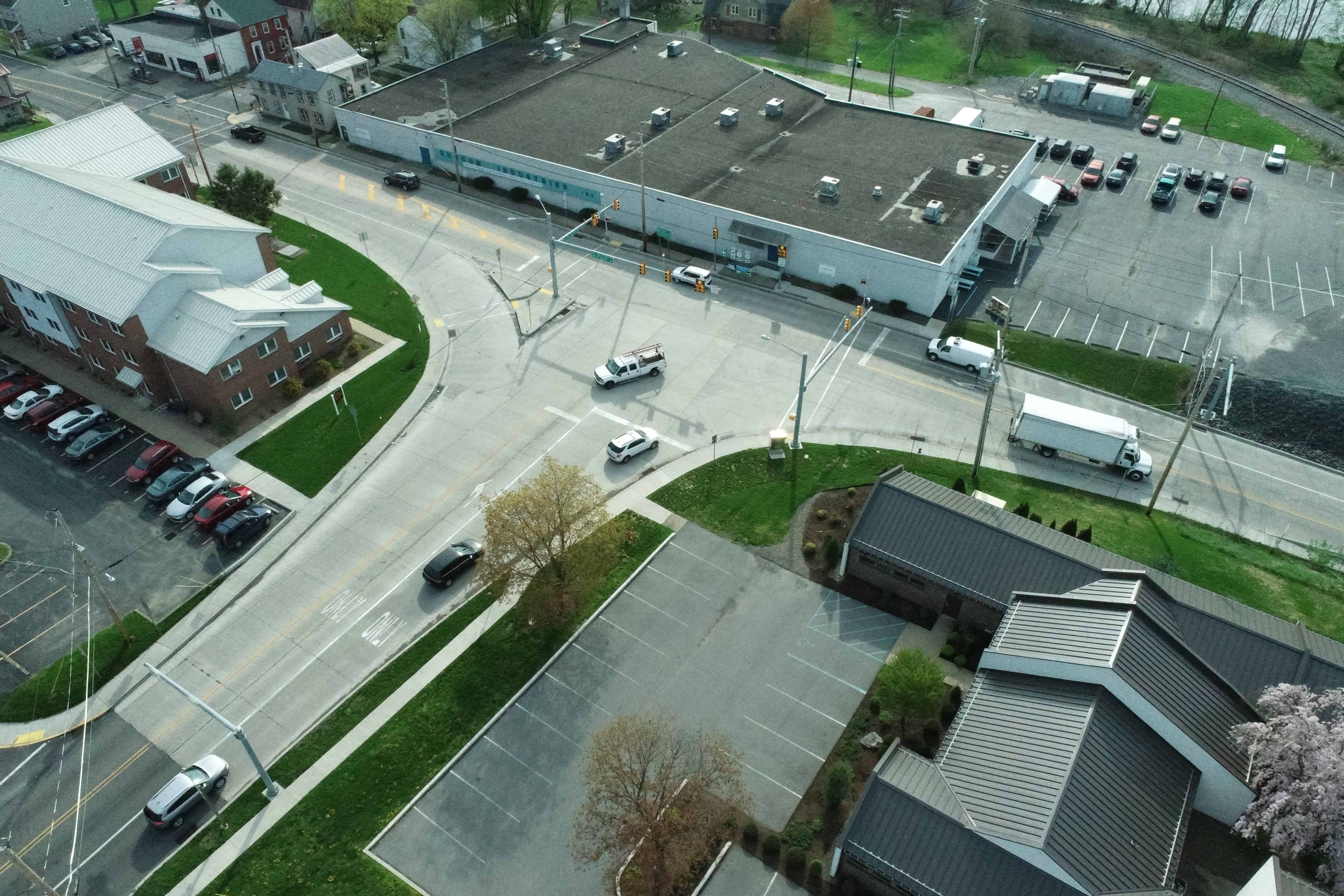
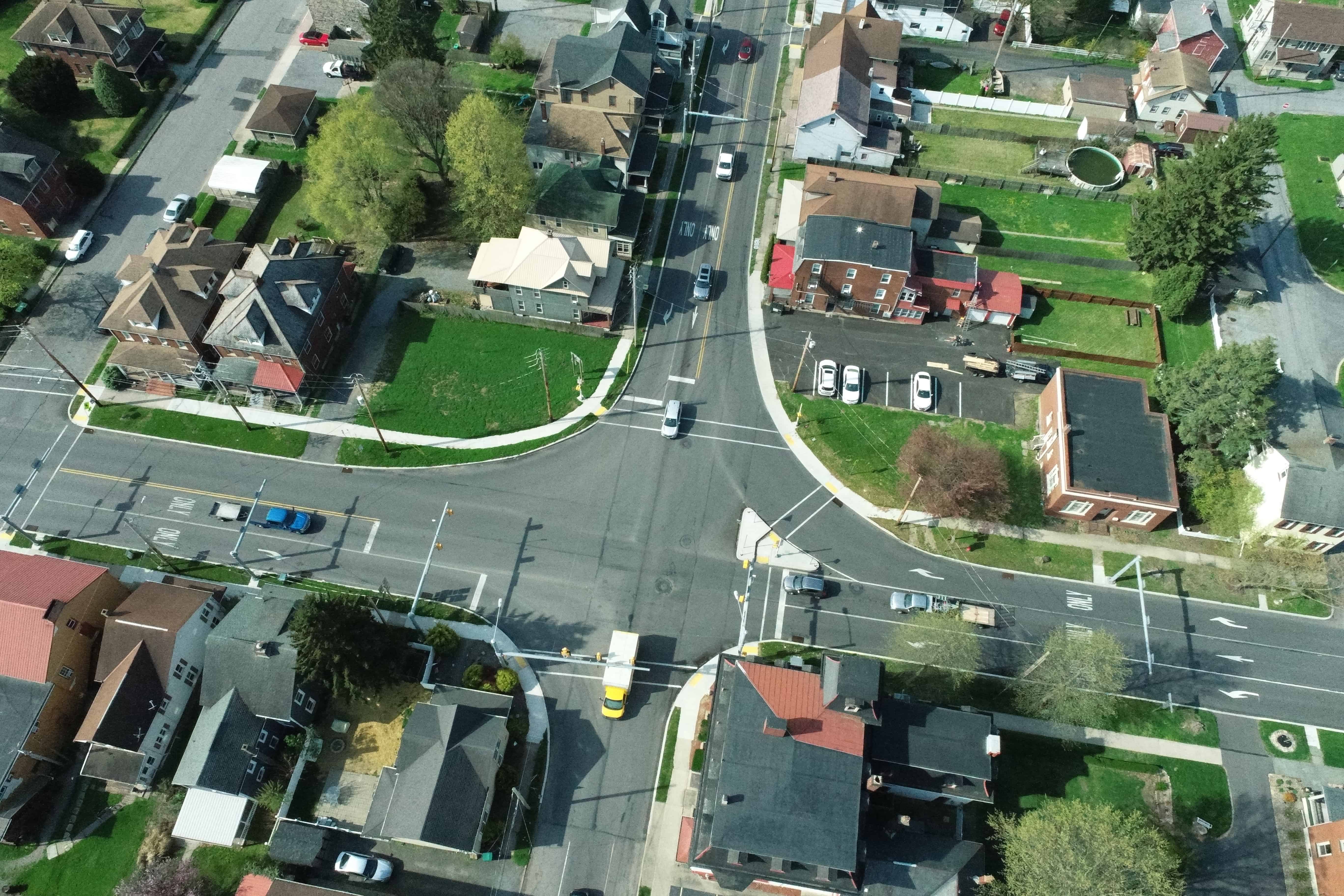
This $40.9 million project, traversing through Woodward and Piatt Townships, Lycoming County, west of the City of Williamsport, provides safety enhancements through improved highway access points, median U-turns, left turn jug handles, deceleration and acceleration lanes and various other improvements along the mainline. Design for the corridor improvements resulted from the Access Management Study with public input. The safety project’s focus was to reduce fatalities and severe injuries by minimizing vehicle right angle conflict points, closing unimproved median crossovers, and improving the access points throughout the entire corridor.
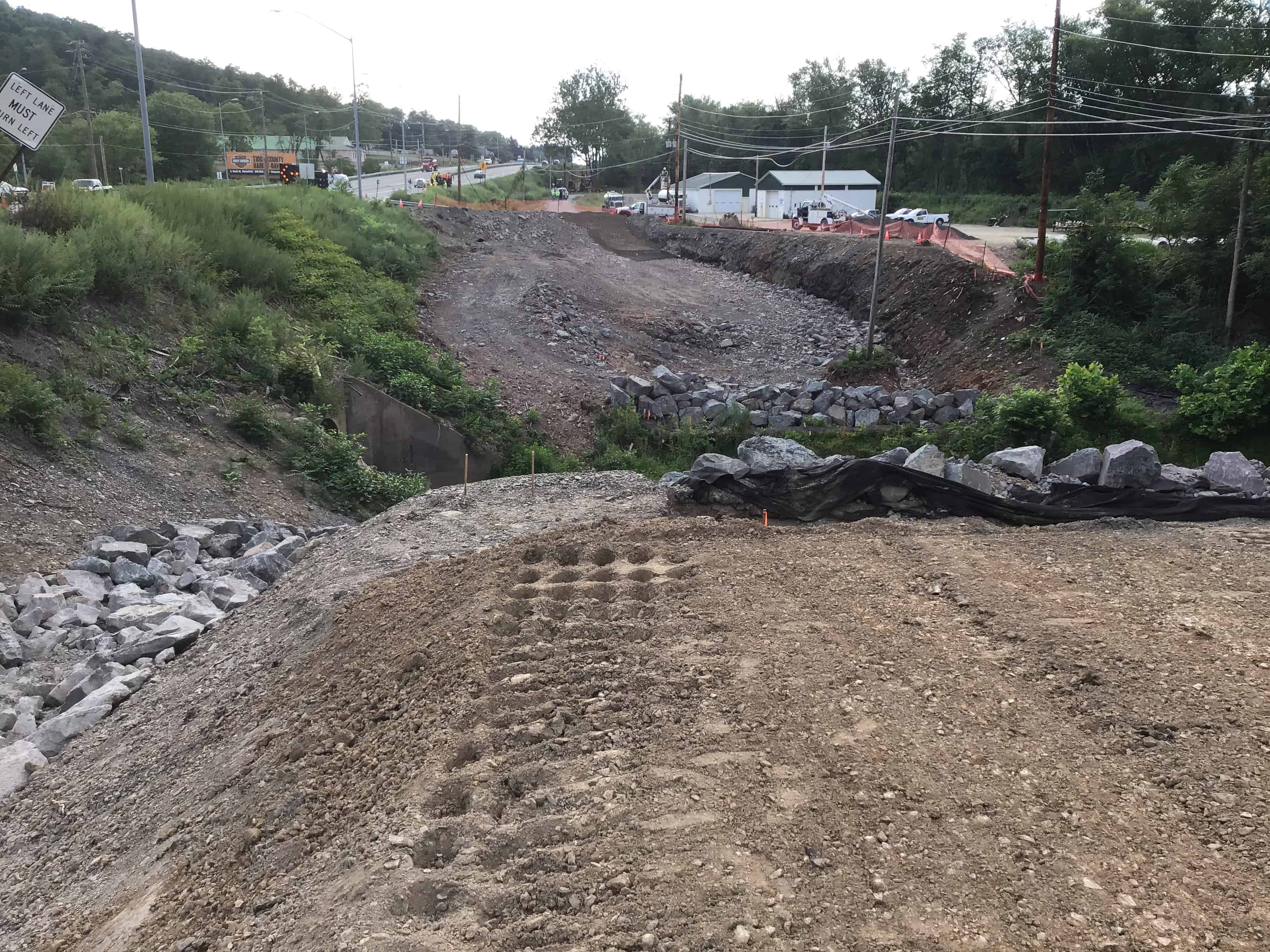
The work on Route 220, from the intersection with Route 287 near Jersey Shore to the intersection with Route 2014 (Fourth Street) near the City of Williamsport, also included replacement of the structures crossing Larry's Creek and Queneshukney Run, a new structure carrying relocated Front Street over Queneshukney Run, and rehabilitation and widening of the structures over Pine Run.
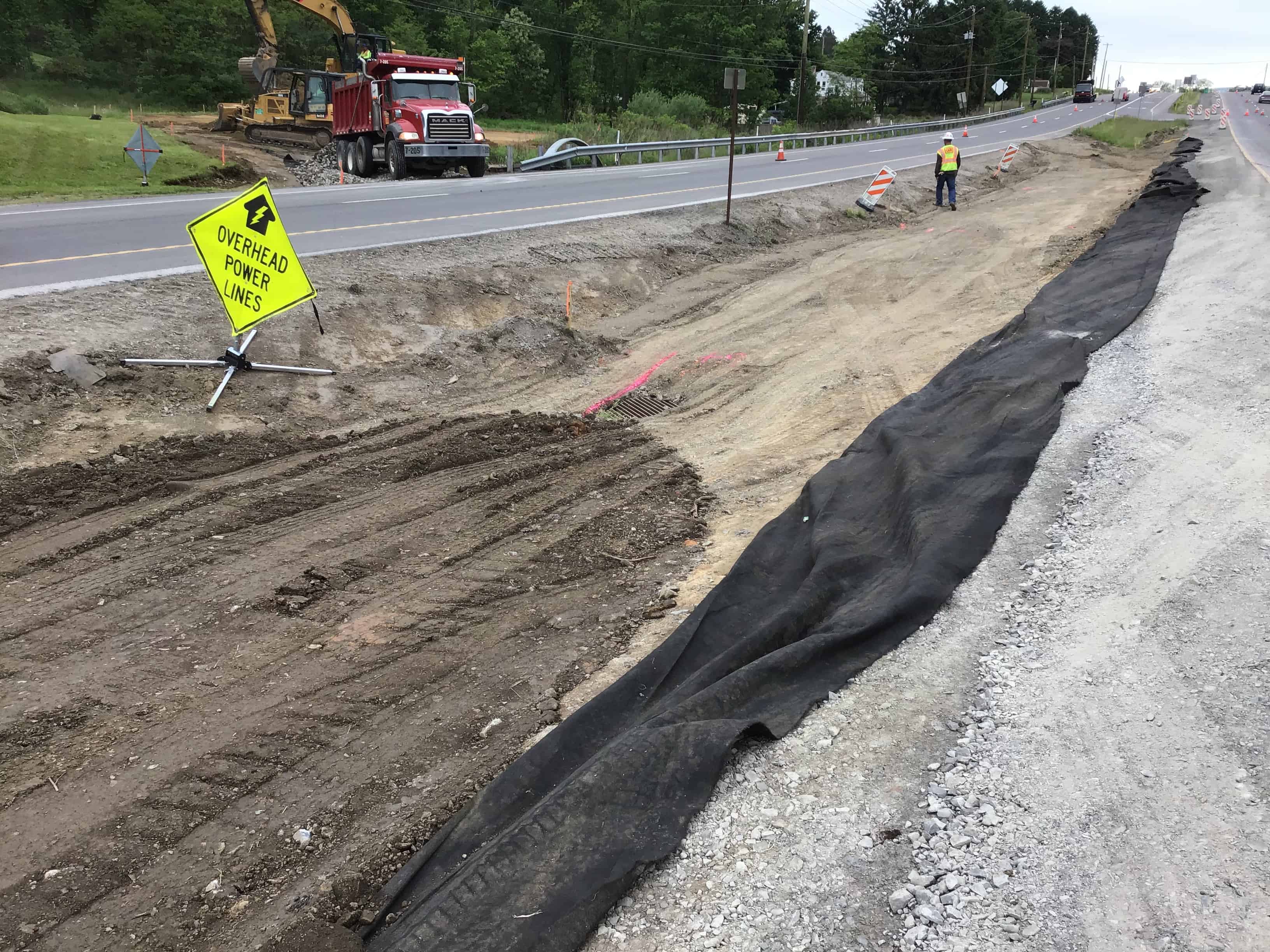
Modifications to the existing roadway in East Linden, guide rail upgrades, highway lighting and other miscellaneous work was also included as part of this project. The 2020 construction season focused on placing temporary pavement to allow two lanes of traffic in each direction.
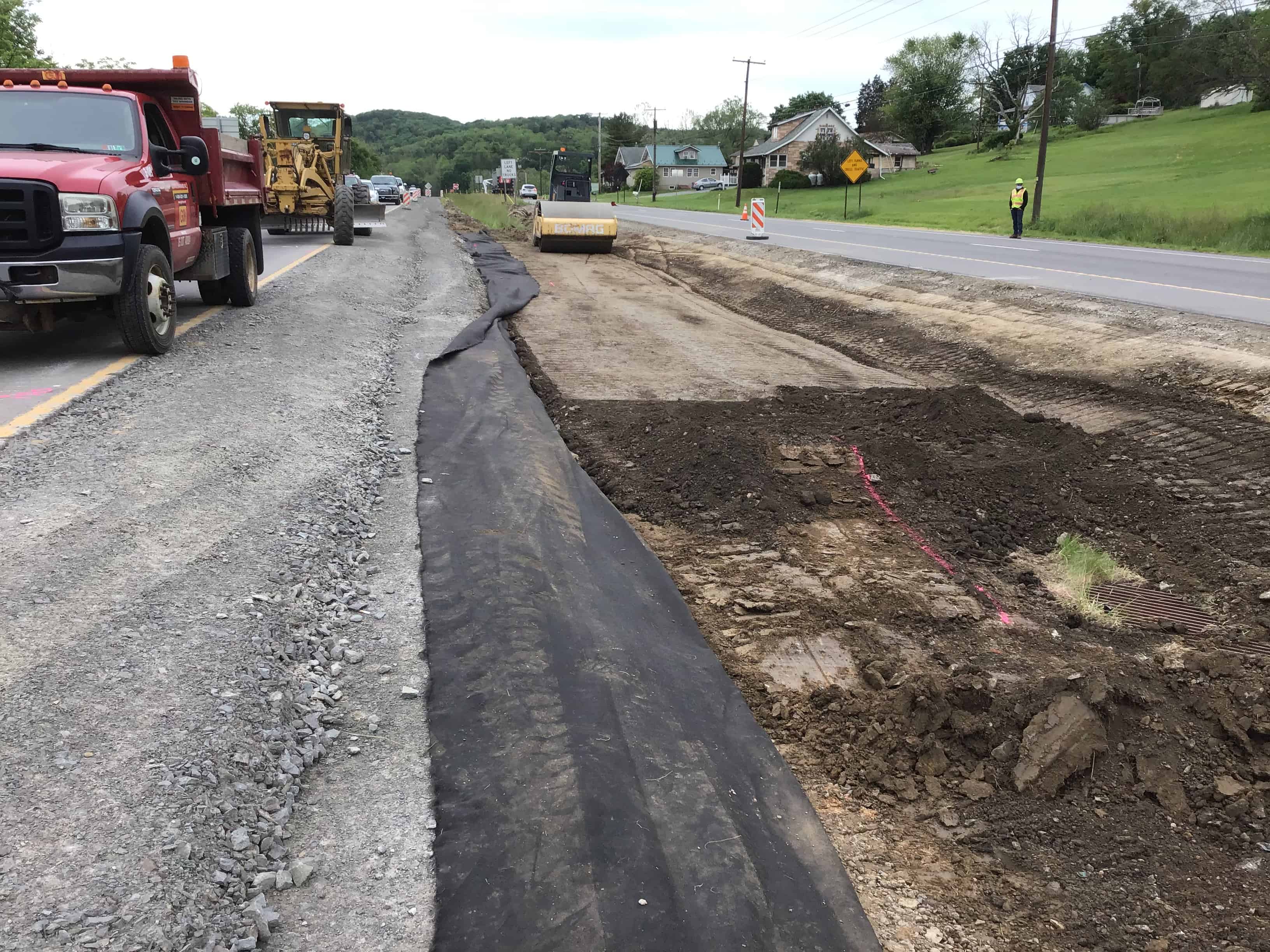
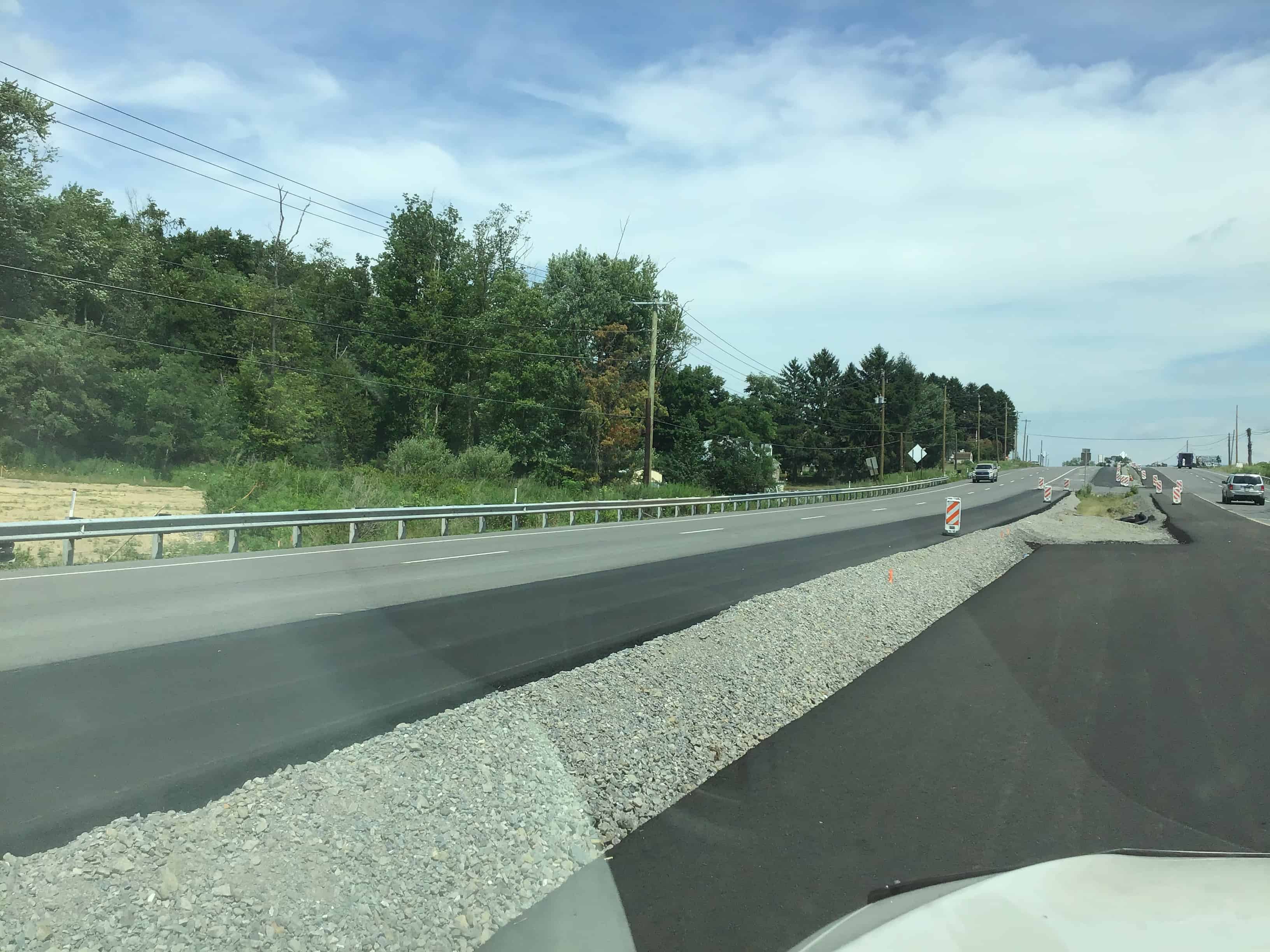
Based on the results from the Federal Safety Performance Measures for 2018, the Department was required to prepare and submit an implementation plan for the Highway Safety Improvement Program (HSIP) to FHWA. This plan identified areas of opportunity to reduce fatalities and suspected serious injury crashes.
We program projects that can treat entire networks with systematic updates. This pro-active approach includes programming High Tension Median Cable Barrier (HTMCB) into freeway projects with separate contracts to fill in the gaps. In addition, the installation of rumble strips, all weather pavement markings, and high friction surface treatments based on crash patterns help reduce fatal and suspected serious injury crashes within the District limits.
Adding additional dollars from other funding sources to supplement the $53 million HSIP monies allocated to the district allows us to select the right treatment for the right locations. These right location or spot treatment safety projects address roadway sections experiencing a crash pattern involving a high number of fatal and suspected serious injury crashes. A combination of systematic and spot location safety projects has contributed to the district’s HSIP program success. Tracking HSIP project investments from 2002 to 2015 showed these expenditures resulted in a 30 percent reduction of fatal and suspected serious injury crashes in District 3 compared to the statewide average reduction of only 11 percent.
The District 3 Central Paving Crew partnered with Chief Oil & Gas to complete a 3.5-mile resurfacing Paving Partnership Project in Sullivan County on Route 4002 and Route 4003. Total paving for both routes was 3.3-miles long with 1,000 tons of widening material, 46,000 square yards of reclamation and 10,400 tons of material were placed. At a cost of $1,100,000, Chief Oil & Gas contributed half the funds for the partnership.
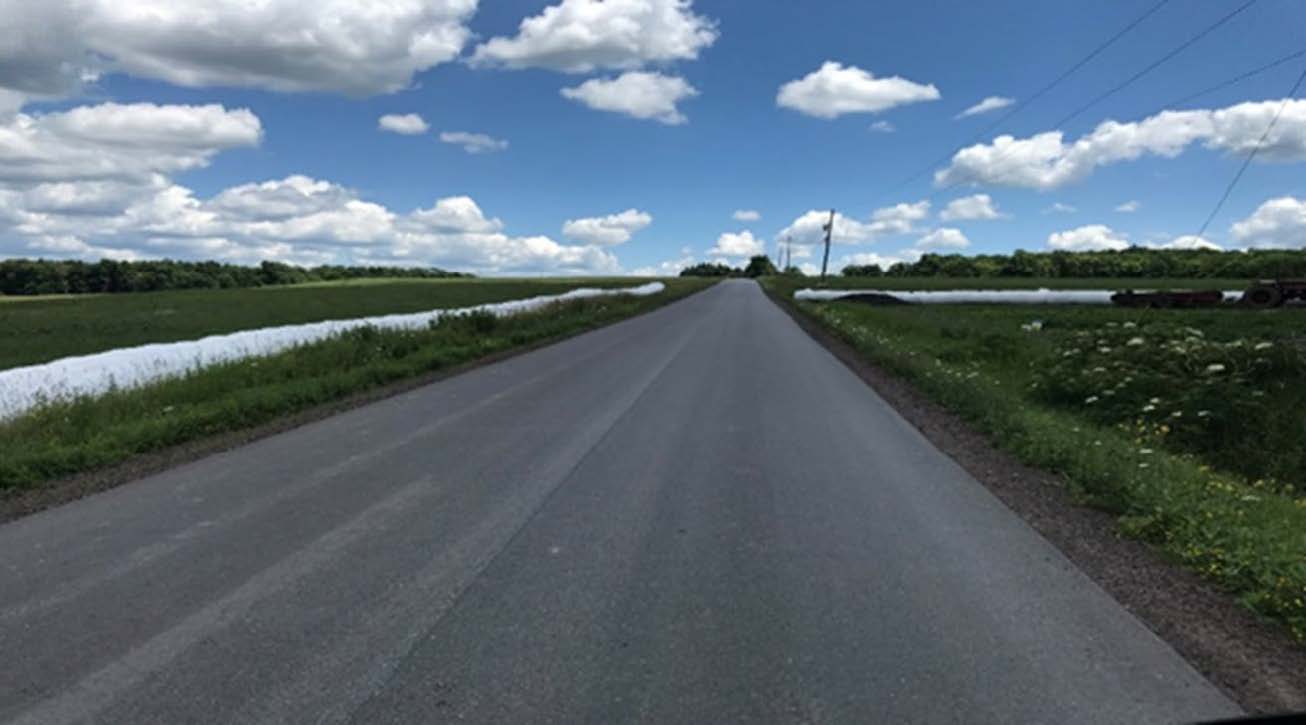
The District 3 Central Paving Crew partnered with Chief Oil & Gas to complete a 0.8-mile resurfacing Paving Partnership Project in Lycoming County on Route 2015. One thousand four hundred fifty (1,450) tons of material was used at a total project cost of $120,000. Chief Oil & Gas contributed half the funds in the partnership.
Bradford County Department Force staff completed a full depth reclamation project on Route 1045, Horn Brook Road, in Sheshequin Township, Bradford County. Considerable hills and curves along the 3.48 project miles made the work challenging.
Full-depth reclamation (FDR) is a rehabilitation method that works by uniformly crushing, pulverizing, and re-mixing the existing roadway to achieve a uniform and stable base. Additional millings were added to the existing roadway before the FDR took place. This process offers a cost-effective method to create a stabilized base, ready for placement of the overlay, at approximately $76,201 a mile. Work was carried out in 1-mile sections each day and despite enduring several rain and flooding events, the project was completed in approximately two and a half months.
To aid in pavement preservation, 10,000 feet of underdrain was installed after the FDR was complete and before the asphalt base was placed. After the two-week curing, the Regional Paving Crew paved with three inches of 19MM warm mix asphalt. Bradford County Department Force staff then completed the shoulder backup and driveway entrance finishing. The roadway was seal coated in 2020. Total cost of the project was approximately $440,000.
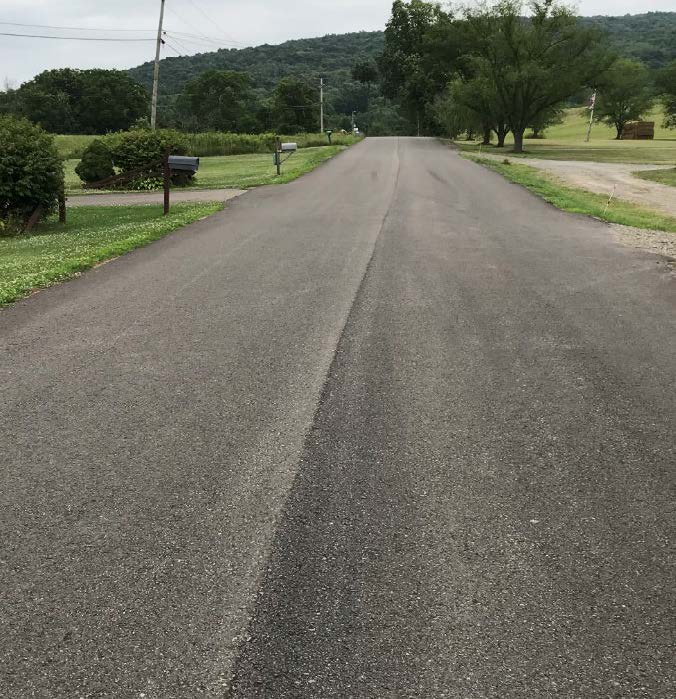
The Route 414-69S project consisted of the repair of a soil slide on Route 414 near the intersection of Jennings Road in Leroy Township, Bradford County. The project began in the fall of 2018 and was completed in October 2020. The work included relocating and placing amended soils in and around the relocated tributary to Towanda Creek. Careful coordination and cooperation amongst the Pennsylvania Department of Environment Protection (DEP), the Army Corps of Engineers, the District 3-0 Environmental Unit and Bradford County Conservation District made this project successful. Total project cost was $3.9 million dollars.
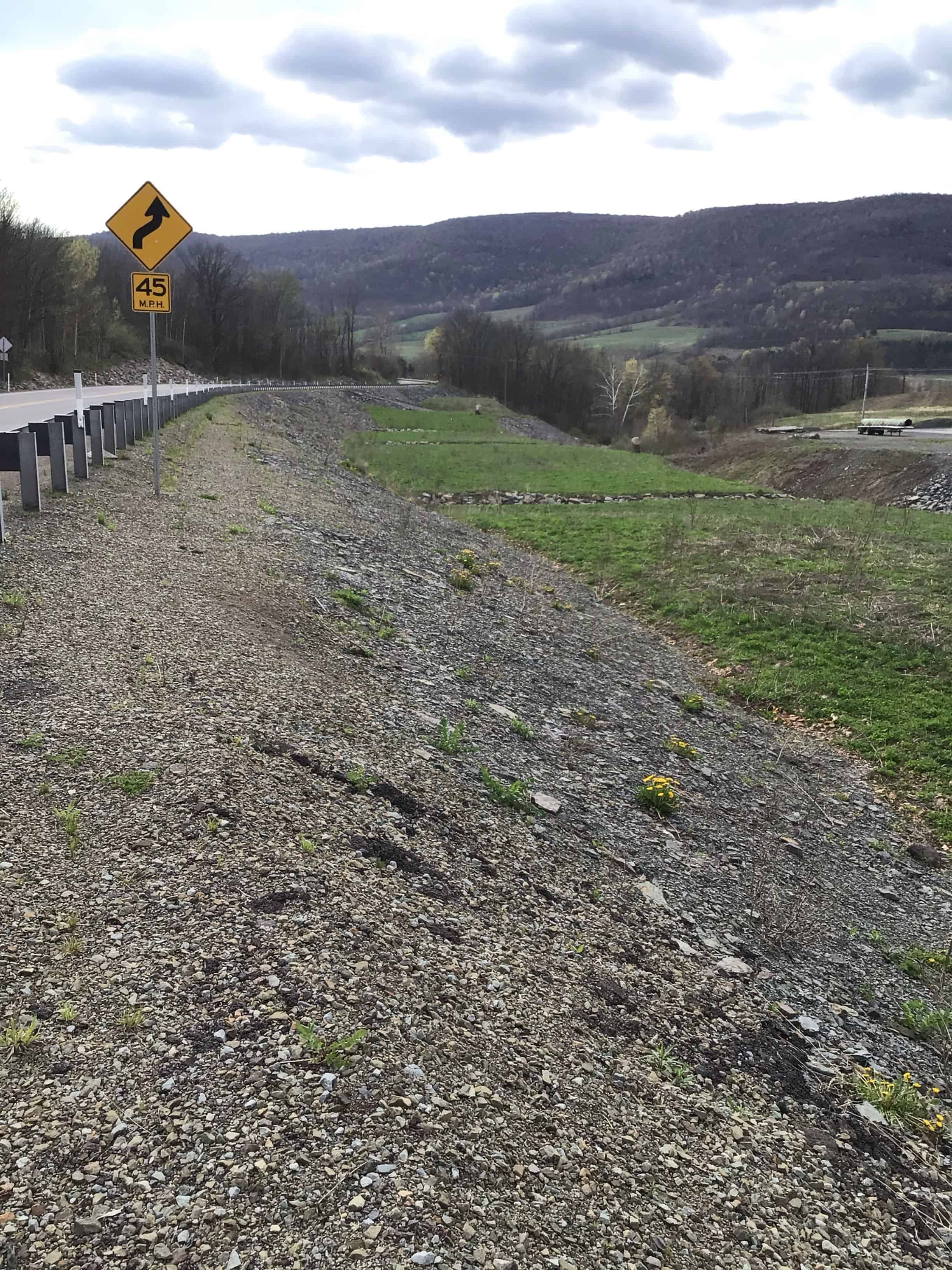
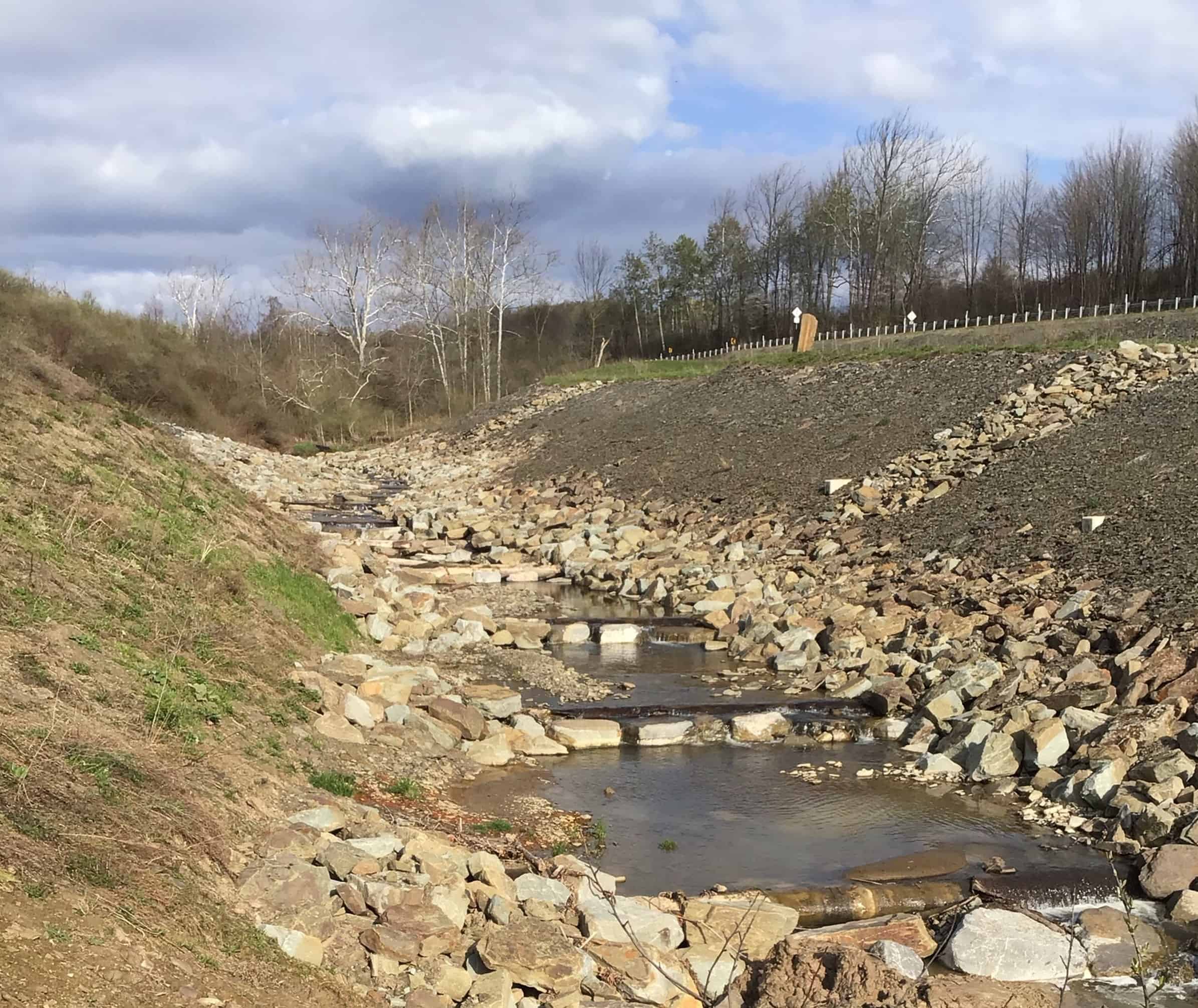
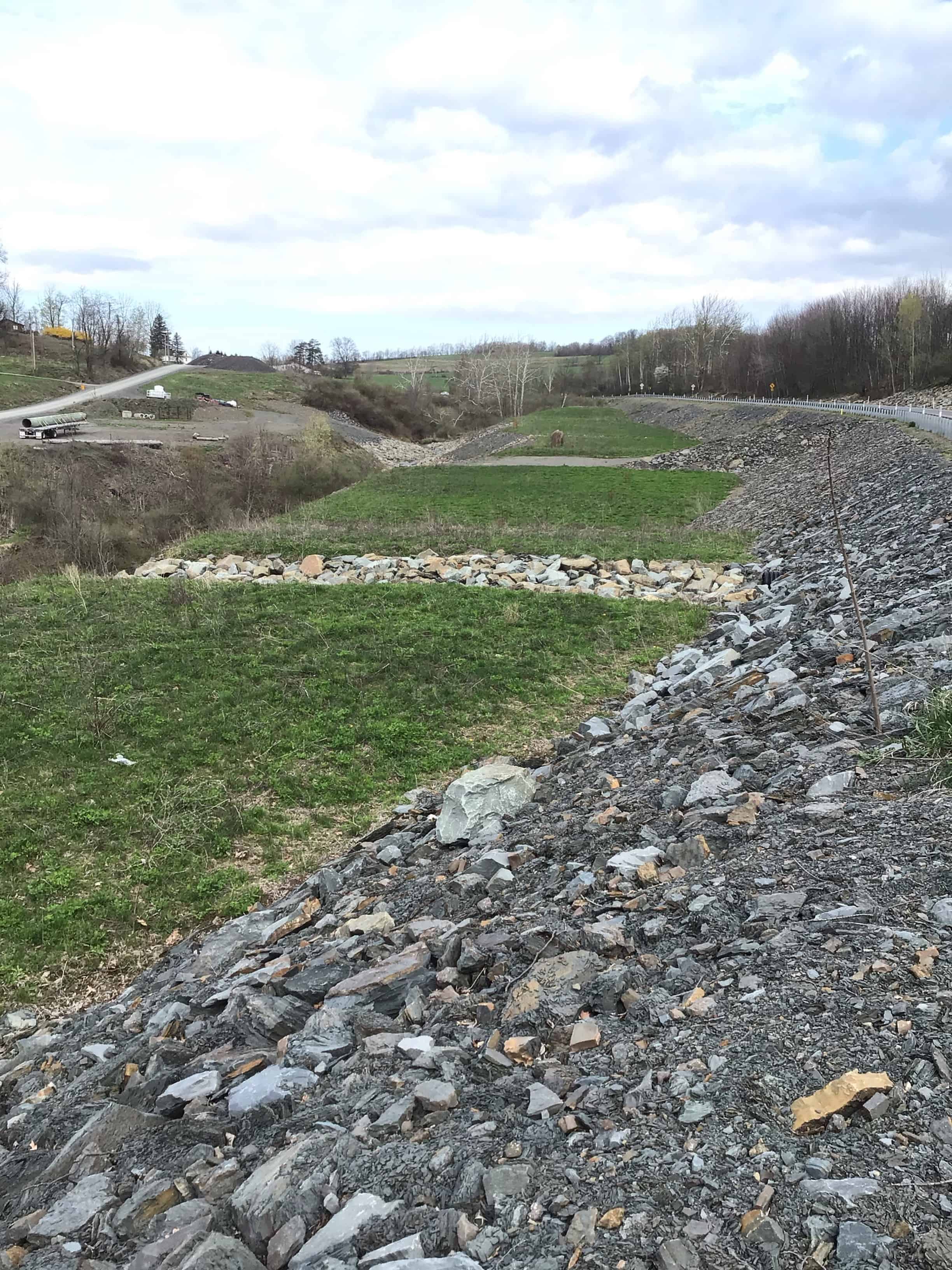
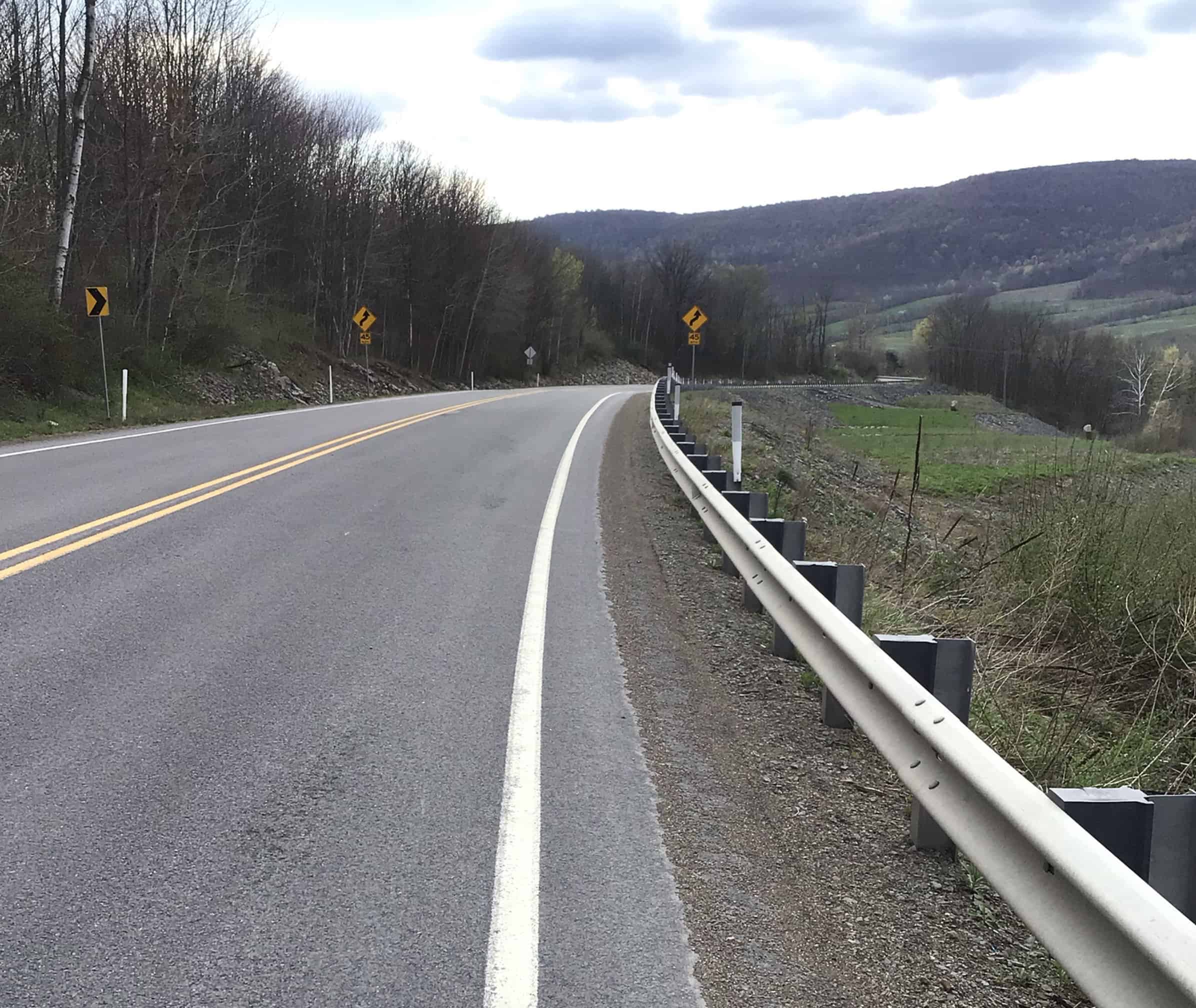
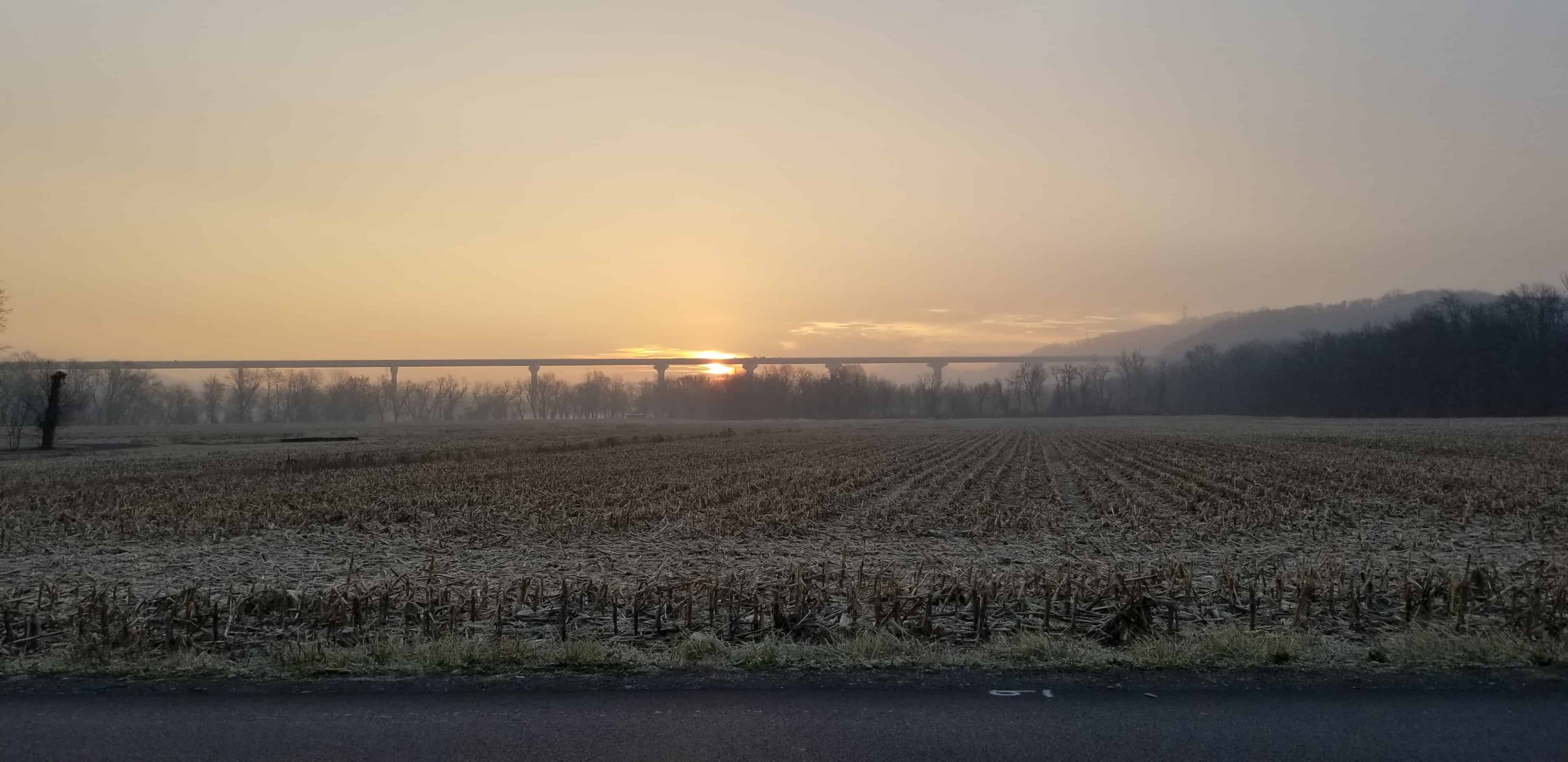
Progress continued and included a significant milestone in 2020 for the $865 million Central Susquehanna Valley Transportation (CSVT) Project, which will ultimately provide a 13-mile, four-lane, limited-access highway in Northumberland, Union, and Snyder Counties, connecting Route 147 south of Interstate 80 to the north end of the Selinsgrove Bypass (Routes 11/15).
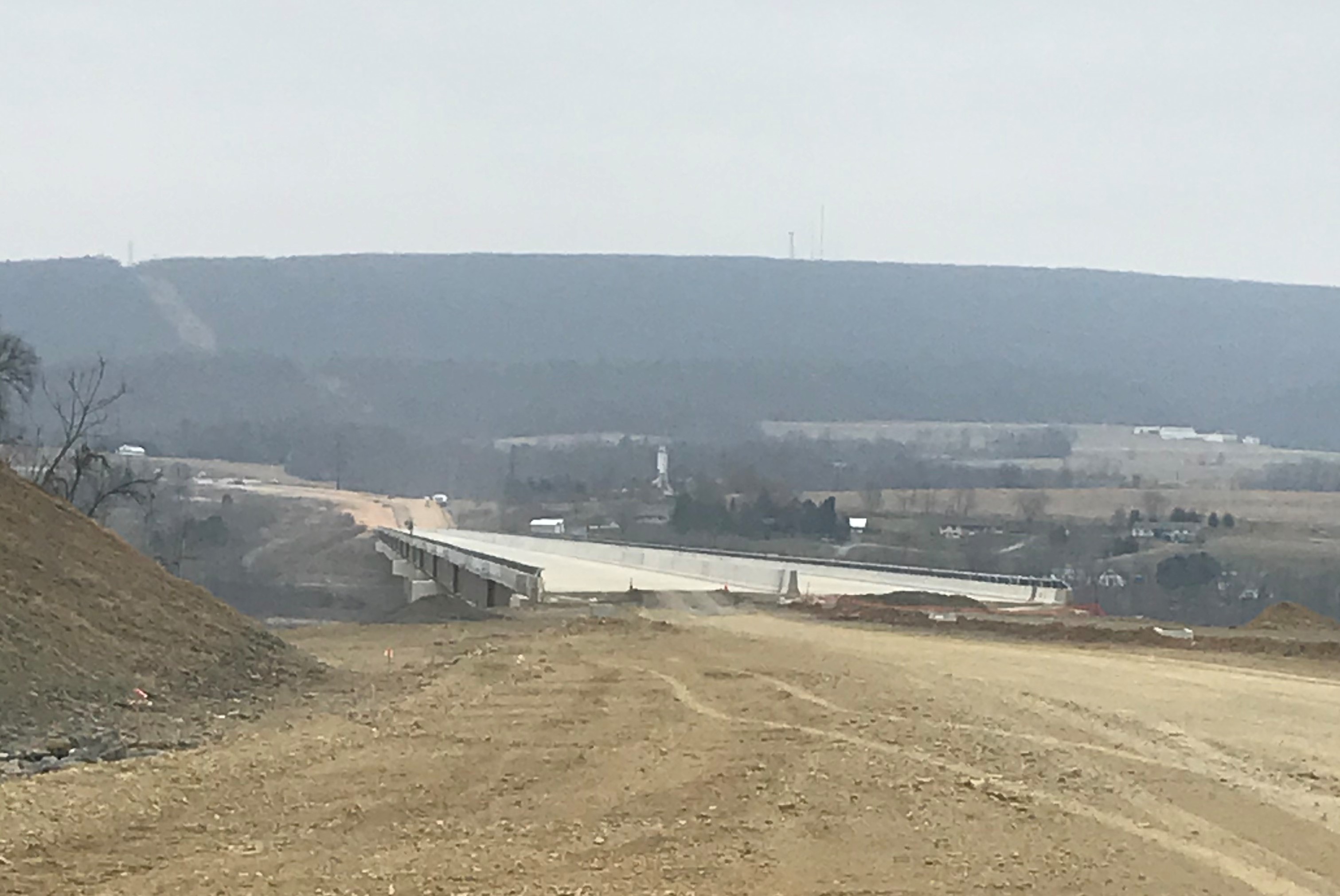
The significant milestone of 2020 was the completion of the new bridge over the West Branch of the Susquehanna River that is a major component of the project’s Northern Section. The 4,545-foot river bridge was completed in December, roughly five years after its construction began in late 2015.
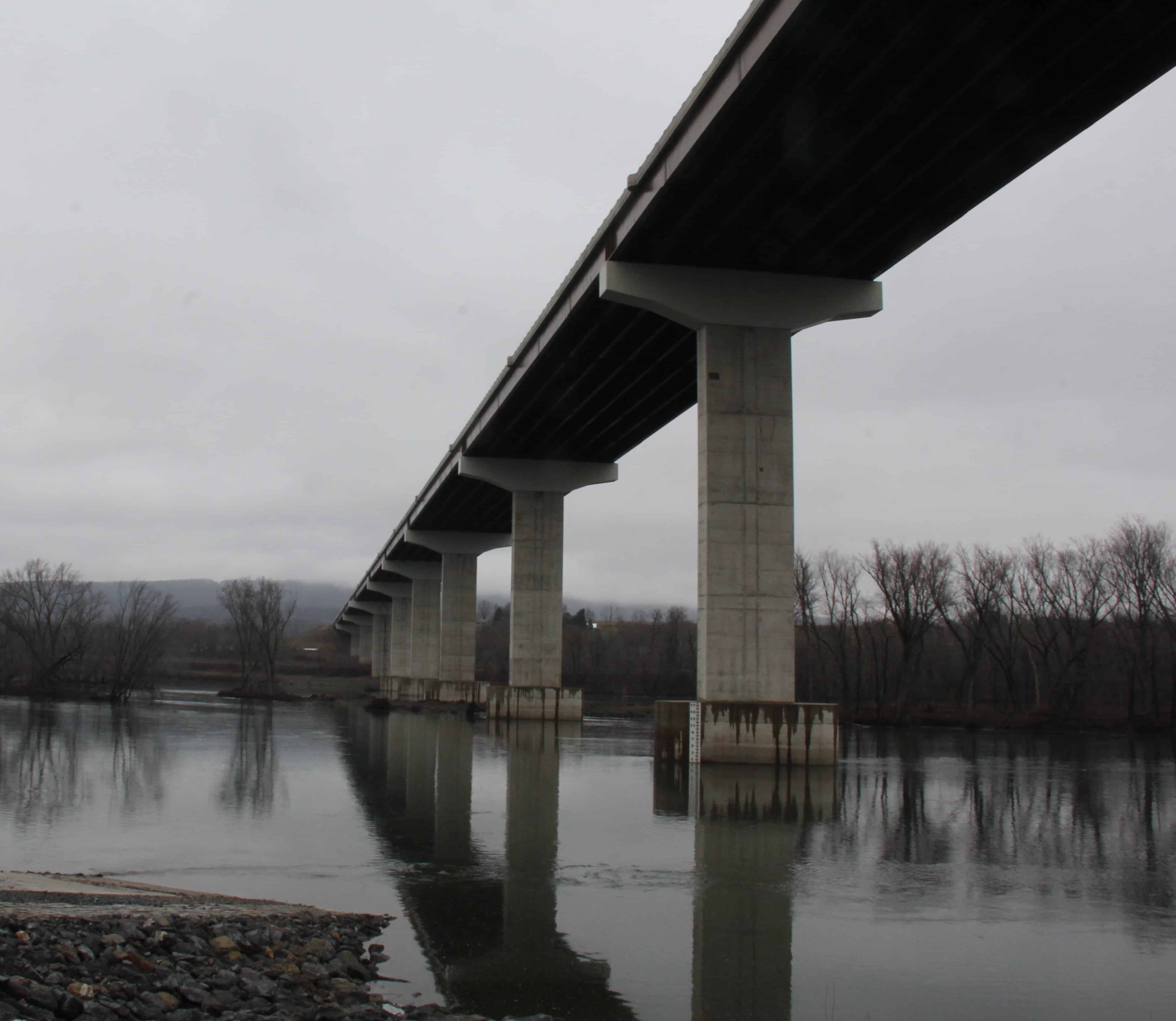
With the river bridge finished, only one construction contract remains to be completed for the Northern Section, which will connect Route 147 south of Montandon in Northumberland County to Route 15 south of Winfield in Union County. The final contract involves the paving of the new highway, and it must be completed to open the river bridge and the rest of the Northern Section to traffic.
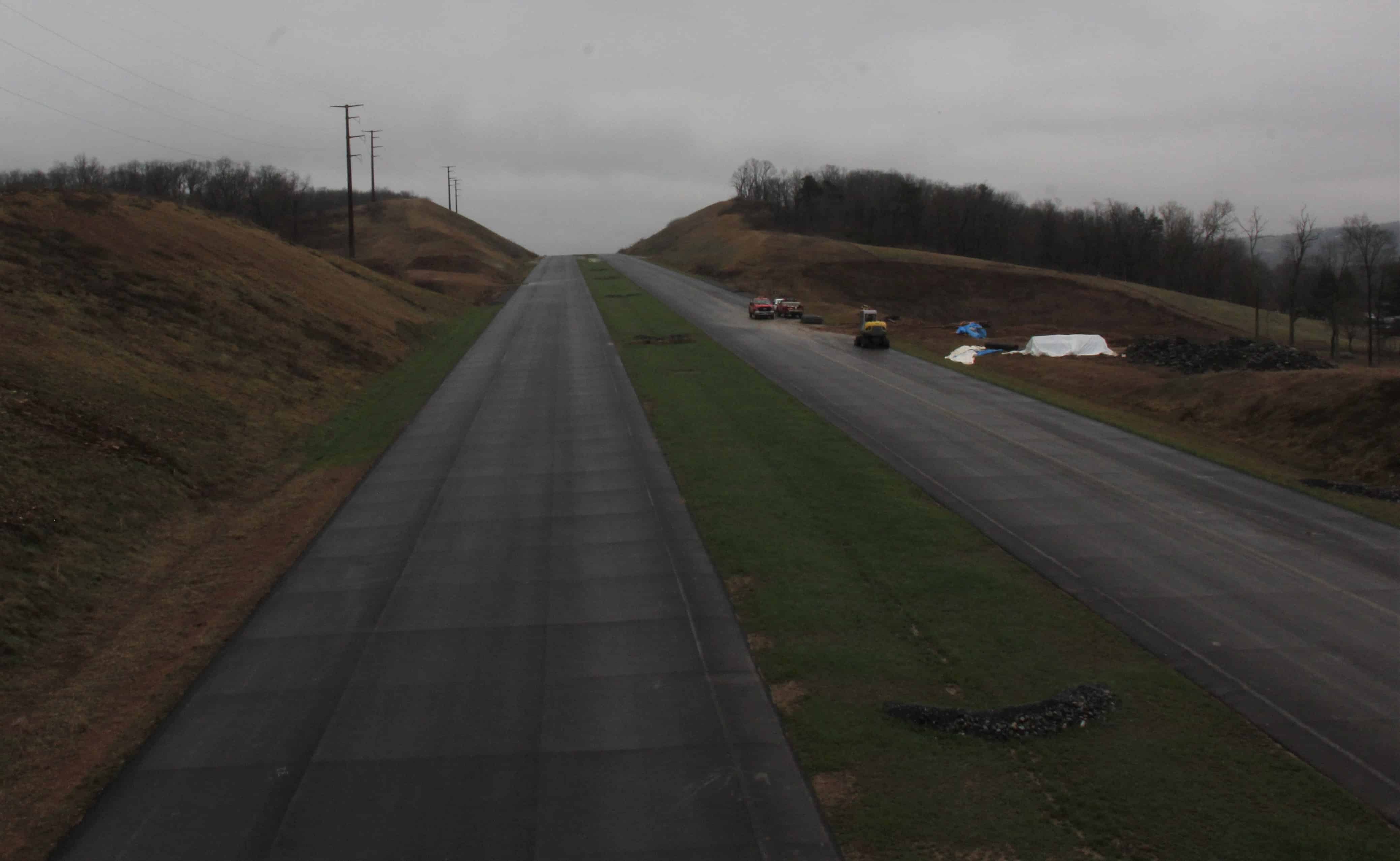
Paving operations began for portions of the Northern Section in 2019. They will be focused in 2021 on the areas adjacent to the newly completed river bridge, including the new interchange with Route 15 just south of Winfield. The Northern Section is anticipated to be fully completed and opened to traffic in 2022.
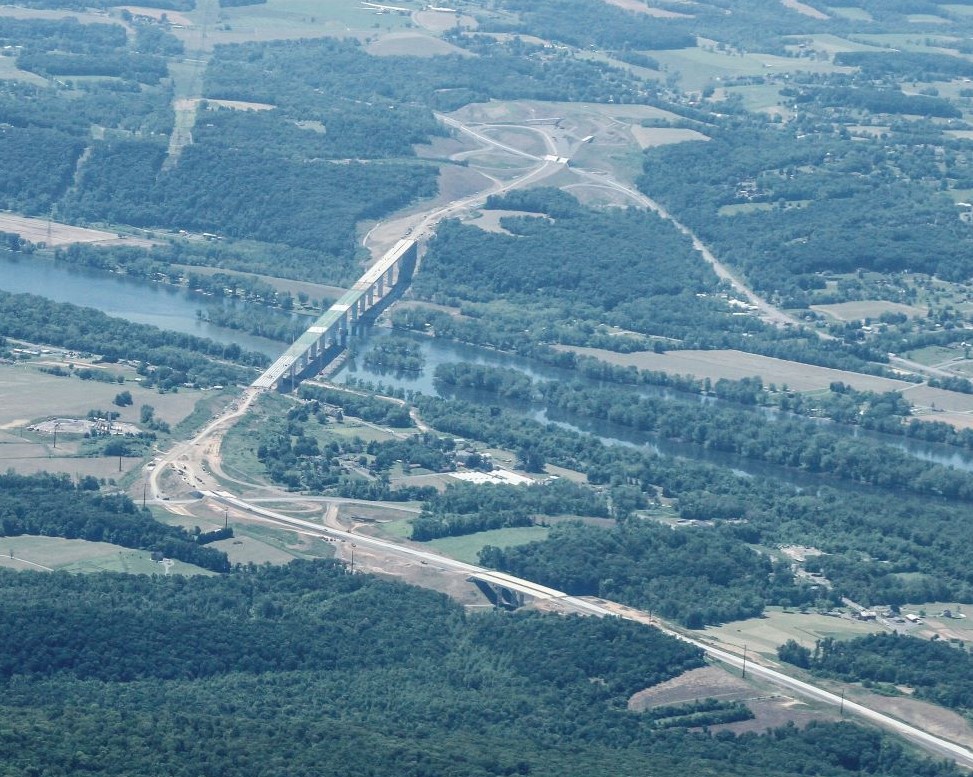
Meanwhile, final design and other pre-construction activities continue to move forward for the project's Southern Section, which will connect Route 15 south of Winfield in Union County to Routes 11/15 north of Selinsgrove in Snyder County. Final plans preparation, right-of-way acquisitions, utility relocations, and waterway/wetland and NPDES permitting are ongoing, and they must be completed prior to the start of construction, which is currently anticipated in 2022. The Southern Section is anticipated to be completed and opened to traffic in 2027.
Central Office initiated a 3-year requirement to ensure all guide rails and guide rail end treatments on interstate roadways were compliant with the Manual for Assessing Safety Hardware (MASH) standards. To accomplish this, the condition of all existing interstate guide rails and guide rail end treatments in District 3 were assessed, upgraded designs for any substandard appurtenances were developed and the upgraded designs and documentation were provided to Central Office to be incorporated into a regional contract.
A review of Interstates 80 and 180 revealed approximately 550,000 linear feet (LF) of guide rail currently in place. Excluding locations that would be rectified by projects programmed to be bid prior to prior to 2022, approximately 400,000 LF of guide rail needed to be field viewed, designed, documented, and submitted.
Led by the Traffic Safety section, over a two-week timeframe, this group of individuals, in multiple two-person teams, were on the interstate roadway each day assessing guide rail and end treatments, while at the same time maintaining current schedules, workloads, deadlines, and customer response timeframes. Long days and weekend work were required to meet the mid-April deadline, culminating in approximately 500 man-hours to complete this task on time.
This team was recognized for their efforts with a District 3 Group of the Quarter (GOTQ) award.

In the photo, top row: Ken Allensworth, Traffic Control Specialist, Jason Barrett – Highway Drafter, Kyle Bunce – Environmental Planner 2, Luke Franzen – Environmental Manager, Mary Guinter – Tort Liability Specialist; Middle row: Bill Houpt – Asst. Traffic Engineer, Mara Johnson – Asst. Operations Engineer, Chad Lutz – Asst. RMS Coordinator, Steve Mutchler – Annuitant David Orndorf – Traffic Control Specialist; Bottom row: Brett Runkle – Roadside Specialist 1, Nate Snyder – Traffic Control Specialist, Tom Squires – Traffic Control Specialist, Jeff Stepanik – Asst. Safety Engineer, Anna Rose Temple – Transportation Technician.
Transitioning from the traditional assets, we understand the need to connect and enhance provisions for all modes of transportation. Our Multimodal Coordinator and Local Projects Coordinator work with our planning partners to ensure we accommodate all modes on every project. In some cases, specific stand-alone efforts are necessary to address specific modal needs.
District 3 has one commercial service airport: the Williamsport Regional Airport. The Montour Street Connector Project is being designed instead of its predecessor - an earmark funded, dedicated, new access road and bridge into the Williamsport Regional Airport, which was shelved nearly a decade ago due primarily to the large costs associated with the project. Working with the Metropolitan Planning Organization (MPO), the remaining earmark funding was salvaged and applied to a different airport access improvement project that improves existing streets and intersections. In addition to a more direct access from Interstate 180, the completed project will include sidewalks, lighting, upgraded signals, and a new at-grade crossing that will satisfy the earmark requirements and meet the airport needs.
We are working with Tioga County to advance the Marsh Creek Greenway project (also known as Tioga County, SR 0-MCG, 105066) which, when completed, will connect the 65-mile Pine Creek Rail Trail to downtown Wellsboro. District 3 is working with the Rural Planning Organization (RPO) to leverage Federal CMAQ funds with DCNR funds and the Pennsylvania Department of Community and Economic Development (DCED) funds. To ensure that the complicated project stays on schedule, the District is providing project management expertise. Ultimately, this $15 million project will provide additional modal options while also enhancing Wellsboro’s status as a tourist destination.
Completion of the Central Susquehanna Valley Transportation (CSVT) project has the potential to affect the Route 147, Route 15, and Interstate 180 major corridors within District 3 and the municipalities adjacent to them. We are partnering with the SEDA-COG and WATS MPOs on a CSVT Project Special Impact Study to examine the potential traffic diversion and subsequent land use impacts that may be caused by completion of the CSVT, and to make recommendations for mitigating any unwanted impacts. The study area focuses on the areas that exhibit the greatest potential for the CSVT project to impact future development:
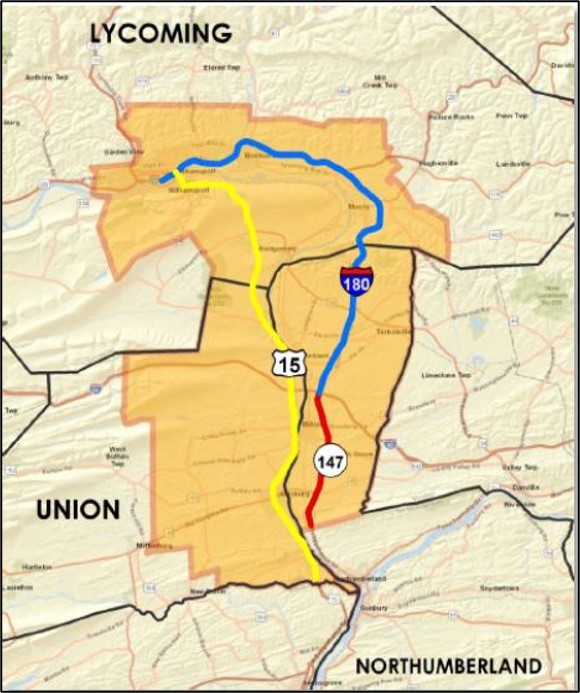
Ongoing coordination with a study management team, steering committee, corridor municipalities, and partnering agencies is providing essential information and guidance. Additional outreach will gauge public opinion on study recommendations using a public open house and legislative briefings.
Study recommendations will be identified that address safety, system operations, economic development potential, and land use policy. Final recommendations will be presented to the MPOs for their endorsement, and the formal study process will end on June 30, 2021.
Unable to outreach in person, District 3 staff were still very active in PennDOT Connects during the COVID-19 pandemic. Working with our planning partners we negotiated roles and responsibilities that worked for each region’s needs and staffing capabilities. We prepared project lists, identified affected municipalities, sent outreach letters and set up forms in the Connects System.
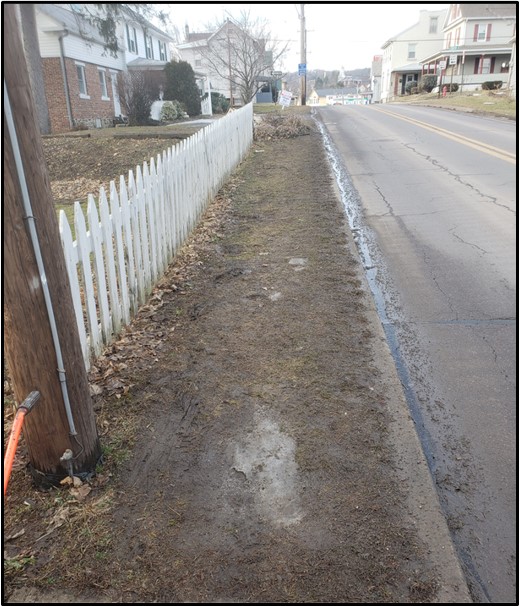
A series of reconstruction and resurfacing projects in Bloomsburg resulted in a successful Connects engagement. During planning, the municipality made us aware of their desire for sidewalks in a section of the project area. Working with the town and MPO, we successfully acquired a Transportation Alternative (TA) Set Aside awarded to fund sidewalks and let this, Columbia County, Route 11-65E project with other highway project contracts. The combined project was lauded by the Statewide TA Coordinator who said: “I’m glad we got a pretty good bid on this large project and the first one – at least I’m aware of – where we used PennDOT Connects to identify a need, a municipality applied for TA Set-Aside, and then we combined the awarded funds with a larger PennDOT project. Great stuff!”
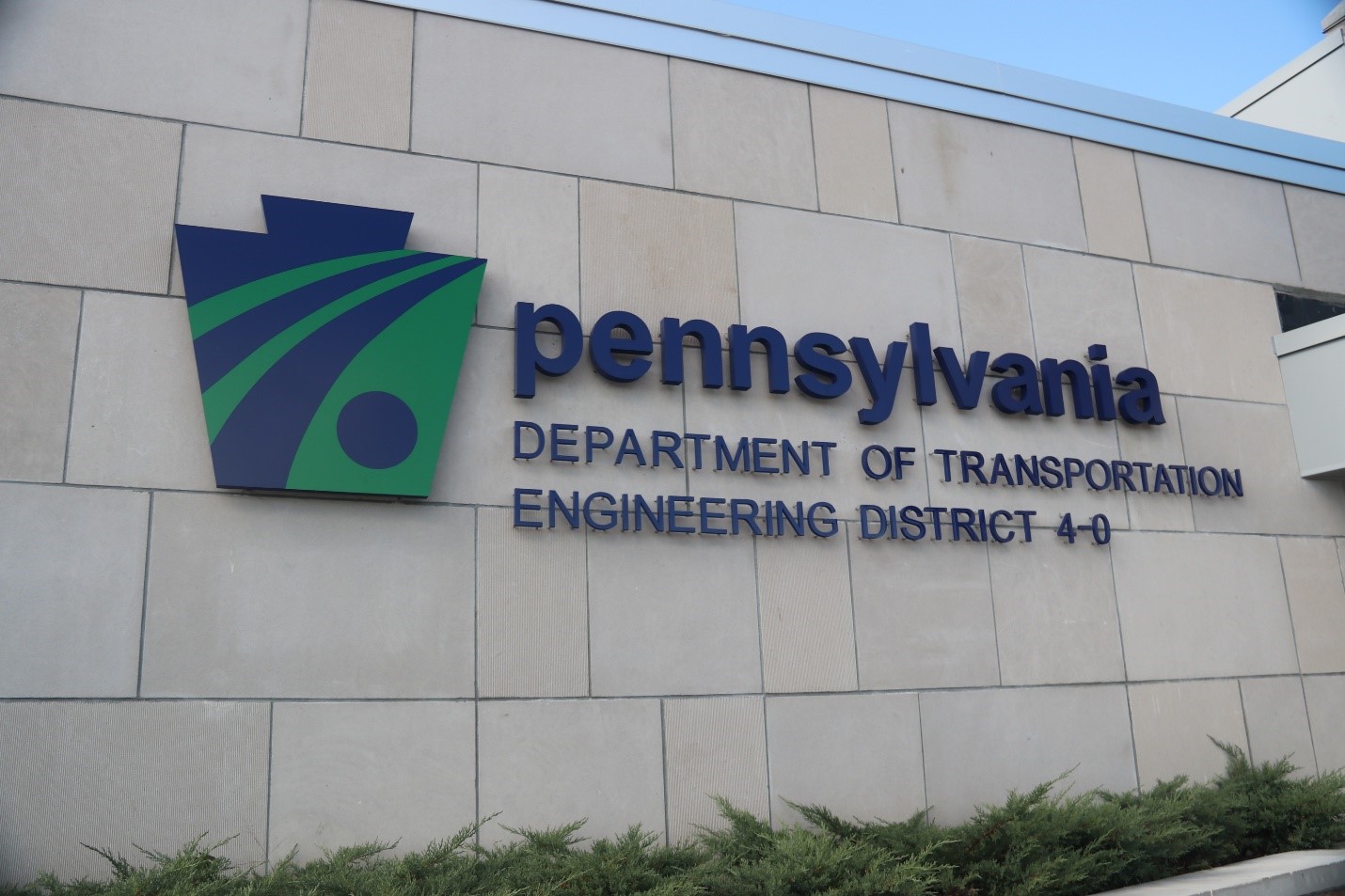
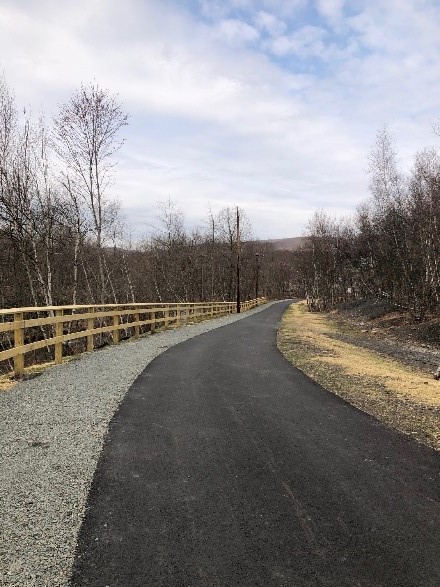
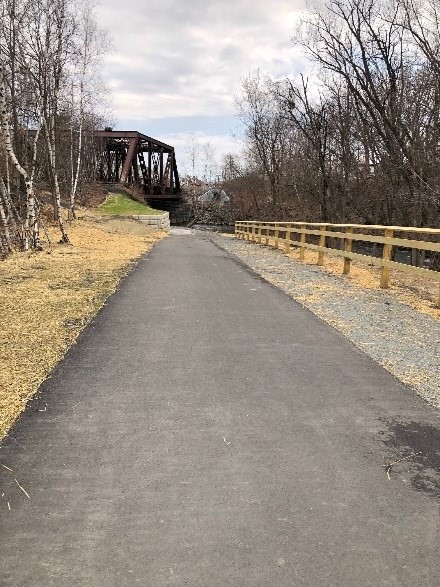
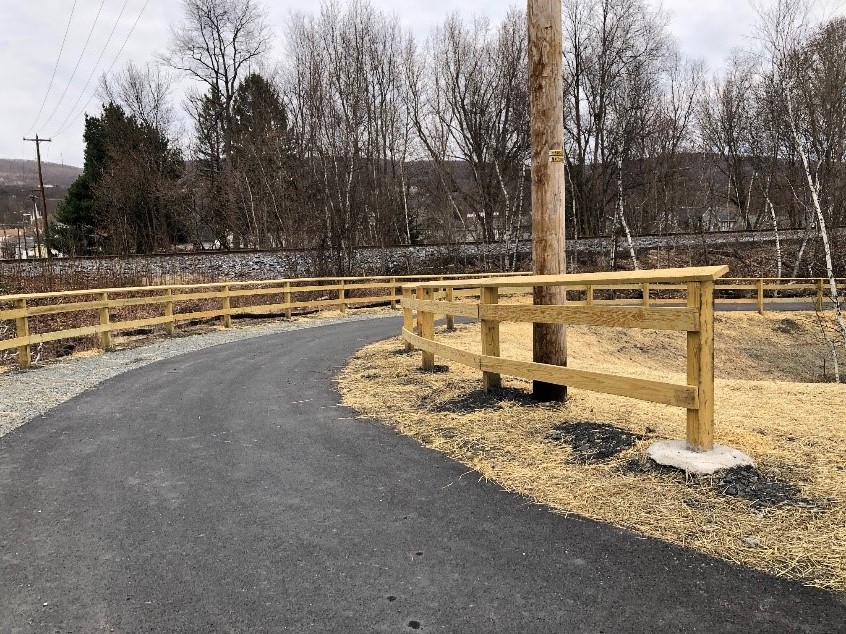
Location: Dickson City and Scranton, Lackawanna County
Project Summary:
Cost: $986,600
Project Features:
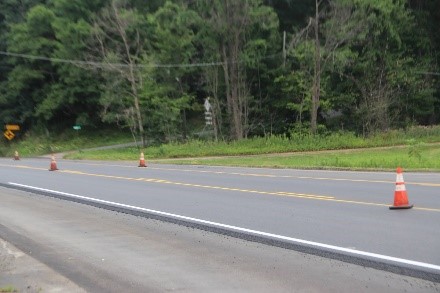
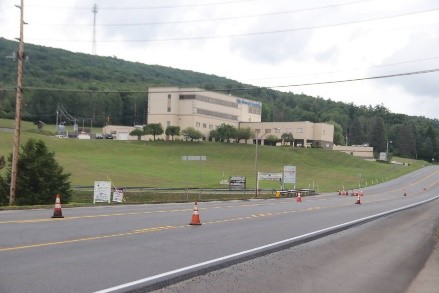
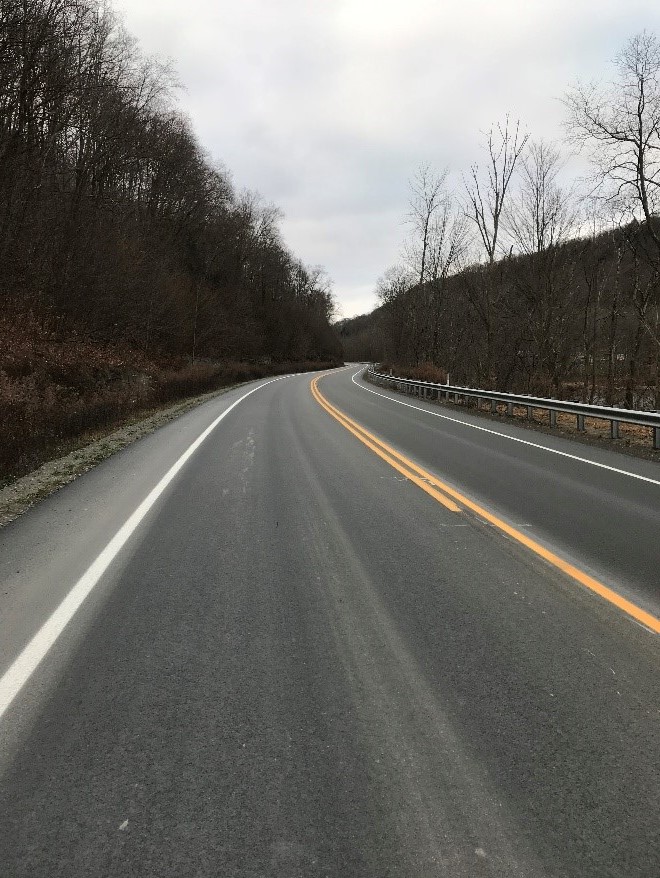
Location: Susquehanna and Wyoming Counties
Project Summary:
Cost: $10,062,097
Project Features:
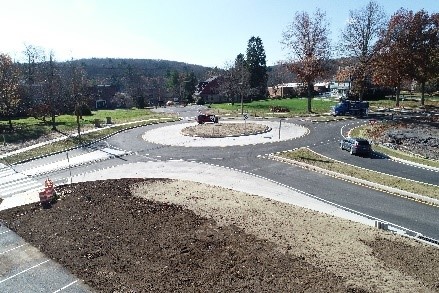
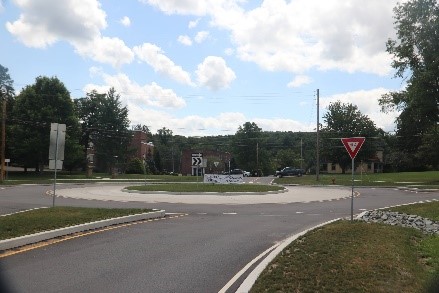
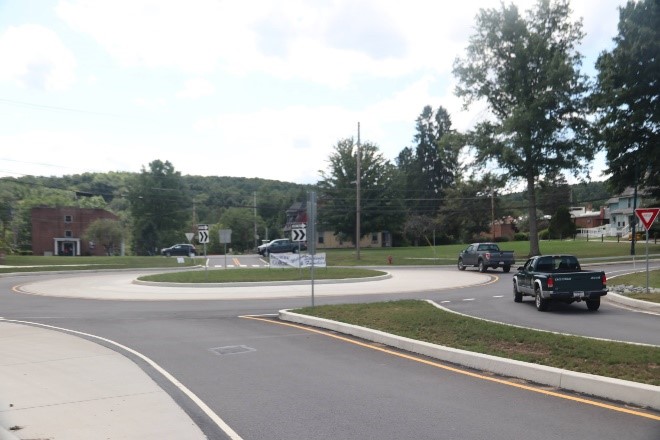
Location: Lackawanna County
Project Summary:
Cost: $1,400,526
Project Features:

District 4 is continuing to perform outreach on all projects that are within the 2021 Twelve Year Program (TYP). COVID-19 has slowed progress, but new approaches are being taken to safely engage municipalities and continue outreach moving forward.
As projects continue to advance through the planning process and the PennDOT Connects initiative becomes more prevalent to the locals, the District is reaching back out to municipalities to provide continuous support and engagement.
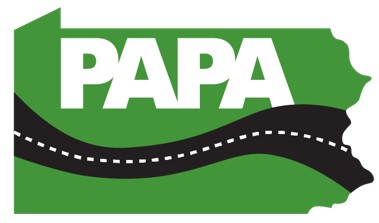
District 4 was the recipient of the 2020 PAPA Award. The Pennsylvania Asphalt Pavement Association (PAPA) is the recognized and respected voice of the Pennsylvania asphalt pavement industry. Their mission is to promote and provide to our customers the best available asphalt pavement technology and to represent and serve the common interests of its members.
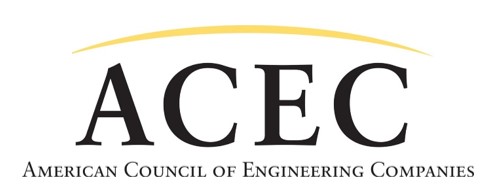
District 4’s South Valley Parkway project received the American Council of Engineering Companies’ National Recognition Award for Bat Monitoring and Habitat Mitigation. The South Valley Parkway (S.R. 3046, Section 301) improved the region’s roadway network and provides a safe and efficient route for the Greater Nanticoke Area. Skelly and Loy, an environmental subconsultant/designer for the South Valley Parkway, was the District’s partner on the award.
Skelly and Loy’s environmental studies, including preparation of the Environmental Assessment and design of compensatory mitigation plans, were integral components of the project. One of the key environmental constraints was that the project was located within the known range of a state and federally-listed threatened and endangered species of bats. Skelly and Loy’s design and construction/post-construction monitoring of replacement bat habitat structures along the PA Route 29 rock face proved to be successful as roost habitat for the small-footed Myotis, a state threatened bat species. The project was an excellent example of combining design and construction of a needed roadway with protection of threatened and endangered species.
The $168.3 million project is on I-78 from approximately 5.9 miles east of Exit 30 (Hamburg) to the Berks-Lehigh County line (just west of Exit 45/PA 863).
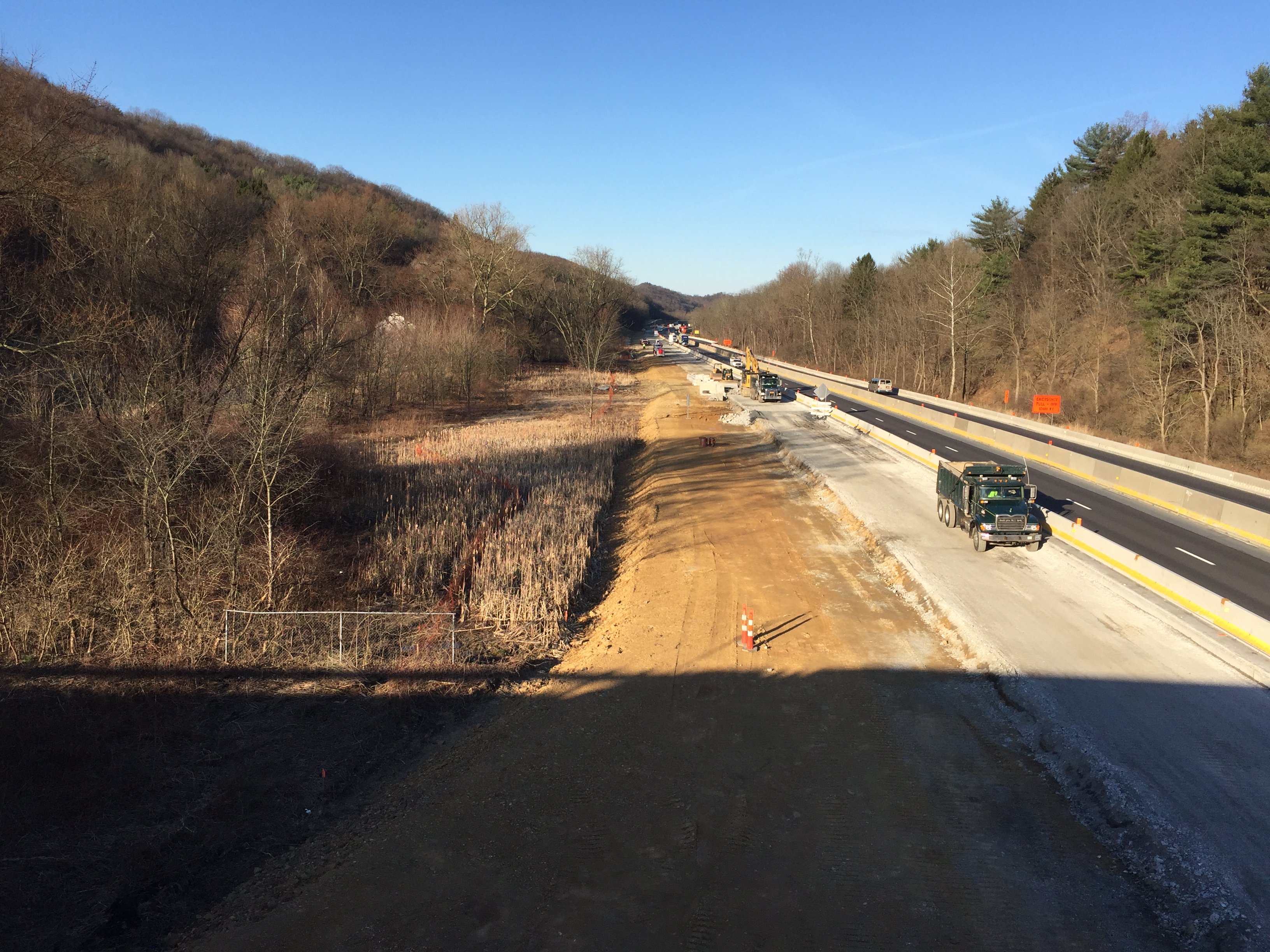
Work includes reconstruction of existing 4 lanes (2 east and 2 west), drainage system improvements, guide rail, fencing, landscaping, message sign boards, signing, delineators and pavement markings.
Also included is construction of three drainage culvert extensions, new construction of five precast concrete sound barriers, one retaining wall, replacement of three (3) dual single-span pre-stressed concrete Bulb-Tee Bridges, one (1) single-span pre-stressed concrete Bulb-Tee Bridge, two (2) single-span pre-stressed concrete spread box beam bridges, and other miscellaneous construction work, all contained within an overall project length of 8.7 miles.
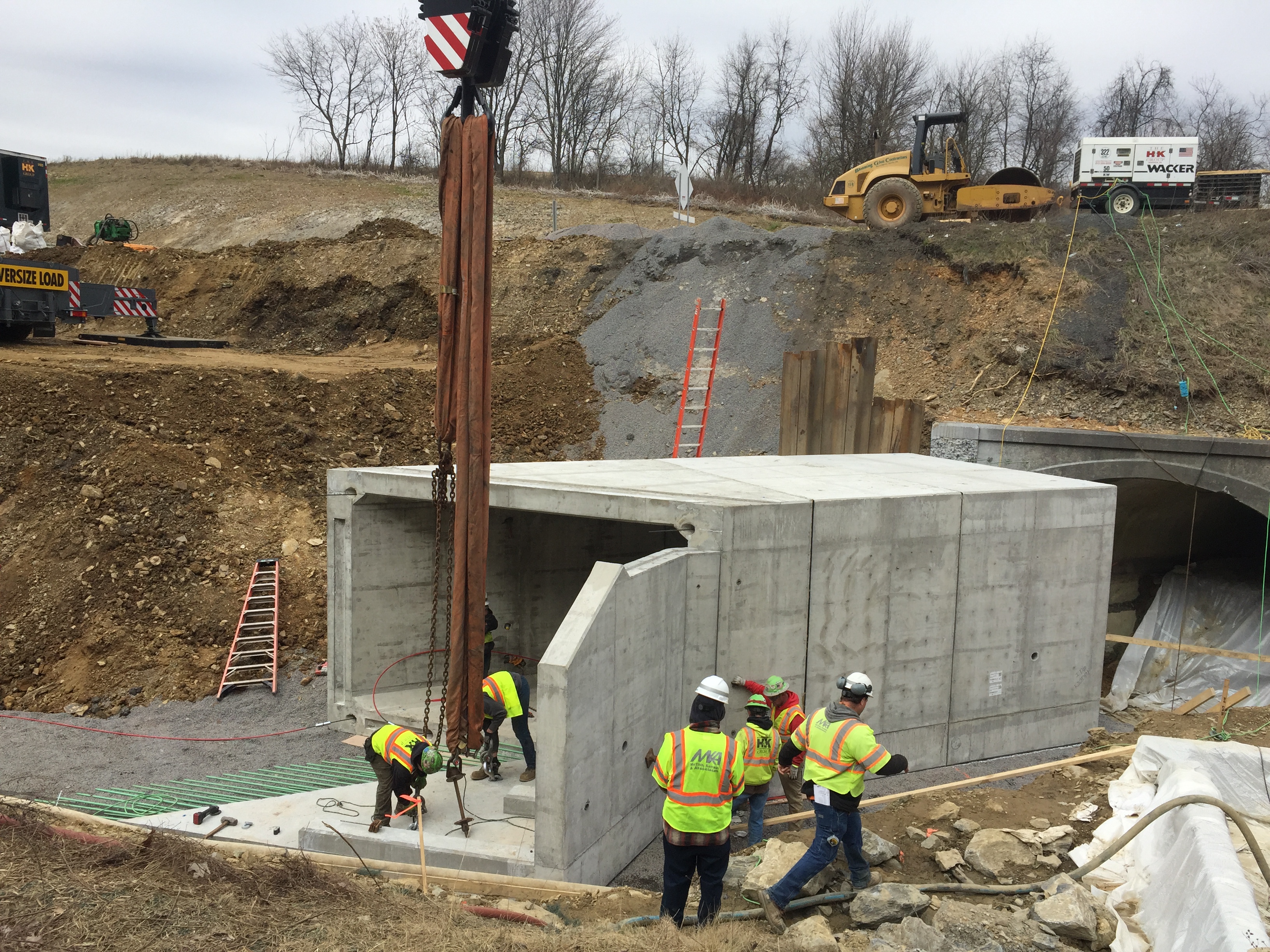
The project also includes adding a third lane (“truck climbing lane”) eastbound and westbound on the hill just east of PA 737.
The H&K Group, Inc of Skippack, PA is the general contractor on the project that began in November 2018 and is anticipated to be complete in May 2023.
A long-awaited project began in August to rehabilitate PA 248 (POW/MIA Remembrance Highway) in Carbon County between US 209 and the Northampton County.
Work on the project includes upgrading rock fence, upgrading median barrier, concrete patching, concrete joint rehabilitation, milling and paving, upgrading shoulders and guiderail, new pavement markings and other miscellaneous items. The project also includes rehabilitating interchange ramps on this section of PA 248.
J.D. Eckman, Inc. of Atglen, PA is the general contractor on the $13,869,778 project that is anticipated to be complete in June 2022.
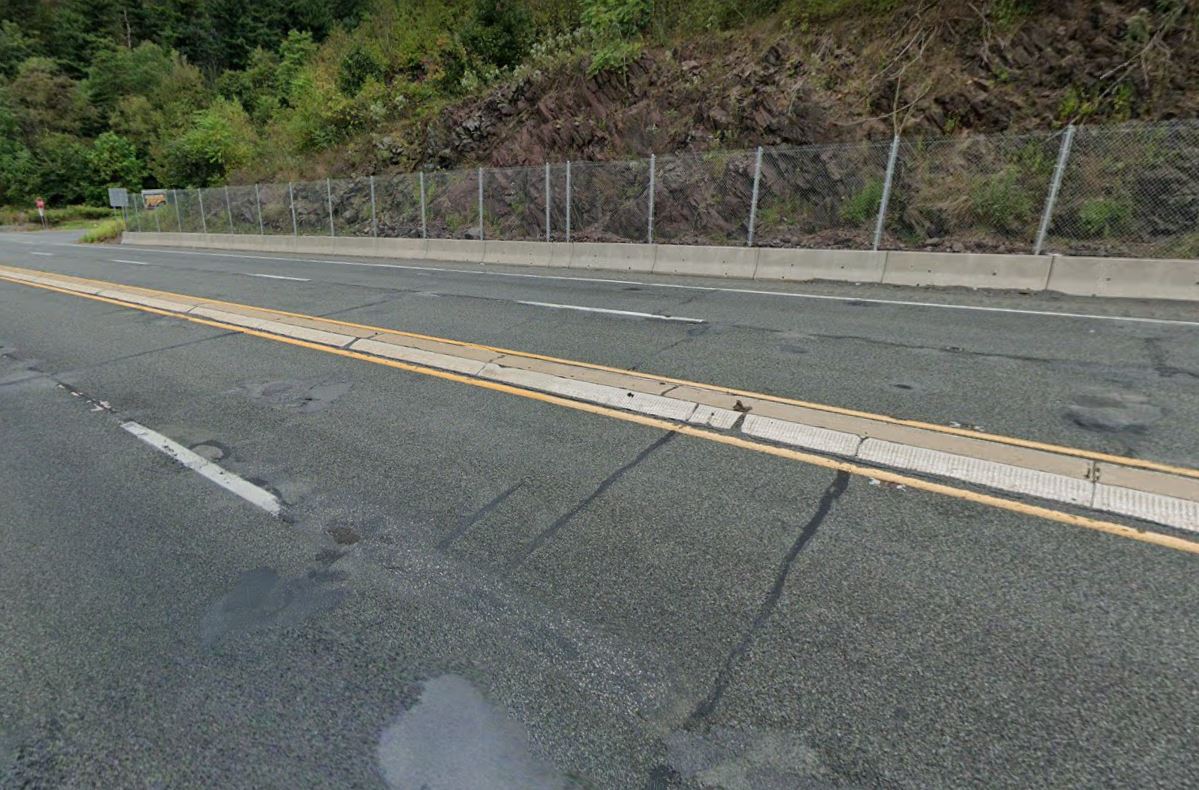
This section of PA 248 runs through East Penn, Franklin, and Lower Towamensing Townships, and Bowmanstown, Palmerton, and Parryville Boroughs and was first constructed in 1962 and received a major resurfacing in 1999. Smaller sections received minor resurfacing in 2012 and 2014. The average daily traffic volume on PA 248 in Carbon County varies between 18,813 and 22,161 vehicles.
A $19.1 million project began in early 2020 to reconstruct the 4-6 lane section of PA 100 from Industrial Boulevard to Main Street/Tilghman Street in Upper Macungie Township, Lehigh County.
This major project includes roadway reconstruction, storm sewer improvements, water main relocation, curb replacement, milling and overlay of the PA 100/I-78 interchange ramps, upgraded traffic signal equipment, ADA ramp improvements at the intersection of PA 100 and Schantz Road, a new cantilever sign structure at the entrance to the two-lane ramp from PA 100 north to I-78 east, and other miscellaneous construction.
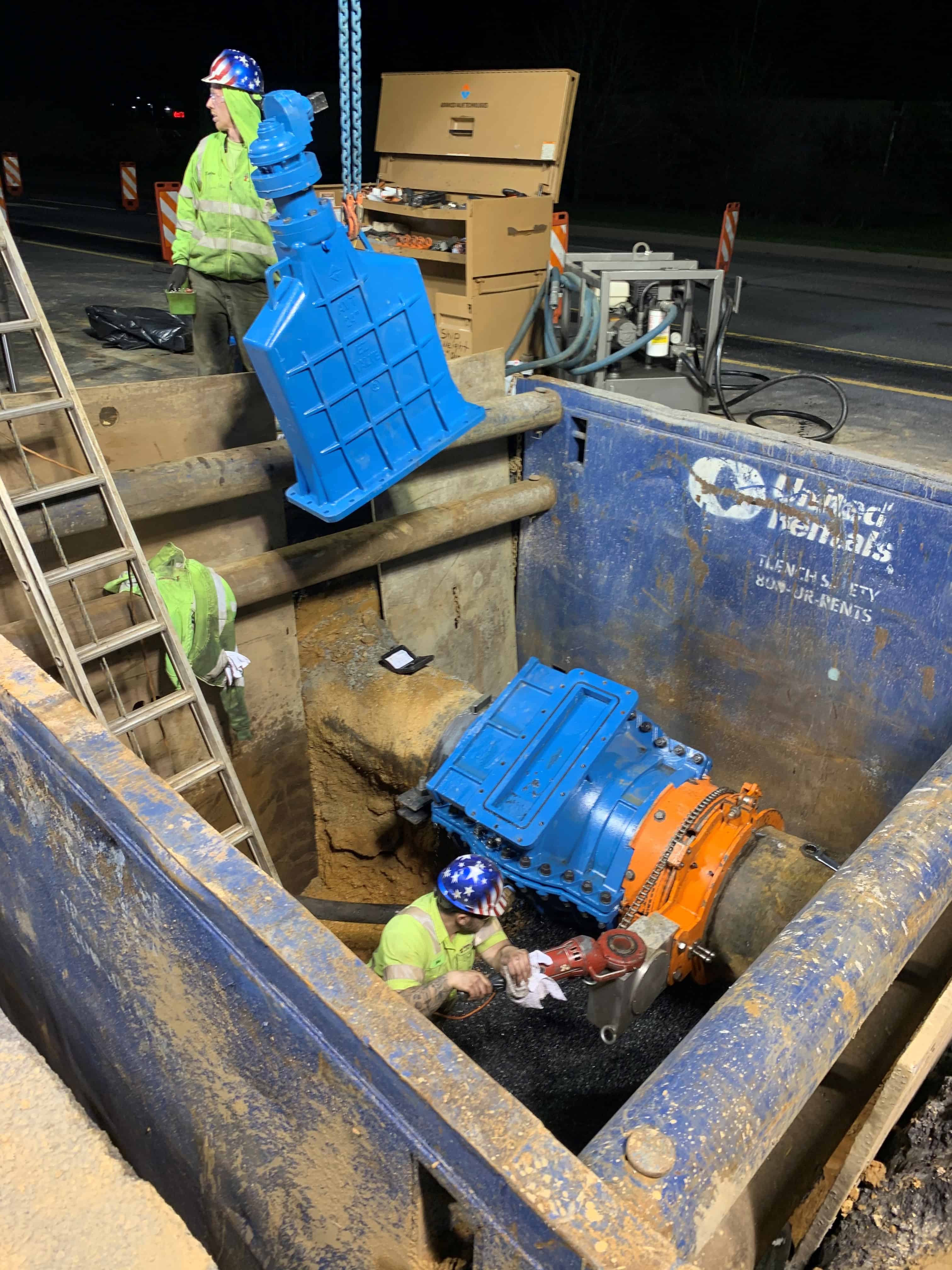
This section of roadway is a major commercial and industrial corridor in the Lehigh Valley, with an average daily traffic volume of over 36,000 vehicles (21% trucks). Manufacturers such as Boston Beer Company, Keurig Dr. Pepper, Nestle Waters N.A., Niagara Bottling, Coca-Cola, Ocean Spray and Bimbo Bakeries all have major production facilities along the corridor. And multiple large volume distribution facilities in the area include Amazon, Bridgestone Tires, Nestle Distribution, and Home Depot. This area also has many restaurants, hotels, and other retail businesses.
New Enterprise Stone & Lime Co., Inc. of New Enterprise, PA is the general contractor on the project, which is expected to be complete in August 2022.
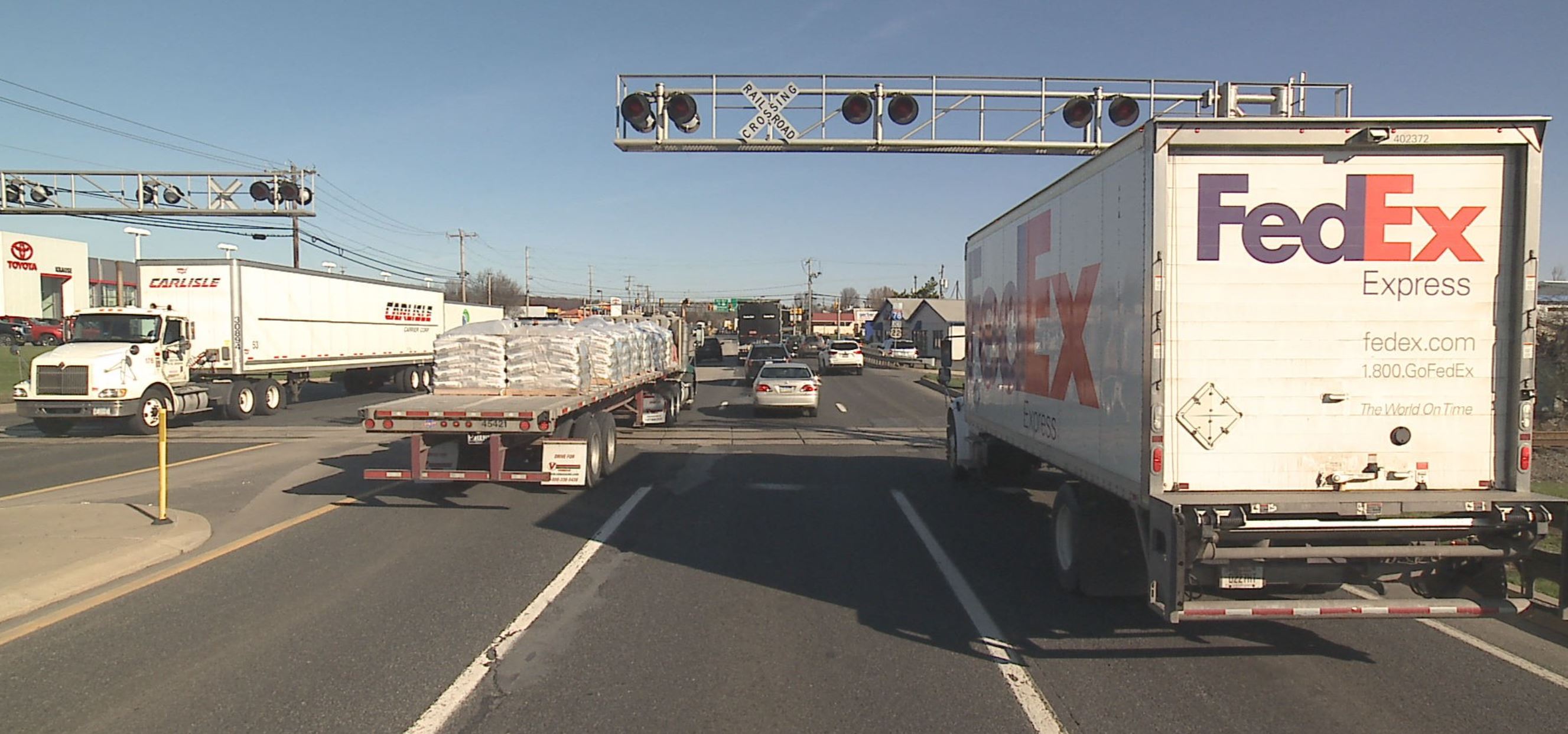
The sign crew in PennDOT’s Northampton County Maintenance Office is all about working smarter to prevent injuries. Using a sandbag filler they modified from a You Tube video, the crew was able to make 300 sandbags with four people and one loader in four hours.
Using the PennDOT version of the sandbag filler is less labor intensive as it uses the loader in place of hand shoveling, and the filler is “rolled” over so there is less bending.
The crew controlled the weight of the bag by adjusting the length of the PVC pipe. They used 15” pieces of PVC which yielded an average 40-pound bag. Having a consistent weight of sandbags can also lead to less injuries.
On the PennDOT version of the sandbag filler, the steel is used to act as a stand when the unit is rolled over. It can also be used as a lifting point for a forklift or loader.
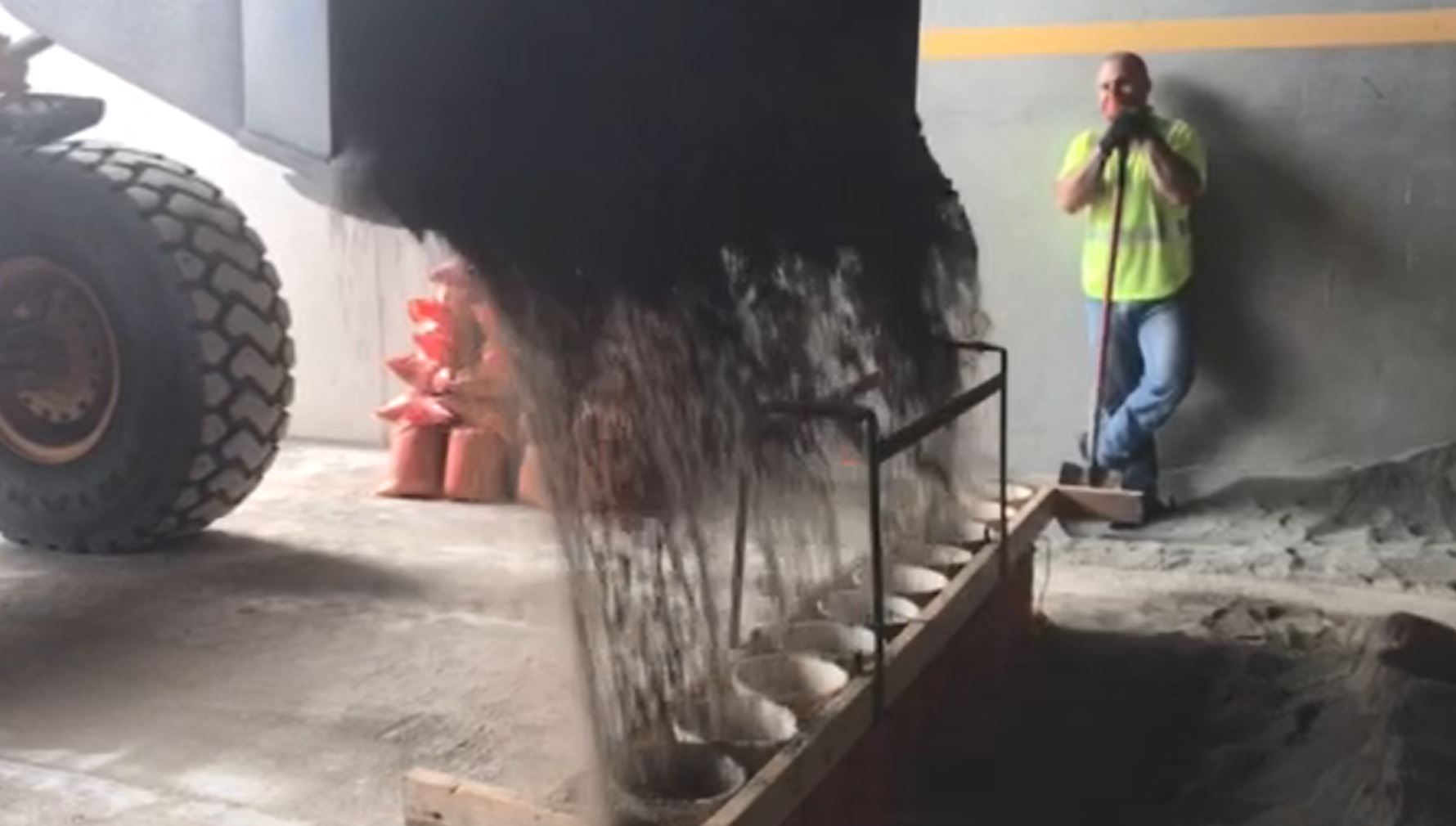
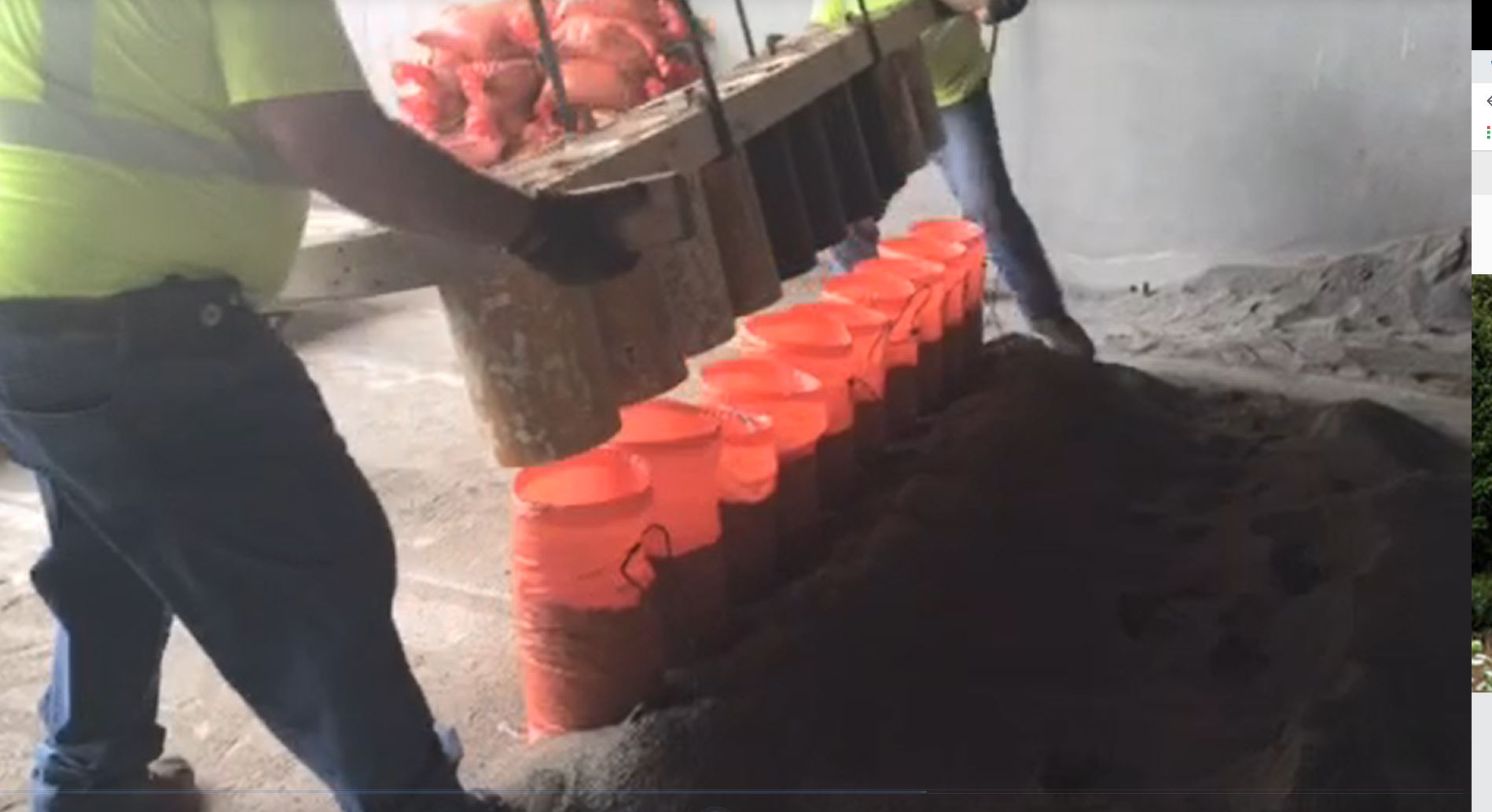
As many have also done, District 5 staff made the adjustment to teleworking during the COVID-19 pandemic.

With the COVID pandemic changing the way PennDOT conducts Public Involvement, District 5 had multiple Online Plan Displays in 2020. The Online Plans Displays included a Project Description, Location Map, Anticipated Schedule, Detour Map (if applicable), Project Plans and a Comment Form. The Project Manager contact information was also included as well as the District Press Officer’s.
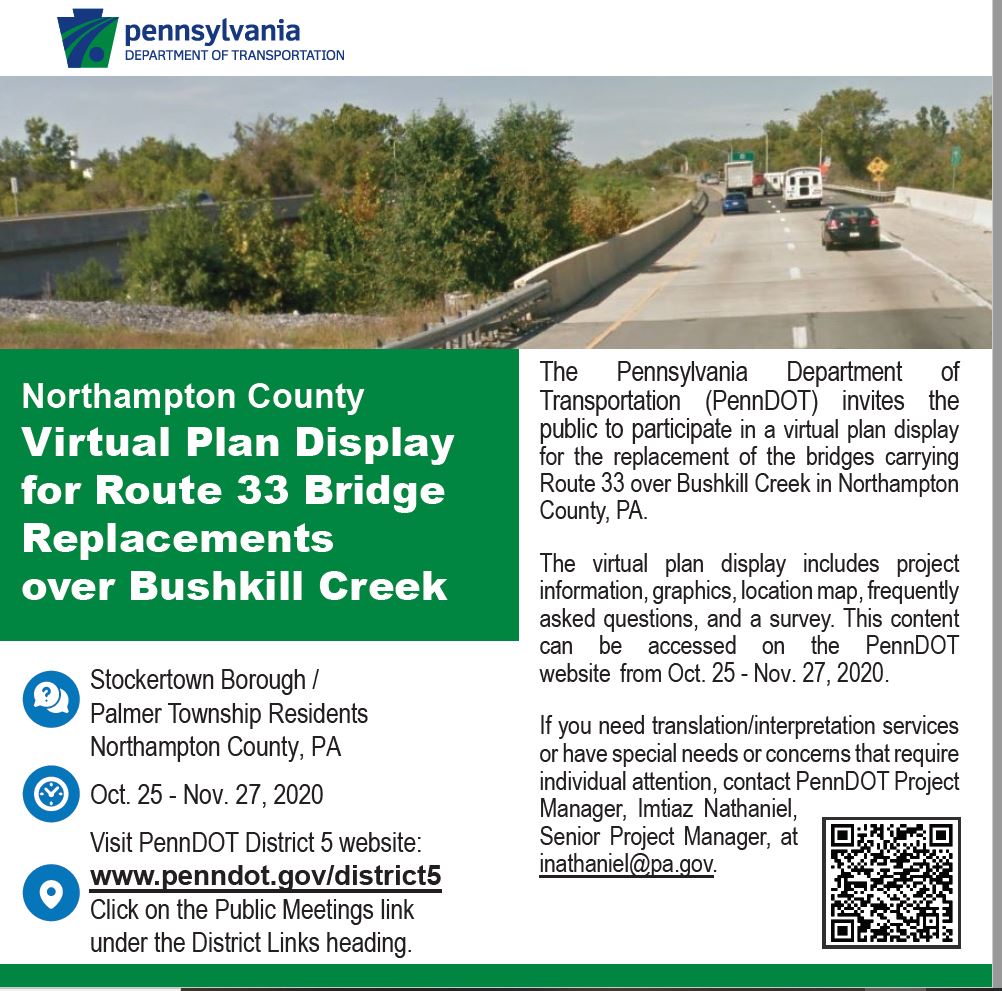
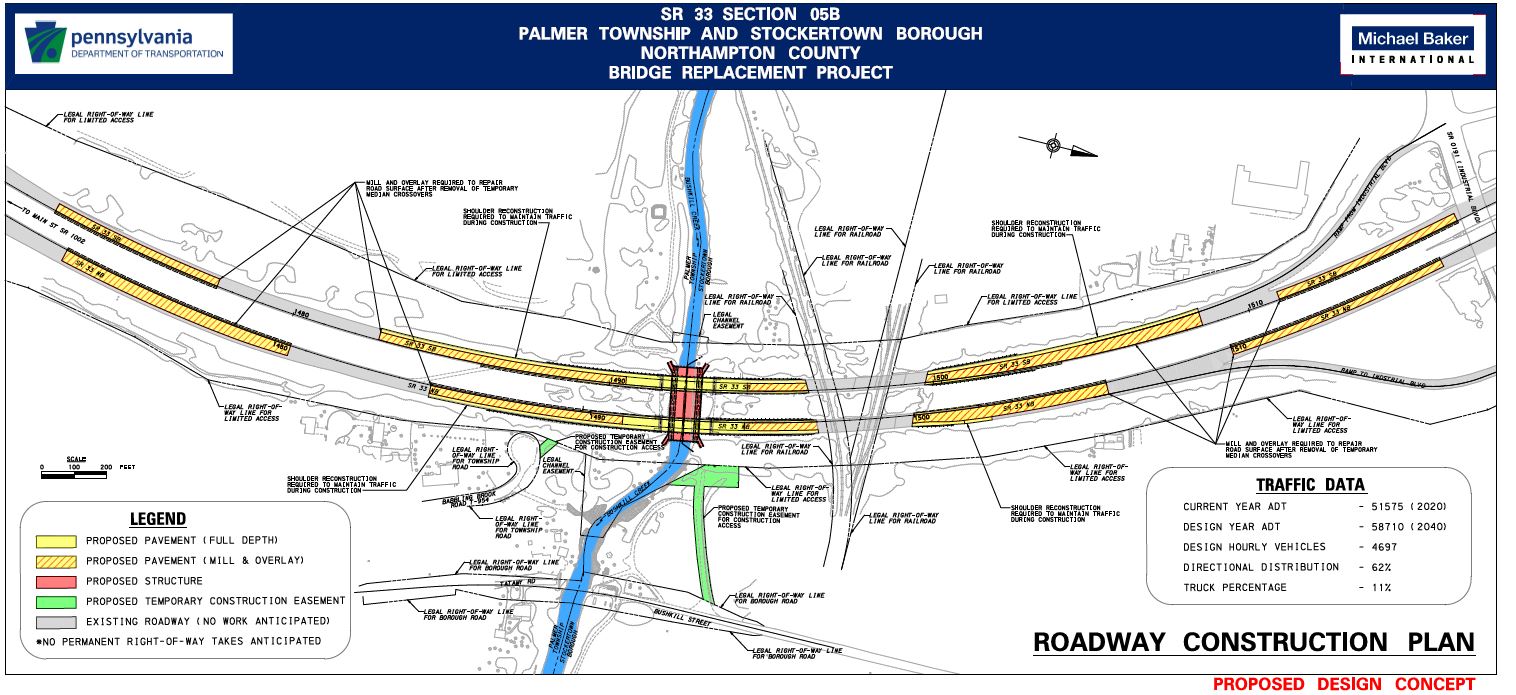
District 6 closed out construction contracts on 43 projects in 2020 totaling $1,070,615,231. Some of the most notable include:
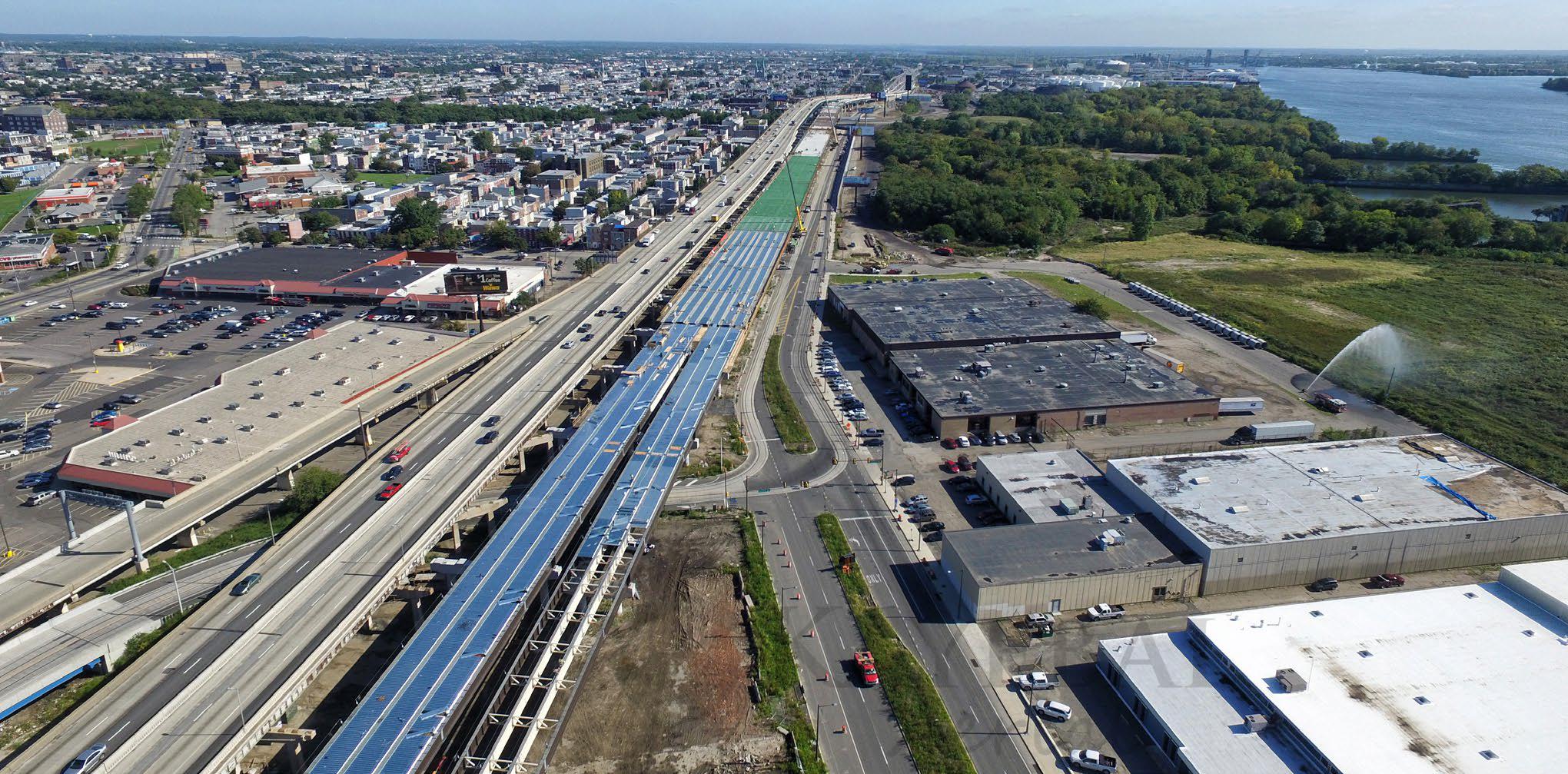
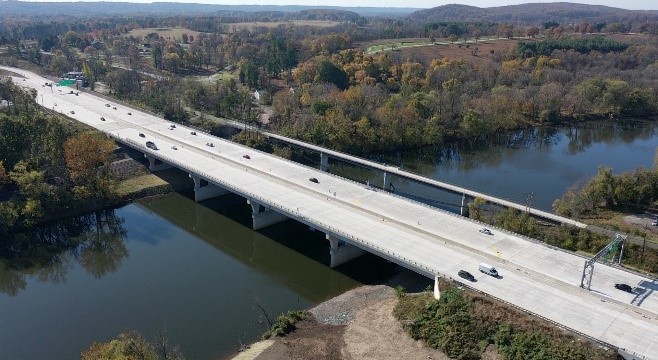
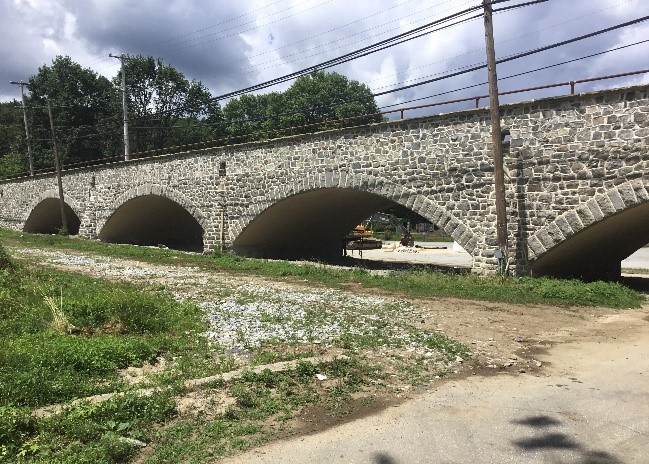
District 6’s commitment to historic bridge preservation garnered three 2020 Preservation Alliance Grand Jury awards for the rehabilitation of five historic structures across the five-county Philadelphia region.
The bridges that were recognized were:
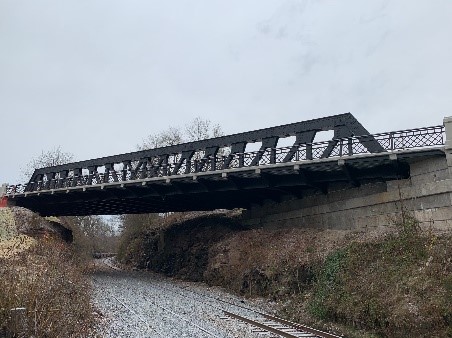
Two District 6 employees were recipients of the 2020 American Society of Civil Engineers (ASCE) Philadelphia Section awards. Sarah McInnes, the District 6 Geotechnical Engineer won Geotechnical Engineer of the Year and Lou Belmonte, Assistant District Executive of Operations won the Government Service Award.
Sarah McInnes is an active member in the ASCE Philadelphia Section and the Delaware Valley Geo-Institute, currently serves on the ASHE Board of Directors as the scholarship chair and participates on several TRB geotechnically-related committees. She has contributed to the Highway Geology Symposium on the national level since 2007, serving on the Host Committee for the 58th Symposium and on the Steering Committee since 2016. Sarah is also a technical advisor for three geotechnical research projects with Temple and Villanova universities. Sarah was nominated for and received this award based on her dedication to the geoscience discipline, service to ASCE, DVGI, ASHE and other affiliate societies.

Lou Belmonte earned the Government Service Award for his work developing the PennDOT Connects Bicycle-Friendly Resurfacing Program, which is a collaborative process to screen roadways on PennDOT’s maintenance program for opportunities to implement locally supported and regionally beneficial bike facility improvements. The Delaware Valley Regional Planning Commission (DVRPC), who nominated Lou for the award, explained how he helped get the program established, going so far as to find creative ways for project requests to be accommodated even after paving projects have been let. Lou’s approach has been critical in getting the program established and implementing a number of successful improvements even as the program was still in the early stages of development.
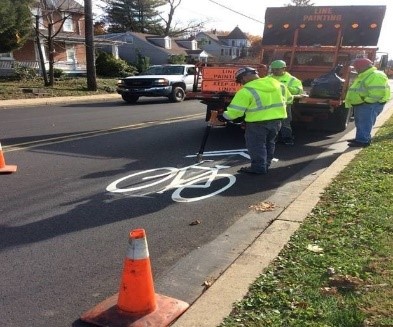
District 6 continues to support and advance the department’s emphasis on interstate and expressway preservation.
In 2020, District 6 continued construction on projects to rehabilitate and repair pavement and bridges on Interstate 95 in Delaware County, U.S. 422 in Montgomery County and Route 309 (Sellersville Bypass) in Montgomery and Bucks counties.
The $69.6 million project on I-95 includes rehabilitating and resurfacing pavement and repairing 15 structures on more than 11 miles of the interstate from the Delaware state line to just north of the Route 420 Interchange.
The $19.3 million project on U.S. 422 includes rehabilitating pavement and repairing seven structures along a five-mile section between the Royersford/Trappe and Sanatoga interchanges in Limerick and Lower Pottsgrove townships, Montgomery County.
The $54.3 million project on Route 309 (Sellersville Bypass) includes the reconstruction and rehabilitation of the 9.1-mile corridor and eight bridges from Unionville Pike in Hatfield Township, Montgomery County, to just north of Rich Hill Road in Richland Township, Bucks County.
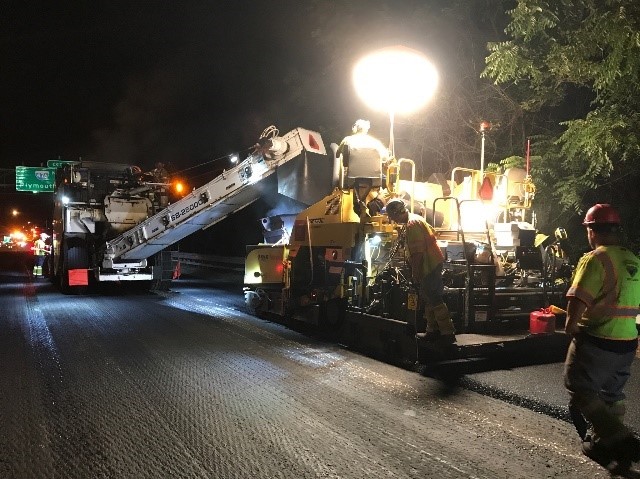
In 2020, PennDOT and the Department of General Services issued Notice to Proceed to Heim Construction Company as the design-build contractor for a new Regional Traffic Management Center (RTMC) and district parking garage in King of Prussia. A formal groundbreaking ceremony for these additions took place on August 20, 2020, with work commencing on the new parking garage, which is scheduled to finish in June 2021. Construction of the new RTMC building will begin in January 2021 and is scheduled to be operational by late 2022 with total project completion by May 2023.
The new southeastern RTMC will be a mission-critical facility responsible for optimizing the safe and efficient movement of traffic across the Philadelphia region through the application of complex transportation systems and incident management strategies along all limited access and major arterial roads. The RTMC maintains 24/7/365 operations, dispatches State Farm Safety Service Patrols, and coordinates closely with the Pennsylvania State Police, City of Philadelphia, and the five county Emergency Operations Centers (EOC) to optimize highway safety and emergency response across the region. PennDOT currently operates 454 CCTV traffic cameras on regional expressways and arterials in District 6, as well as 790 detectors, 72 variable speed limit signs, 201 dynamic message signs and 15 ramp meters via more than 700 miles of fiber optic, including direct connections with the five county EOCs, City of Philadelphia, and numerous agencies and municipalities.

The need for a new RTMC is driven by the District’s Active Traffic Management (ATM) vision. ATM expansion initiatives underway on many major regional corridors (I-76, I-95, I-476, US 422, US 30), as well as the department’s venture into traffic signal ownership, will result in a doubling (or more) of both devices and staffing over next decade. Although the current RTMC has been retrofitted multiple times to accommodate new technologies, systems and workstations over the years, it is currently operating well over-capacity and simply has no remaining expansion capability.
With a current focus along the I-76 (Schuylkill Expressway) mainline and parallel corridors, the District continues to move forward with several ATM initiatives including:
Through a partnership with Mural Arts Philadelphia, District 6 has helped transform and beautify various communities across the City, while also enhancing its infrastructure.
District 6’s highway lighting maintenance team was instrumental in completing and activating Philadelphia’s largest lighted mural display to-date, Electric Philadelphia, which was completed in fall 2020 at the 6th Street underpass at Interstate 676.

PennDOT partnered and allowed right of entry for the Philadelphia Mural Arts Program and installed the power circuit and necessary hardware to supply electricity for the mural’s lighted artwork. This required a significant effort by the highway lighting team through design, review, and execution by the contractor.

PennDOT also installed walkway lighting along 6th street between Wood Street and the I-676 overpass to provide more visibility and safety for pedestrians.

District 6 is currently coordinating the right of entry approval for a new Mural Arts Philadelphia project in the 21st Street underpass at John F. Kennedy Boulevard.
In January 2020, TRUSS received the Central PA WTS Rosa Parks Diversity & Leadership award. This award celebrates individuals and organizations that make significant contributions promoting diversity, inclusion, and multi-cultural awareness within their organization. Then, in April 2020, TRUSS received the APC TQI Diversity & Inclusion award. This award honors private and public sector organizations that are champions in advancing diversity and fostering a culture of inclusion within their workforce.
The $104,747,344 project to widen and rebuild a 2.77-mile section of I-83 from just south of Exit 48 for Union Deposit Road, through Exit 50 for U.S. 22 (Colonial Park/Progress), to Exit 51 for Interstate 81 continued into its 2nd year of construction. The Project is approximately 80% complete.
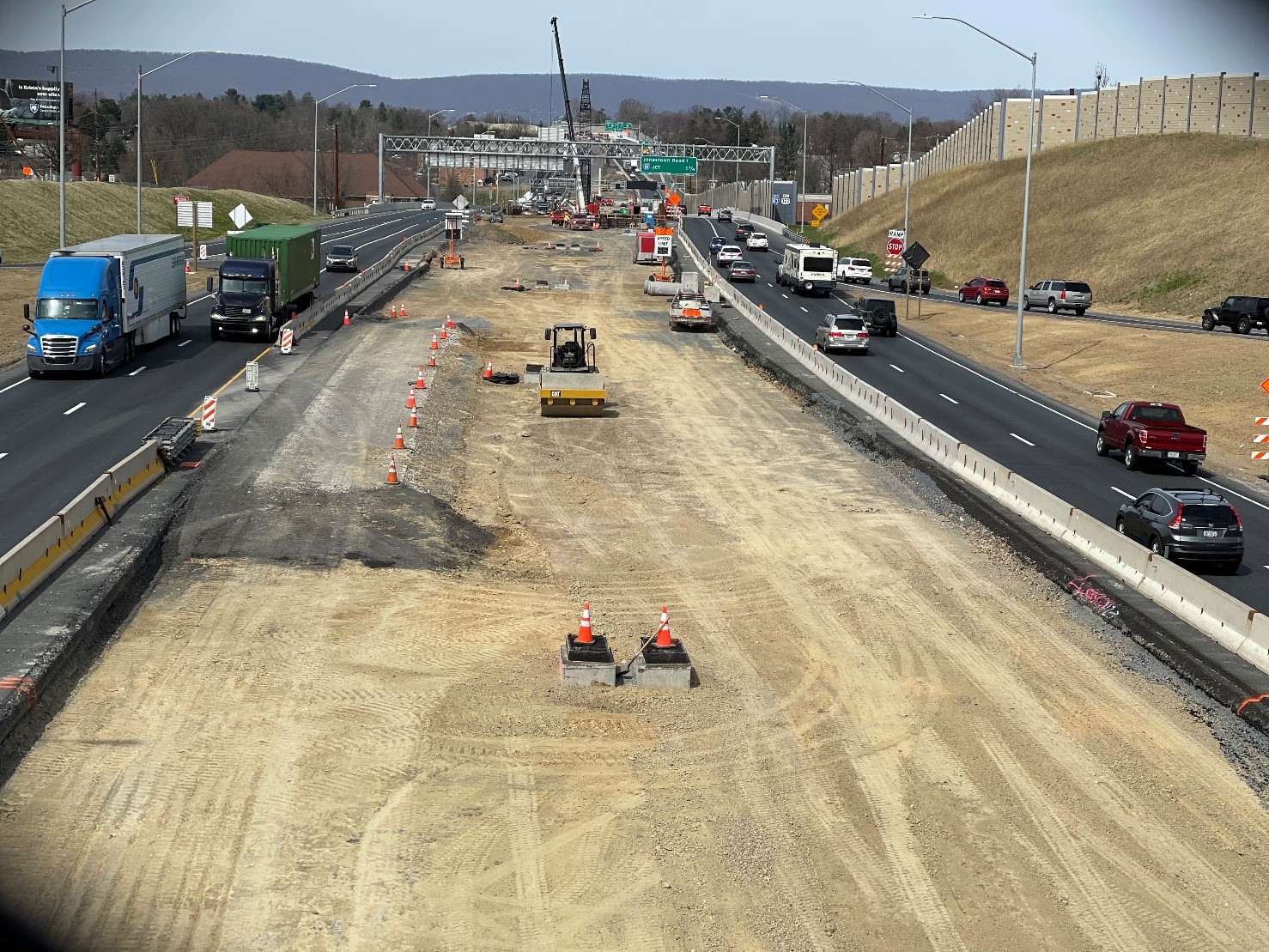
District 8 let the 1st major project of 6 as part of the $350 million I-83 North York Widening Improvements. The North George Street & Exit 22 Interchange Improvements Project will remove an existing deficient on-ramp and relocate it north of its current location.
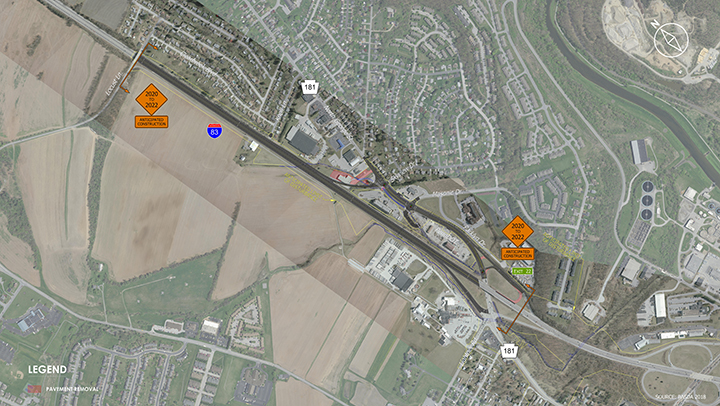
District 8 had 2 Diverging Diamond Interchange’s under construction in 2020, both are due to open to traffic in 2021.
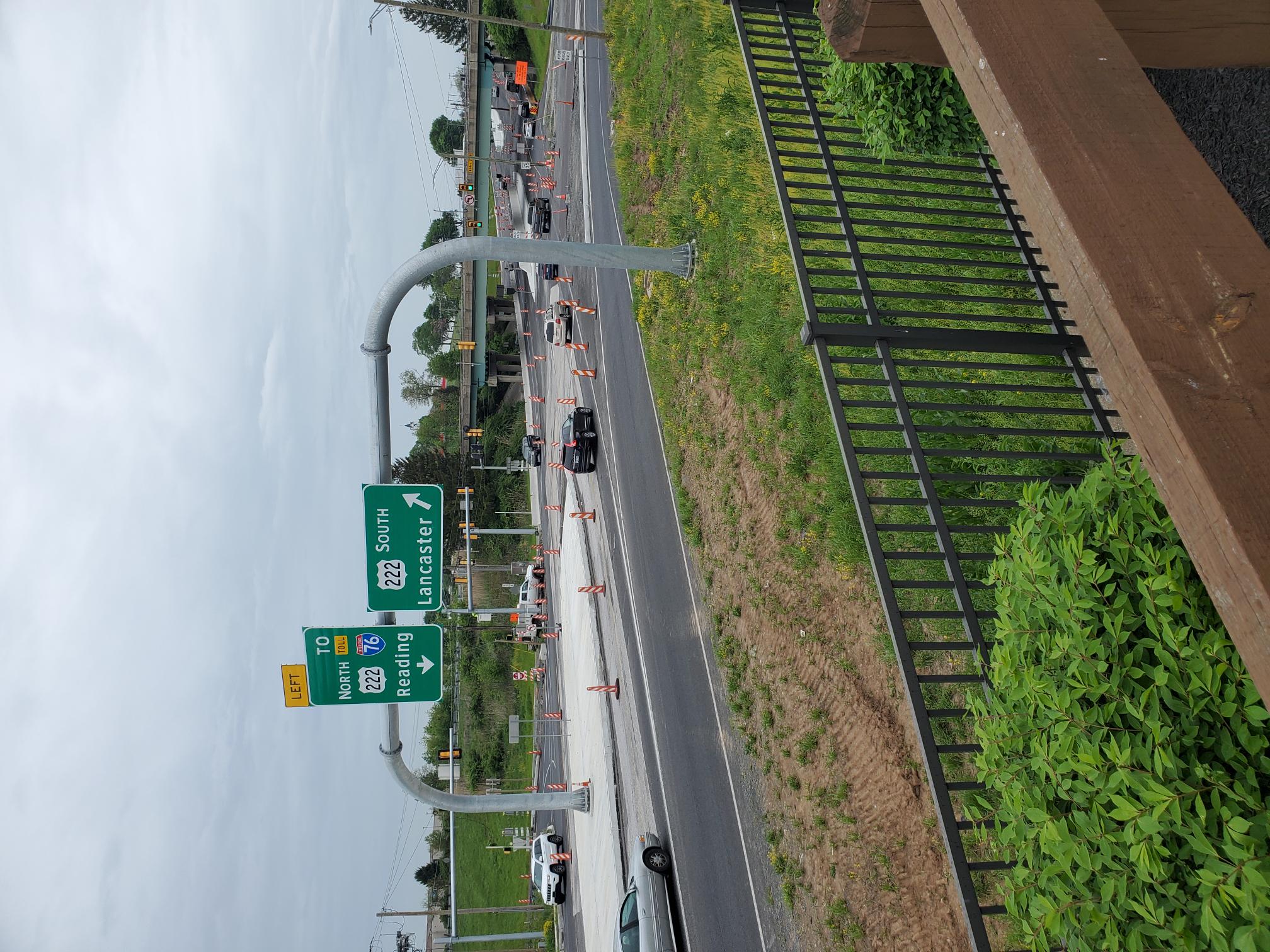
District 8 has 5 Roundabouts under Design and 3 Roundabouts under Construction in 2020 with 1 opening to traffic:
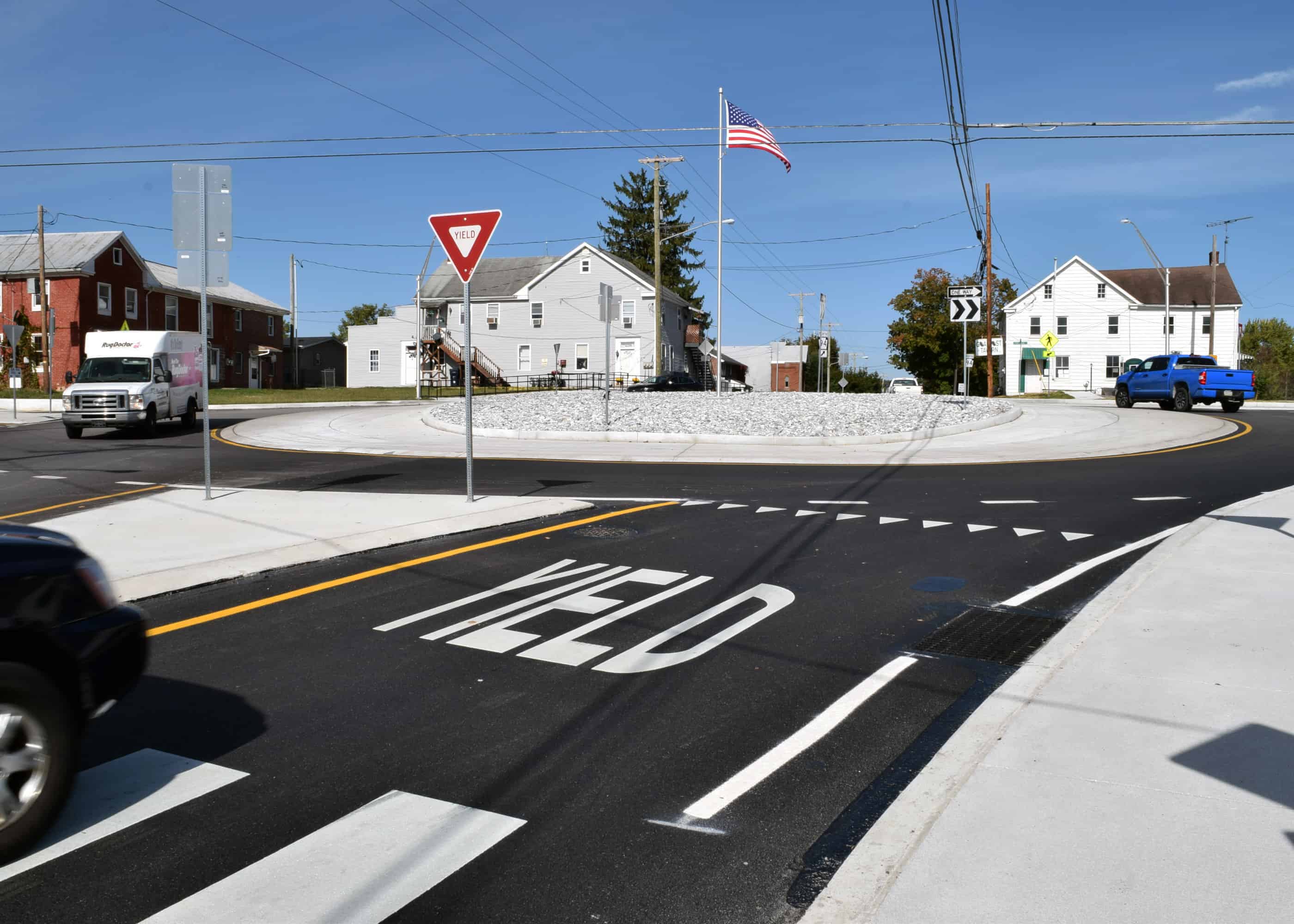
For several years, District 8 has been monitoring a rock slope overlooking US 22 / US 322 in Perry County just north of Newport. Rocks were consistently falling on the roadway due to freeze thaw cycles. A rock scaling contractor and removed 5,500 tons of rock from the slope. The slope was then draped with 40,000 SF of fence to prevent future rocks from reaching the highway.
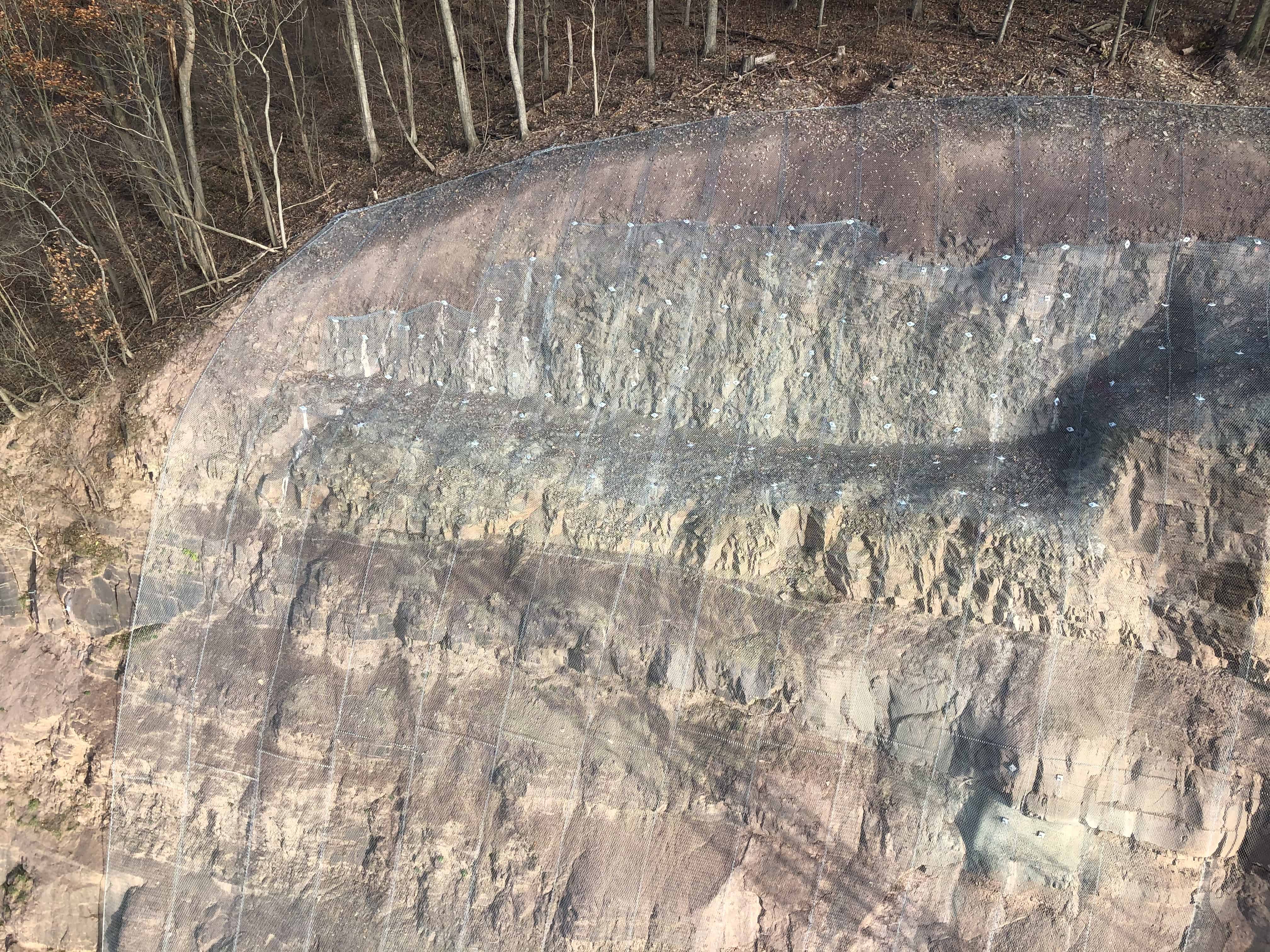
County Maintenance Organizations concentrated on Cyclical Maintenance Operations in the past year such as shoulder cutting, crack sealing, and seal coats. They also worked on pipe replacement and preparing roads for future paving projects.
Adams County Maintenance completed a 48” X 76” pipe replacement project on Fish & Game Road (SR 2012) near Littlestown. The work also included cast-in-place headwalls.
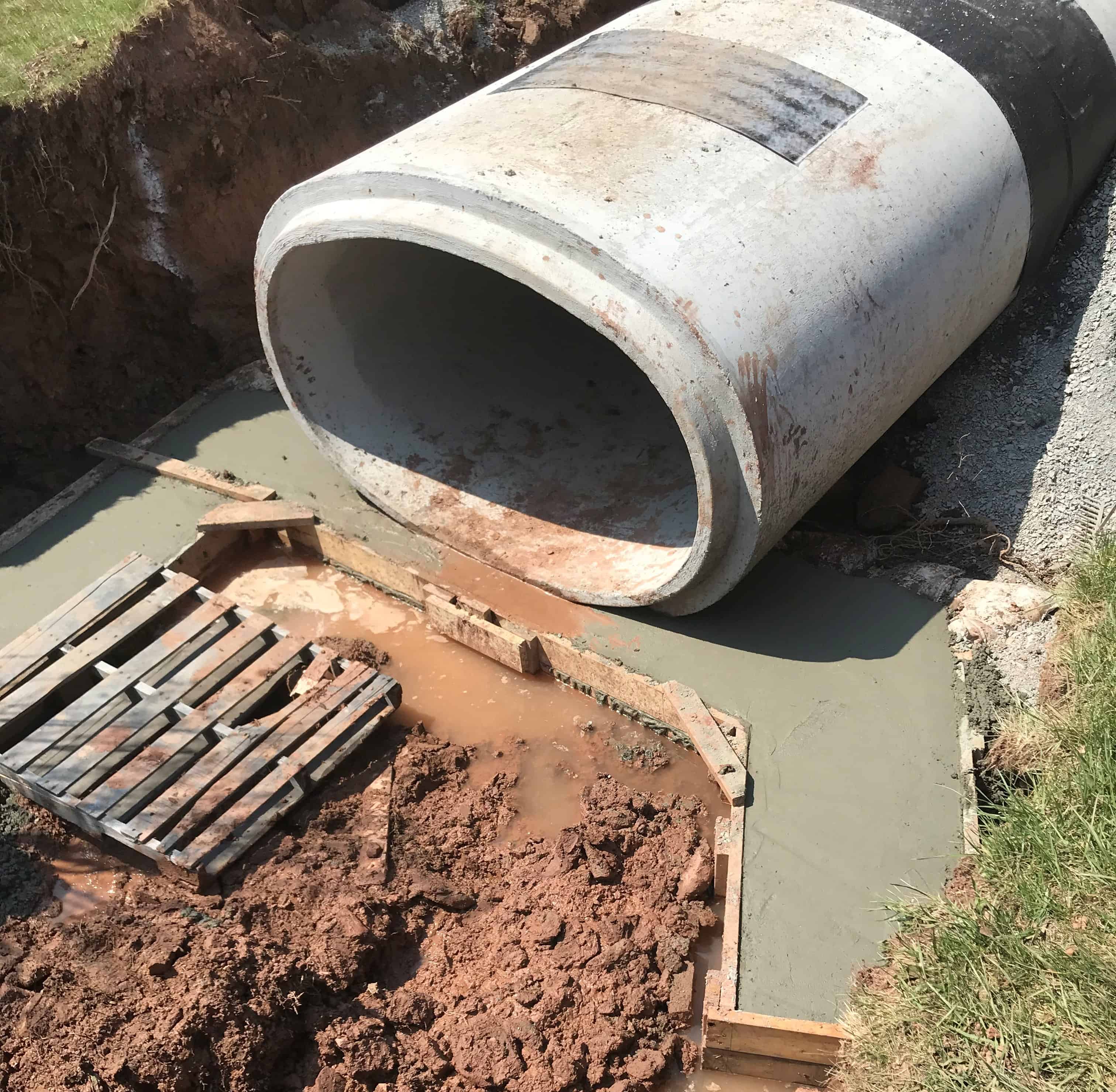
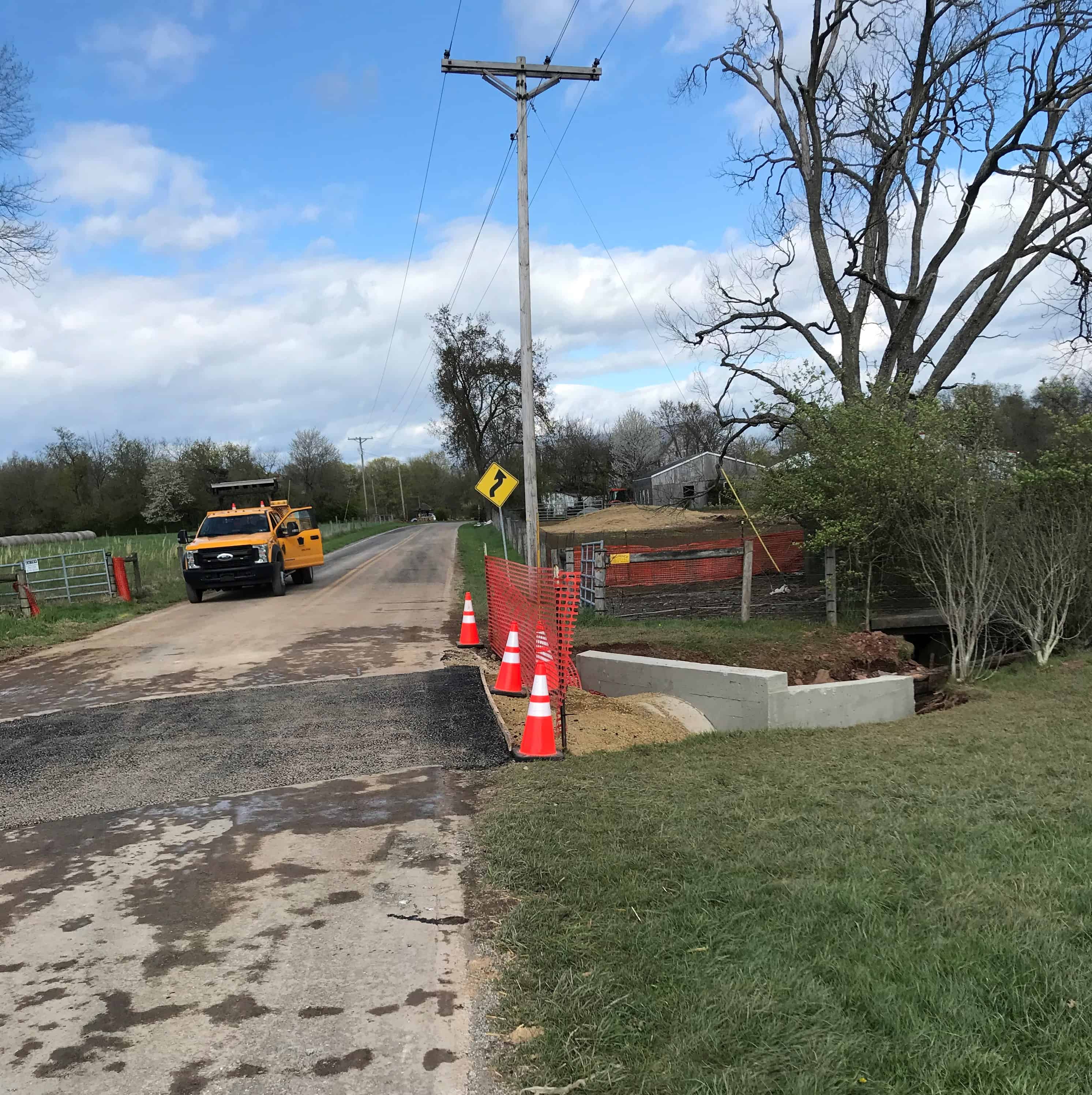
With the COVID pandemic changing the way PennDOT conducted Public Involvement, District 8 had 27 Online Plan Displays in 2020. The Online Plans Displays included a Project Description, Location Map, Anticipated Schedule, Detour Map (if applicable), Project Plans and a Comment Form. The Project Manager contact information was also included, as well as the Press Officer’s.
District 8 had over 70 Connects meetings with 69 Municipalities.
District 8 has on-going coordination with stakeholders for improved Multimodal Connectivity on several projects.
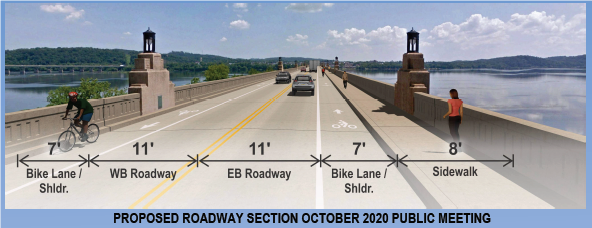
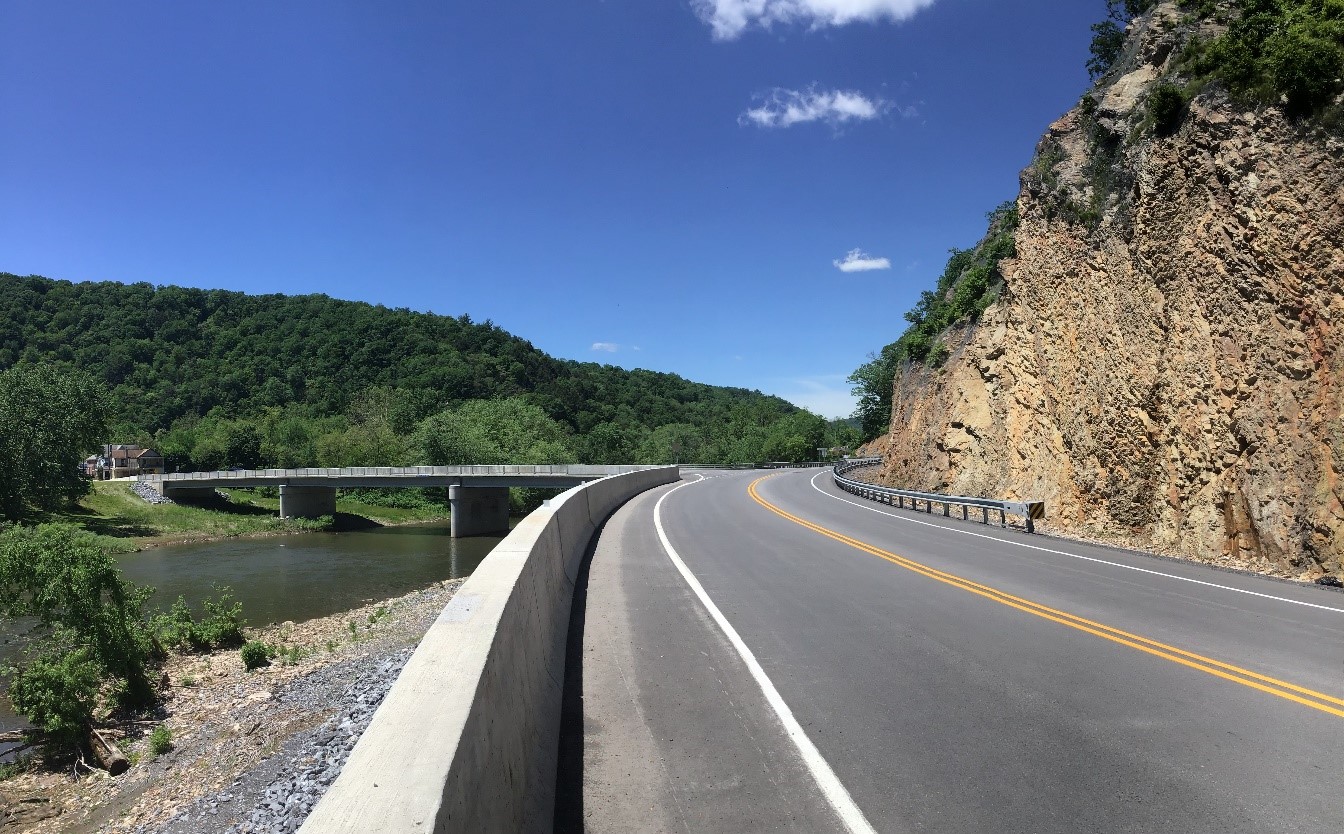
On August 18th, 2020, the Route 915 Hopewell Bridge Project in Hopewell Borough, Bedford County was opened to traffic. The project consisted of replacement of the existing bridge carrying Route 915 over the Raystown Branch of the Juniata River and realignment of Route 26 to improve safety at the adjacent intersection. These improvements required over 450 feet of retaining walls, excavation of the River Mountain rock slope along Route 26, installation of anchored wire mesh to stabilize the rock slope above Route 26, and other miscellaneous construction. The new bridge is a 3-span continuous PA bulb-tee beam bridge with an overall length of 308 feet and was realigned upstream of the existing bridge to create a plus intersection with Route 26. The project was completed by HRI, Inc., of State College.
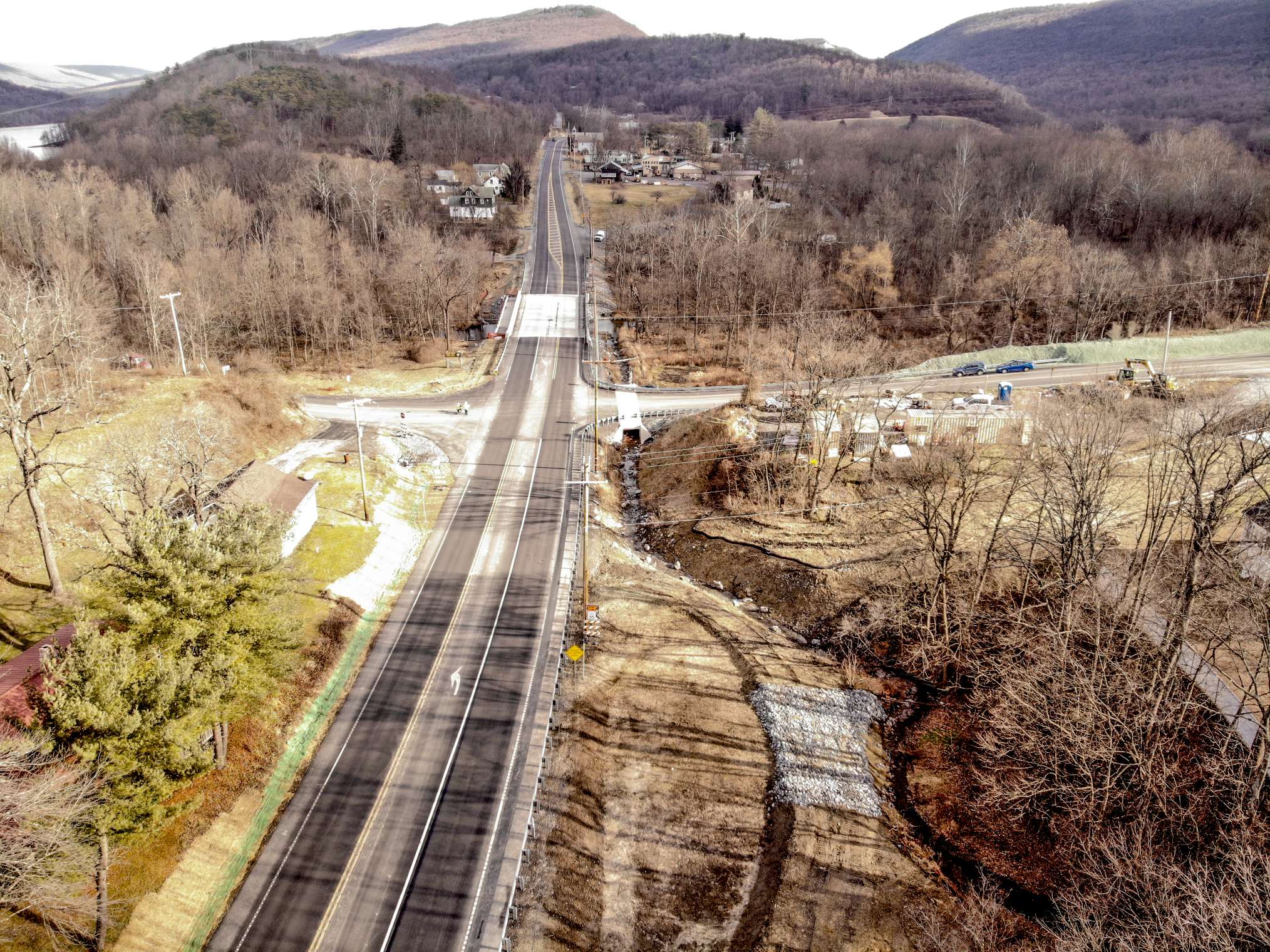
Since 2012, D9 has let 99% of projects without missing a committed let date and remained a statewide leader in estimating pre-bid construction cost. The three projects that were delayed were a result of issues with an NPDES permit. The District has subsequently created a Stormwater Management Committee aimed at assisting Project Managers in identifying potential issues before permits are submitted to the DEP.
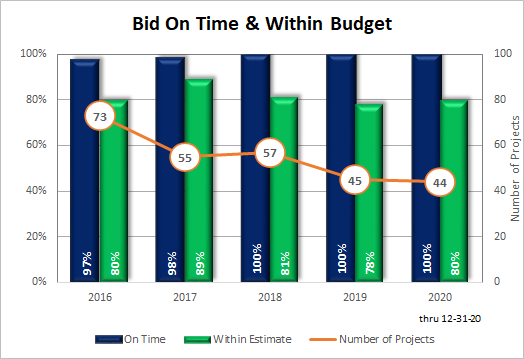
D9 is also working towards the completion of our Decade of Investment (DOI) commitments. By the end of CY 2020, 75% of DOI projects have been let. We are projecting to deliver 83% by the end of CY 2025.
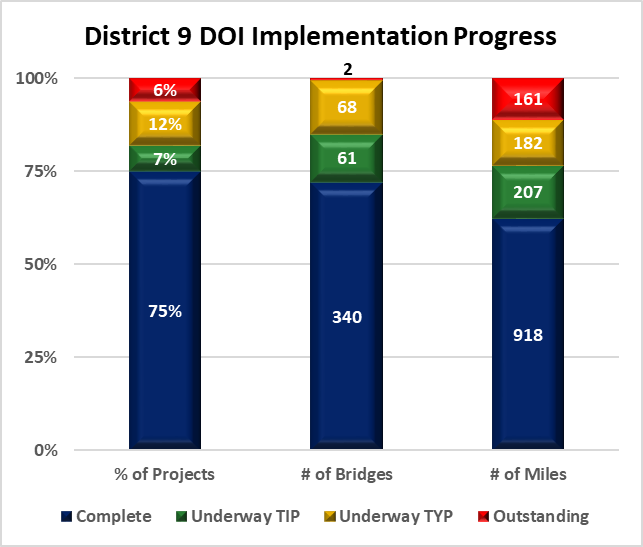
D9 is planning to complete 489 miles of surface improvements in CY 2021 which includes resurfacing contracts and sealcoating.
During construction, D9 is committed to delivering quality projects that meet our stakeholders' needs while making sound, cost-effective decisions when addressing unforeseen conditions. During the 2020 construction season, the District’s cumulative final construction contract amounts were managed to within 2.8% of original bid amounts.
Since 2005, the district has rehabilitated or replaced 599 state-owned poor bridges (28.5% of total inventory) comprising 1,886,000 sf of deck area at a cost of approximately $735 million.
Our 25-year goal of 7.9% poor deck area, established in 2008, was met in 2013 after only five years, and our current % poor deck area is 2.4%. Our 25-year goal of 9.4% for number of poor bridges was met in November 2017, 16 years ahead of schedule.
The district is committed to maintaining our bridges in fair or better condition and avoiding the unacceptably high poor percentages experienced in the past.
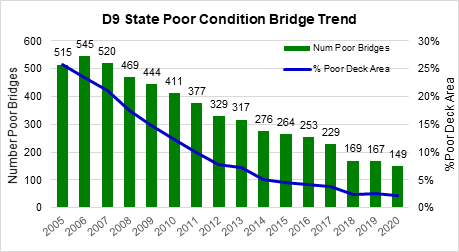
D9 is committed to the successful implementation of PennDOT Connects. In CY 2020 we conducted PennDOT Connects municipal outreach for the remaining 2021 TIP Projects that were not completed in CY 2019. Since January 2020, we have reached out to 16 municipalities to conduct interviews on 14 projects. We have found that most municipalities (88%) were responsive and willing to discuss the projects in their jurisdiction. The initial meetings resulted in the need for follow-up contacts with the municipality approximately 19% of the time. We continue to utilize our District Quality Assurance process to ensure these follow-ups occur before the project advances into final design.
In CY 2021, D9 plans to conduct PennDOT Connects outreach for candidate projects for the 2023 TIP update.
| #Projects | # Follow-Ups | % Follow-Ups | |
|---|---|---|---|
| Blair | 1 | 0 | 0.0% |
| Cambria | 3 | 0 | 0.0% |
| Bedford | 4 | 2 | 25.0% |
| Fulton | 2 | 0 | 0.0% |
| Huntingdon | 1 | 1 | 100% |
| Somerset | 3 | 0 | 0.0% |
| D9 Totals | 14 | 3 | 21.4% |
The District is continuing its efforts to emphasize sectional cycle maintenance for shoulder cutting, crack sealing, and sealcoat. Some counties will be committing additional resources in 2021 to complete work that was scheduled in the spring and summer of 2020 but not performed due to COVID shutdowns.
Counties will continue to perform the necessary prep work in advance of these activities. The prep work will include activities such as flushing pipes, replacing pipes, tail ditch cleaning, side dozing, base repairs, and pothole patching. District 9 remains committed to maintaining the quality of our highway network and will continue to emphasize the right treatment at the right time.

Incident Command is based in situational awareness and real-time communications. Prior to COVID-19, the District had operated a state-of-the art Incident Command Center which had always required in-person attendance. During the pandemic, the District staff was challenged to find a way to communicate from home while teleworking during winter weather events. An innovative approach utilizing Microsoft Teams was implemented. An open Teams meeting call was established for the duration of the activation, which allowed executive staff, county management and ICC staff to dial in at any time and obtain real-time communications and situational awareness on an open telecommunication line. Within the Teams page, a Wiki was formed with all relevant information including staff contact numbers, road closures, and Assistant County Manager shift schedules. Additionally, Event Logs were stored on the page for easy access, and After Action Reviews were hosted on the page.
The District staff has found the “Virtual ICC” to be so effective that they are considering its use in the future for off-hours incidents. This eliminates the need for ICC staff members to leave the safety of their homes when emergency events may dictate otherwise. The District Command Center will continue to evolve as technology allows.
During the 2020 construction season and the onset of COVID, District 10 staff searched for ways to increase safety and reduce physical contacts. One such way that contacts were reduced was through eTicketing for our asphalt deliveries.
Through eTicketing, employees could use one of four proprietary software systems integrated with the producer’s plants. They could also view and/or photograph the physical ticket then record the data in OneNote.
The four approved eTicketing softwares that were used in District 10 were: CONNEX by Command Alkon, DOTslip, FleetWatcher, and Libra Sentinel. These systems provide virtual solutions to track and manage material delivery in real-time.
These systems provided access for our inspectors to electronically write on the eTickets and gave them the ability to save the entire days’ placement of eTickets to a PDF document. Additionally, the inspector could photograph the ticket and record all the necessary data in a OneNote spreadsheet for the inspectors’ use. Using these eTicketing software systems, we were able to reduce physical contacts and increase the productivity of our process.
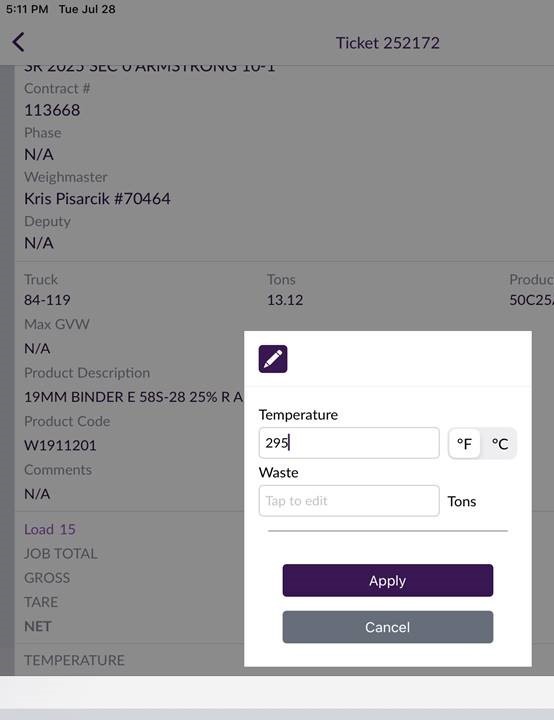
Armstrong County piloted utilizing Mastic material on State Route 28 in the fall of 2019. The product has now successfully gone through two winter seasons and still looks like it did when it was placed. The initial cost of the Mastic material is more expensive when comparing it to our normal crack sealing material, however it can provide longer term repairs to larger cracks in the pavement.
Some facts about the Mastic Operation are:
Overall, with the way this material is holding up the condition of the road it is showing to be very effective. In the long run it will save the County time and money as areas will not have to be addressed every year once the Mastic is placed.
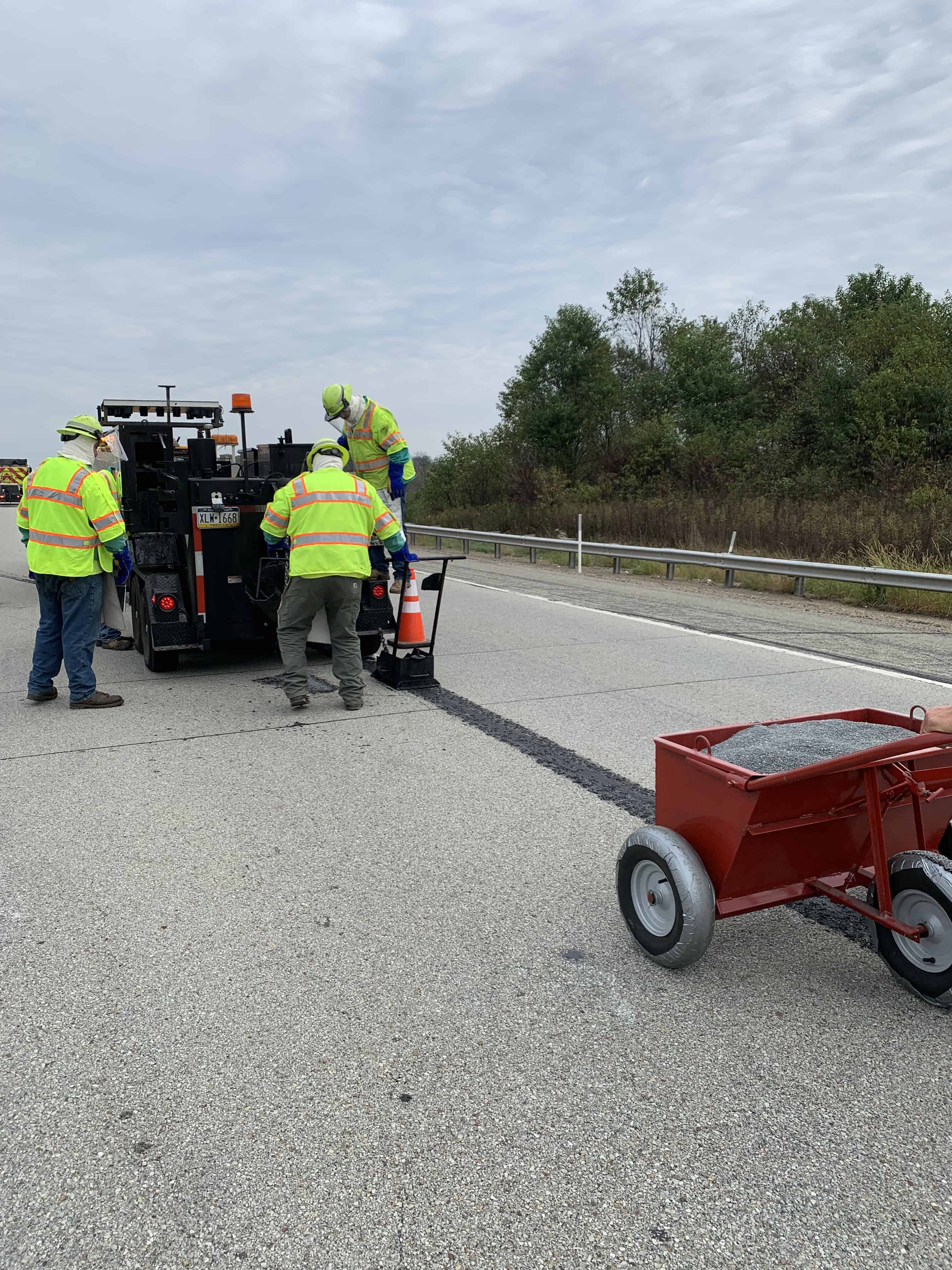
COVID has impacted many things about the way we do business. Some creative solutions have been used to work within the guidelines while saving money and increasing employee productivity. In District 10, Indiana and Jefferson Counties implemented alternate work schedules with the Sealcoat Operations crews to eliminate overtime and continue to complete jobs efficiently. Using this solution, crews increased production by 17% while showing an overall 56% reduction in overtime costs based on the 2019 costs.
The Balls Bend project is one project in an overall corridor improvement initiative on State Route 228 in the quickly developing region of southern Butler County. The approximately 1.3-mile-long project addresses adverse roadway curvature, capacity and access issues and includes substantial horizontal and vertical realignment of the existing roadway. It widens the roadway from two lanes to four lanes (two through lanes in each direction). The project also includes installation of auxiliary turning lanes at various locations and the installation of a new traffic signal at the State Route 228/Harbison Road/Park Road intersection.
The project funding is a combination of state and federal funds including approximately $12.8 million of Federal BUILD Grant funding that was secured by the County of Butler as part of the “Gateway 228” initiative. In 2018, Butler County, with assistance from Delta Development and in coordination with District 10, was successful in obtaining a federal BUILD Grant – part of $1.5 billion distributed nationwide.

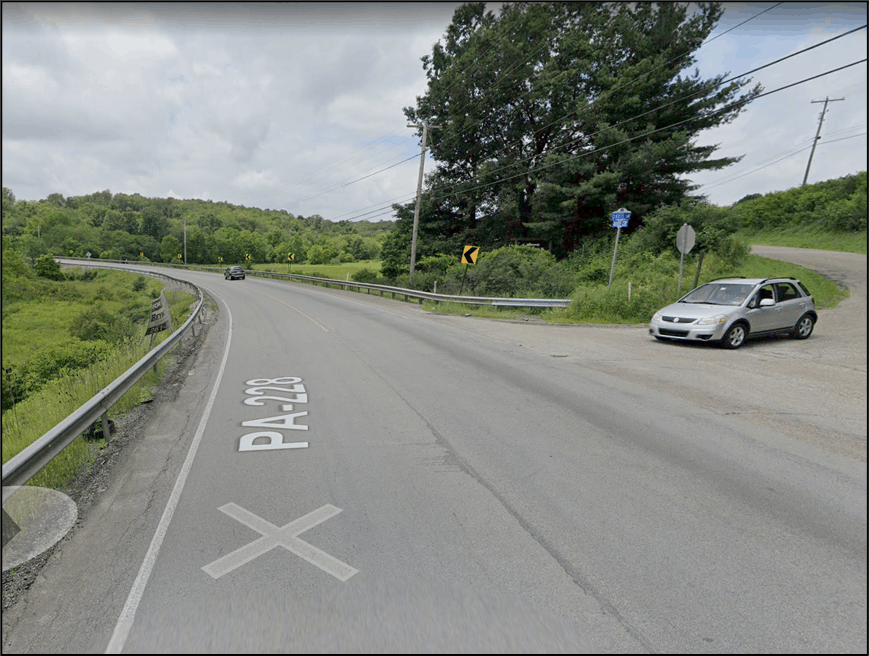
The MSA Thruway Project is a $12 million enhancement to the roadway network near the Interstate 79 and State Route 228 Interchange in Cranberry Township, Butler County. This partnership between the township, PennDOT, and local developers establishes a tunnel connection from Interstate 79 Northbound to the Cranberry Springs Development, thereby keeping traffic off of the congested 228 corridor.
The scope of improvements for the project includes new ramps, a roundabout, and a CON-SPAN arch culvert which will carry two lanes of traffic under State Route 228. Completion of the project is scheduled for the winter of 2021.
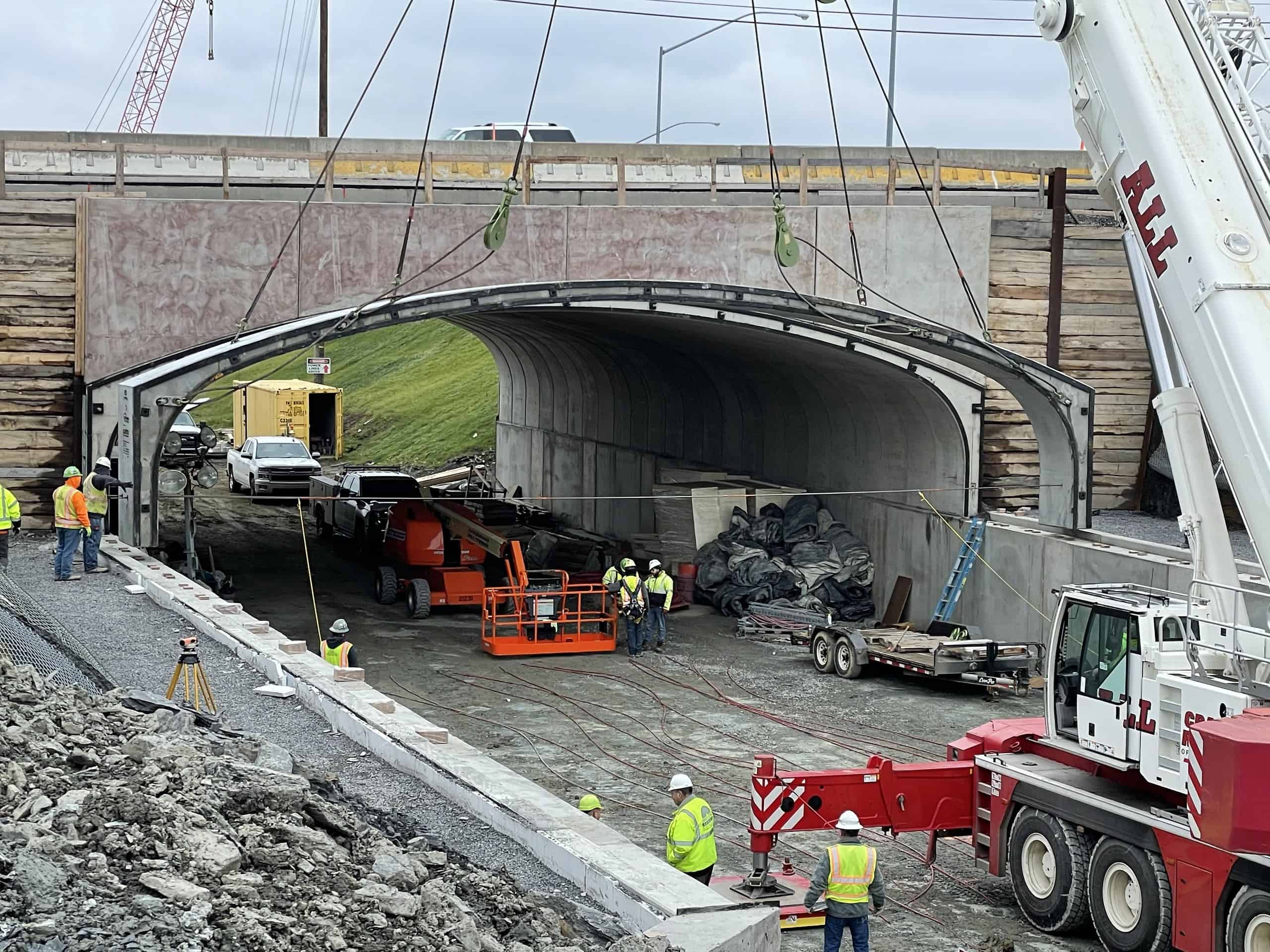
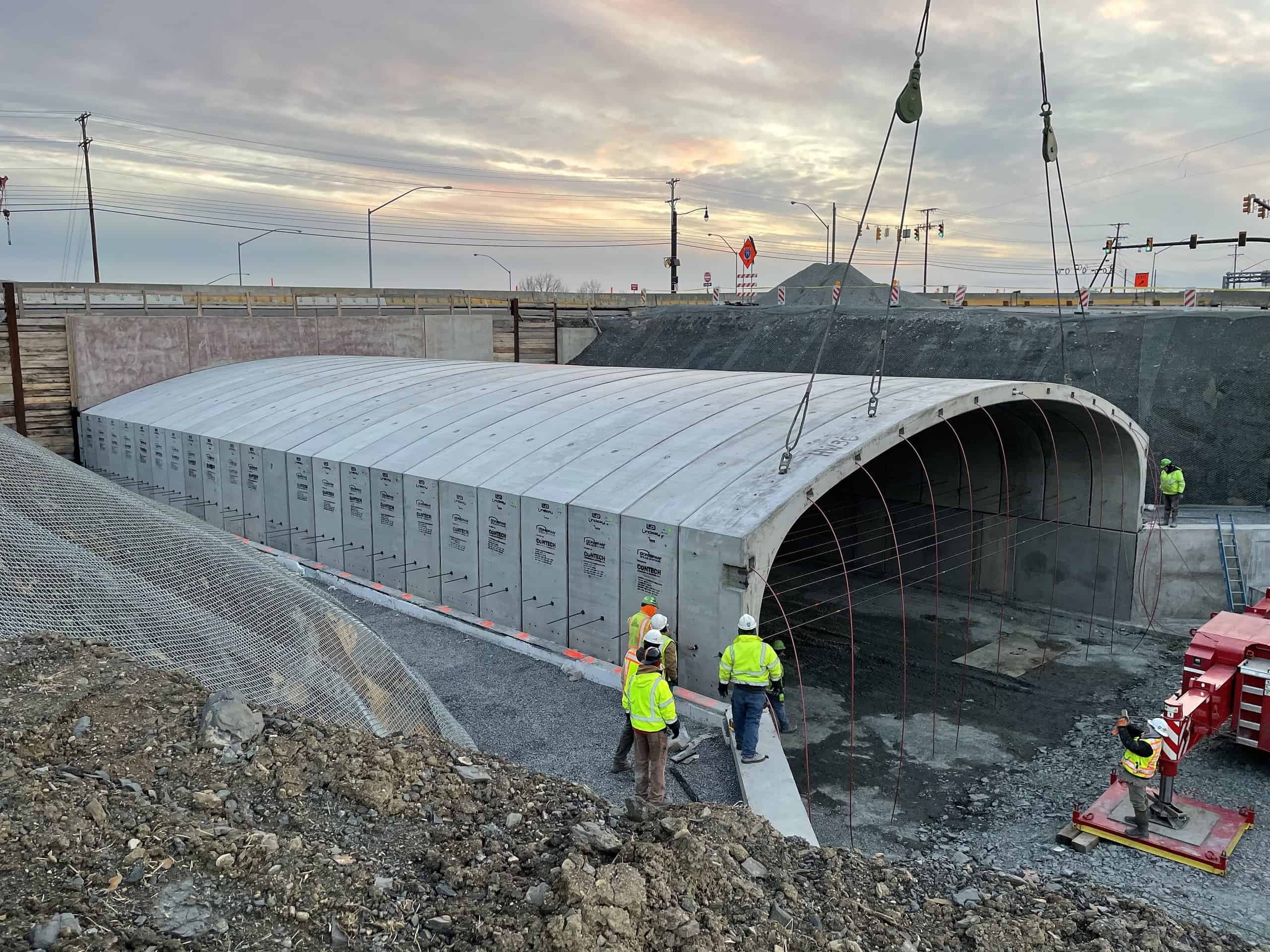
In the heart of Amish country in Smicksburg, Indiana County, a bridge upgrade project turned into a complete superstructure replacement. The continuous three-span steel bridge over Little Mahoning Creek was built in 1960 and was in poor condition. Work to replace the deck and a fractured beam was halted three times – once for COVID, and twice when cracked critical welds were discovered in the other girders.
Close consultation between Construction field staff and the District Bridge Unit, along with partnering with the contractor (Mekis Construction), Central Office, a design consultant (KCI), and the fabricator (High Steel Structures) allowed for a successful pivot on a short timeline to a complete superstructure replacement.
During the accelerated design and beam fabrication period, Mekis was able to complete preliminary work, and negotiated costs and time impacts, and the Design Unit worked on finding the necessary funding. The delays still pushed work deep into the winter months. As labor became available from other projects that were shut down for the winter, Mekis was able to bring on additional staff and accelerate the schedule for deck pours into early December 2020. Cold weather curing methods protected the deck from air temperatures as low as 25 degrees.
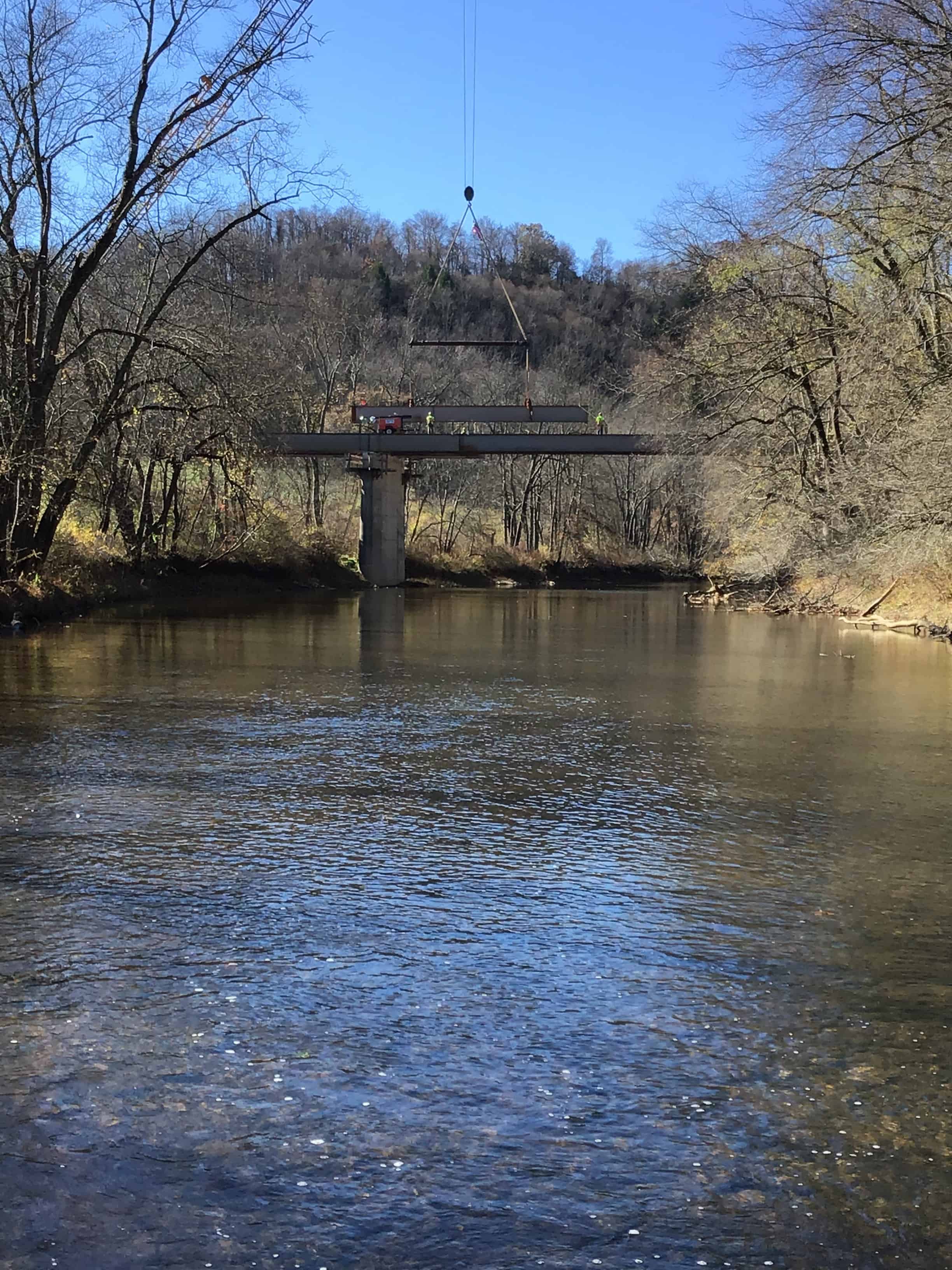
The structure will temporarily reopen in January 2021 to reduce the impact to Amish community members living on the far side of the bridge from the town and their schools. Final work items and final reopening are scheduled for spring of 2021.
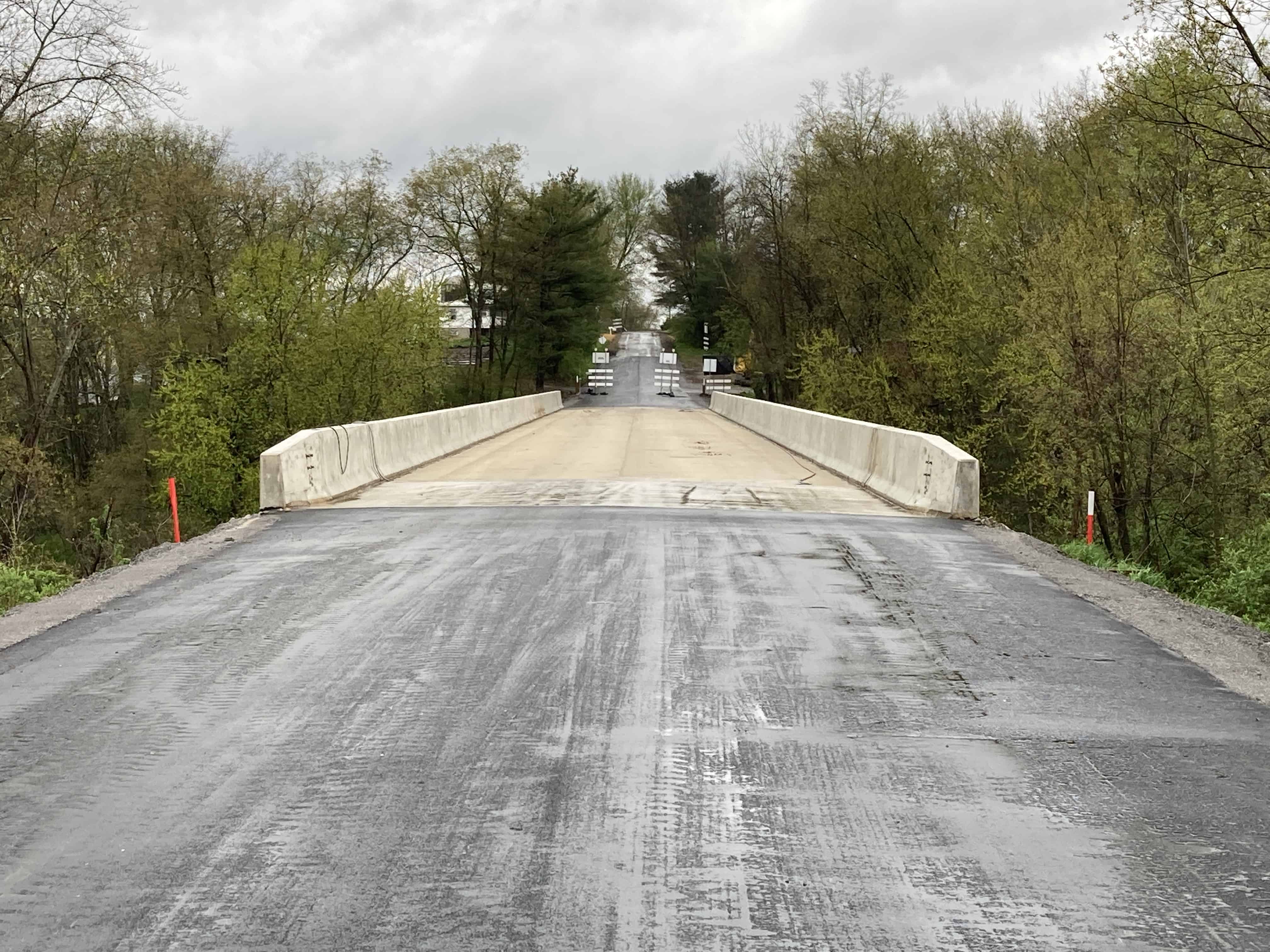
The terrain of Armstrong County presents unique challenges for highway slope stability and landslides. The County monitors more than 105 landslides with around 46 of these considered active. In 2018, Armstrong County received record rainfalls with a 50% increase of the average normally received. This caused five of these active landslides to let loose and forced the County to close three roads. The County acted quickly and began systematically repairing these deficiencies during the winter months in between winter needs. Since 2018, Armstrong County has repaired eight landslide locations with another three planned for 2021.
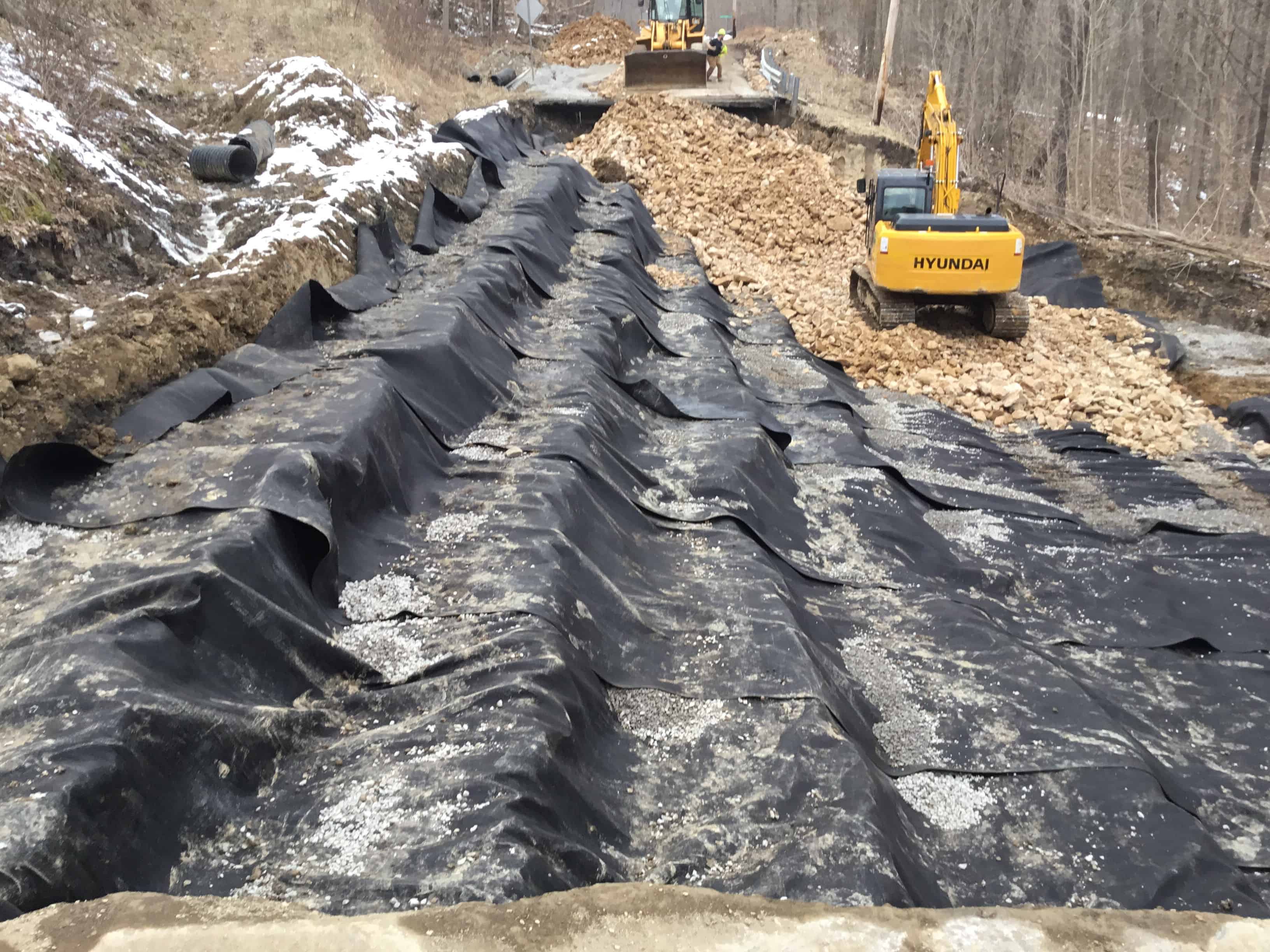
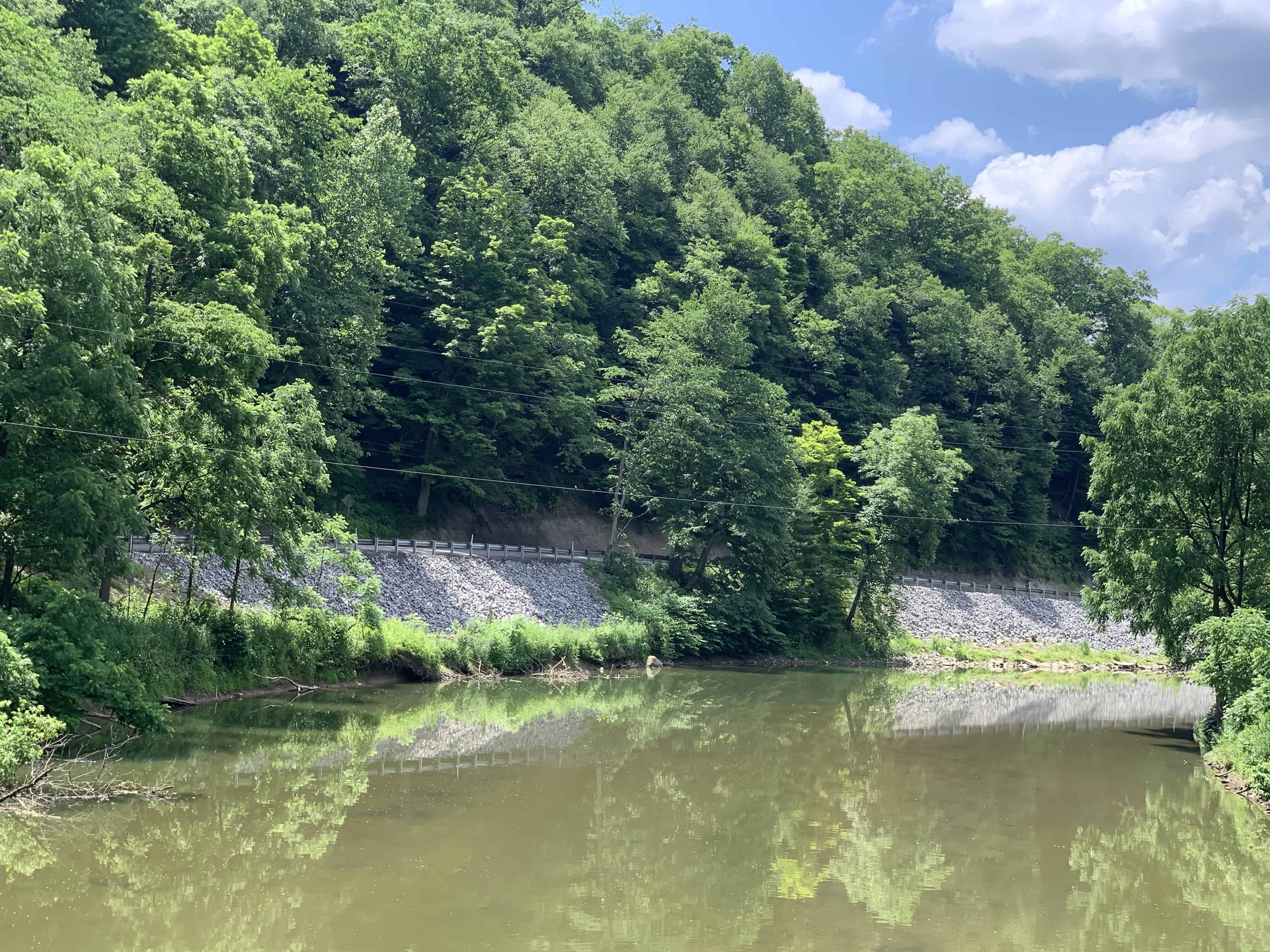
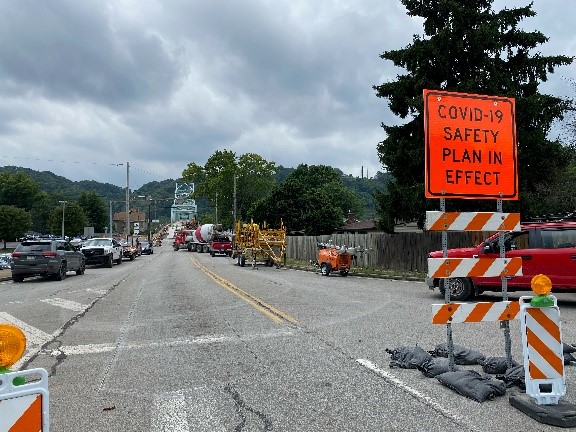
In Construction, 111 projects were shut down and restarted, 40 projects have had costs submitted, and we have 38 of those settled. The other 73 projects had costs mitigated through partnering. The construction season was highlighted by the $3.7 million Sewickley Bridge Preservation project, the $11.5 million Route 28 landslide and resurfacing project, the $7.9 million I-376 Parkway West resurfacing project, and the $10.9 million Route 22 resurfacing project in Allegheny County. In Beaver County, the highlight was the $11.7 million SR 51 resurfacing and bridge preservation project and in Lawrence County, it was the $9.2 million Wampum Bridge replacement project.
This was a $3.7 million project that utilized a single 24-day bridge closure for accelerated expansion dam replacements, a Latex Modified Concrete (LMC) overlay, an approach roadway reconstruction, and bearing replacements. The accelerated technique utilized for expansion dam replacement was incorporated into Pub 408 and District 11 received compliments from local stakeholders on the duration and quality of the work.
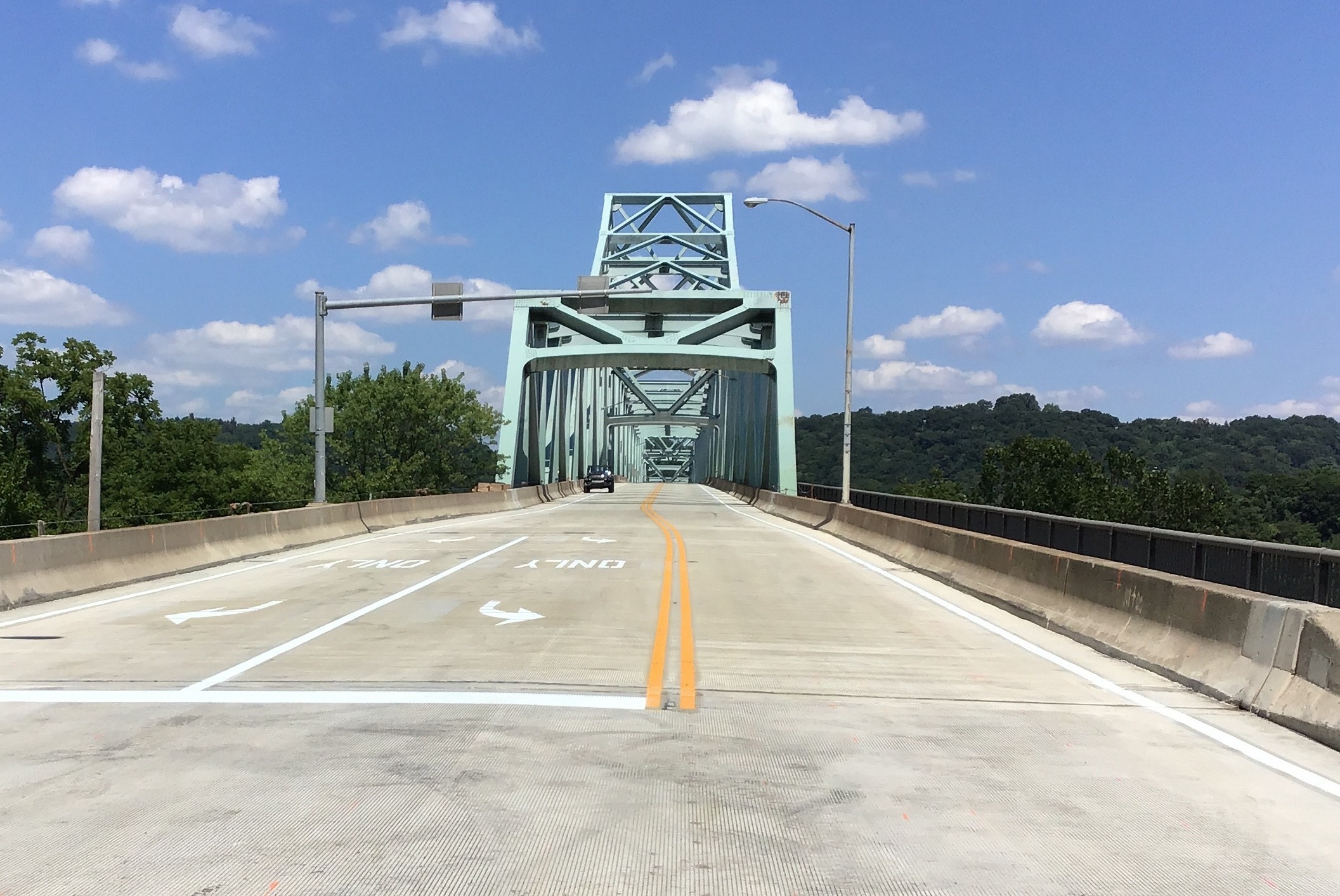
The Elizabeth Bridge project involved a major rehabilitation of the main truss and multiple approach structures that carry 4 lanes of State Route 51 over the Monongahela River in southern Allegheny County. The project was completed in the fall of 2020 with a total construction cost of just over $34.8 million. Work included full paint, grid deck replacement, latex overlays, bearing replacement, substructure and drainage repairs, expansion dam replacement, the installation of new sidewalk railings, and various steel repairs including stringer replacement work. In 2020, construction was temporarily halted for a 3-week COVID shutdown but was granted an early restart approval due to concerns of the structure being supported by the temporary jacking and support system for an extended duration. The project finished up with the successful replacement of all 18 pairs of suspension cables and associated bracket assemblies, as well as the replacement of the existing rocker bearings with updated high load multi-rotational disc bearings on the northernmost river pier.
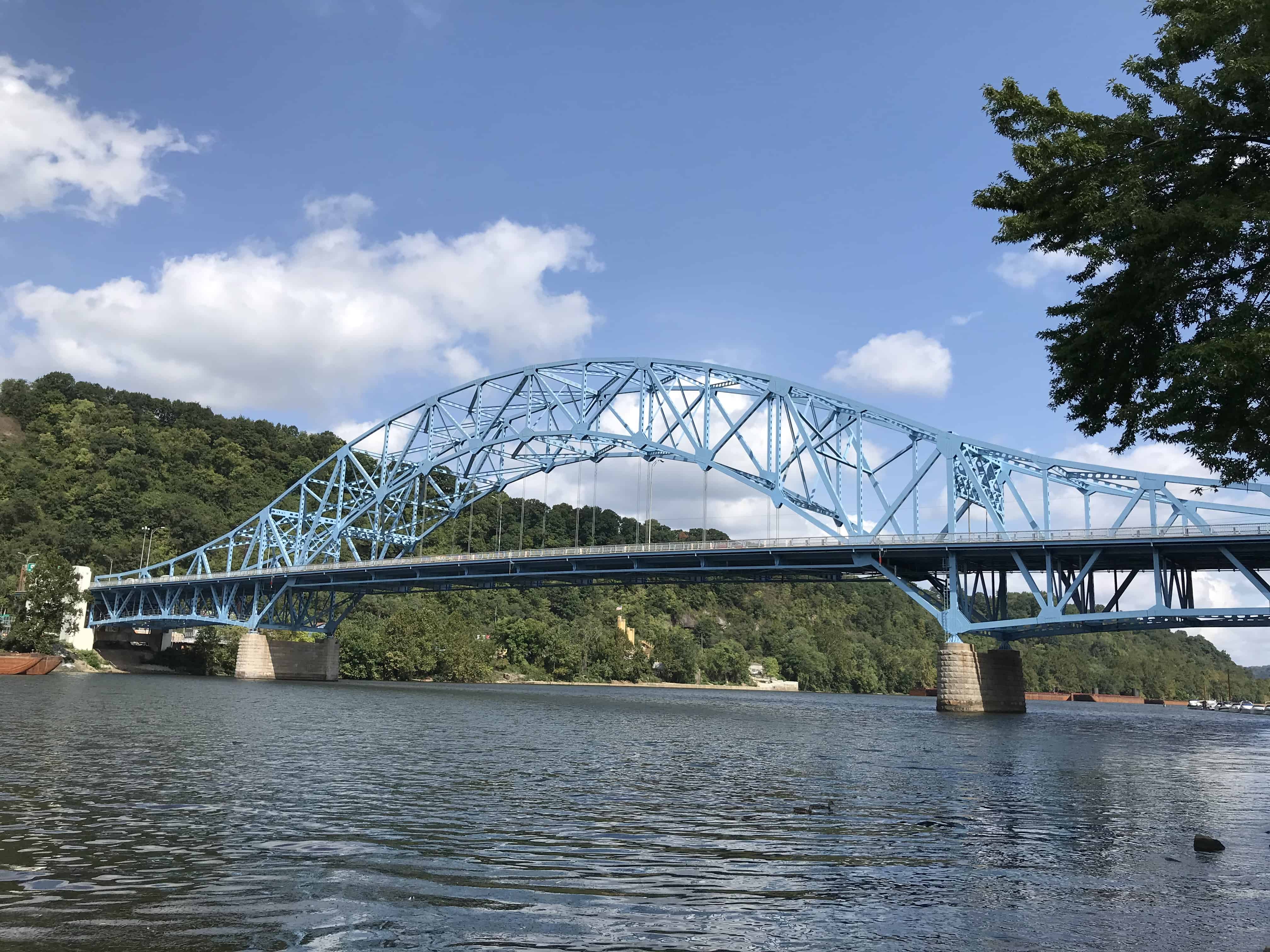
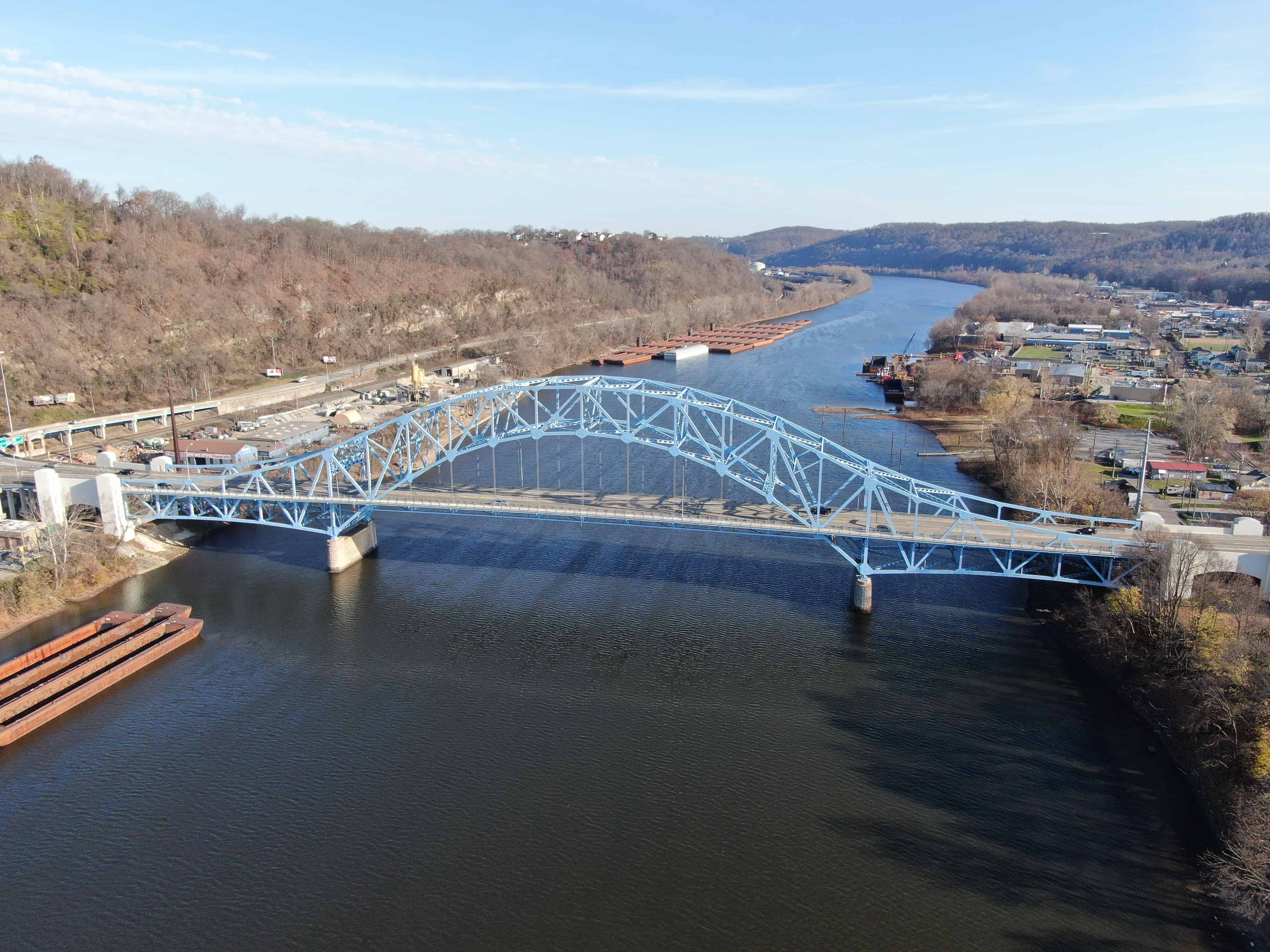
District 11 Materials Unit, working with Lindy Paving’s QC Management, developed guidelines on how to handle Hands-On Local Acceptance (HOLA) testing for asphalt while under COVID-19 restrictions. The solution they collaboratively developed maximizes safety – the paramount concern with our operations through this pandemic. The new procedures involve the use of high definition cameras to allow witnessing of the tests while maintaining social distancing and the use of electronic sharing to review the test results before they are entered and finalized in the electronic Construction and Materials Management System (eCAMMS).

District 11 instituted monthly drone flights where possible, on projects to document progress, enhance social distancing and safety, and calculate quantities. Drone flights were utilized on the CAP Project, Kenmawr Bridge Replacement (also using “Reconstruct” software, which ties drone imagery to project schedule), several slide projects, and a final inspection, to minimize social interaction during the pandemic.
Amid the growing concerns of COVID-19, PennDOT District 11 acted quickly to cancel the State Route 28 Highland Park Interchange Reconstruction Project in-person public meeting and instead held the District’s first virtual public meeting on PennDOT's website. With the success of using the virtual format for the Highland Park public meeting and the ongoing restrictions for other in-person events, District 11 continued to conduct meetings online, providing the necessary information for the public to review and comment. Additional meetings included the Kenmawr Bridge Replacement Project, the Smithfield Bridge Preservation Project, the Neville Island Bridge Preservation Project and the Fern Hollow Road/Little Sewickley Creek Road Slide Remediation Project.
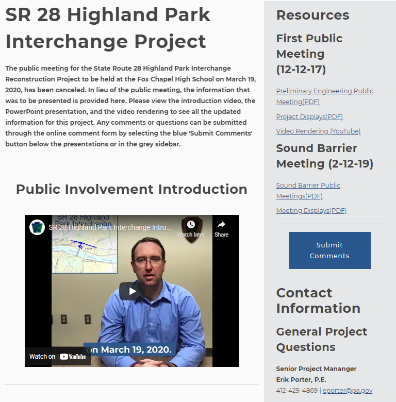
In 2020, District 11’s Drone Pilot for Bridge Inspection and our Chief of Surveys collaborated on semi-weekly drone tests for bridge inspection purposes. This involved testing the drone in different scenarios – close to structures, under structures, high winds, GPS capability, etc. The observations are captured for a report to be shared with the Bridge Unit and Executive Staff for further development of the Department’s drone program.
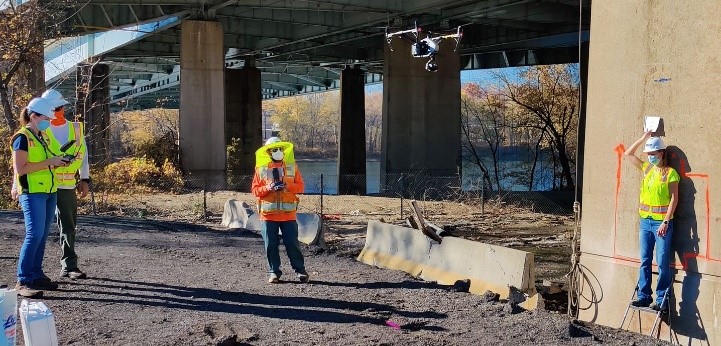
In addition, District 11 and Michael Baker International (MBI) collaborated on an ongoing unmanned aircraft system study to demonstrate and compare multiple drones on bridges in the Pittsburgh region. The goals of the test flights were to collect data on which drones worked best in various situations, how different results could be achieved in the same application for each drone, and to simulate the different applications for use in the Department’s bridge inspection program.
Our Maintenance staff accomplished much of their planned cycle maintenance work despite having to operate in skeleton crews at the beginning of the pandemic. In addition to their planned work, they facilitated over 2,300 Customer Care Center concerns. Between our Maintenance Forces and our Construction staff working with our contractors, 48 landslide remediation projects were completed in 2020. Even with the COVID-19 pandemic, our maintenance crews were able to complete or nearly complete many of our cycle maintenance activities. Crews in all three counties were able to complete a large seal coat program, preserving the pavement on our lower ADT roadways.
As of September 1, 2020, after nearly four years of planning and hard work, the District, as well as all three Counties, are on cycle regarding signs ≥ 18 years of age.
In 2020, our Tunnels organization responded to 1,791 incidents and the Western Regional Traffic Management Center handled 31,603 roadway events for the 18 western regional counties while working remotely from home.

In October 2020, a crash occurred near the Fort Pitt garage on the Parkway West, involving multiple vehicles colliding. One of the vehicles went over the hillside and landed on its side in Saw Mill Run creek. Employees at the tunnel heard the accident and immediately responded by climbing down the hill to the vehicle. The motorist was injured and unable to get out of the car. Tunnel staff stabilized the car with nearby rocks and tree branches and removed the windshield so a medical professional who happened to be driving by could assess the motorist. City of Pittsburgh Emergency Medical Services (EMS) and the Pennsylvania State Police arrived at the scene and set up access with a rope line down the hill. Everyone assisted EMS with removing the motorist, carrying the motorist on the backboard basket, and helped pull them up the hill. After the motorist was taken by ambulance, they worked on getting access for the towing company to remove the vehicle. Several of the Tunnel staff assisted with removing the vehicle from the creek. (Photo credit: Alyssa Raymond of WPXI (Twitter @AlyssaRaymond)
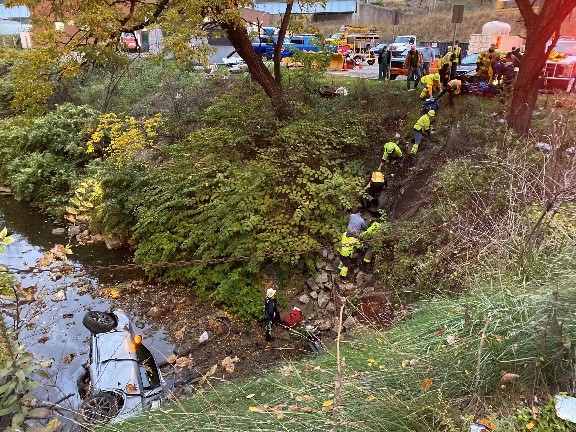
In 2020, District 11 repaired 48 landslide sites at a cost of $17 million and experienced a total of approximately 30 new landslides, including 6 significant slides. The District has committed an increase in funding to remediate slides. The Department repaired a large landslide on SR 68 near Midland in Beaver County using deep soil mixing techniques. Deep soil mixing was used as an innovative landslide remediation technique for this repair due to bedrock being far too deep to repair using standard techniques. Also, the landslide in this area had been occurring for many years over a vast land-area. The deep soil mixing consisted of large drilling augers that mixed cement into the ground as they drilled deep into the subsurface.
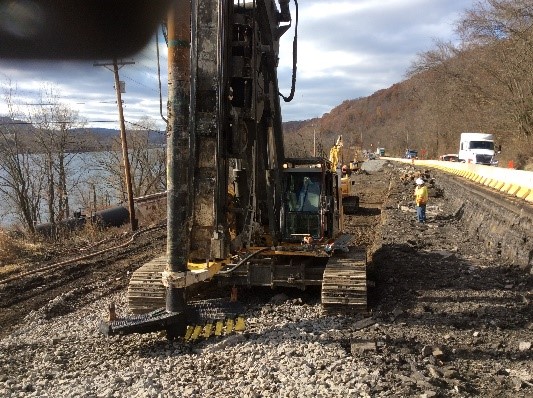
The pandemic changed the way we conduct our work both internally and externally, district personnel were able to transition to virtual work seamlessly and successfully since March of 2020. The Design Unit continued to work effectively in both a quantitative and qualitative way. Some notable accomplishments for the year:
The Interstate 70 (I-70) Corridor continues to play a major part in the Design and Construction activities in District 12. Our two biggest interstate projects in Design were able to progress as if we were working in our own office:
These projects continue with our strategic plan for our interstate projects. Progress is shown on the maps below.
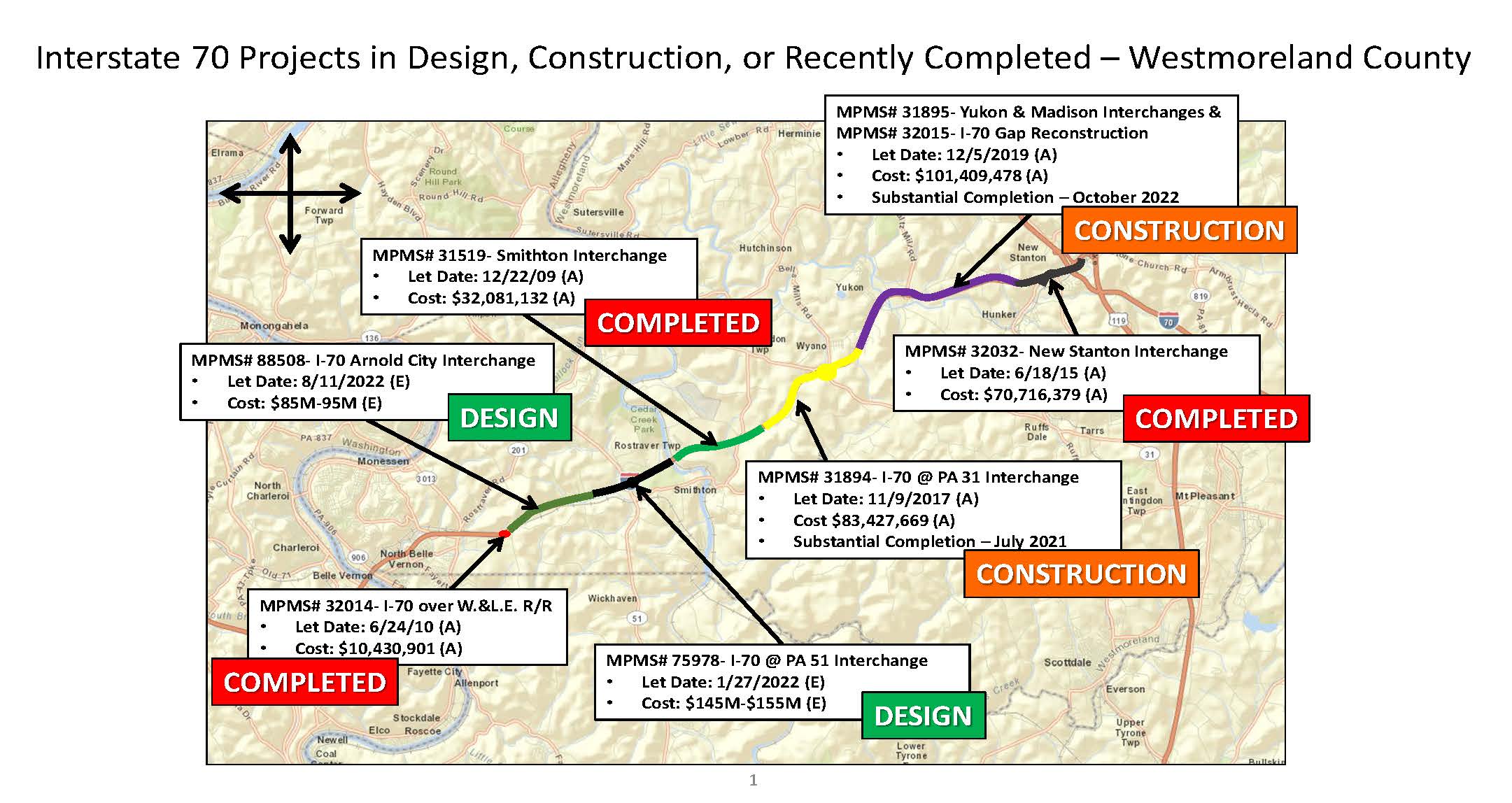
The largest Interstate 70 project competed in 2020 was in Washington County. This project includes the complete reconstruction and widening of approximately 6.5 miles of Interstate 70 from the Route 136/Beau Street Interchange to the SR 519 interchange. The western end of the project connects to the recently constructed I-70-T20 project and completes the link to the recently constructed I-70/SR 0019 Interchange. The SR 70-T10 and SR 70-W31 projects were initially scheduled to be bid separately but were combined to allow more efficient construction and traffic control.
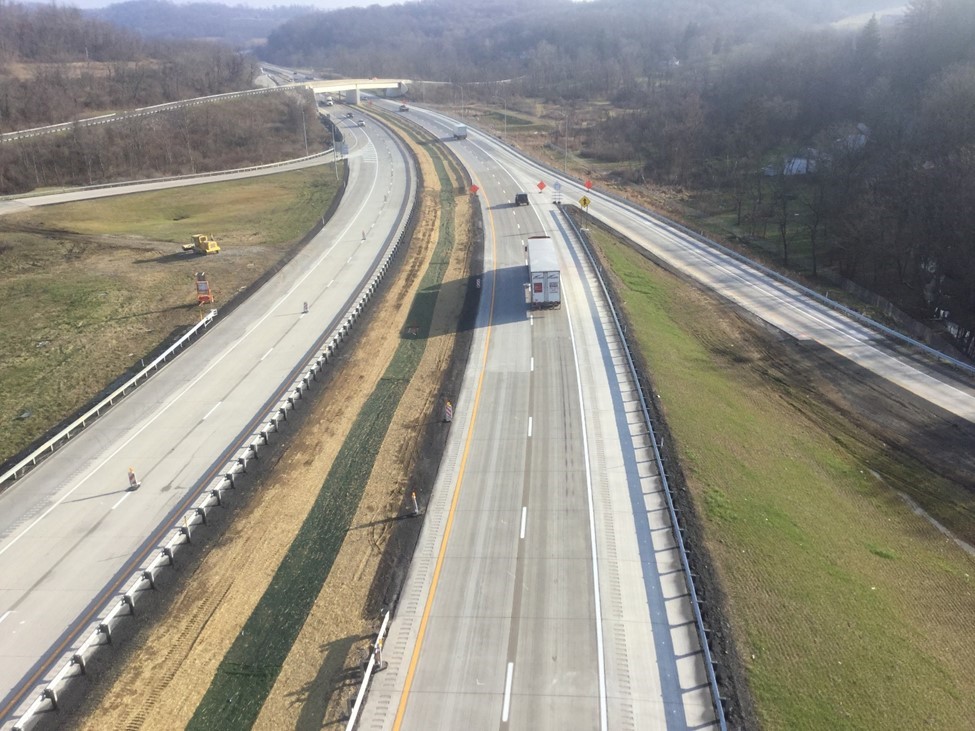
The SR 70-T10 project spans from the SR 136 Interchange to the I-79 South Junction in South Strabane Township, Washington County. The project included the widening and reconstruction of I-70 from two to three lanes in each direction in the area and is based on a 60-mph design speed. The new template in this section includes three 12-foot lanes, 12 foot outside shoulder, 10 foot inside shoulder and varying width of grass median. The project includes improvements to the existing entrance and exit ramps along I-70 at Exit 20 (Beau Street). Noise Barrier Walls were also constructed along a section of Westbound I-70.
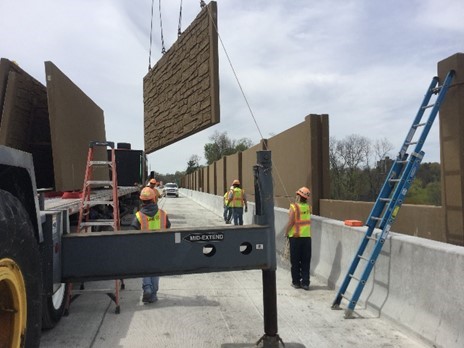
The SR 70-W31 Section of this project, which has limits from the I-79 South Junction with I-70 to the Route 519 Interchange, included complete reconstruction and widening of I-70 to accommodate two 12 foot lanes, 12 foot outside shoulders, 10 foot median and is based on 70 mph design speed. This project included improvements to the existing Eastbound entrance and Westbound exit ramps at the I-79 South Junction Interchange. The project also included the realignment of T-574 (Wilson Road) and the relocation of approximately 2650 lineal feet of a tributary of Little Chartiers Creek to accommodate improved geometry on I-70. Replacement of the entire drainage system included construction of 12 detention basins for storm water management. All signs, pavement markings and highway lighting were upgraded. Guide rail was upgraded to latest safety standards and new overhead sign structures were installed.
Work on this project began in January 2017 with Lane Construction as the Prime Contractor. Utilizing the construction of more than 140,000 square yards of temporary pavement, the project was successfully completed in December of 2020 while maintaining four lanes of Interstate 70 at all times. Intermittent single lane closures and traffic restrictions were only used during off peak hours.
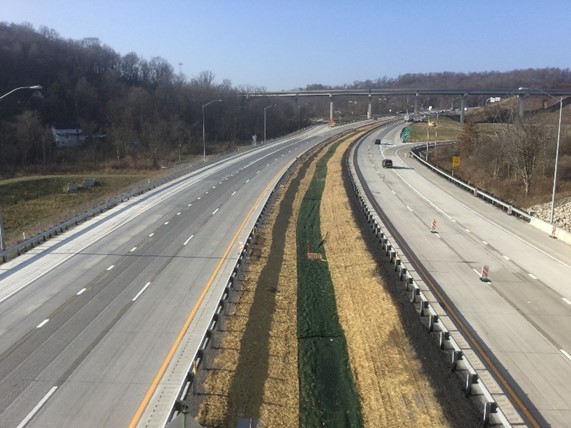
The project area drains into tributaries of Little Chartiers Creek and Chartiers Creek which is considered a High-Quality Watershed by the Pennsylvania Department of Environmental Protection. By closely managing the construction site, the project team maintained a successful partnership with the Washington County Conservation District (PADEP inspecting authority) throughout all phases of construction. By utilizing a detailed review process and conducting regular meetings and site visits, the work was performed in this High-Quality Watershed while maintaining the conservation of Pennsylvania’s natural resources.
Completion of this $120 million project required nearly 300,000 tons of construction aggregate, 120,000 cubic yards of concrete, and placed more than 286,000 square yards of concrete pavement, all locally produced and placed by local tradespersons.
With the completion of this project, I-70 between the junctions of I-79 is three lanes in each direction. This very important project will alleviate congestion in this corridor and improve safety for years to come. This is the highest traffic volume road in District 12.
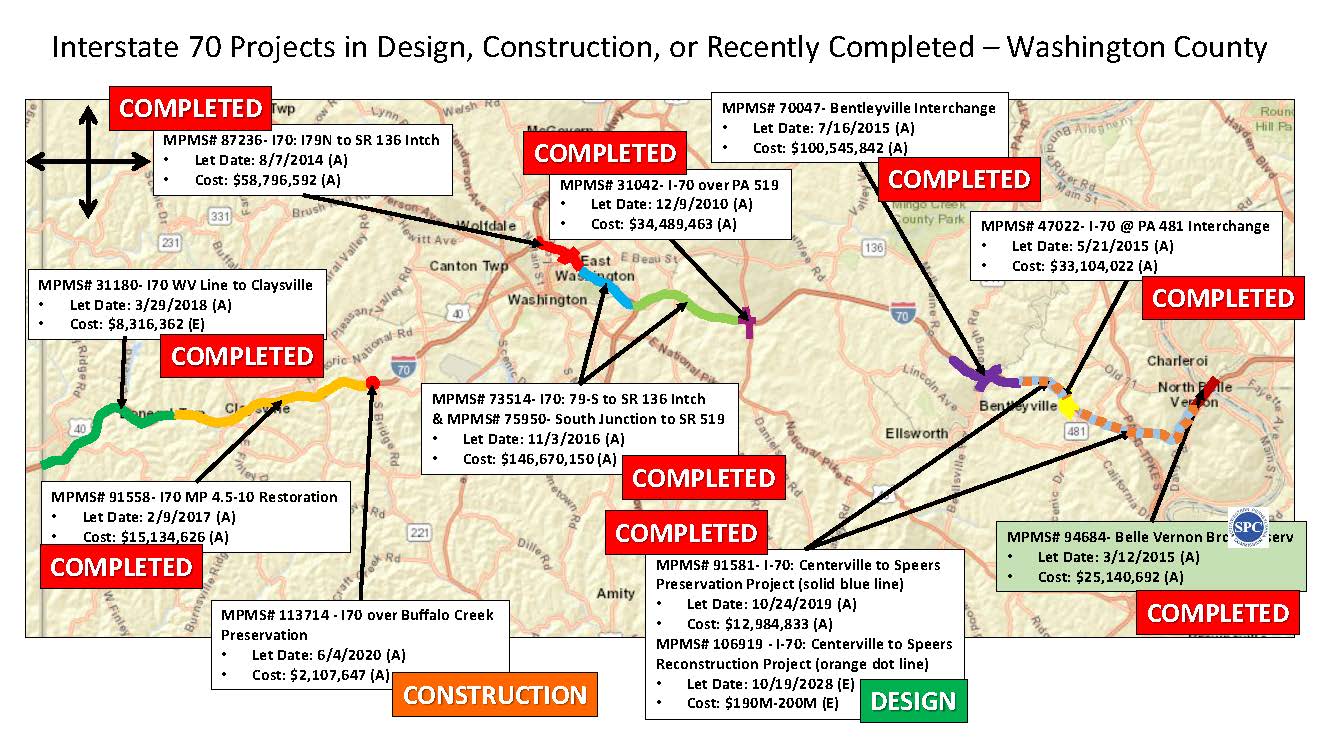
District 12 has some of the most susceptible soil to landslides in the eastern part of the US. In 2020, we had the opportunity to complete 4 major projects to repair significant landslides that required the roads to be closed. One of these areas was a section of PA 906 that experiences large rocks falling onto the roadway as well as a subsurface failure below the roadway. We were able to develop and employ a repair to scale the rock and install a rock fall wall in the worst area to prevent additional impacts to the roadway and perform subsurface soil stabilization to support the roadway. Through this hard work, the roadway was stabilized and reopened to traffic.
SR 906 Before:
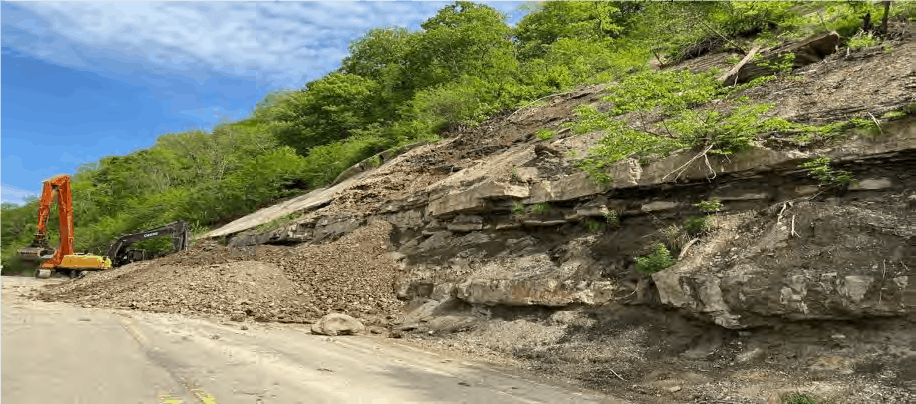
SR 906 After:
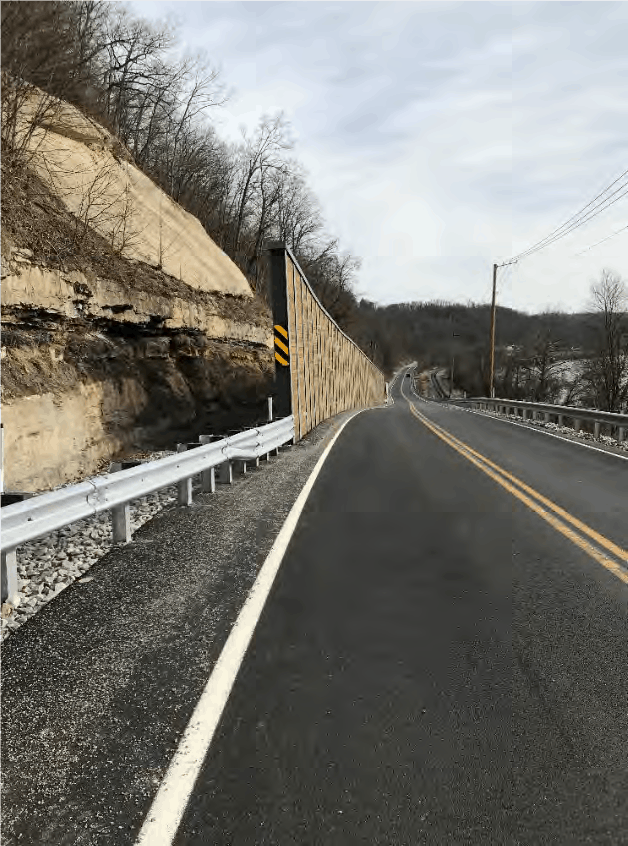
Another project was along SR 4099 in Westmoreland County where an ancient slide was allowing the roadway support slope to fail and road to settle. In this case, we contracted a repair to install a pin pile treatment to arrest the slide and support the roadway. This work was critical as it is a primary connector for two communities. Without this roadway, residents would have been disjointed and separated creating a hardship on both communities.
SR 4099 Before:
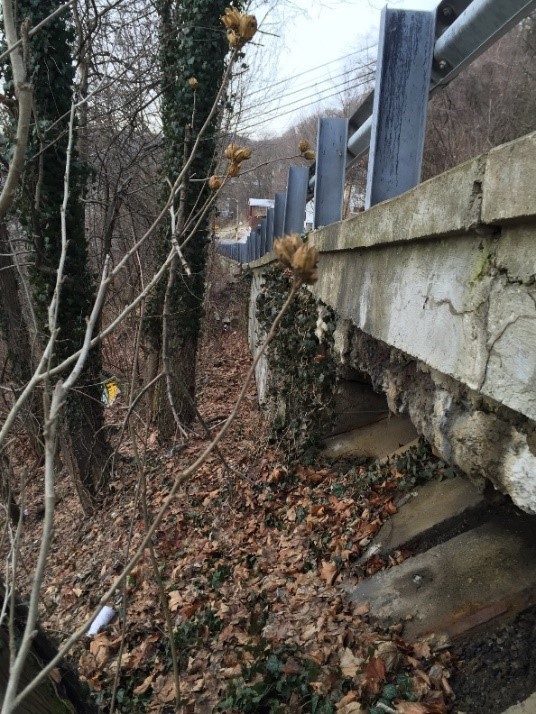
SR 4099 After:
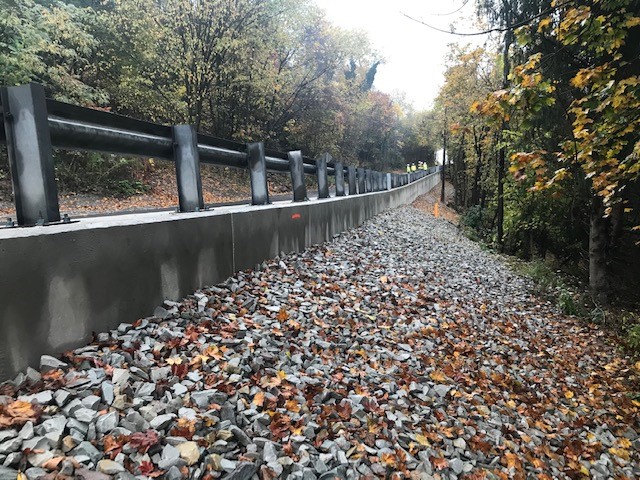
The District 12 construction team completed 36 projects in 2020 with a total contract value of $252 million including, in addition to the I-70 projects above, the $24 million SR 31-X10 project that reconstructed 2 miles of SR 31 in Donegal PA, including safety improvements to the SR 31 interchange with the Pennsylvania Turnpike; a $12 million Route 381-OMG project in Ohiopyle, PA which included the reconstruction of one mile of SR 381, new sidewalks, construction of a pedestrian underpass, traffic calming devices and the replacement of the superstructure on the major bridge crossing the Youghiogheny River; a $15.5 million SR 356 project including the reconstruction, realignment and widening of 1.5 miles of Route 356 in Freeport PA; and the $10.5 million Route 18-T10 project in Washington PA which includes reconstruction and resurfacing of 1 mile of Route 18 and a portion of E. Wylie Ave.
The COVID-19 virus quickly became a world-wide challenge in 2020. Lives were affected in ways no one could have predicted. Many businesses were shut down or services greatly reduced. PennDOT was no less affected by the mandatory shutdowns. Employees were suddenly required to adapt to doing business in a very different way. Employees whose job requirements allowed them to work from home began tele-working. Our IT units were then tasked with providing the necessary equipment for those employees to be able to work remotely in an efficient manner. Meetings which were held face-to-face now had to be done in a virtual environment which required employees to train and learn to use our computers to communicate internally and externally.
Construction projects which had been shut down for as much as two months could restart once COVID-19 Safety Plans had been developed, approved, and implemented. Safety personnel and project managers worked tirelessly to get the projects in compliance and back on track. One example was the Ohiopyle Multimodal Gateway Project which was reopened and completed with minimal delays affecting the summer tourist season.
District 12 put in place all COVID-19 safety procedures required to keep employees safe during this pandemic. Masks became a new PPE for all employees to restrict the spread of the virus among the workforce. Summer maintenance activities were challenging while keeping these safety protocols in place. It was soon realized how important keeping our employee’s infection free would be with the upcoming winter season. The loss of operators during the winter season could adversely affect our ability to keep the roadways open and passable during any winter storm event. With the ongoing challenge of filling winter seasonal operator positions, the loss of current experienced operators could be devastating. Again, safety personnel and employees rose to the task and District 12 experienced minimal loss of operators due to the virus during an especially severe winter season. Our district roadways were kept open and passable in a season which saw many back to back to back snow events.
District 12 has always shown their generosity when it comes to State Employees Combined Appeal (SECA) as well as in other charitable activities. However, this year with the COVID-19 pandemic we knew it would be more challenging to reach our goals, both in employee participation and financial contributions. We also knew the history of District 12 employees being very generous and caring and believed they would continue to support great causes. The challenge was how to logistically motivate everyone without face to face contact and meetings.
A team of employees worked hard at campaigning for SECA. Due to the pandemic restricting personal contact, we had to get creative and spread the word virtually to our employees. We hosted a virtual Employee Recognition and Safety Stand Down Day this fall. During this virtual meeting we took the time to present a SECA PowerPoint and have some of our staff members talk about the importance of SECA. They highlighted examples of charities, and how they have helped local people.
Charities have taken a big hit during this pandemic because they were not able to host large events that raised money. Our employees knew this and were willing to step up and continue to support these charities. I am proud to say that District 12 raised more than $34,000.